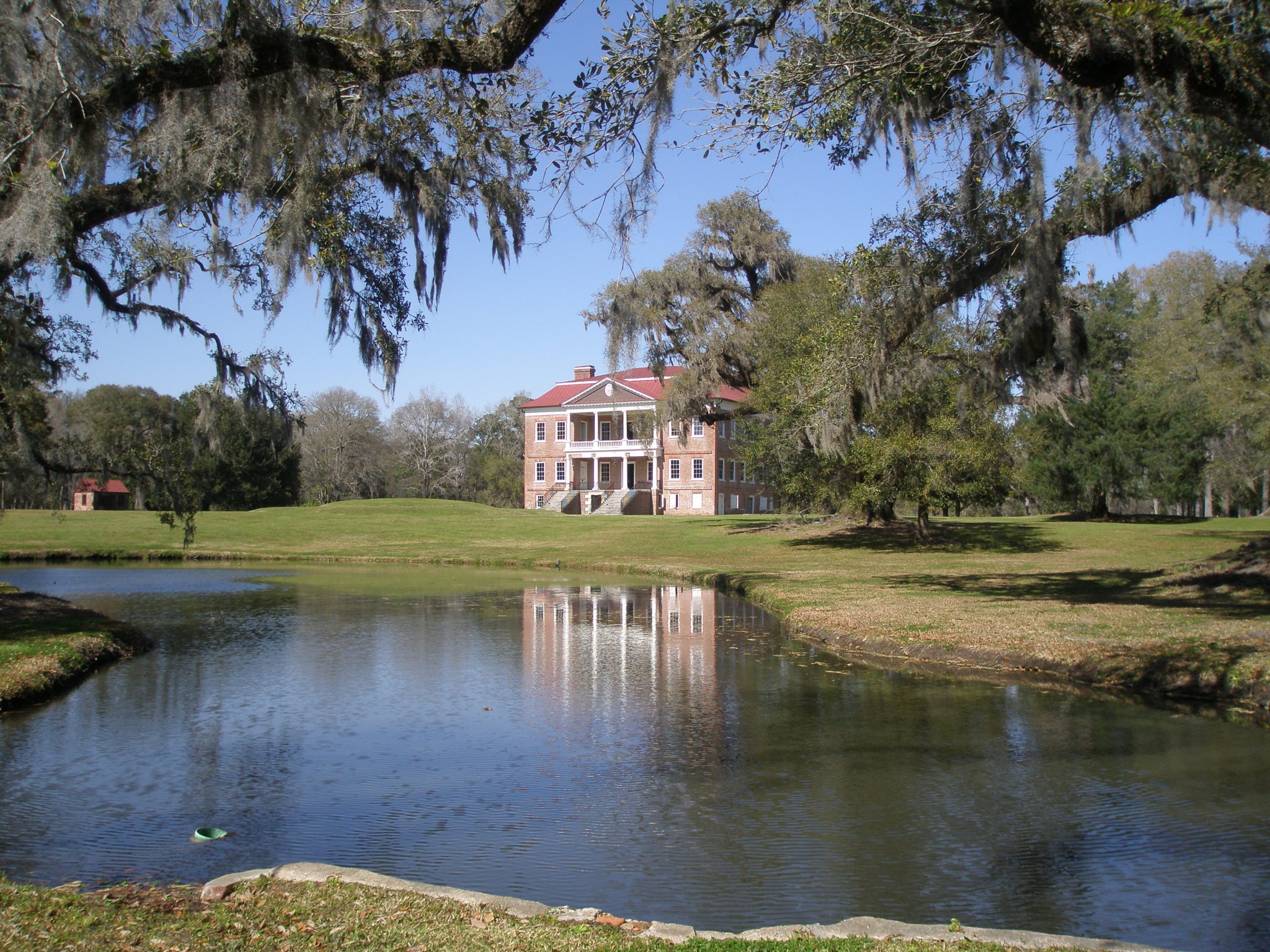
Drayton Hall (begun in 1738), a National Historic Landmark & the oldest preserved plantation house in America. 3380 Ashley River Road, Charleston, South Carolina.
In late April, as I completed my lengthy Armchair Traveler Diary about Historic Charleston, I promised a soon-to-follow companion-piece describing four nearby plantations in South Carolina’s Low Country. I attacked composition of that new article with my usual vigor, by beginning to sift mountains of books and photos. But, mid-sift, a small miracle occurred. After an unbearably lengthy winter, Spring arrived in New Hampshire. My Gardener-Self cast aside every part of life not associated with dirt or mulch or seeds or weeds. I pulled on jeans, wooly-sweater, Wellies and gloves, and headed outdoors with my pruning shears and shovel to tend my several acres of the Earth. As I cleared away dead foliage, and pried deeply-rooted invasive plants out of my perennial beds, I was a willing servant to my land, which rewarded me with these first blooms.
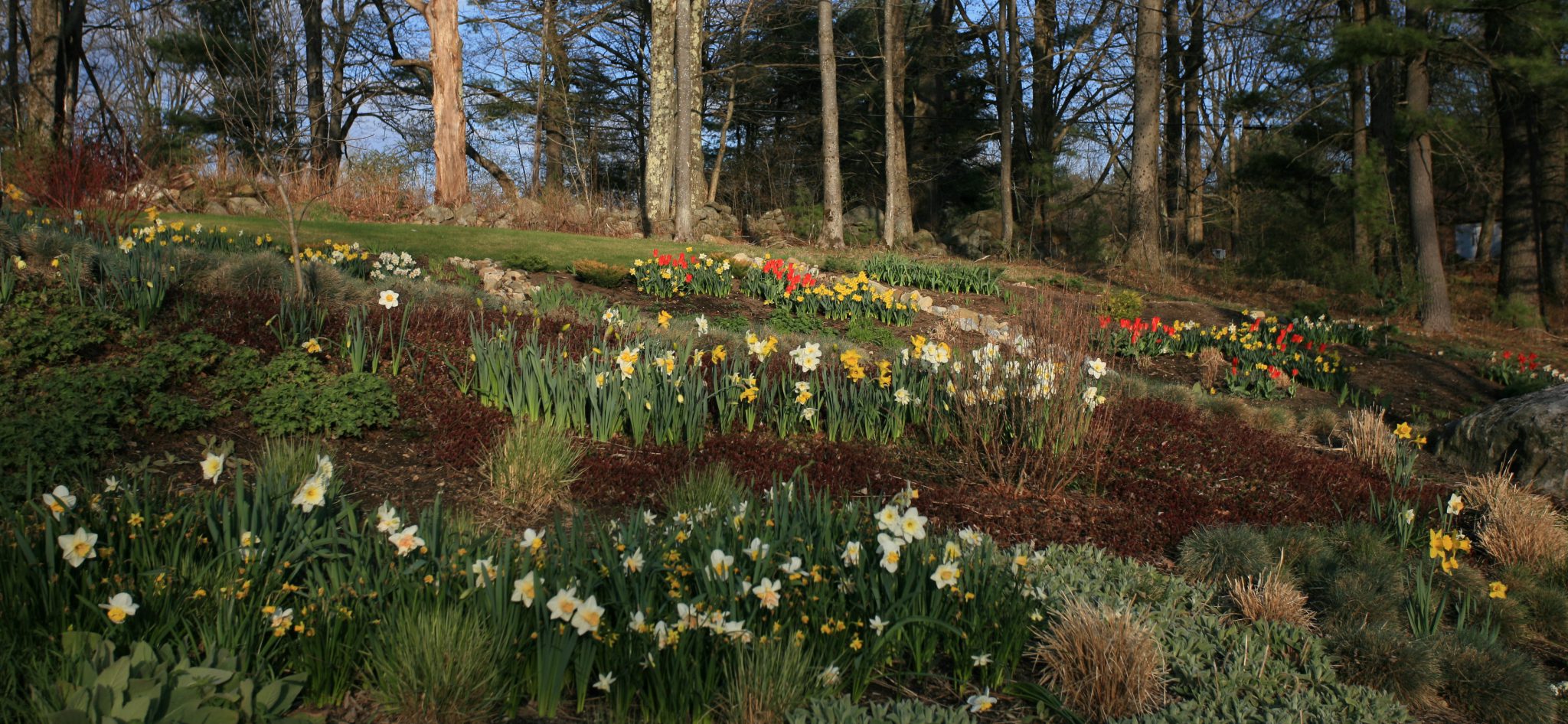
My East Garden…before deer decapitated the Tulips. The bands of reddish-brown vegetation separating the flowers are a creeping sedum that will turn scarlet during the summer.
Here now, before we get back to the business of visiting South Carolina’s Grand Landscapes: photos of my much-humbler but finally-awakened gardens,as they bloomed, from April through early June.
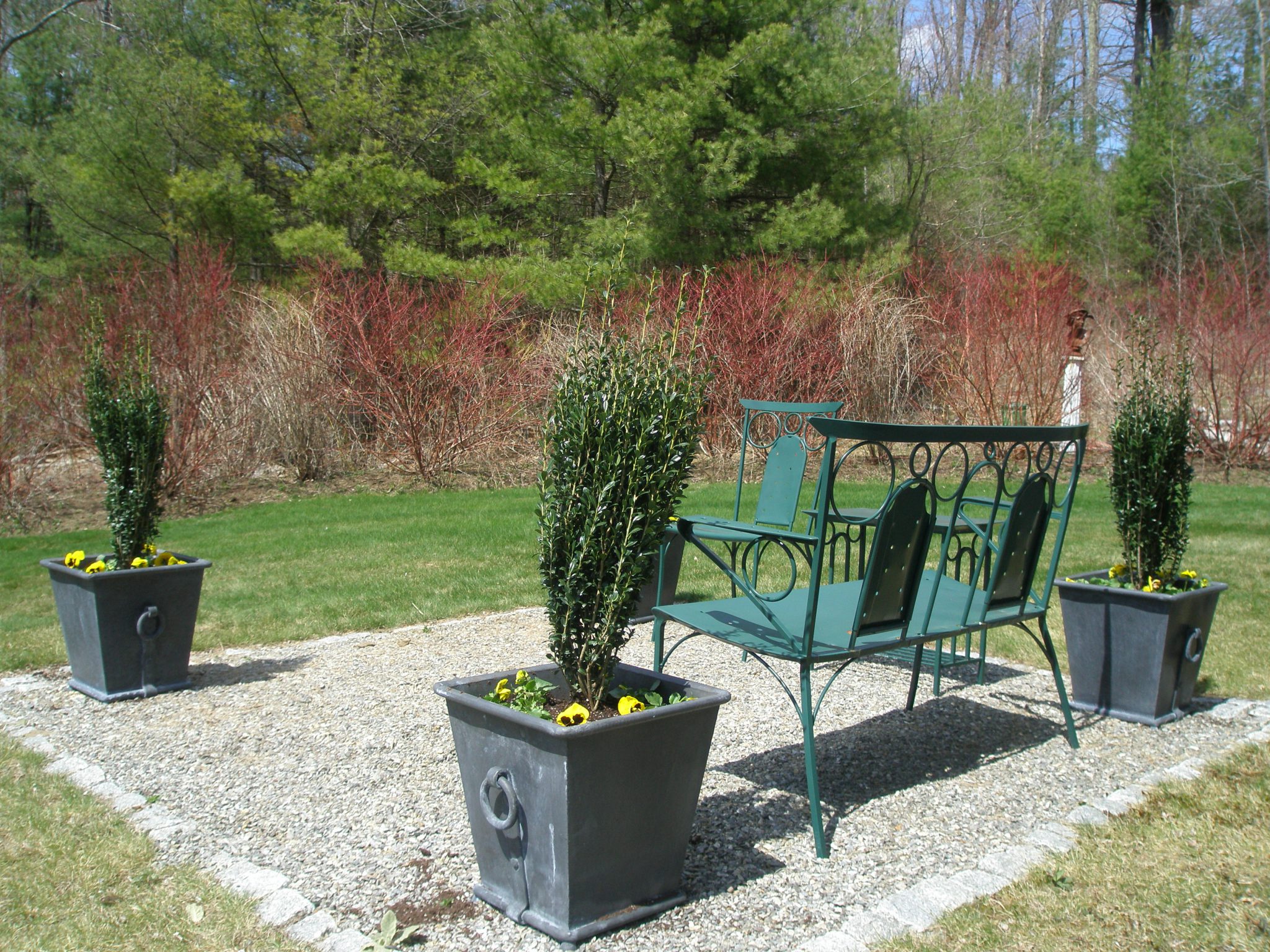
Newly-planted Japanese Holly (Ilex crenata ‘Sky Pencil’) on the South Terrace. In theory, these now-crooked shrubs will straighten up and grow right, to a mature height of 5 feet. We shall see…
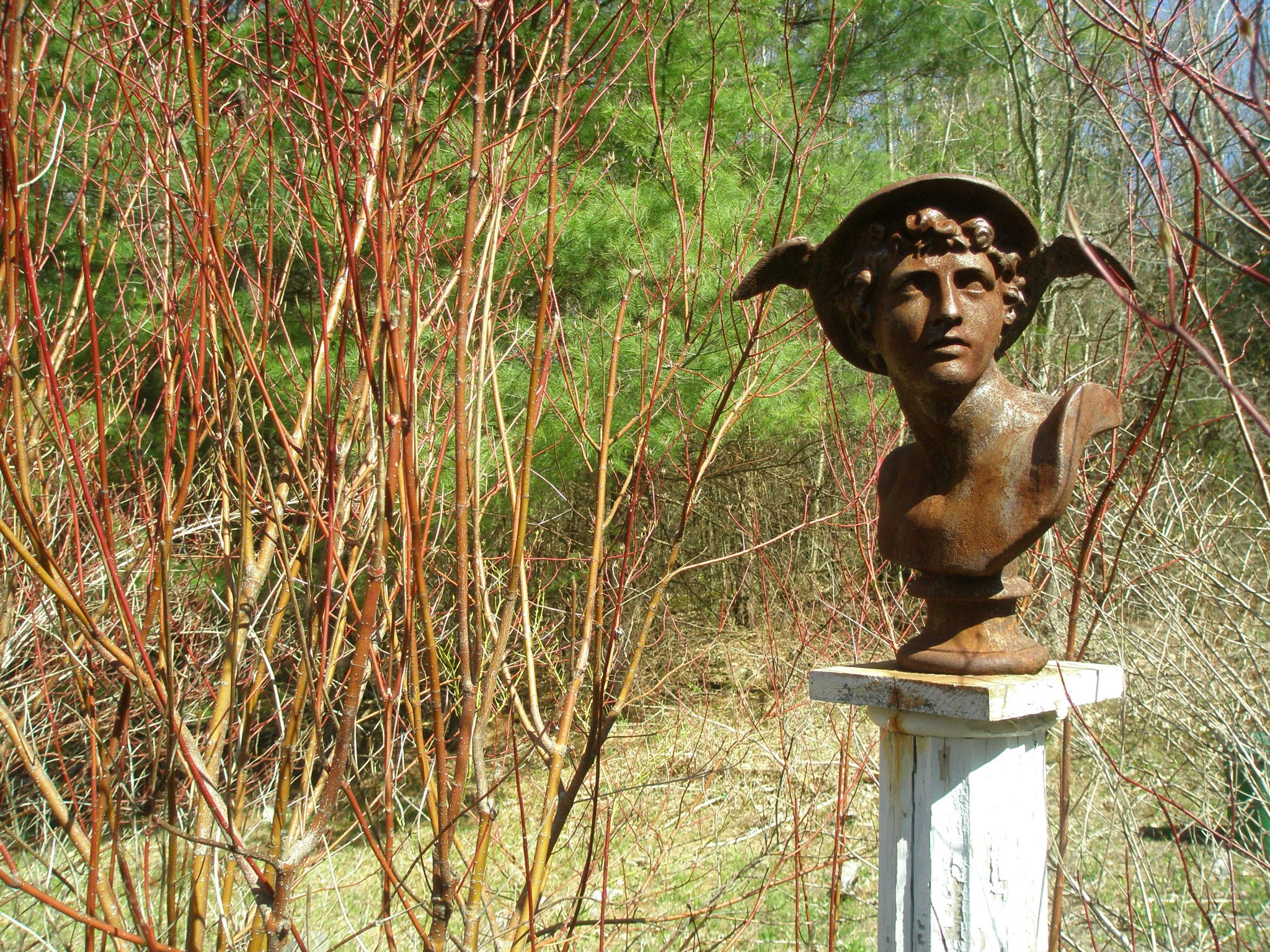
My All-Purpose, Backyard Deity. Hermes–protector and patron of travelers & poets–is the god of boundaries and transitions, message-carrier between the mortal and divine worlds.
This is a tricky fellow, whose mercurial nature is never quite clear. He watches over me…but keeps me on my toes.
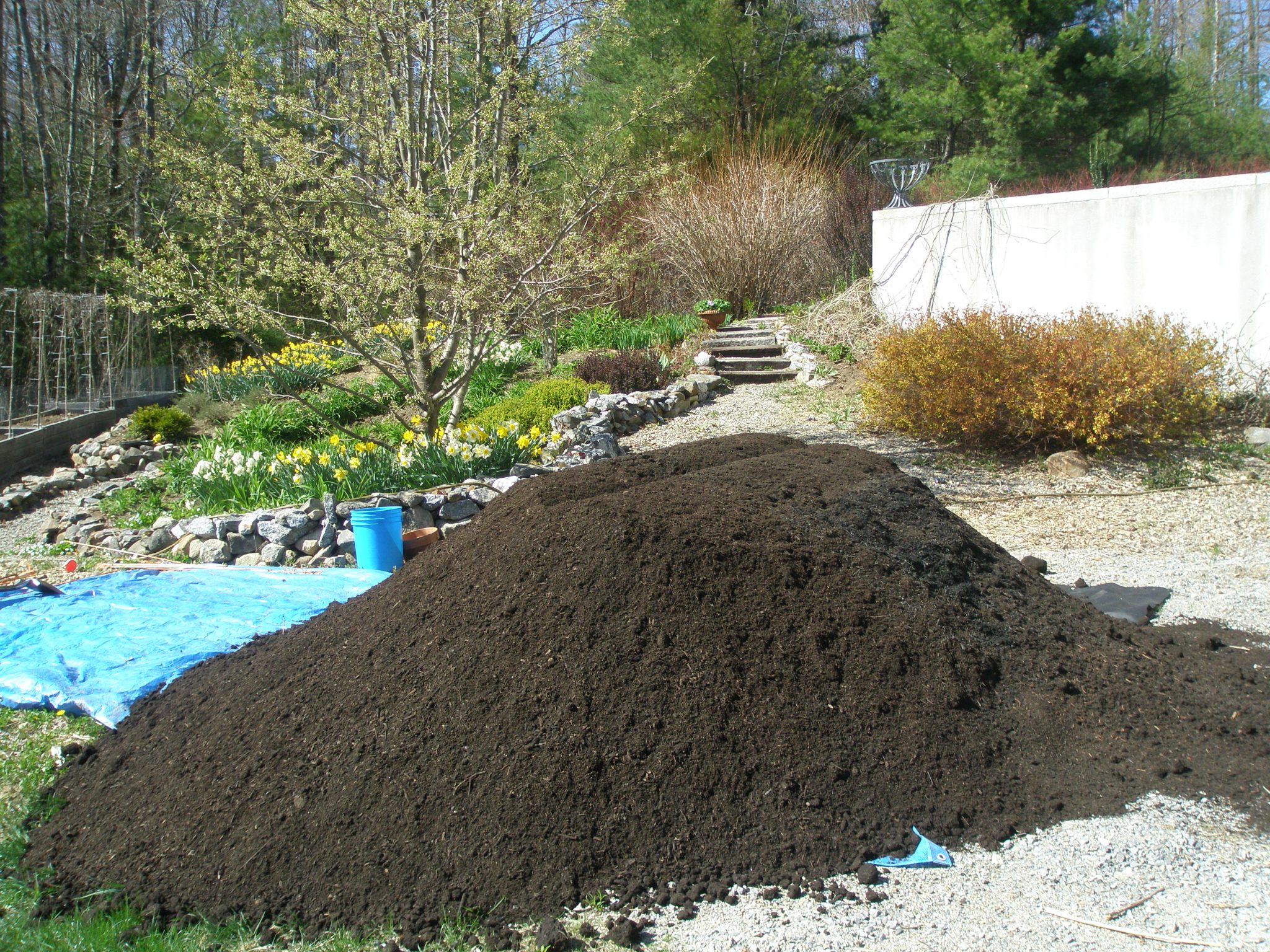
This what The Whole Nine Yards looks like. My fate, over the next month, will be to distribute this smelly, steaming pile of organic compost/manure/and peat humus over the garden beds that need nourishment.
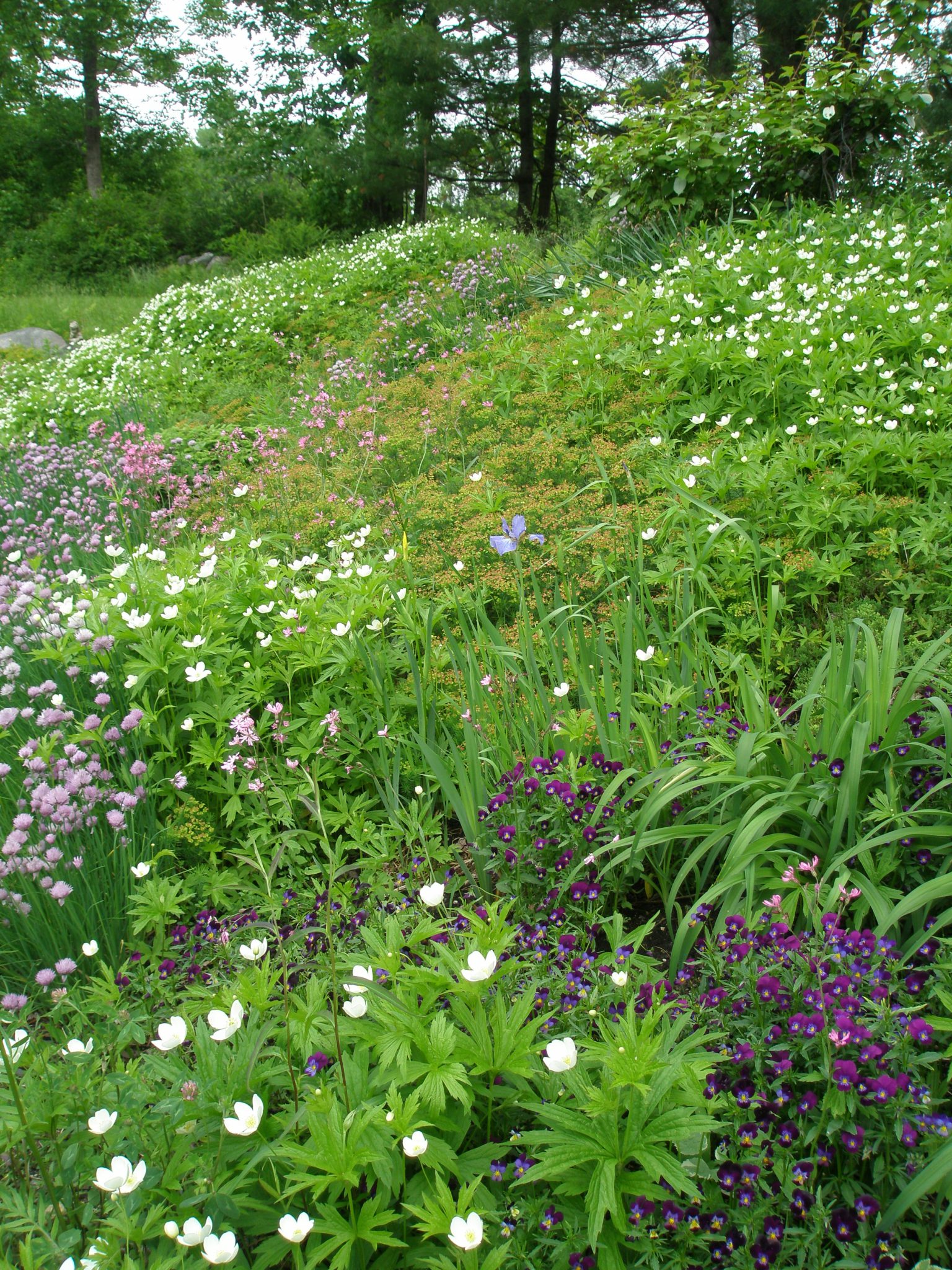
In early June, tulips and daffodils have disappeared under waves of Canadian Anemone (a hated invasive, but pretty right now and thus temporarily forgiven), Ragged Robin, Violas and Chives.
Depending upon one’s attitude, gardening is either servitude or bliss. Perhaps because of my farmer forebears, I argue for the bliss side (despite the huge pile of steaming compost and manure I’ve been spreading)…but that’s only because my annual negotiations with Mother Nature are voluntary.
In any case, now that we’re in a properly agricultural state of mind, let’s proceed to the Low Country: inland and just east of Historic Charleston.
Early on March 13, 2013, Greg “Big Daddy” Patterson collected me and Donn Brous (my friend since our girlhoods) at the Mills House Hotel in Charleston. I’d told Greg I wanted to touch down at as many nearby plantations as could be crammed into nine hours, but, apart from Middleton Place (which I’d read about and hankered to see for many years), I’d trust Greg’s judgment about which other plantations we should visit, and in what sequence. Greg mulled my request: “I THINK you can squeeze in four …but nobody I’ve ever driven has asked to see that many in one day.” I laughed: ”I’m a power-tourer! You have NO idea how much I can take in. Let’s do it!” And so we did.
The weather was perfection: clear, cool and sunny. There’d be no unladylike perspiration marring our foreheads on that Wednesday!
As we settled into his car, Greg told us we’d begin the day with a visit to Boone Hall, which is one of the most-photographed and filmed of the Low Country plantations, due largely to its spectacular Avenue of Oaks.
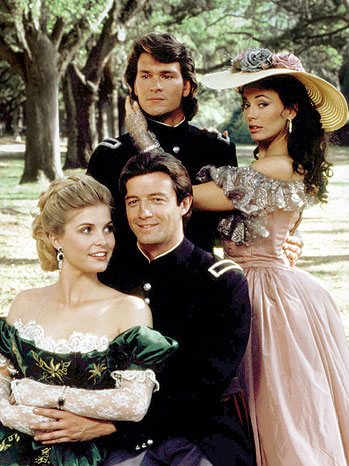
Yes, that’s the famous Avenue of the Oaks behind the cast of the 1985 TV miniseries
NORTH & SOUTH, which was filmed at Boone Hall.
But the first treat of our morning happened as we crossed the Cooper River, and admired the elegant construction of the Arthur Ravenel Jr.Bridge.

The Ravenel Bridge, with a main span of 1546 feet, is the third-longest cable-stayed bridge in the Western Hemisphere.

All of the Low Country plantations were built on the banks of the rivers which feed into Charleston Harbor. These rivers were the highways of yesteryear.
After our 30-minute commute to Mount Pleasant, Greg turned into the mouth of Boone Hall’s ¾-mile-long approach drive, and killed the engine. He grinned and watched our jaws drop as we beheld the low morning sunlight filtering through the lacy canopy of Spanish moss festooning the Avenue’s oak trees, which were planted in 1743. No photograph can do justice to the quality of light that enveloped us, but I pointed my camera, and made my best attempt to capture what I saw as I walked down the empty road toward a plantation that began in 1681, as a land grant from the English Lords Proprietors to John Boone.
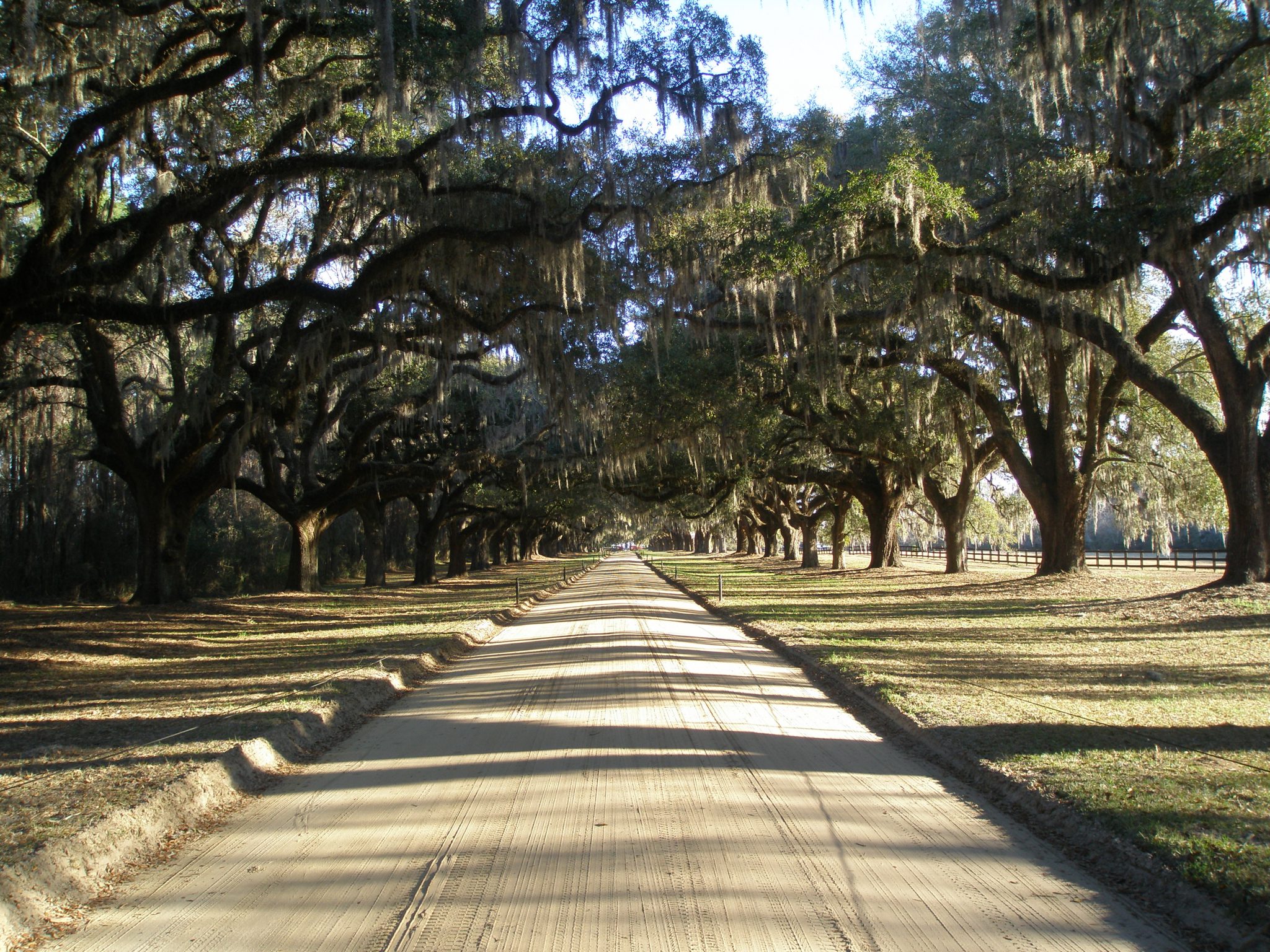
The Avenue of Oaks, at Boone Hall Plantation. The Plantation is located next to Wampancheone Creek, which flows into Horlbeck Creek, and then into the Wando River. The Wando then flows into the Cooper River, on which one can ride the tide right into Charleston.
A proviso: One cannot visit a plantation without the specter of slavery at the forefront of one’s mind, and, at Boone Hall, which once encompassed over 1700 acres and depended upon more than 200 slaves at any given time, slavery is an inescapable fact. From the beginning of recorded history, slavery has occurred in almost every civilization: America’s own indulgence in human trafficking must be included on this sorry list. But, for the purposes of this travel diary, I shall concentrate upon how the physical environments of beautiful estates and plantations that were wrested from the South Carolinian wilderness resonated with me. A wise visitor, however, must appreciate that these landscapes could not have been domesticated and developed without the labor of a portion of the millions of slaves who, over time, made their involuntary journeys via the Middle Passage of the Triangle Trade to the New World, and thus to Charleston.

The Triangle Trade: How Slaves arrived in Charleston. The Boone Hall Plantation offers comprehensive exhibits about Black History in America, Slave Life at Boone Hall, and the Gullah Culture of the Low Country.
After encountering the spectacular Avenue of Oaks, Boone Hall’s actual plantation is a bit of a let-down, at least in aesthetic terms. The Main House, which we toured, is an undistinguished brick Colonial Revival structure, circa 1935. I’ve since realized that the chief merit of Boone Hall for today’s visitors lies in the many educational exhibits and tours offered, which include Black History in America; Slave Life at Boone Hall; Gullah Culture; and the Agriculture & Natural History of one of America’s Oldest Working Plantations.
Boone Hall Plantation. 1235 Long Point Road, Mt. Pleasant, SC 29464. phone# 843-884-4371.
website: www.boonehallplantation.com
Here now, a short tour of the grounds, where the grass was still dew-soaked, and the morning air was moist and fresh and subtly perfumed with the scent of camellia blossoms.
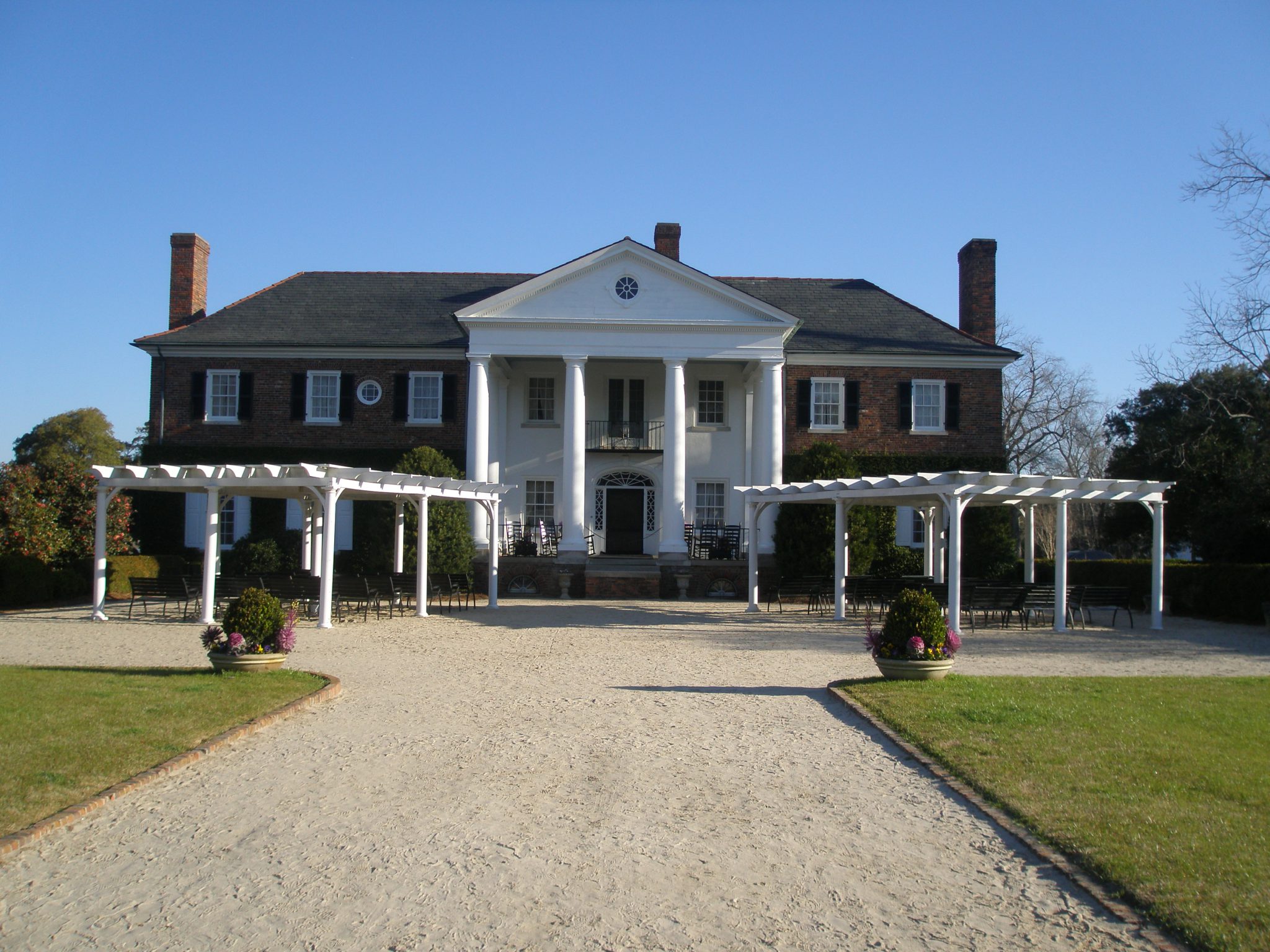
Front of Main House.
Arbors and Folding Chairs at the ready: this is a Major Venue for wedding celebrations.
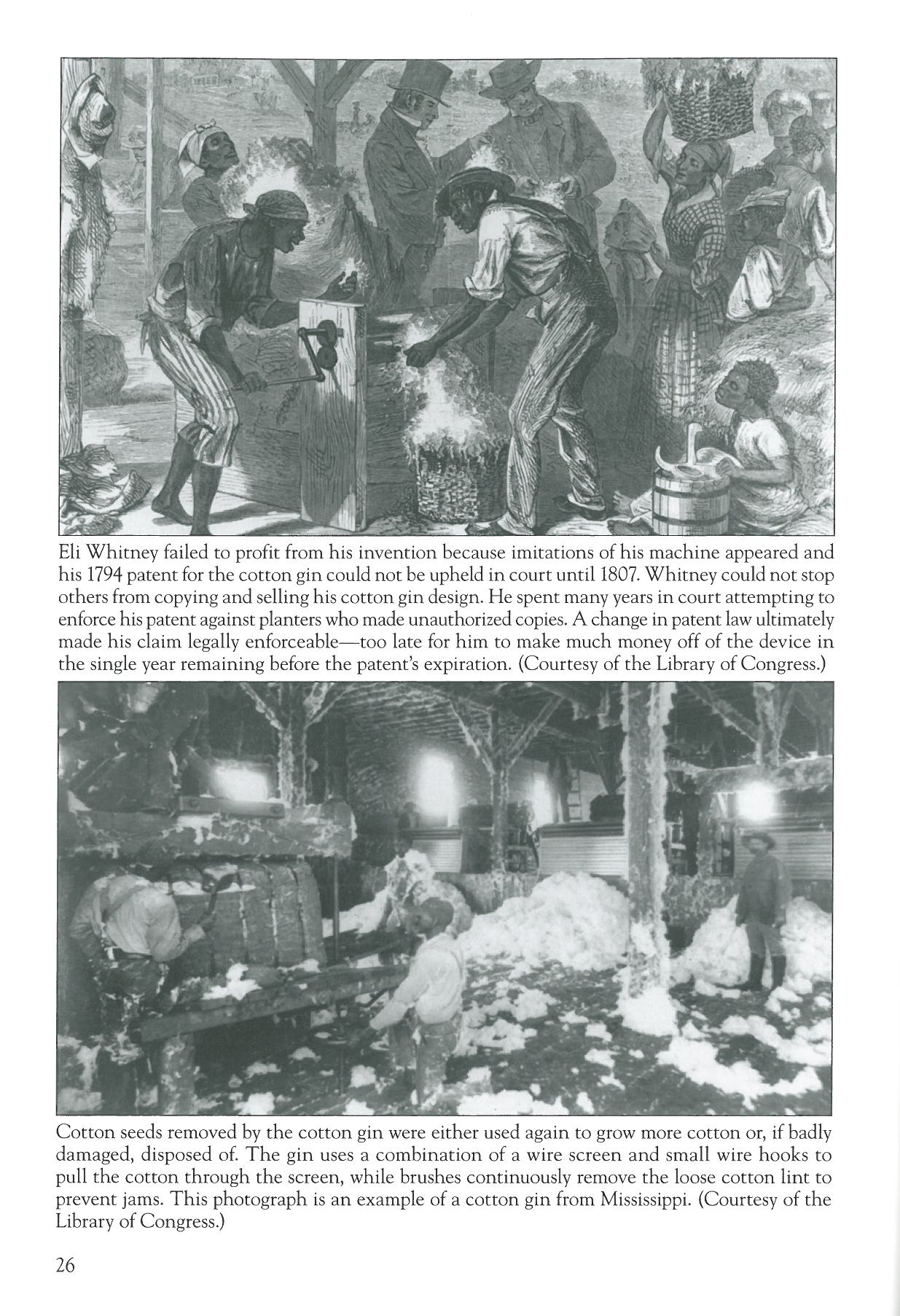
Boone Hall was primarily a cotton plantation, but brick was also produced in the colder months. Pecans, cattle and vegetables have also been raised. Illustration courtesy of IMAGES OF AMERICA:BOONE HALL PLANTATION, by Michelle Adams.
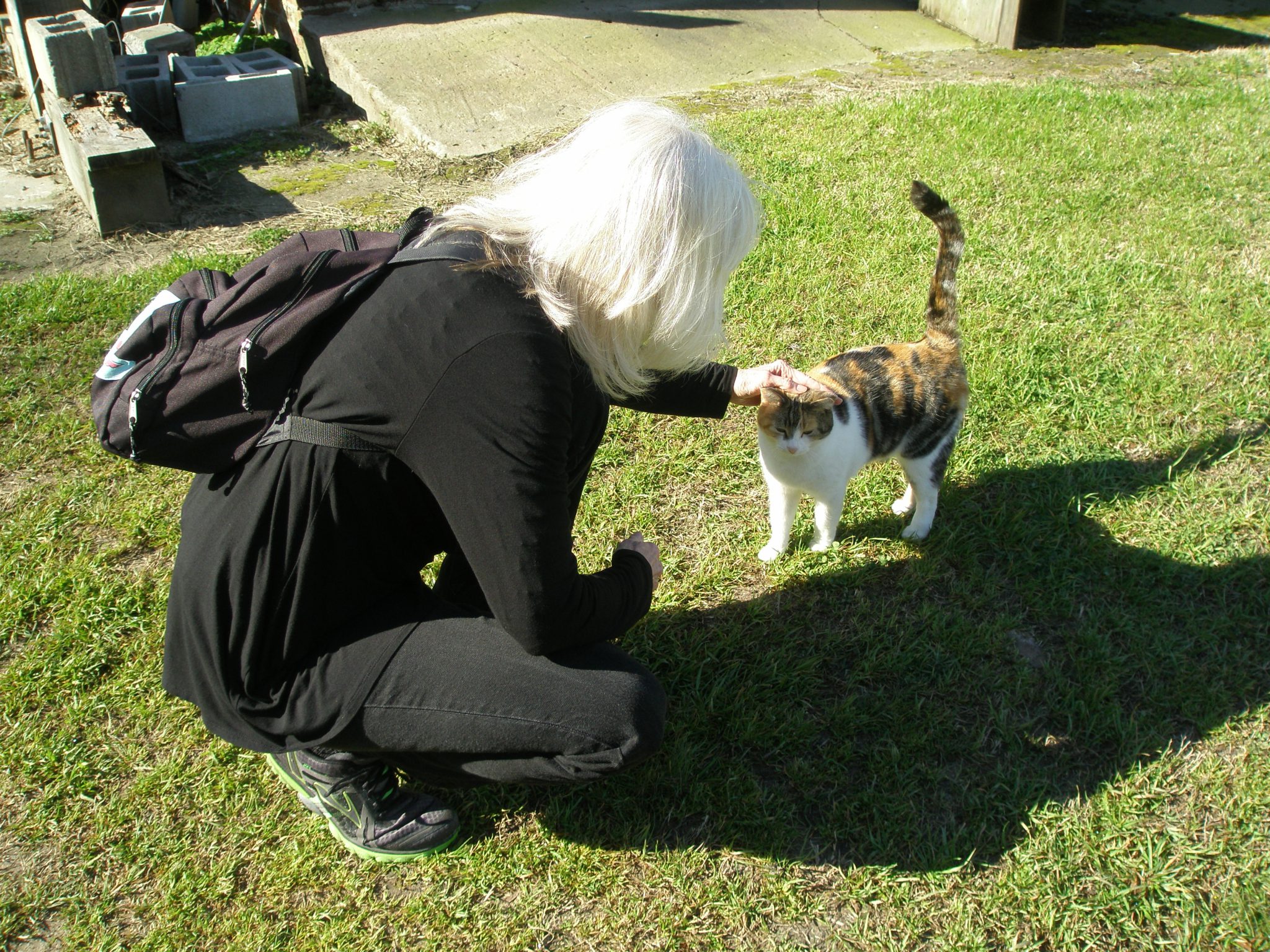
Wherever we go, lovely animals
gravitate to Donn. You may recall a photo of Donn with a friendly dog–
at Villa Gamberaia–in my article, FLORENCE & LUCCA: THE VILLAS, GARDENS & TREASURES OF TUSCANY.
After our pleasant but in no way breathtaking visit to Boone Hall (but no…I must correct myself: its Avenue of Oaks WAS indeed breathtaking, but rather over-inflated my hopes about the rest of Boone Hall), I was eager to reach THE plantation of the day: Middleton Place. Greg drove us northwest of Mount Pleasant, toward the Ashley River.
I had no doubt that Middleton Place would be lovely, but was very shortly pleased to discover that its actual beauty surpassed that of all the coffee-table-book pictures I’d studied over the years. The Butterfly Lakes alone cause the plantation to be included on lists of America’s greatest gardens–and rightly so.
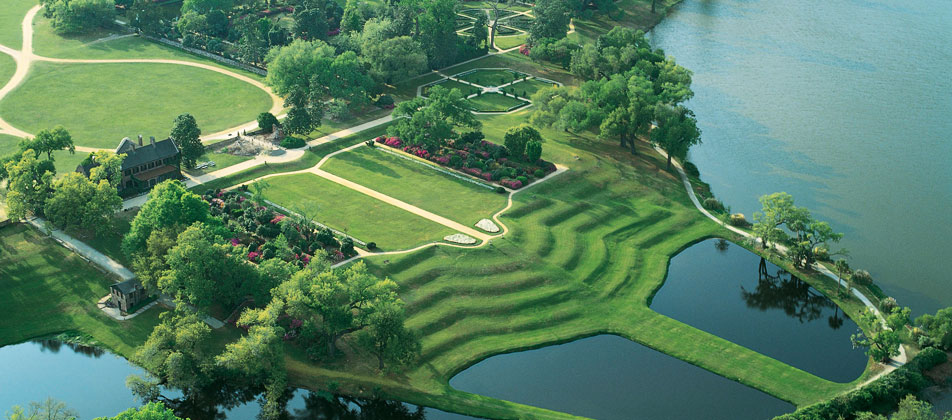
Only the birds can see Middleton Place in all its glory. Image courtesy of the Middleton Place Foundation.
There are many approaches to planning a Major Garden. Garden beds and features can be made to nestle into the embrace of the land. Or the lay of the land can be cunningly reshaped to resemble an idealized version of Nature. Or geometry can be superimposed upon that land, in which case soil and rocks must then be moved to conform to a draughtsman’s plan.
Per the Middleton Place Foundation’s definitive publication, MIDDLETON PLACE: A PHOENIX STILL RISING: Henry Middleton ”used the east-west axis as a base from which to triangulate his bold garden plan, mainly to the north, with perfect mathematical balance, and to organize a variety of geometrical rooms and spaces. The main axis runs west to east straight from the gates on the highway, through the center of the house, down the middle of the curving terraces and between the Butterfly Lakes, to follow to course of the river until it disappears into the wilderness beyond the distant marsh. The formal garden, based on a large right isosceles triangle that organizes along its hypotenuse the major garden spaces in varying geometric shapes, lies mostly north and west of the house and is divided by parallel and perpendicular paths and allees. The allees, trimmed now to green walls, lead from one axis to another, partitioning off a series of small enclosed garden rooms and periodically affording unexpected views of river, marsh and woodland. It is fortunate and important that the main axis runs from due east to due west: thus producing, a couple of hours before sunset, dramatic shadow-sculpted definition for the terraces.”
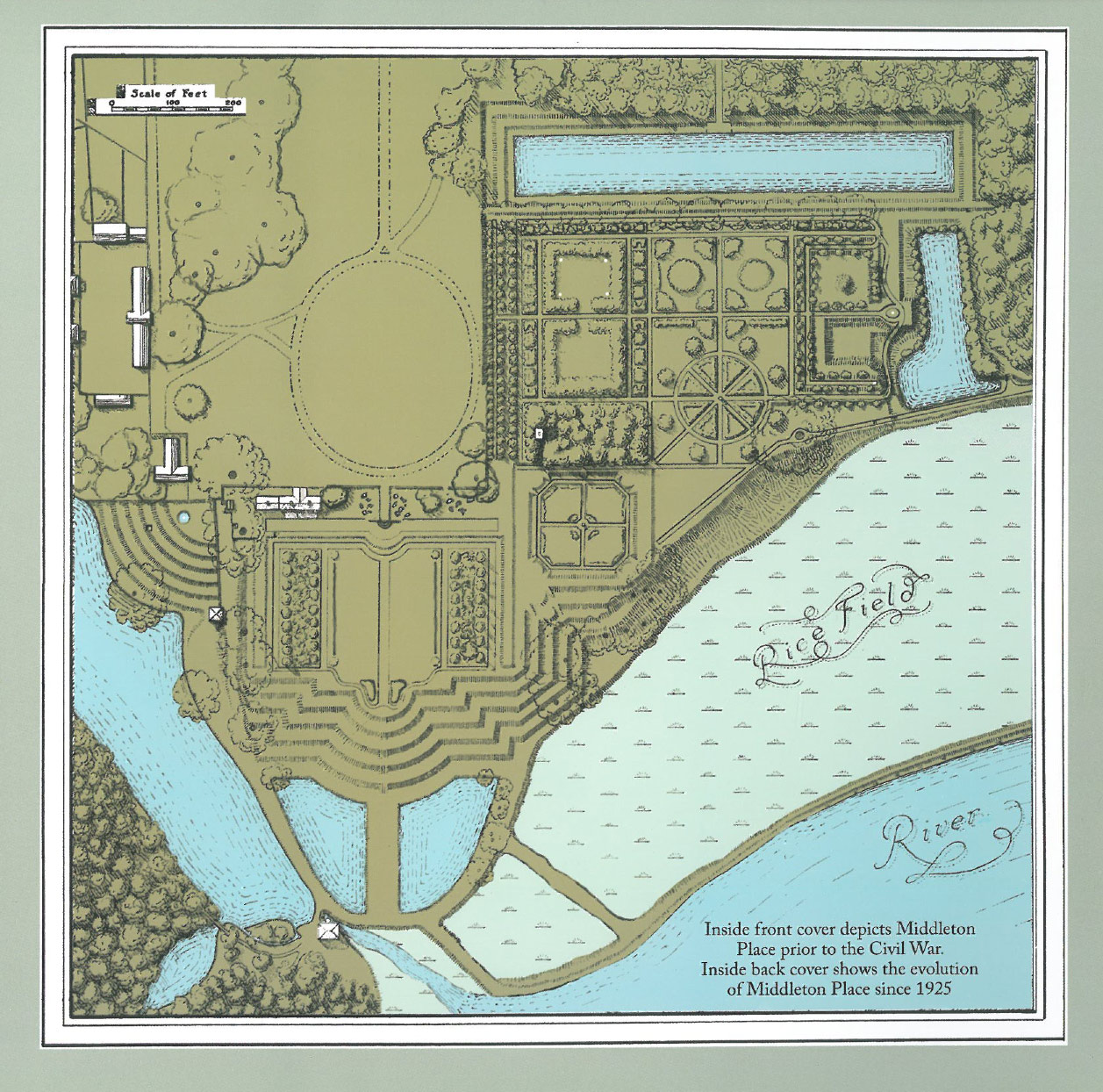
The Plan of Middleton Place’s Garden, as it has been since 1925. Image courtesy of the Middleton Place Foundation.
What I found most clever about Middleton Place is the way that its precise geometric engineering ISN’T overwhelming when one is actually IN the gardens. Indeed, the magnificence of the landforms which lead down to and then form the Butterfly Lakes is more apparent to swooping seagulls than to strolling tourists; it’s almost as if in 1741, when Henry Middleton began planning his gardens, he decided to offer his best views to Low Country birds, for only from high above can the Butterfly Lakes–whose shapes give a nod to those airborne creatures–be appreciated in their entirety. The influence of the French landscape architect Andre Le Notre upon Henry Middleton’s design is indisputable…
… but because the site for Henry Middleton’s great garden was situated upon a bluff overlooking an S-curve in the Ashley River, strict Le-Notre-geometric-grandiosity was of necessity tempered by the greater Power of Mother Nature, in all Her irregularity.
Because the axes upon which the main thoroughfares and views are laid down lead the eye inevitably to the sinuous curves of River, and then beyond to where the flat marsh lands meet the sky, one forgets entirely about geometry, even though ruled lines are governing one’s progress through the gardens. The tension between Middleton Place’s straightaways and the undulations of the River teases and then rewards the garden-goer with delights at every turn.
Here, some glimpses of our stroll across the grounds of Middleton Place.
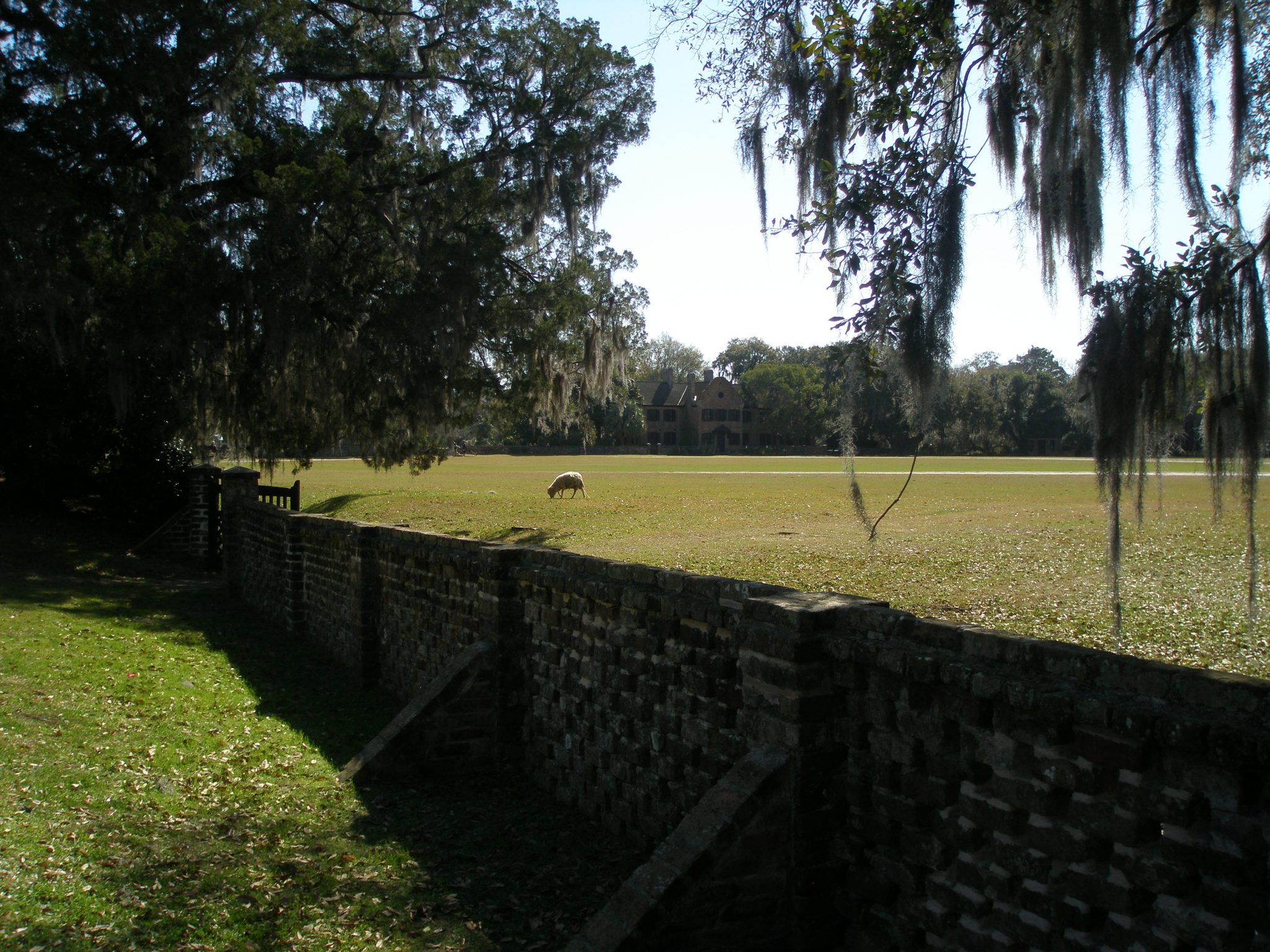
Peeking over the wall into the Sheep Meadow, with the sole remaining original house of the property in the distance.
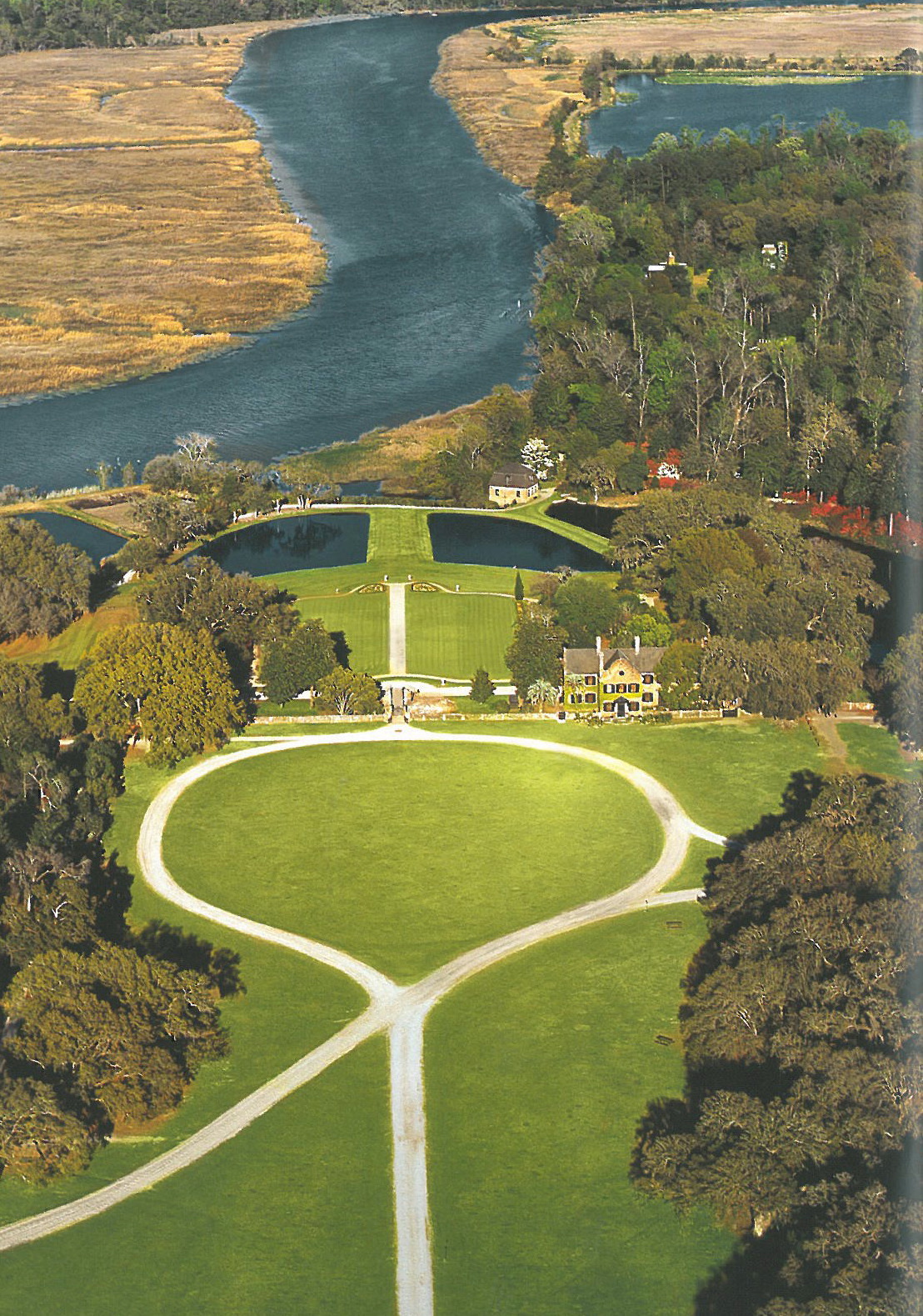
A Better View of the Sheep Meadow, and Greensward Circle. Image courtesy of the Middleton Place Foundation.
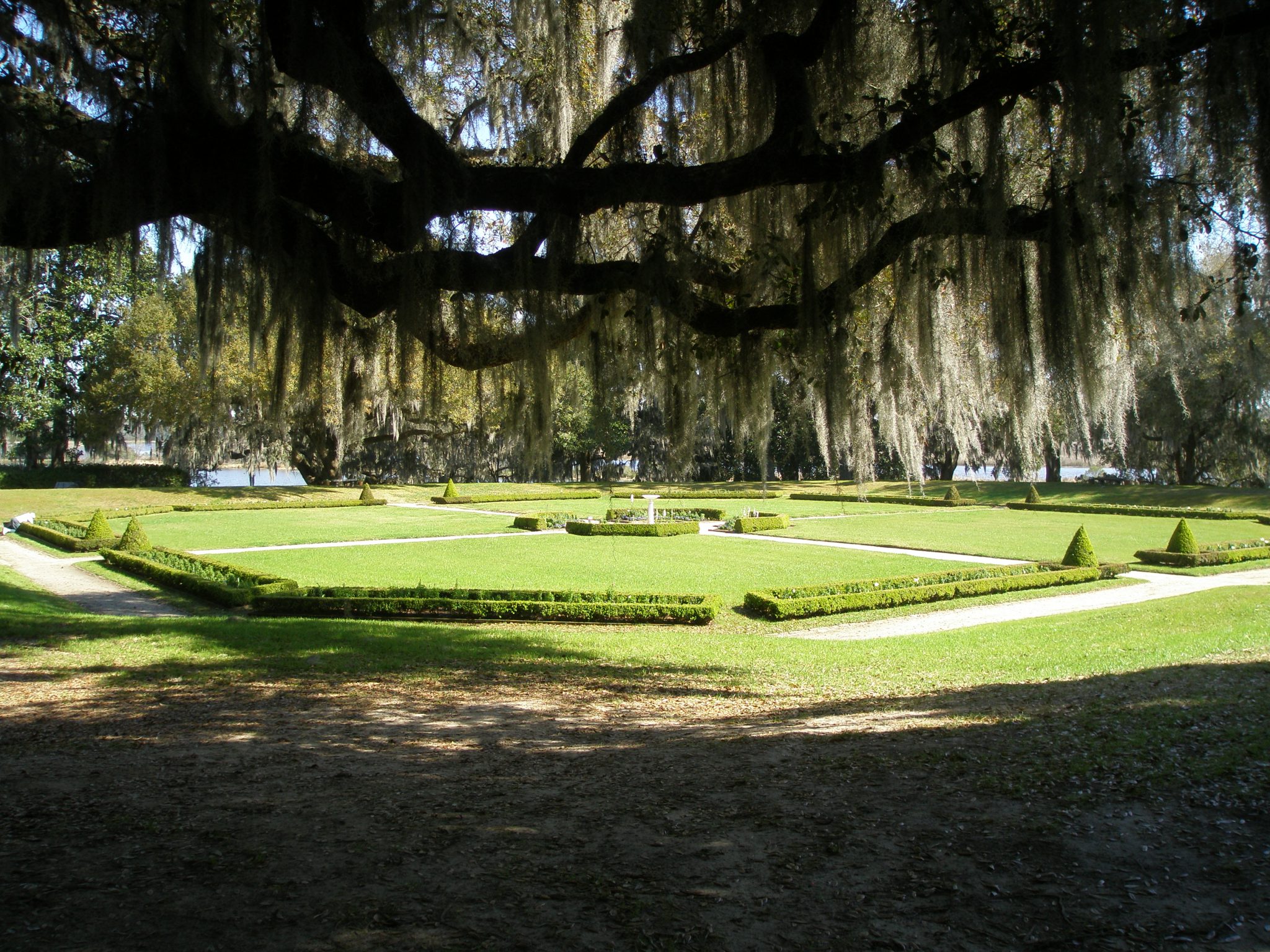
Approaching The Sunken Octagonal Garden, which is near to the site of the Main House. In late afternoons this garden was sheltered from the sun, and gentlemen retreated to the shade to play bowls, while their ladies watched from the raised, grassy terraces.
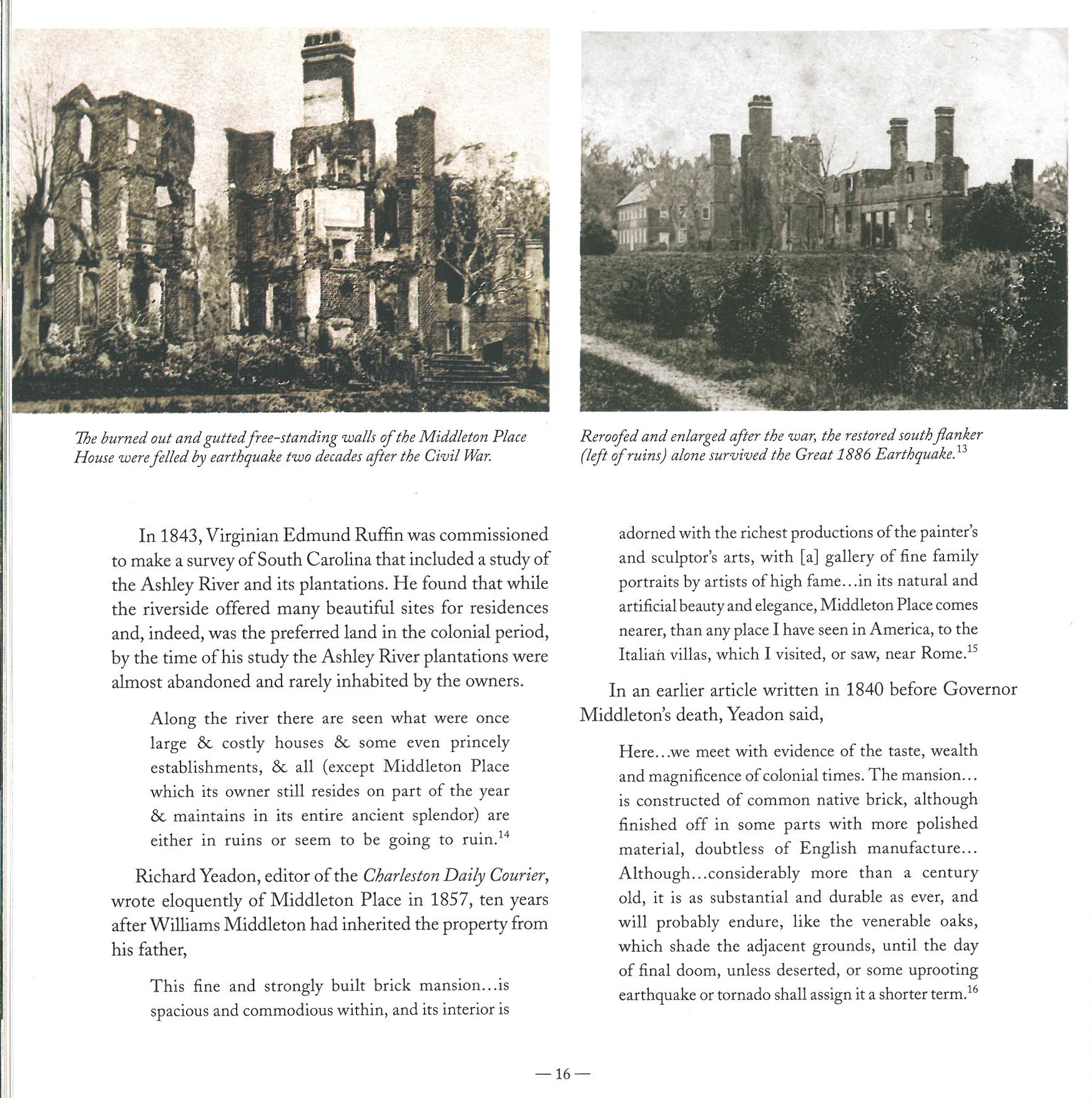
The Much-Abused Main House at Middleton Place: set afire during The Civil War, battered by various hurricanes, and finally destroyed by the Earthquake of 1886! Image courtesy of The Middleton Place Foundation

From the site of the Main House: a view
down toward the Ashley River. A brick walk has been laid where the Center Hall was located: the Middletons positioned their home to capture the best view of the Ashley River.

The complex of buildings at Middleton Place, as of 1842. Image courtesy of the Middleton Place Foundation.
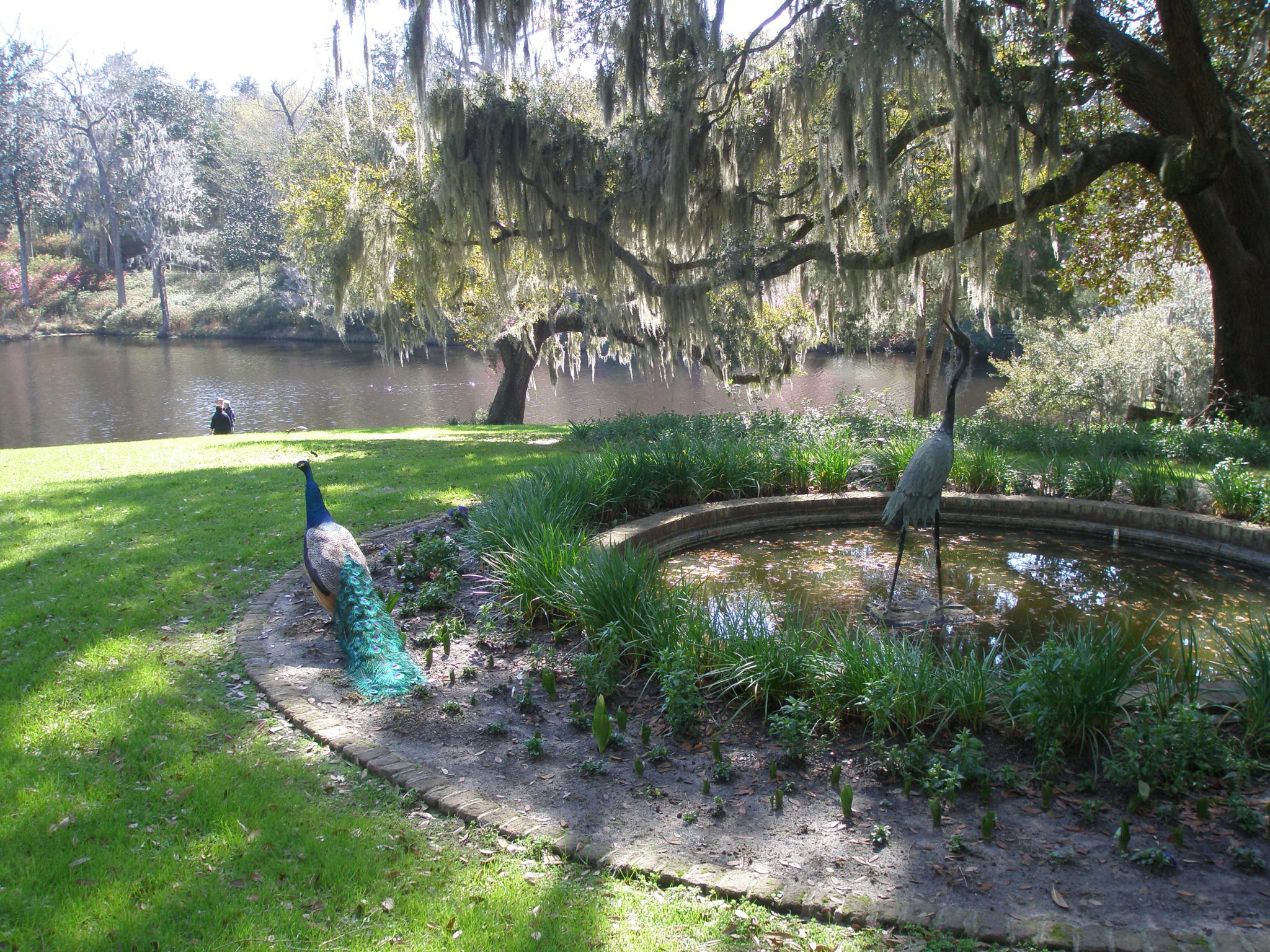
The Peacock Pool (featuring persnickety peacocks…along with a placid, antique bronze crane) with the Mill Pond in the background.
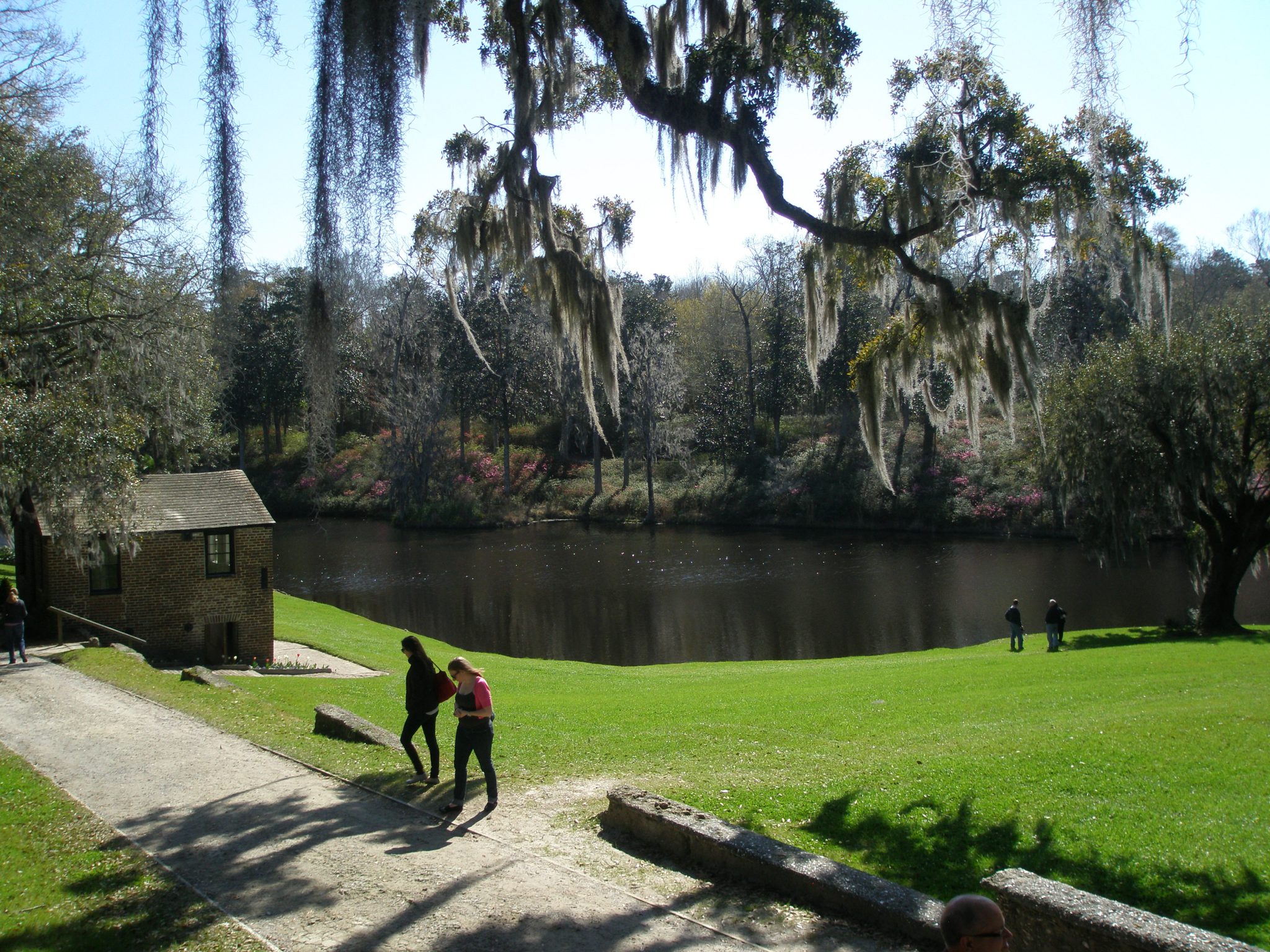
The Mill Pond, with the combination
Spring House (lower floor)/Plantation Chapel (upper floor)…waste not, want not…every inch of built space was efficiently used.
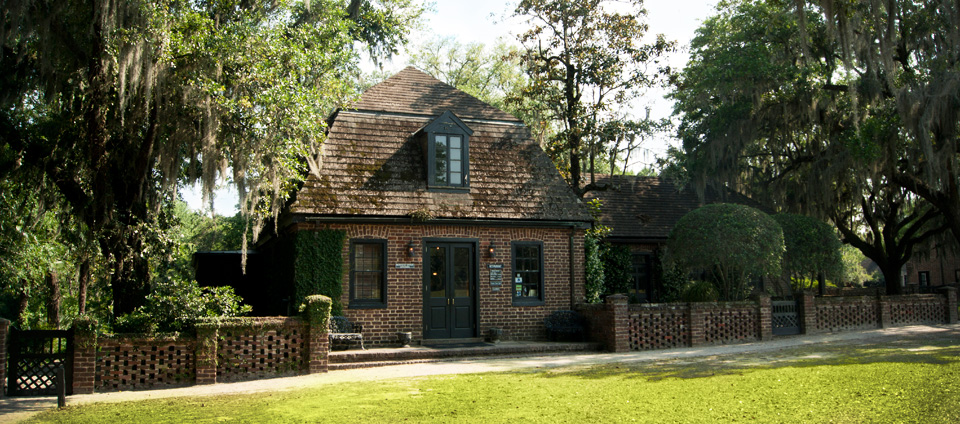
The Restaurant serves traditional Low Country plantation food: okra soup, she-crab soup, shrimp & grits, local seafood & produce. I feasted on their Vegetarian Potluck, which included some veggie concoctions that were, to this Yankee, Quite New, but were also Quite Delicious. Image courtesy of the Middleton Place Foundation.
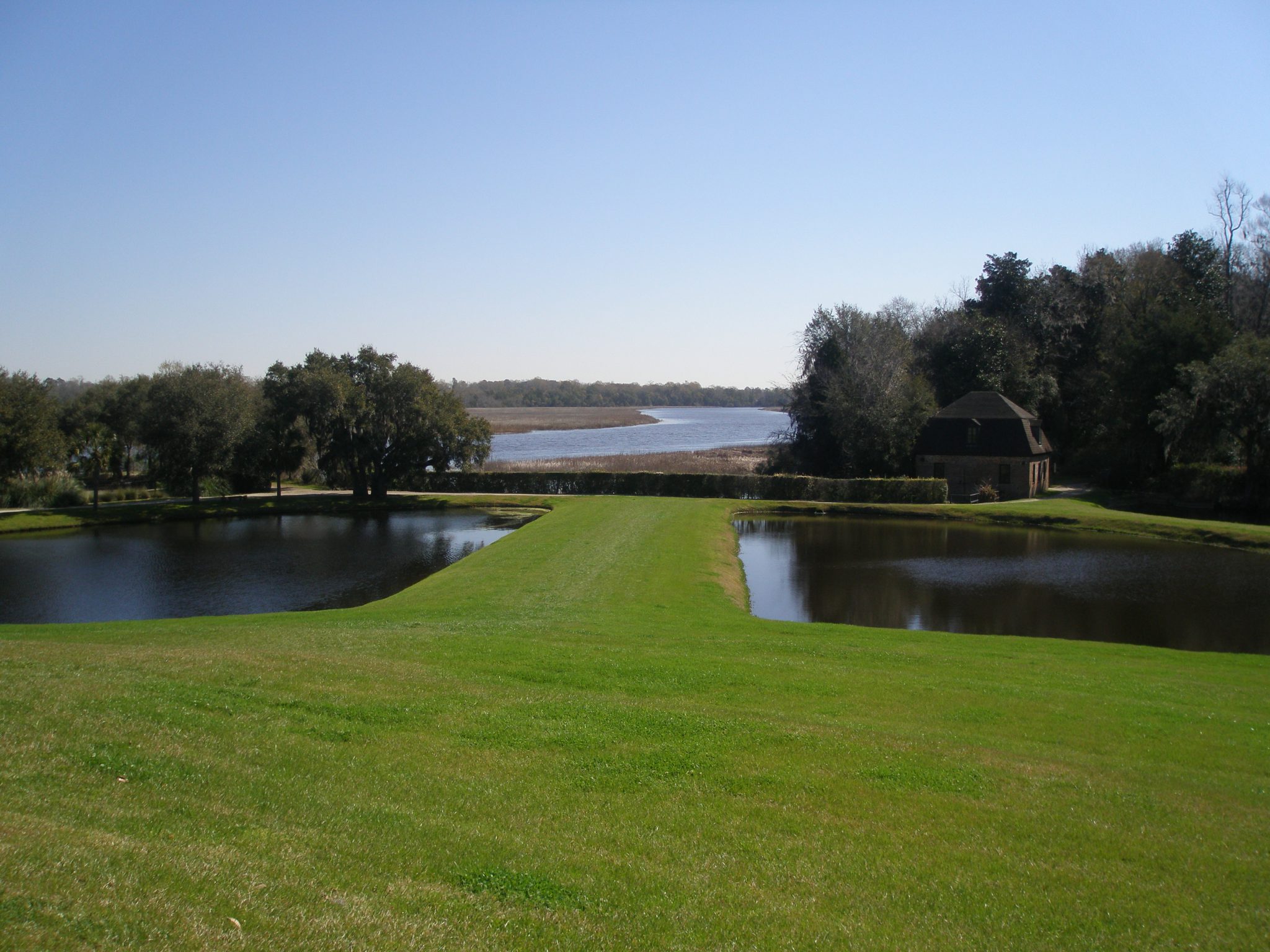
View eastward, away from the site of the Main House, between the Butterfly Lakes, and on to the Ashley River.
Per the Middleton Place Foundation: The long river view “ is reminiscent of the view from the Palace of Versailles looking down the Grand Canal. Henry Middleton borrowed the natural course of the Ashley River to provide his mile-long vista, while Louis XIV had to underwrite the considerable expense of having Le Notre build the similarly sized Grand Canal and have it supplied with adequate water.”
All gardeners know that a borrowed view is the smartest, cheapest way to inject grandeur into one’s design! But one mustn’t forget that such effective use of existing natural features is only the first stage in garden-building. From 1738 to 1865, the gardens, and of course the hugely-more-expansive agricultural lands (where cotton, and rice, and indigo plants were grown) that spanned two miles of waterfront along the Ashley River were cultivated by 3000 slaves. Since 1991, the Middleton Place Foundation has done intensive research, and has identified each person enslaved there, noted their occupations, and listed the names of spouses and children when possible. At Eliza’s House, in the Stableyards, those 3000 names are now recorded.
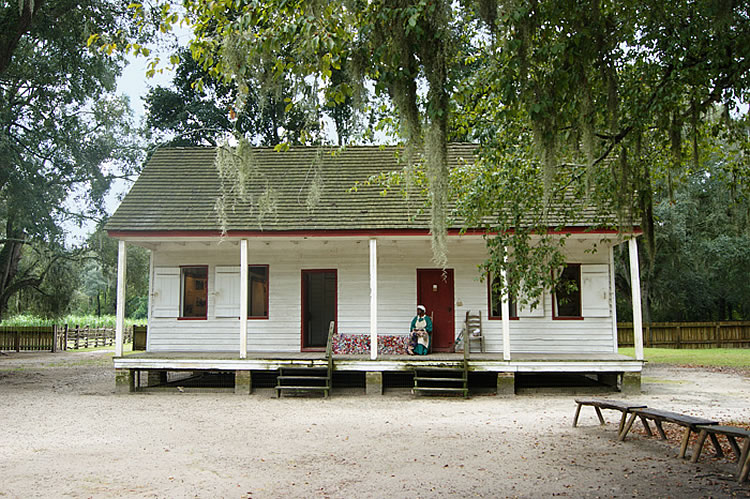
Eliza’s House, a Reconstruction-era African American freedman’s dwelling, at Middleton Place. Image courtesy of the Middleton Place Foundation.
As you appreciate the way the land has been molded and cultivated, remember that such toil was done, shovelful by shovelful.
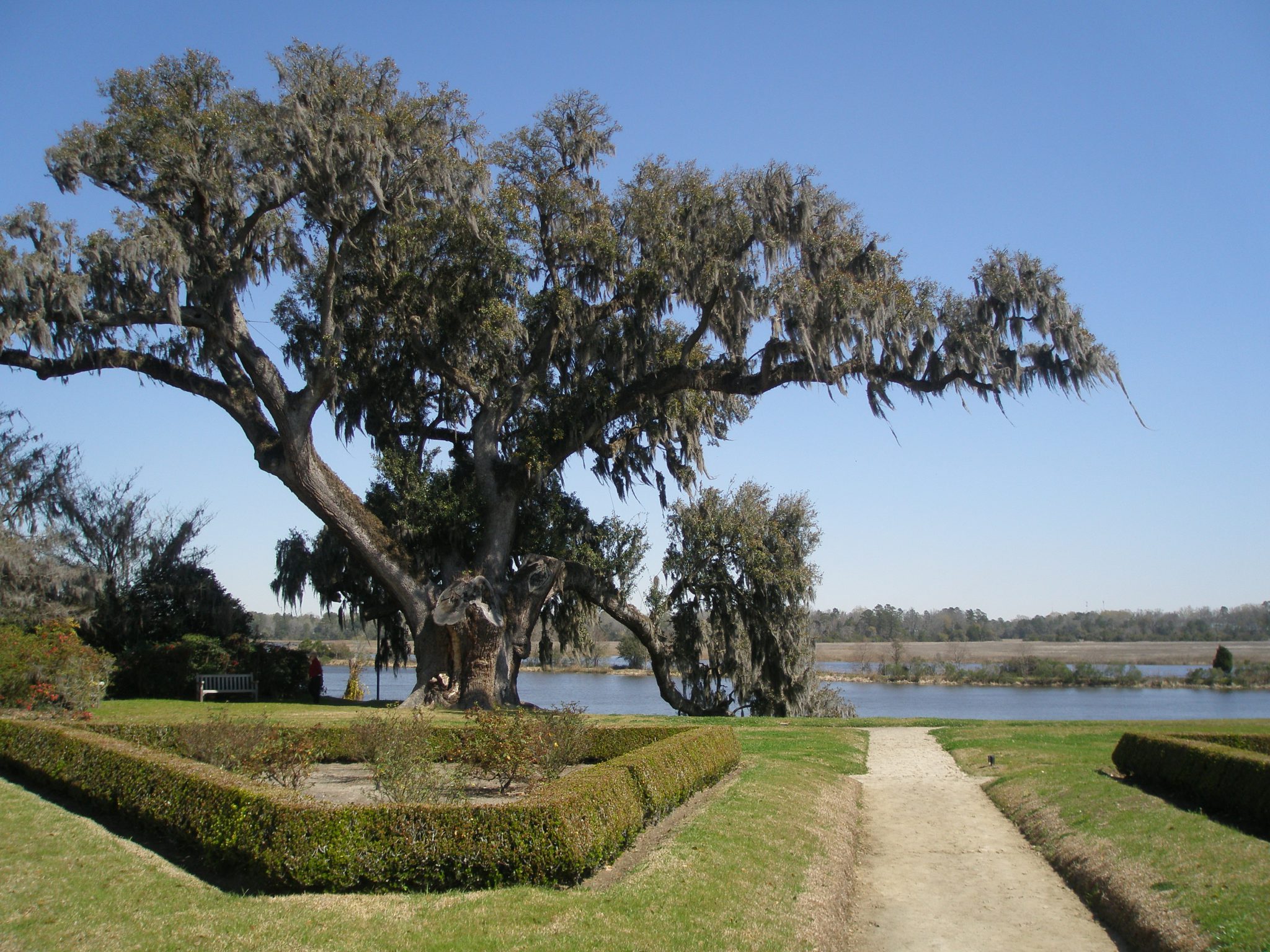
A slice of the Sundial Rose Garden and a grand view of the great Middleton Oak (a variety of live oak: Quercus virginiana), which is perhaps a thousand years old. Prior to 2008, the Middleton Oak’s trunk had a circumference of 34 feet, and a limb spread of 131 feet. The tree lost nearly half its branches in April of 2008, but is otherwise happy and healthy.
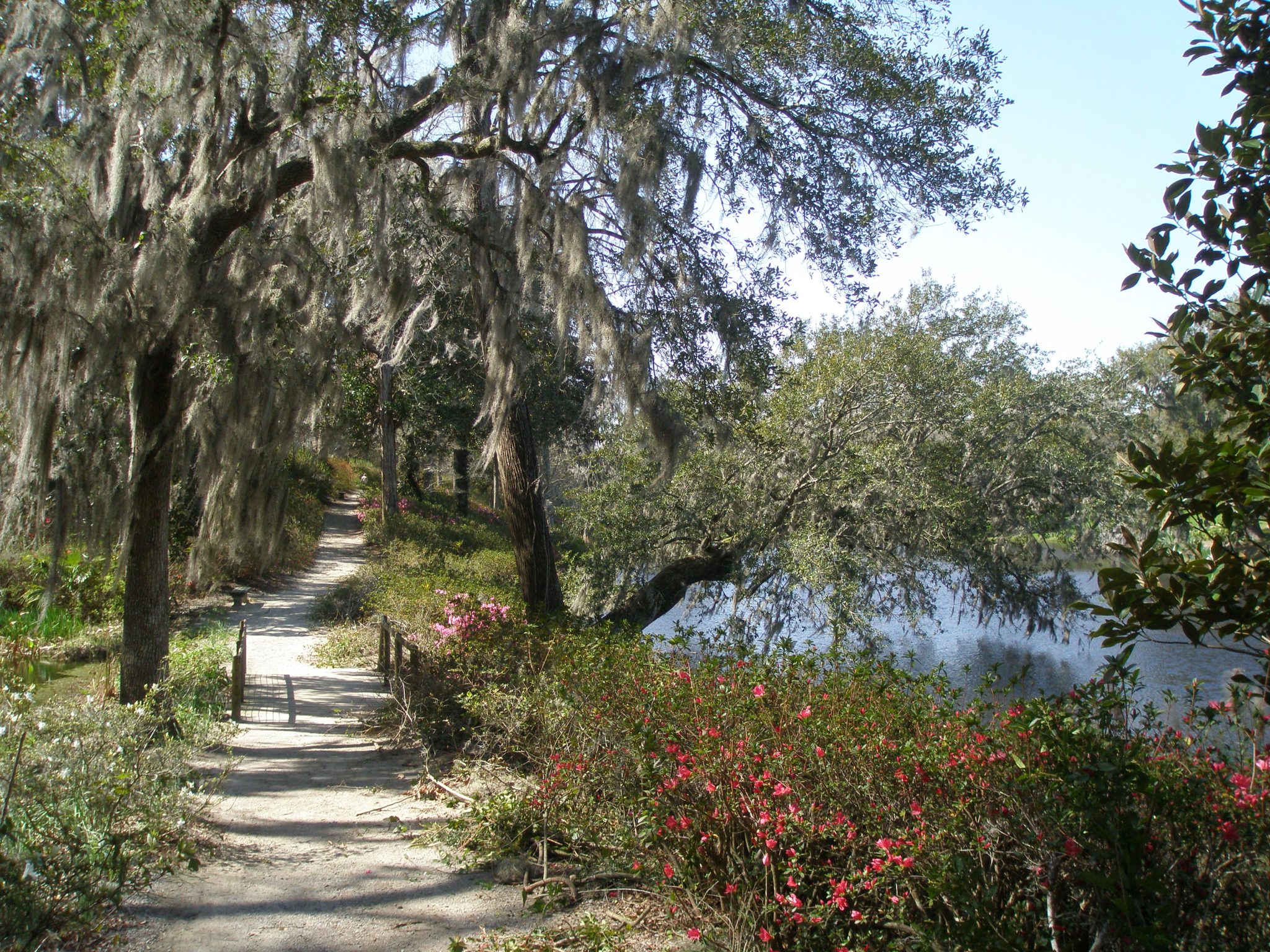
The Azalea Walk, with blossoms far past their prime. During the 1930’s, THOUSANDS of azalea bushes were planted on the hillside south of the Mill Pond.
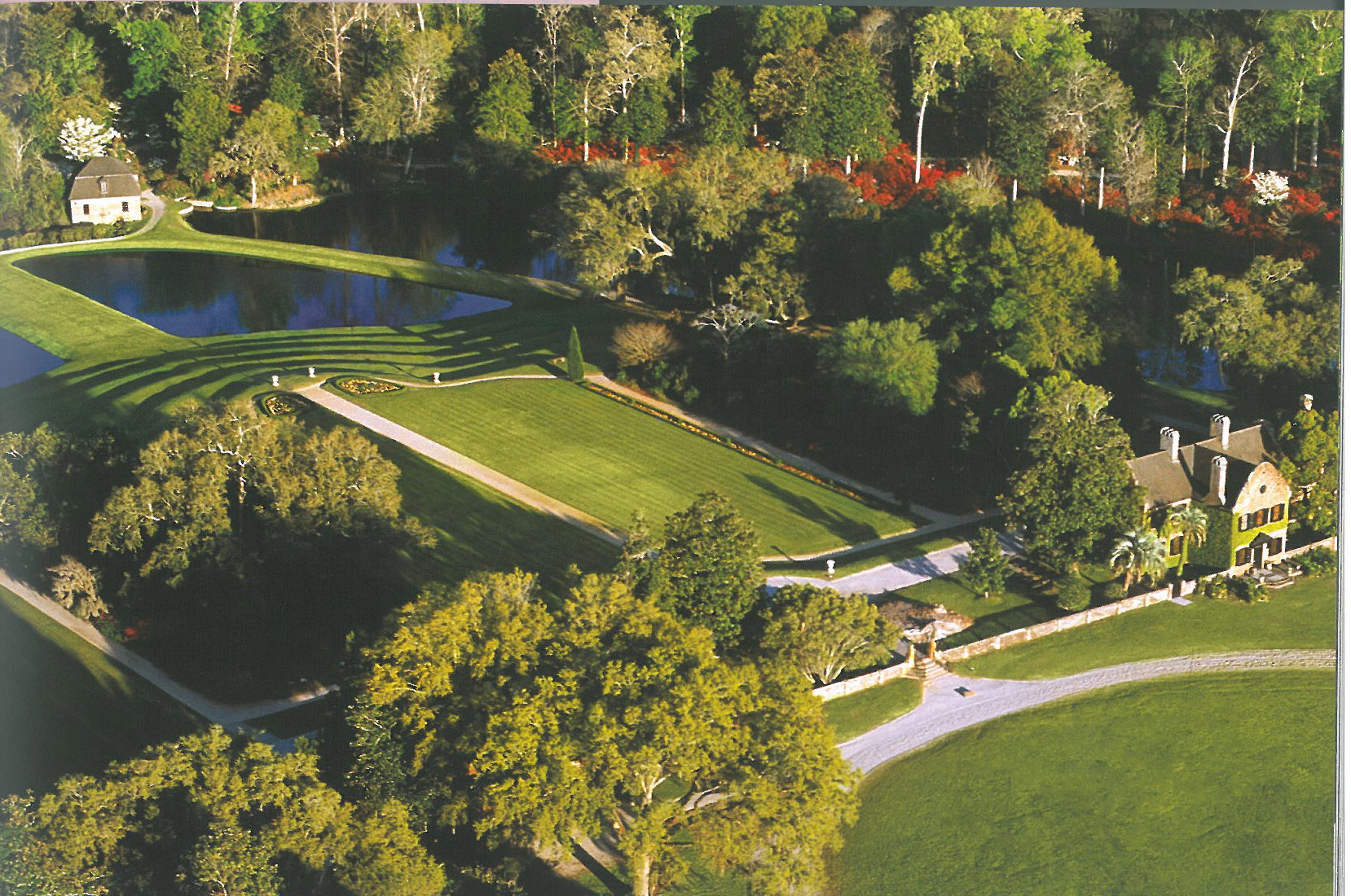
During the Azalea’s High Bloom season, the shrubs glow ruby-red along the shores of the Mill Pond. Image courtesy of the Middleton Place Foundation.
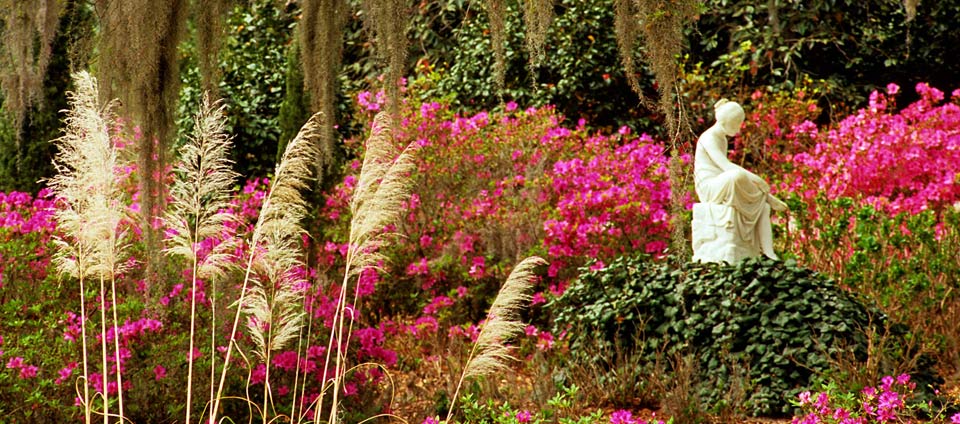
Up close, when the Azaleas are strutting their stuff. Image courtesy of the Middleton Place Foundation.
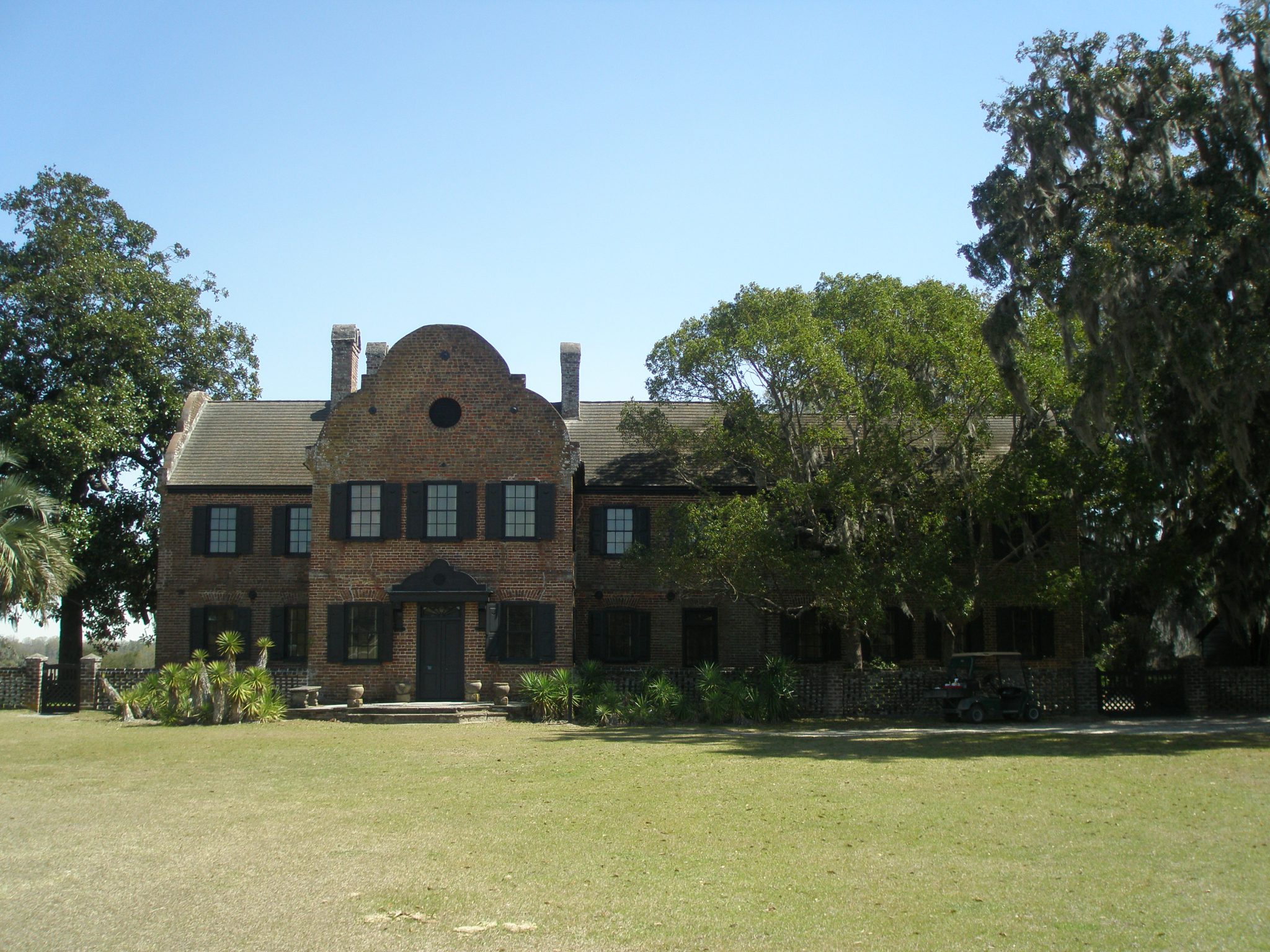
Remaining Original Structure, which faces the Sheep Meadow. This structure was the South-Flanker, one of two dependencies that were alongside the Main House. Today, this building is the House Museum, where generations’-worth of Middleton family possessions are displayed.
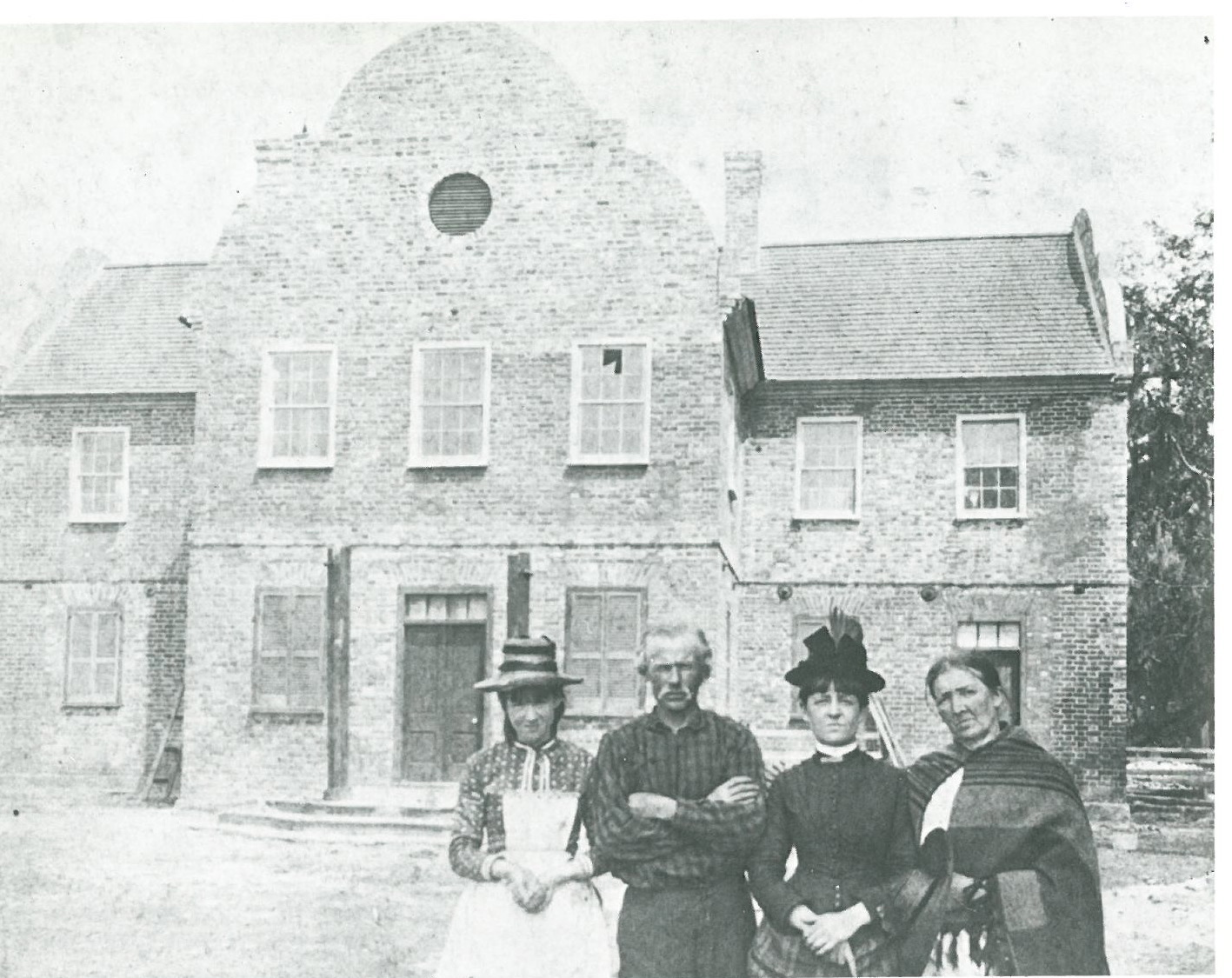
A Middleton Place
tenant family, posed in front of the South Wing, the only remaining portion of the Plantation Houses. Photo taken circa 1886. Image courtesy of CHARLESTON:COME HELL OR HIGH WATER, by Whitelaw & Levkoff.
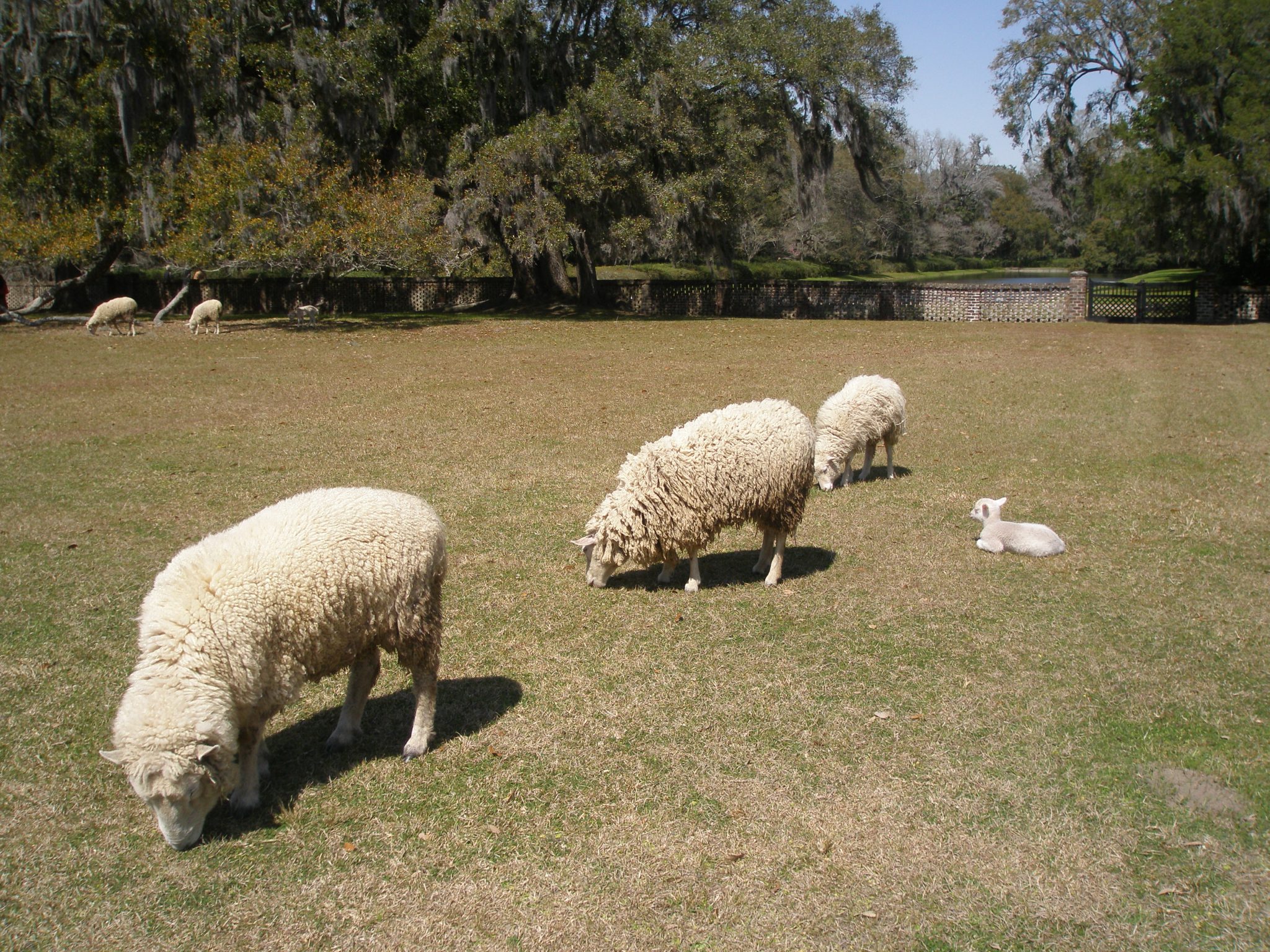
No Lawn Mowers needed in the Sheep Meadow. The Reflection Pool is in the distance, beyond the Pierced Brick Wall. An aside: now that I’ve seen that Pierced Brick Wall, I WANT ONE for my own gardens.
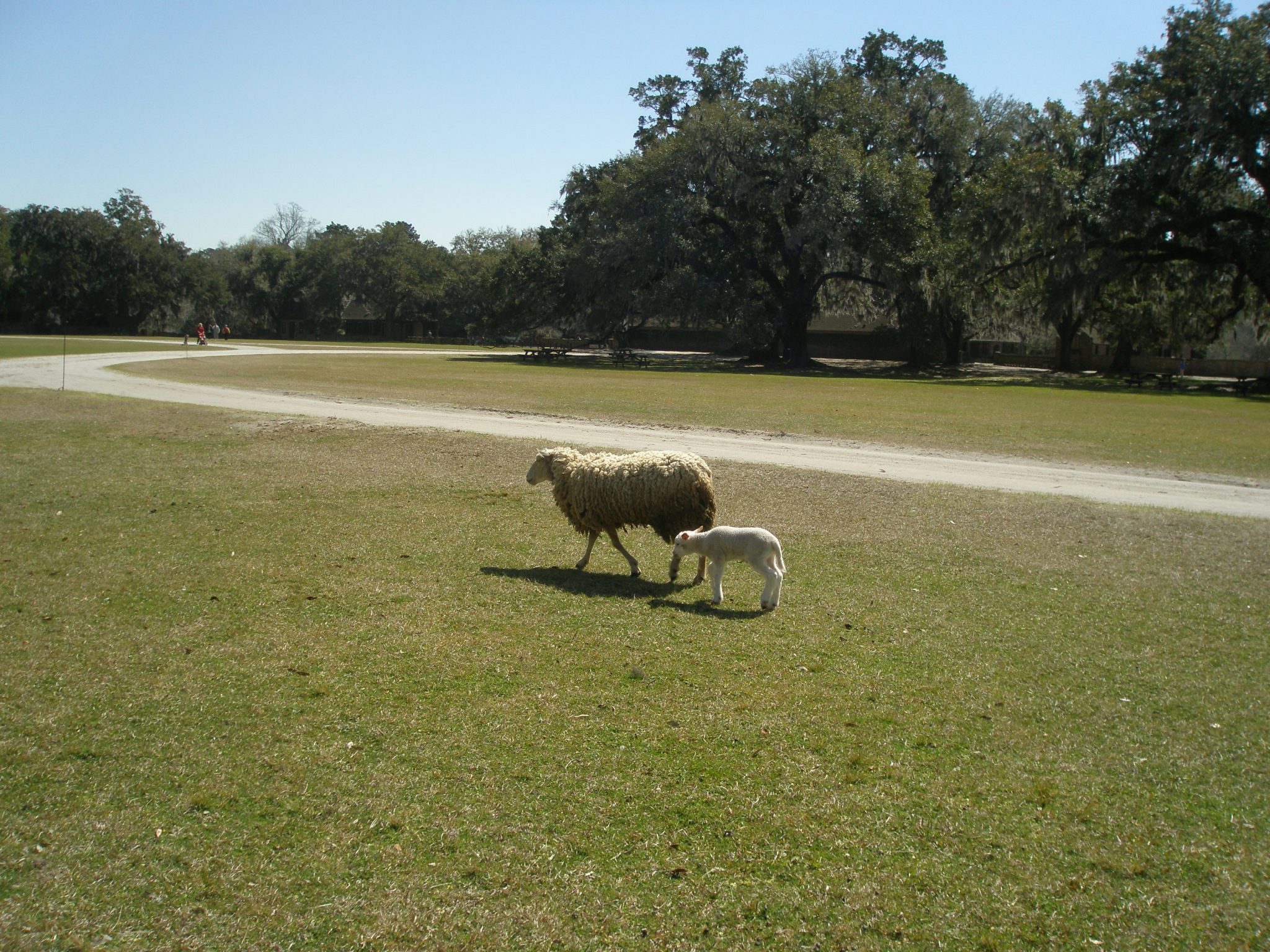
A Wobbly-Kneed Lamb with his Mama accompanied us as we walked back to find Greg, who’d been patiently waiting for us in the shady parking lot.
By the early 1900’s, the neglected gardens of Middleton Place had disappeared under verdant Southern weeds, but the good bones of the garden slumbered, ready for the reviving kisses (and nurturing bank accounts) of J.J.Pringle Smith (a direct descendant of Henry Middleton) and his wife, Heningham Lyons Ellett (I LOVE these names!). The restorations which the Smiths began in 1916 continue, and this National Historic Landmark rejuvenates itself, day by day.Go there! Spend more time than we were able to (our 3 hours seemed far too few!).
The Middleton Place Foundation. 4300 Ashley River Road, Charleston, South Carolina. 29414. Phone# 843-556-6020. Website: www.middletonplace.org
As Greg bundled us into his van, he told us that our next stop, Magnolia Plantation and Gardens (which is just a hop-and-skip down the road from Middleton Place), is the plantation he most loves; the place where he takes his family whenever he can. I wondered aloud how the splendors of Middleton Place could be topped, and Greg just did that smile of his….
…which leads me to the subject of Expectations While Traveling. I have a couple of approaches to my journeying. The first is to research the Hell out of a destination. The second is to put myself into the hands of an expert guide. But whichever my approach, once I arrive at a new place, I temporarily dismiss all prior knowledge and try to see with a child’s eyes. Abandoning expectations almost ensures that every day when I’m Out In The World will be happy….or, at least, interesting. With such a mindset, even a Mediocre Meal is only a miniscule irritation (just so long as I’m smart enough not to eat twice at a bad restaurant), or a Dull Destination becomes no worse than a few hours frittered (because, once identified, my news about a place-not-worth seeing can spare another traveler). The purpose to prying myself away from the comfortable cocoon I call Home is to learn, and so, my curiosity piqued by Greg’s optimism that we’d find the Magnolia Plantation even more satisfying than Middleton Place, I began our walk at Magnolia with a decision to banish the refined splendors of Middleton Place from my brain.

The Gardens themselves are barely represented on this map. Within the “Garden Area”
are many lakes , a Camellia Garden, and the Audubon Swamp Garden. This map is only worthwhile because it shows the relation of Magnolia Plantation to the Ashley River, which curls around Magnolia’s 390 acres.
The Plantation describes itself thusly: “Magnolia Plantation and Gardens, located on the Ashley River near Charleston, South Carolina, has been owned by the Drayton family since the 1670s and has been open to the public since 1872. It is the last surviving nineteenth-century romantic garden of its size in America, and it is where the largest and most ancient azalea and camellia collections in America were developed. It is the garden where azaleas were first planted out of doors in a landscape setting.”
Donn and I entered Magnolia’s Gardens through the Biblical Garden, which is situated south of the Plantation House.
This small plot contains plants mentioned in the Bible, and honors the memory of past garden superintendents, but the space was disheveled and dreary. I wondered “is THIS where Greg frolics with his family?” However, as Donn and I progressed toward the River, and penetrated the Garden Area, birdsong drenched the air (I later learned that 254 migratory and year-round bird species enliven the Plantation). Around every path-bend there seemed to be yet another fanciful wooden bridge to span yet another lake. Everywhere in these watery gardens, reflections captured upside-down worlds of beauty. My breathing became slower, along with my pace. I began to notice details: scents, and sounds, and colors, and textures.
Demeter had enveloped us in her magic. I know, I know….forgive my goofy description, but truly….the place works some Serious Otherworldly and Nonverbal Charm upon her visitors; charm that can only be partially described by words and pictures. The Gardens are famous for their collections of flowering shrubs, but the soft, sweet air of the swampy woodlands, the chittering voices of innumerable birds, and Magnolia’s glass-calm expanses of water…where reflections doubled our visions of sky and of shaggy trees and of creaky bridges…made the most potent and exotic impressions upon me. Rather than pontificate about the Plantation’s long history, I’ll let photos tell the more important story. Here, pictures to match the steps of our garden stroll:
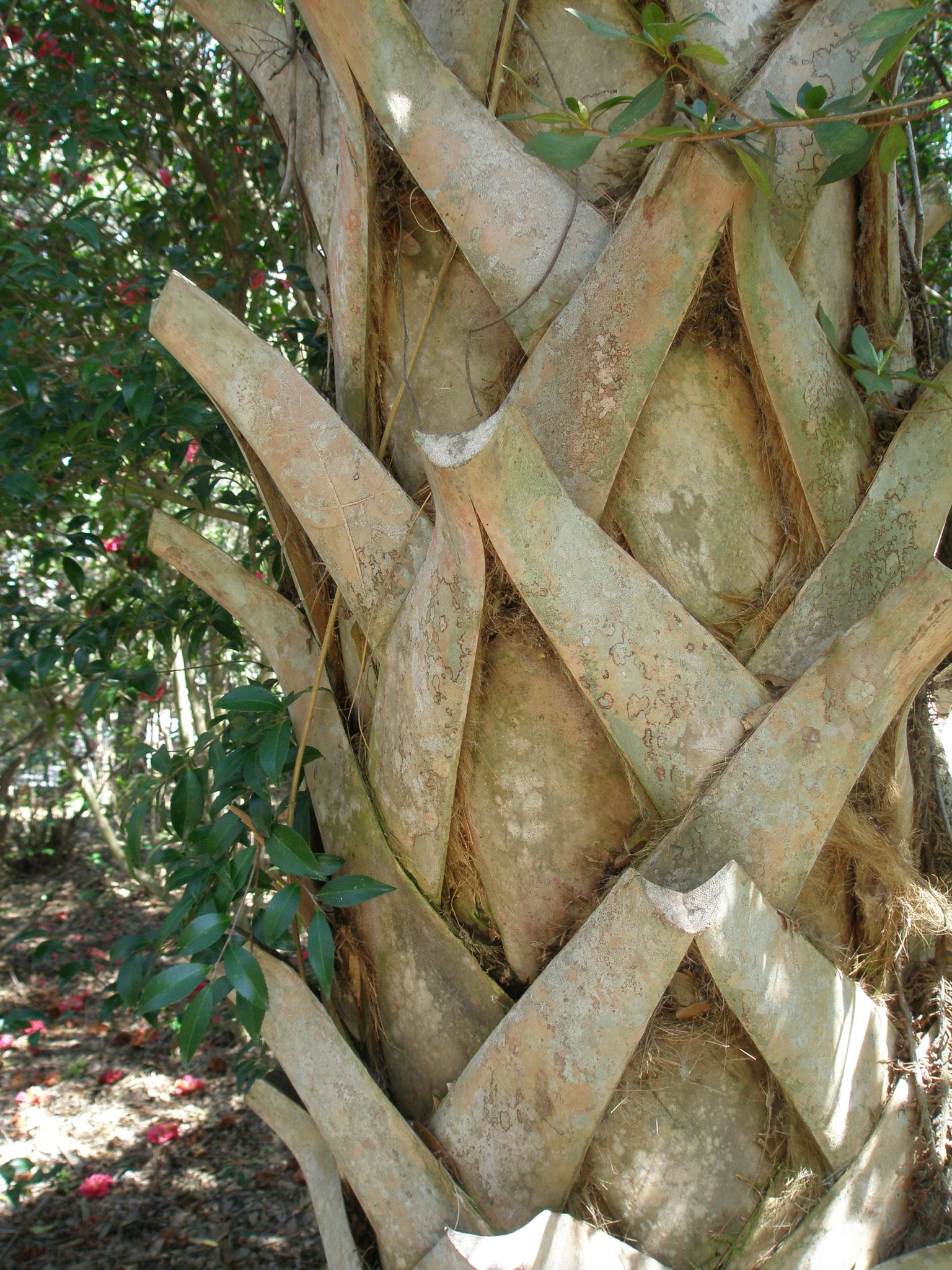
Trunk of a Palmetto Tree
(read my HISTORIC CHARLESTON article to learn more about the Mighty Palmetto).
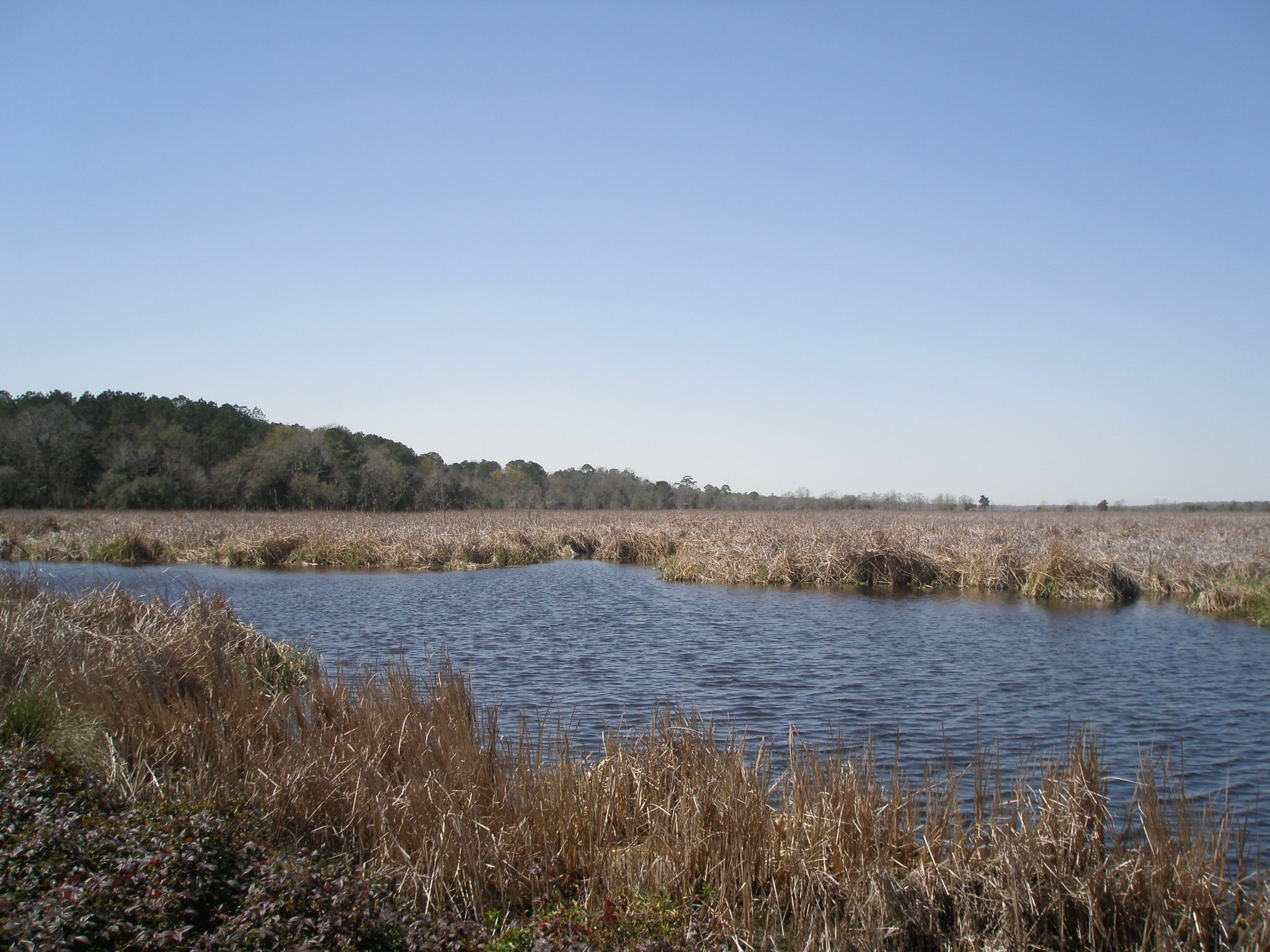
We head out across flooded rice fields to a levee-path in the Waterfowl Refuge alongside the Ashley River. It almost seems as if we’re walking on the River itself. Now, away from the woods, a fresh, steady breeze rises.
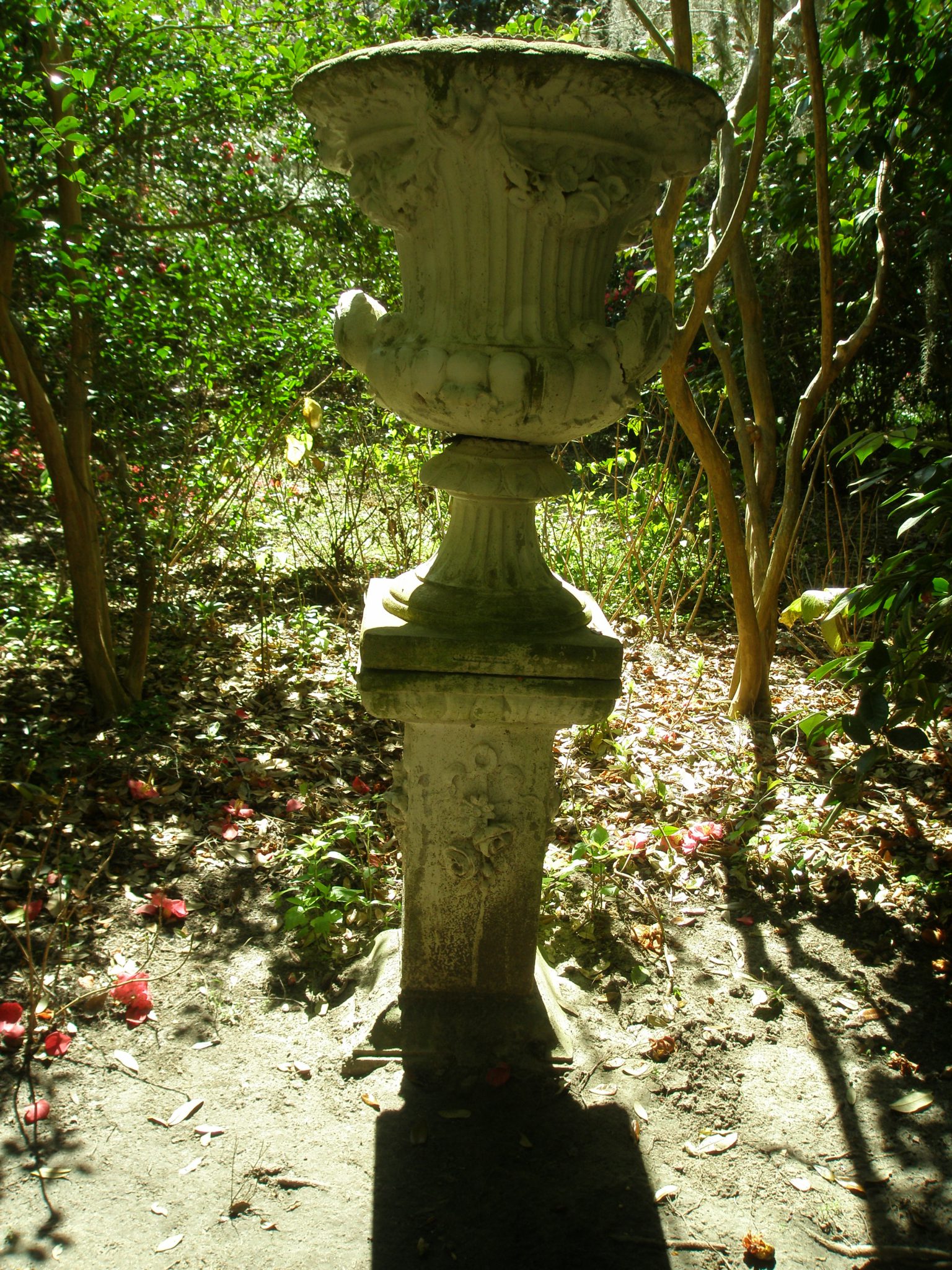
Footings in these moist soils often shift, and thus urns tilt. But plumb lines in shady glades would seem out of place…
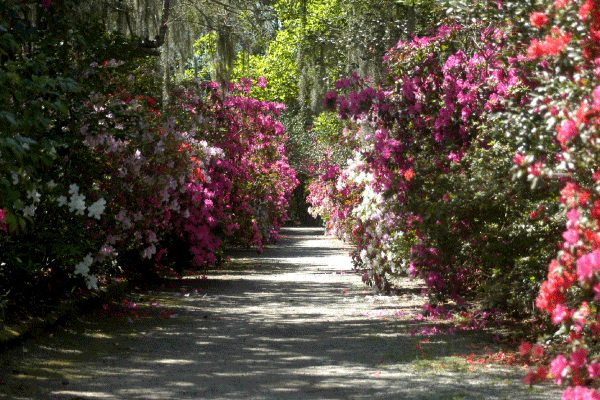
We just missed the Azaleas’ resplendent peak, two weeks prior to our visit. Image courtesy of Magnolia Plantation.
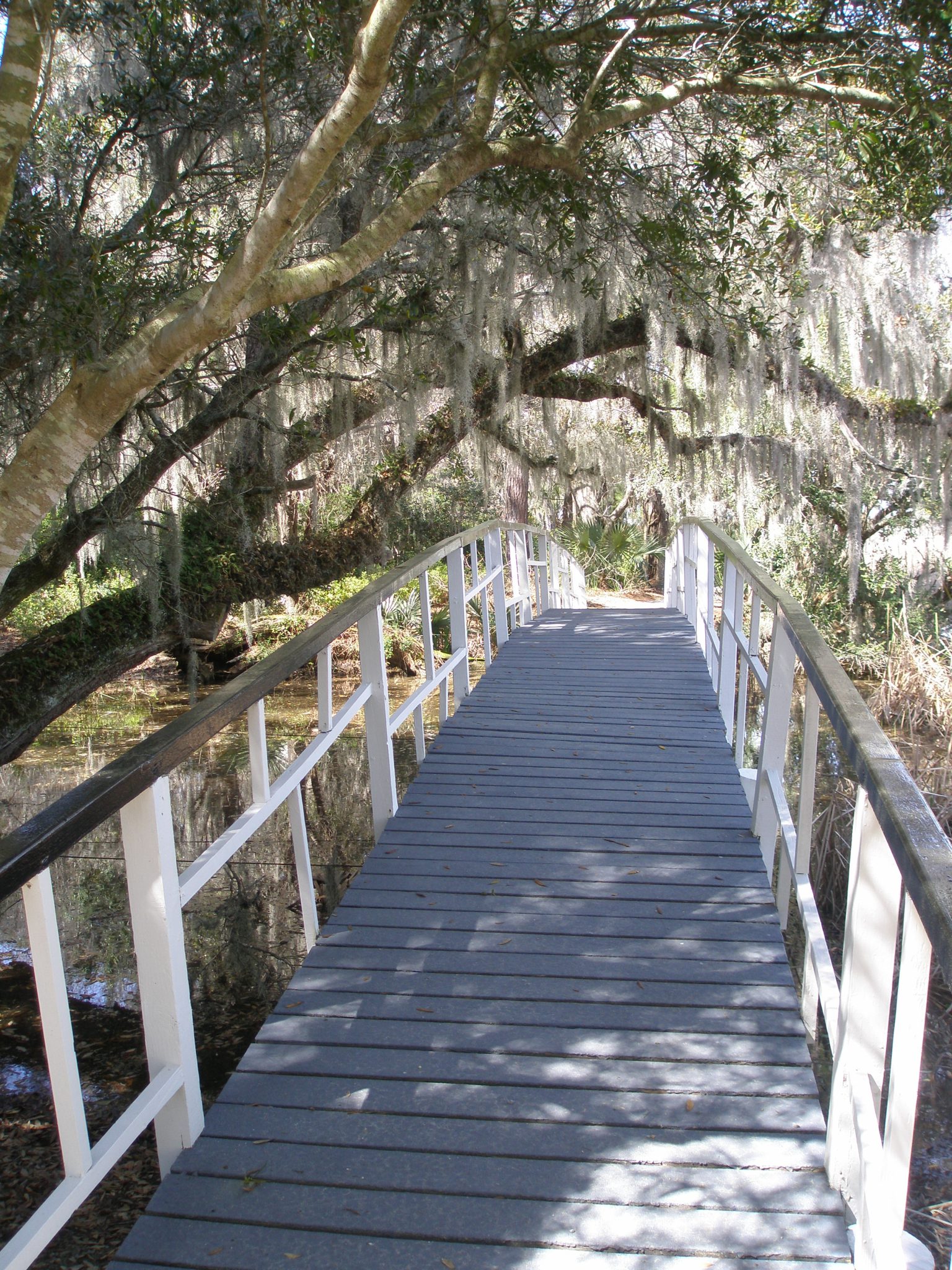
An oriental-style bridge spans an inlet of the Ashley River, leading to a wildlife tower and nature trails. A live oak tree and Spanish Moss create a living tunnel.
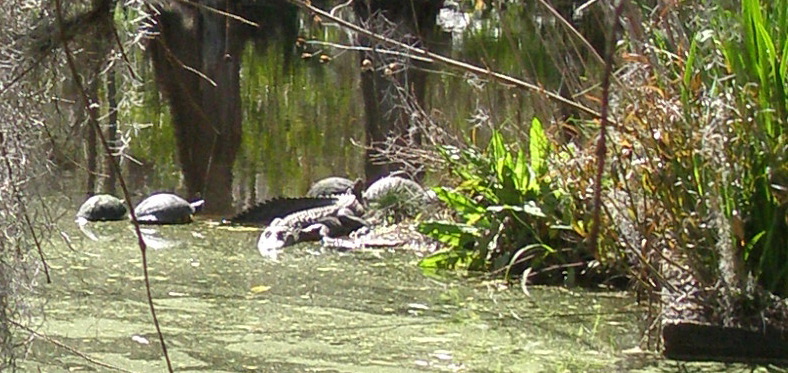
Well as I live and breathe: An Alligator suns himself, while a Gang of Turtles balance themselves upon the Alligator’s back.
Per the Plantation, “The Long Bridge identifies the garden at Magnolia Plantation more than any other structure. Considered French in style because of its sleek lines and trellised handrails, it was designed by the Reverend John Drayton when he decided to expand the gardens and make them more romantic to please his wife.” My only thought about his wife: So the gardens weren’t
already romantic enough?
The only frustrating thing about our visit was that, since it was March, there were no magnolia blossoms to be seen (Southern Magnolias bloom in May). So here….a reminder of the beautiful flower whose name graces these Gardens:
Magnolia Plantation & Gardens. 3550 Ashley River Road. Charleston, SC 29414
Phone# 843-571-1266
Website: www.magnoliaplantation.com
When we returned to the van, Greg asked: “Well? What did you think? Which is your favorite?” I thought for a bit, and then it came to me. Magnolia’s wild Gardens were perfect in their own way; comparison with the carefully-sculpted landscapes at Middleton Place seemed pointless. These two Gardens were contrasting sides of the same, beautiful coin; taken together, they demonstrated
how the Ego, and the Id, can manifest themselves in garden-making. Middleton Place’s wide vistas and highly-intellectual layout had sharpened my consciousness…had made me contemplate South Carolina’s history, along with the influence of far-off French garden designers. Magnolia Gardens’ shady paths and primeval pools had instead sent me into a wordless place. I became temporarily tangled in thickets, reoriented myself, and then continued to delve deeper for the Garden’s center…which I never found. Magnolia seemed almost to offer a waking dream: one in which The Secret might finally be revealed, just around the bend. But, like all dreams, Magnolia’s paths keep coiling…coyly, and in upon themselves…asking only that we to return to experience them, over and again.
And finally, for those of you who might find my Ego-Id appreciation of gardens a bit too tree-huggy, I’ll end this Armchair Diary on a solid, foursquare note. The last stop of our day was to be nearby Drayton Hall, the oldest preserved plantation house in America. Drayton’s fame rests not upon its grounds, but upon the pristine lines of the House itself. By late afternoon, Donn and I were almost out of time…and energy. Tapped out from our day of Plantation-Hopping, our Drayton-visit had to be limited to a fast perambulation.
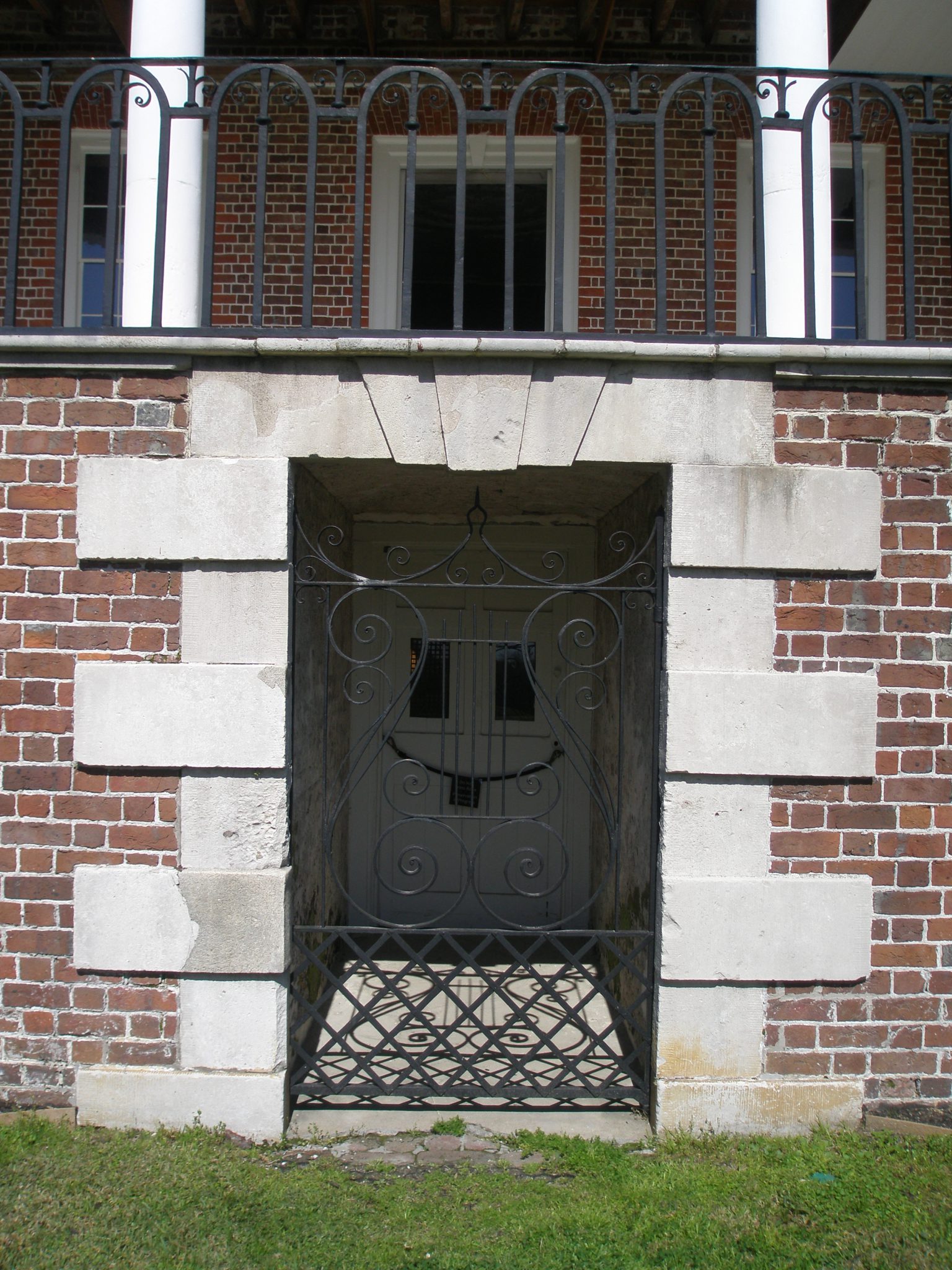
Wrought Iron Gate to the Raised Basement. Raised Basements were ground-floor working spaces, and also contained rooms for the storage of wine, and root vegetables. Additional rooms were set aside for warming food (which was always cooked in a separate building), and for the Plantation offices.
Since I’m a firm believer in never re-inventing wheels, I’ll defer now to the excellent little pamphlet about the property that was co-published by Drayton Hall and the National Trust for Historic Preservation. Here’s their introduction:
“Drayton Hall is a National Historic Landmark and a historic site of the National Trust for Historic Preservation. Accredited by the American Association of Museums, it is….one of just a handful of pre-Revolutionary houses in close-to-original condition in the United States. The mission of Drayton Hall is to preserve and interpret Drayton Hall and its environs in order to educate the public and inspire people to embrace historic preservation.”
Here now, images from the first pages the pamphlet:
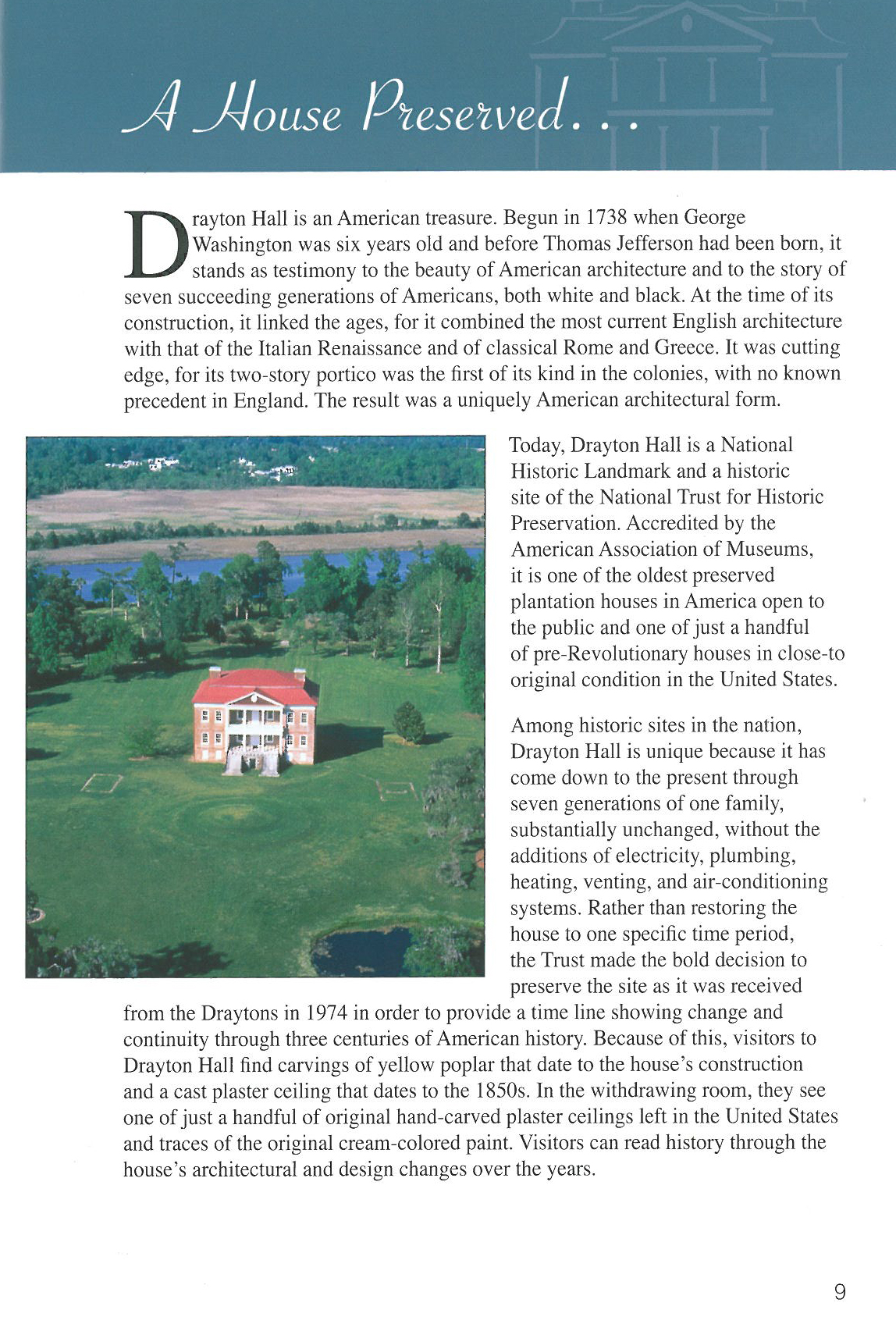
Introduction to the House. Image courtesy of Drayton Hall & The National Trust for Historic Preservation.
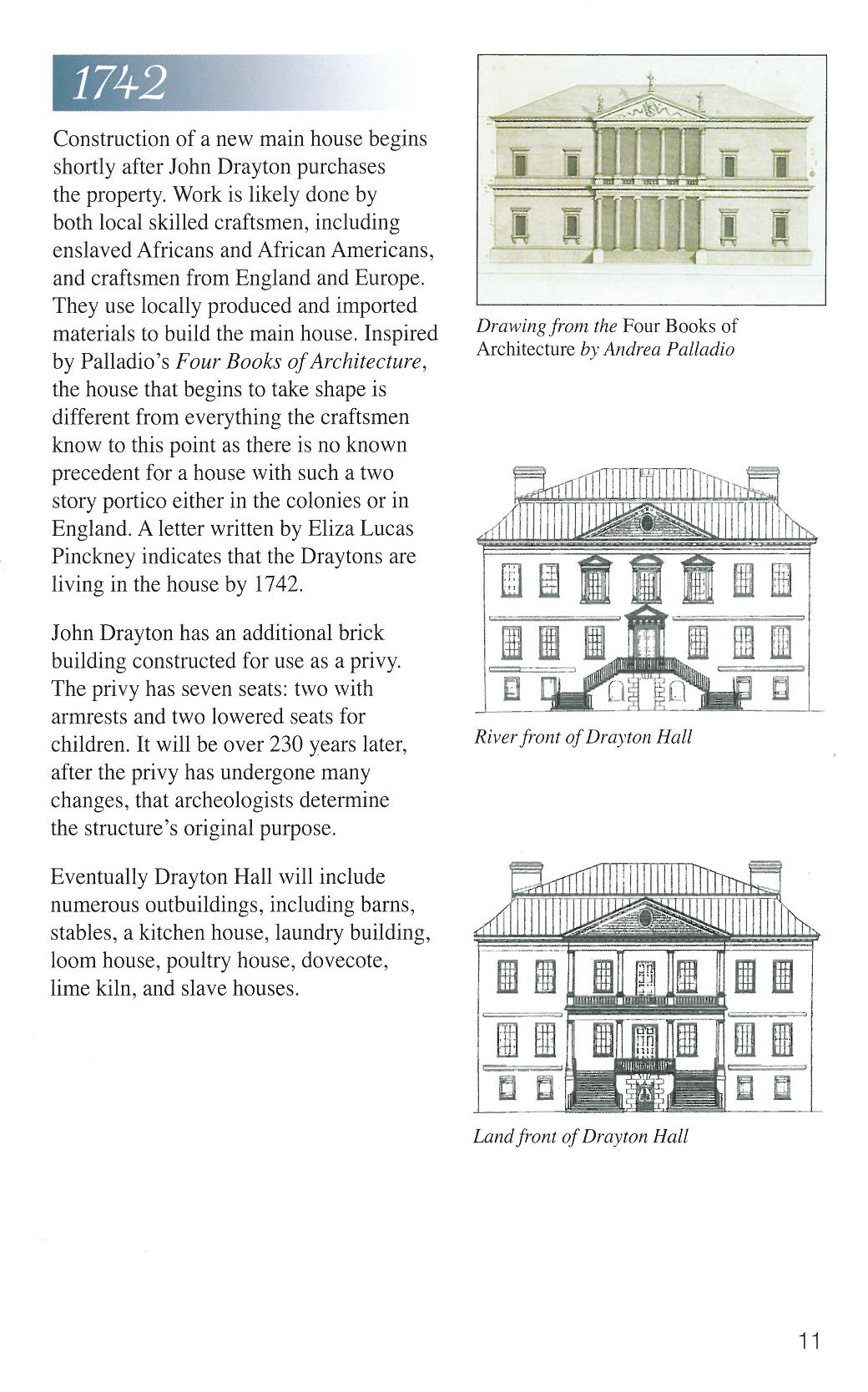
Palladian Inspiration. Image courtesy of Drayton Hall & The National Trust for Historic Preservation.
Entering Drayton Hall is done via double stairways, which are on the inland side of the House. The first floor Portico, with Tuscan columns of Portland limestone and a floor paved in a pattern of sandstone and limestone tiles, offers the best view back toward the long, entry drive.
The Double-Height Stair Hall…
…feeds into the Great Hall, which served as the primary entertaining and welcoming space.
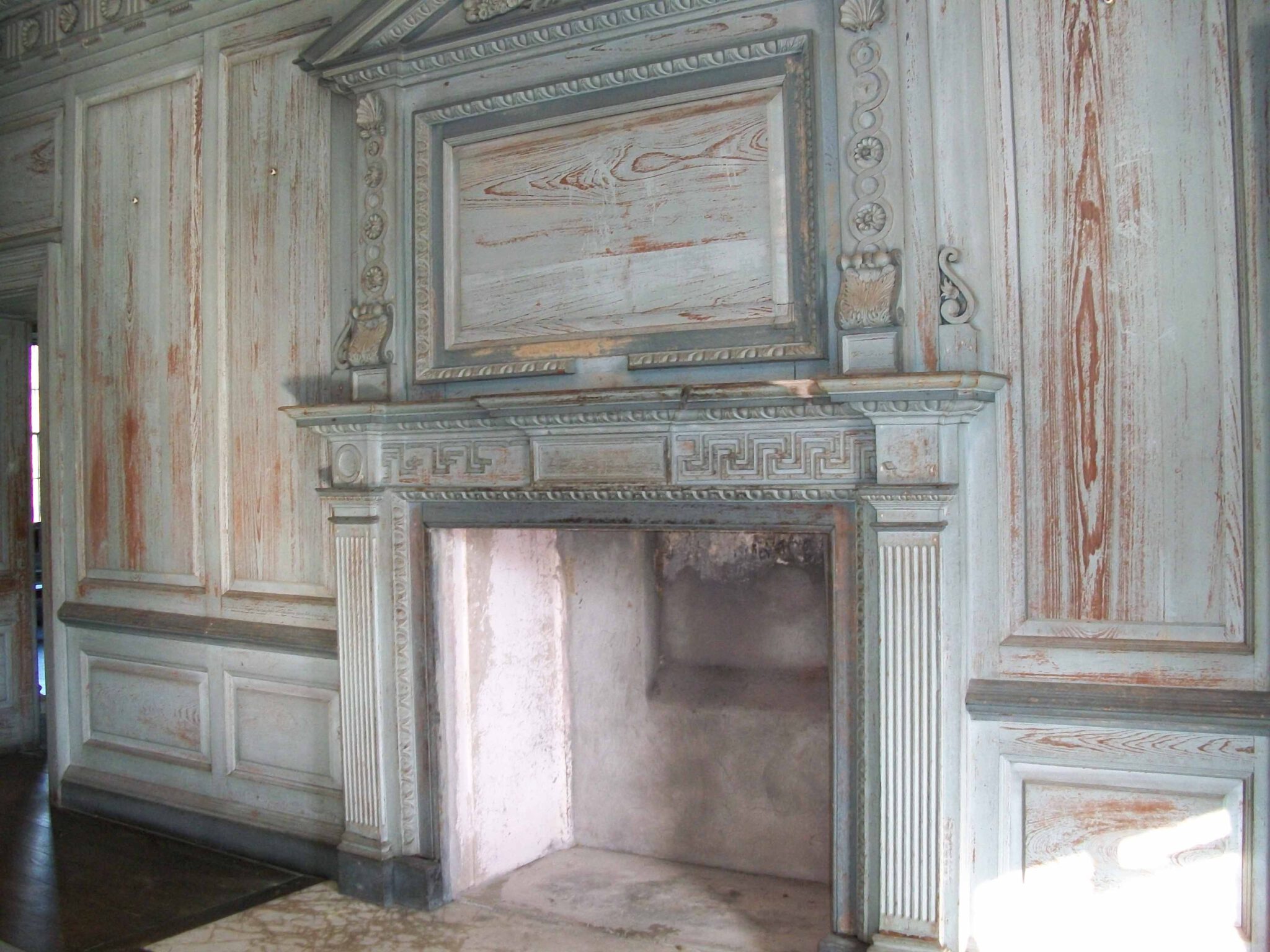
The paint on the walls of The Great Hall’s paneling is being preserved with cutting-edge techniques. Image courtesy of South Carolina Pioneers.
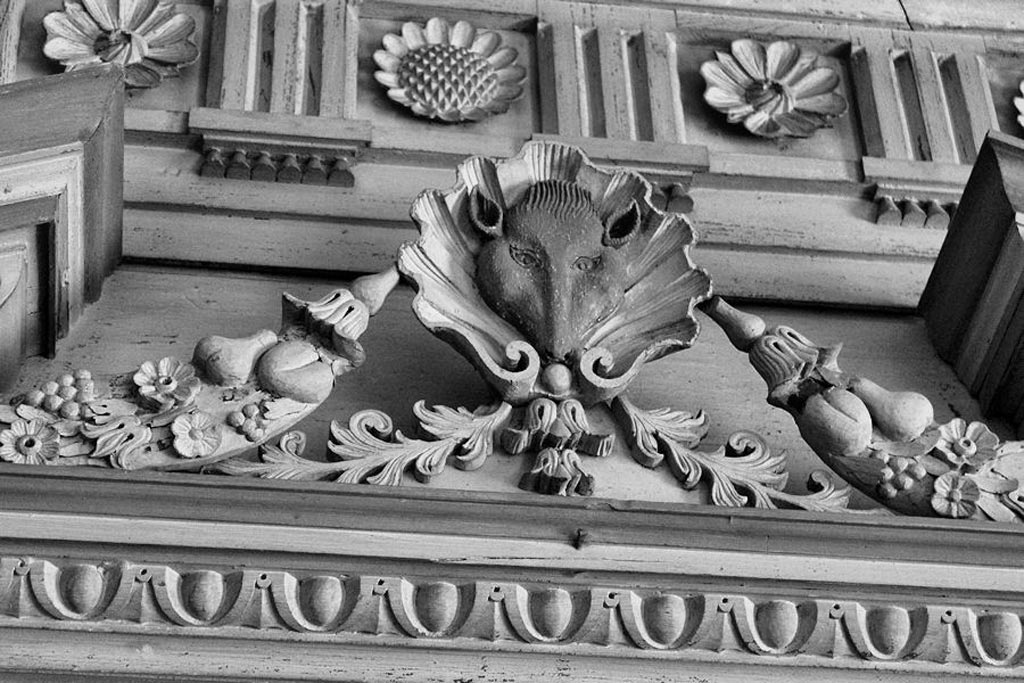
The Fox Head Cartouche caps the overmantle in the Great Hall. Image courtesy of Brandon Coffey & South Carolina Plantations.
The Withdrawing Room, off of the Great Hall, was gussied up in the mid 19th century with an ornate, cast plaster ceiling.
We walked outside, around the House, toward the Ashley River. The closer we got to the water, the colder and more blustery the winds became. By the time we reached water’s edge, our hair and coat-tails were flying. But the gusts snapped us out of our afternoon stupors, and gave us just enough oomph for one last Hike of the Day.
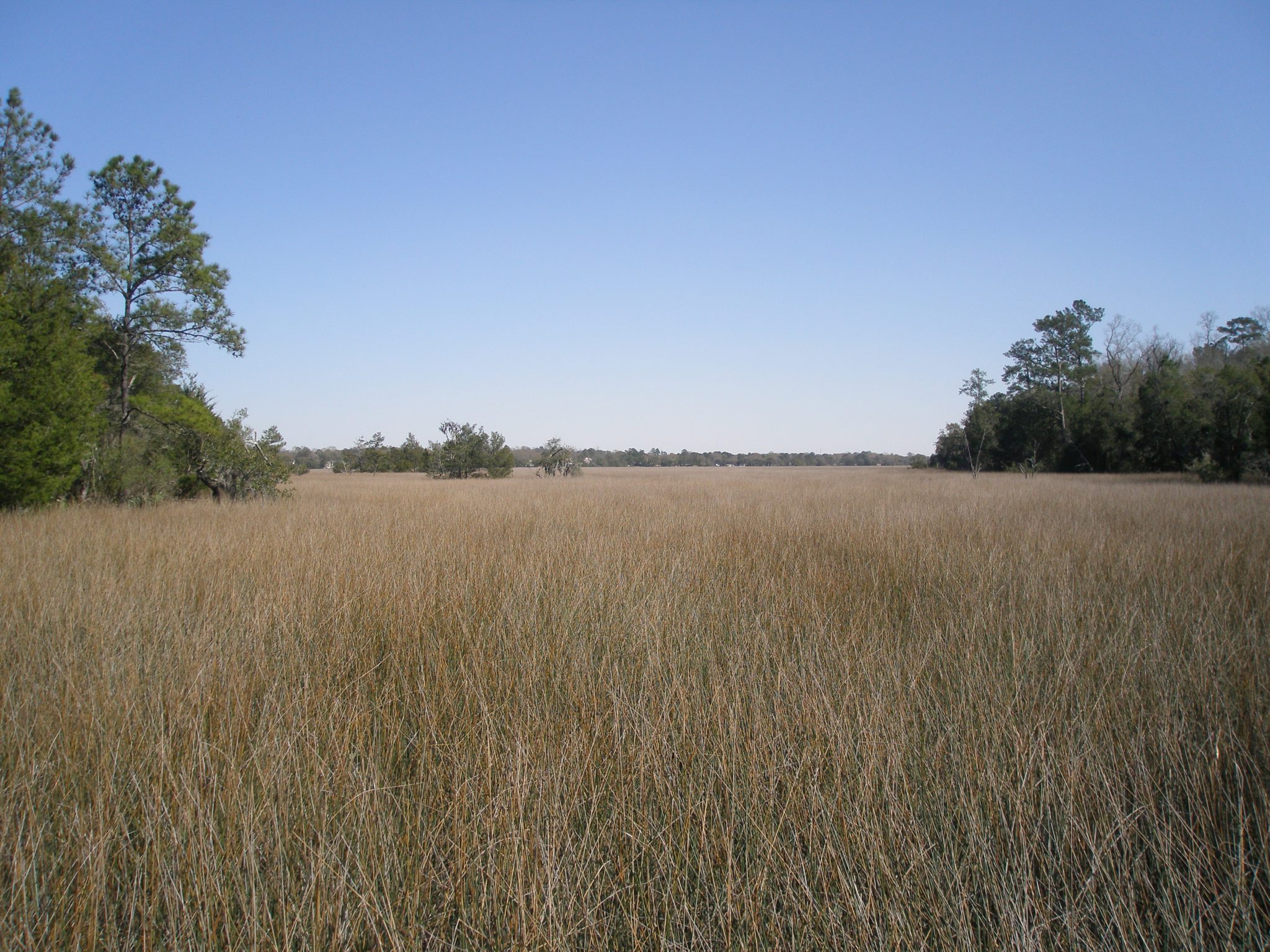
View from the Boardwalk in the Marsh Walk. So this is what it’s like to navigate through a Sea of Grass!
That the House at Drayton Hall still stands is miraculous. But miracles alone didn’t preserve this Georgian-Palladian jewel. As historian Michael Trouche reminds us in his book CHARLESTON:YESTERDAY & TODAY, when “federal troops burned a swath across South Carolina in 1865, they kept their distance from Dr. John Drayton’s plantation house, which featured yellow quarantine flags (the flags typically indicated a cholera hospital). Clever ruse or no, the troops spared the 1738 masterpiece.” In Drayton Hall’s heyday, the grounds were said to be palatial, but, apart from a few horticultural clues (the eroded 18th century ha-ha ditch on the river-front lawn; a bedraggled boxwood allee on that same side of the House; and a mound on the house’s landward-side which may have been a flower garden), the appearance of those ornamental gardens can only be guessed at. After the Civil War, the gardens were put to more practical uses: fields for crops and corn were plowed, and during the 1880s the land was mined for phosphates. Ephemeral things, our gardens.
Drayton Hall. 3380 Ashley River Road. Charleston, SC 29414
Phone# 843-769-2600
Website: www.draytonhall.org
As I travel the World in search of inspiring gardens, I constantly reexamine my motives for this quest. After entirely too much thought on the matter, I’ve finally decided…. it’s simple. Making ornamental gardens has forever been the activity of lunatics and optimists: it’s absurd for us to imagine that our created landscapes can endure for more than an eye-blink in Earth-Time. But as I venture out into all manner of gardens, I realize that by doing so, I’m getting to spend precious time with my fellows: those other irrational folks who—dead or alive— are similarly driven to keep tweaking and fiddling with Mother Nature’s already-perfect Works. We who garden know that the best we can do is to make our joyous little scratches upon the Earth. We’re stewards, nothing more. But stewardship makes possible such pleasurable immersions into Nature and into History as those which Donn and I enjoyed on that Wednesday in March. Without active fund-raising, professional oversight, and forward thinking, neither Boone Hall, nor Middleton Place, nor Magnolia Gardens nor Drayton Hall could welcome visitors…be they garden-design-fanatics, or city folks in need of restorative greenery. Gardens—however crazy the making of them can be— keep us sane.
That said, I’ve still got a backlog of articles in my writing-pipeline. Over the remainder of this year, you’ll see these Travel Diaries: The Gardens at Dumbarton Oaks, in Georgetown; Henry Morrison Flagler’s Museum, in Palm Beach (with a bit of the Loxahatchee National Wildlife Refuge in the Everglades thrown in for contrast); Fletcher Steele’s sublime Naumkeag, in Stockbridge; Edith Wharton’s The Mount, in Lenox; Lester Collins’ heavenly Innisfree, in Millbrook; the Rockefellers’ over-the-top Kykuit, in Pocantico Hills; All (well, as many as I can survive seeing during this coming August) of the major gardens and estates in Kent…aka “The Garden of England”; Secret gardens of the British Midlands; A close look at Blenheim Palace’s 2000 acres of parkland and formal gardens; The London buildings of Nicholas Hawksmoor…one of the world’s most-famous, and then most-forgotten Architects. My curiosity goes on and on…
Some Coming Attractions:
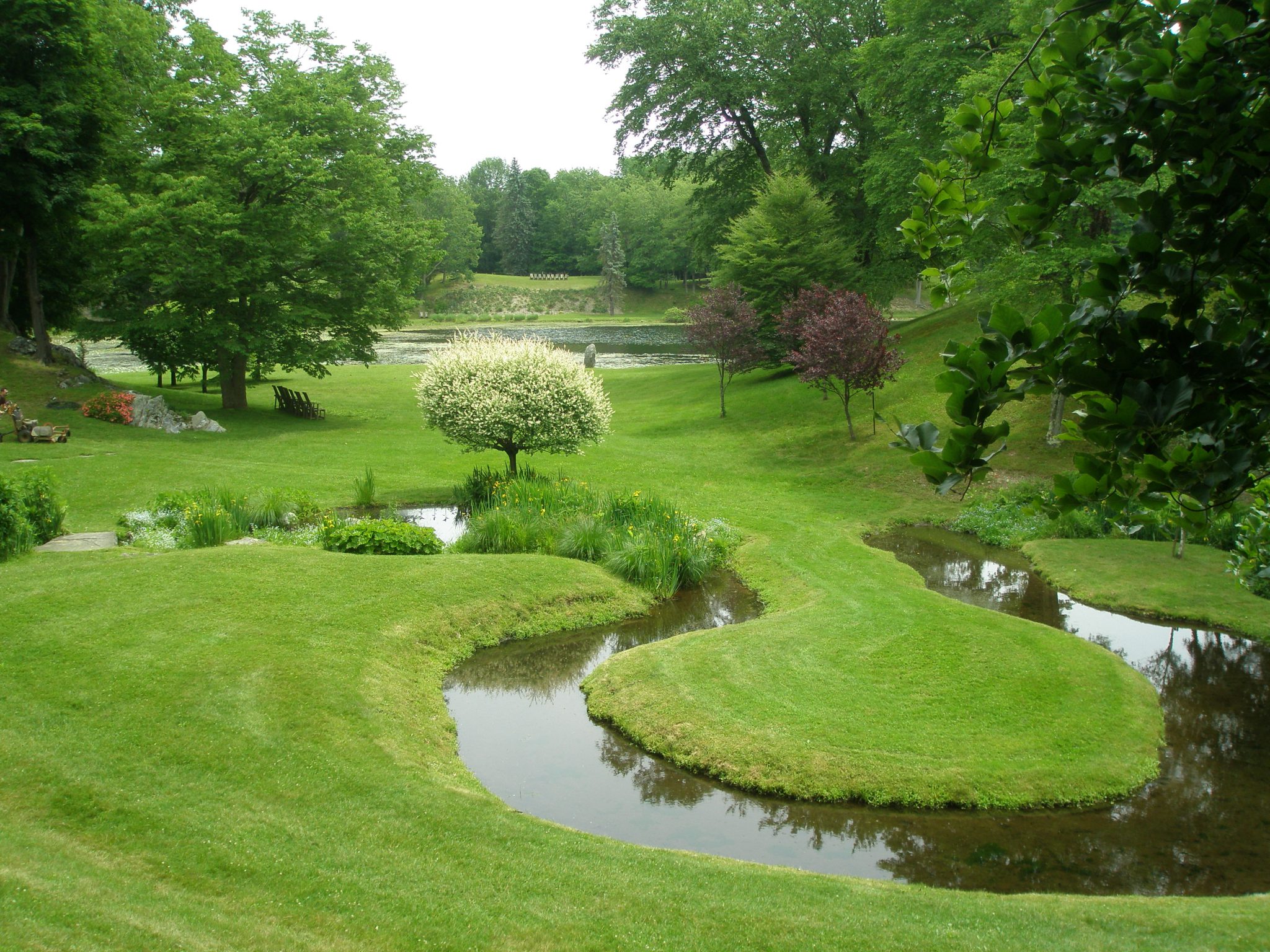
The Horseshoe-Shaped Stream, set amid one of Lester Collins’ “Cup Gardens” at Innisfree.
Millbrook, New York, on the morning of June 6, 2013.
Copyright 2013. Nan Quick—Nan Quick’s Diaries for Armchair Travelers.
Unauthorized use and/or duplication of this material without express &
written permission from Nan Quick is strictly prohibited.

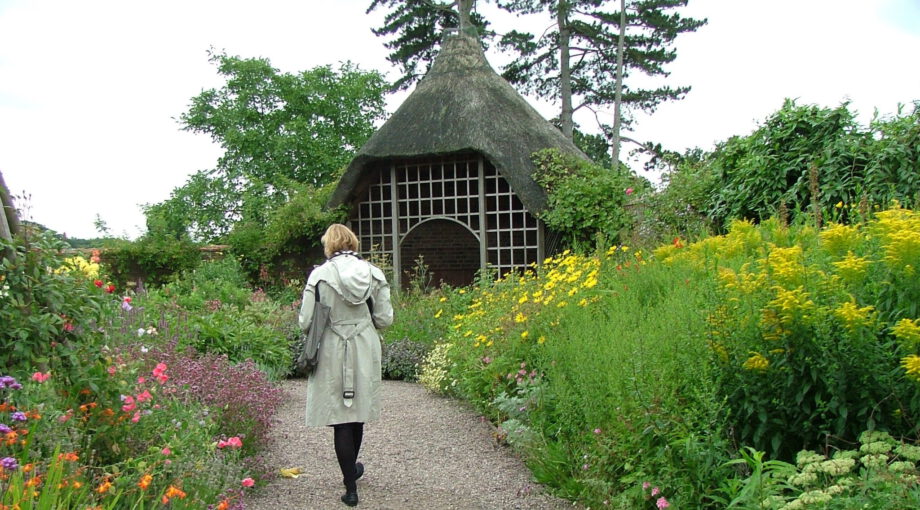

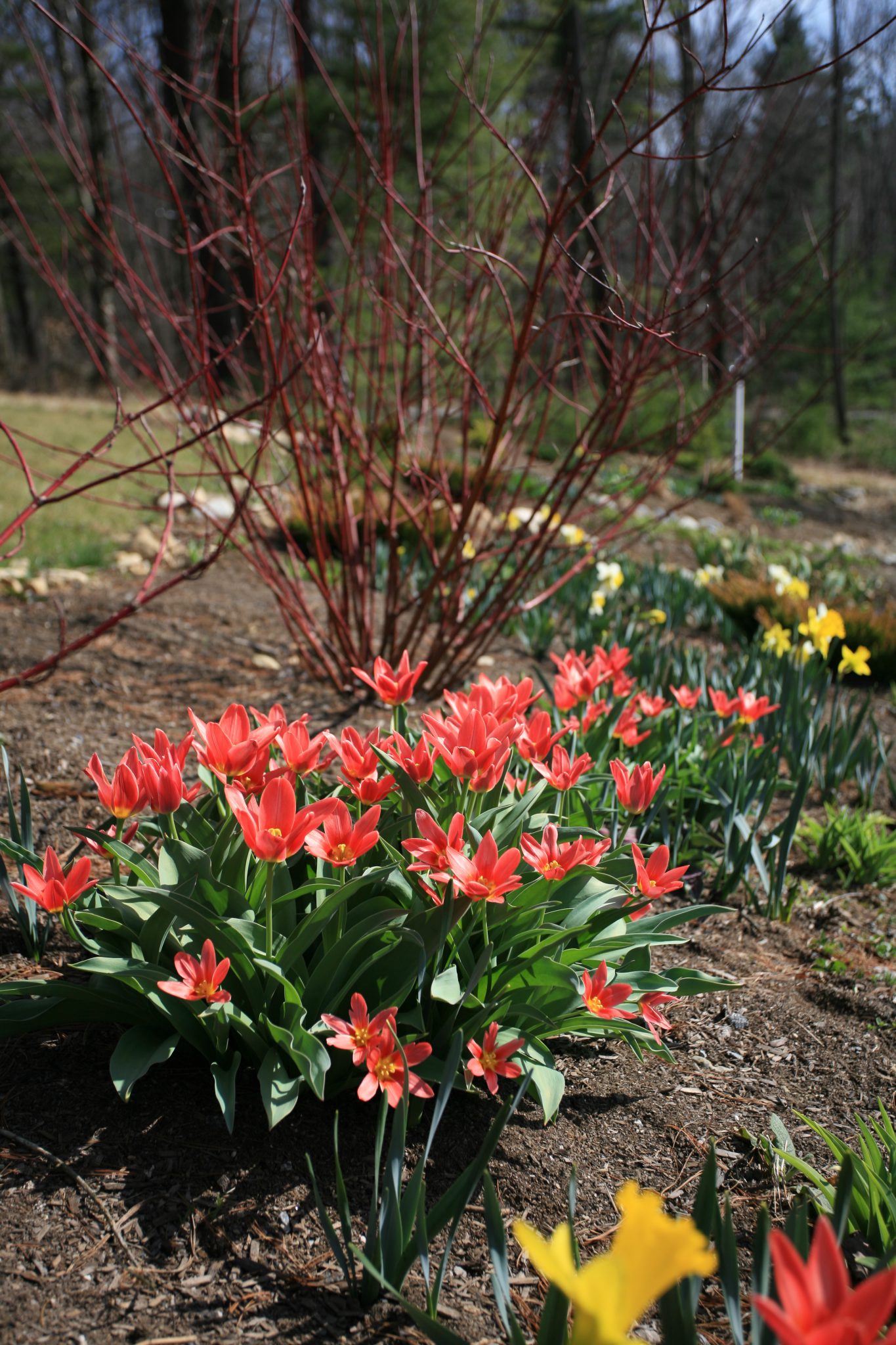
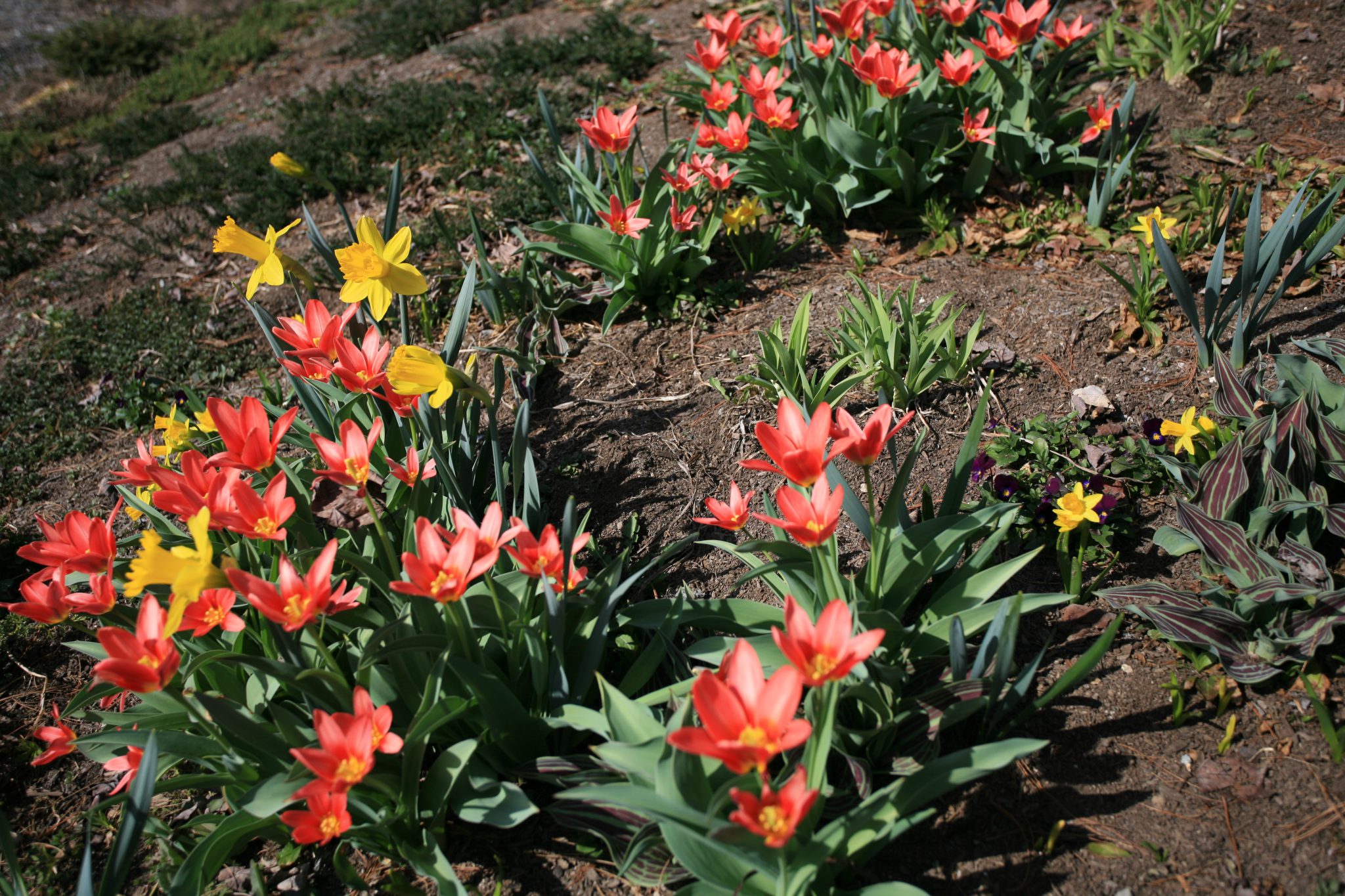
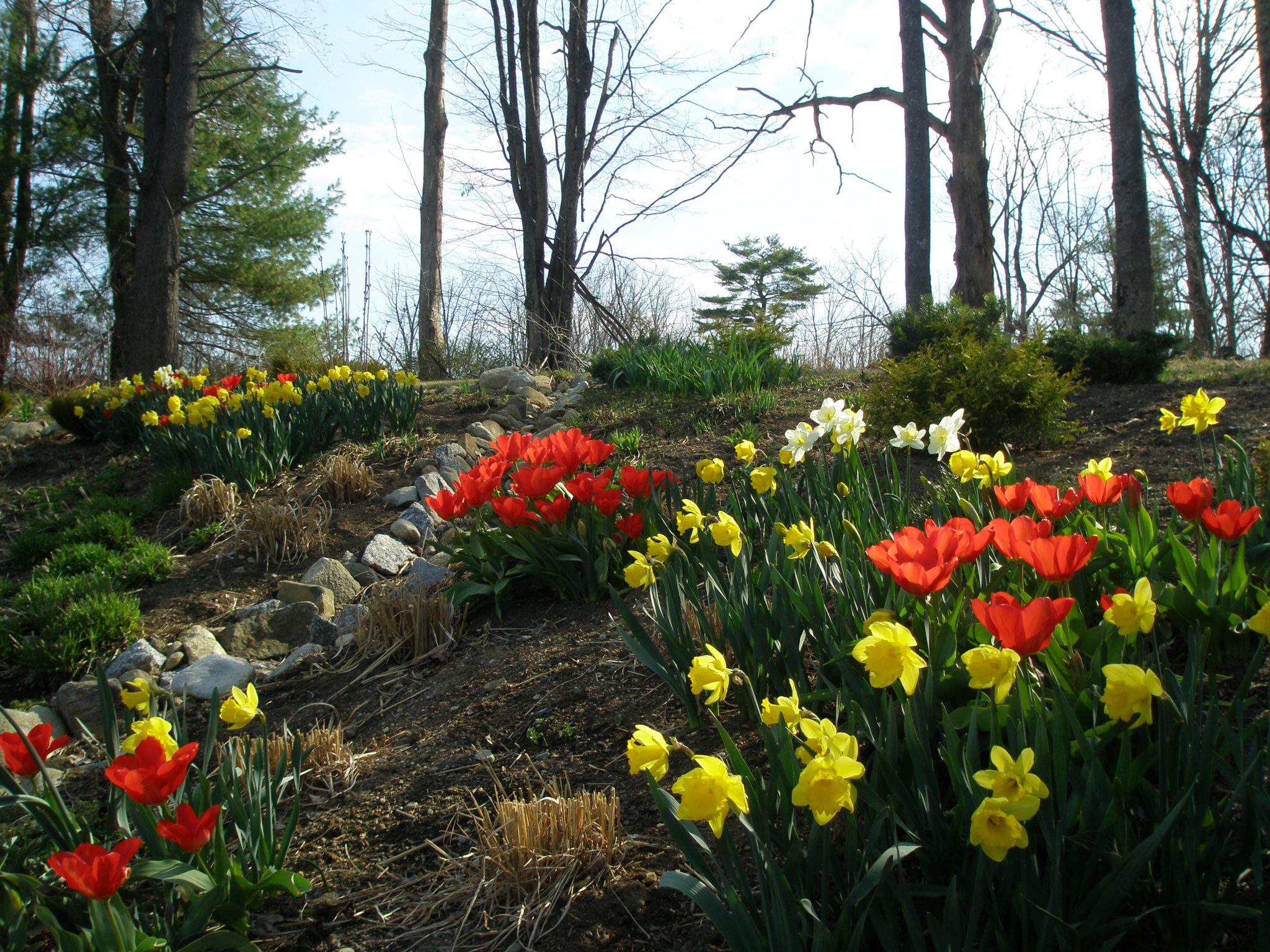
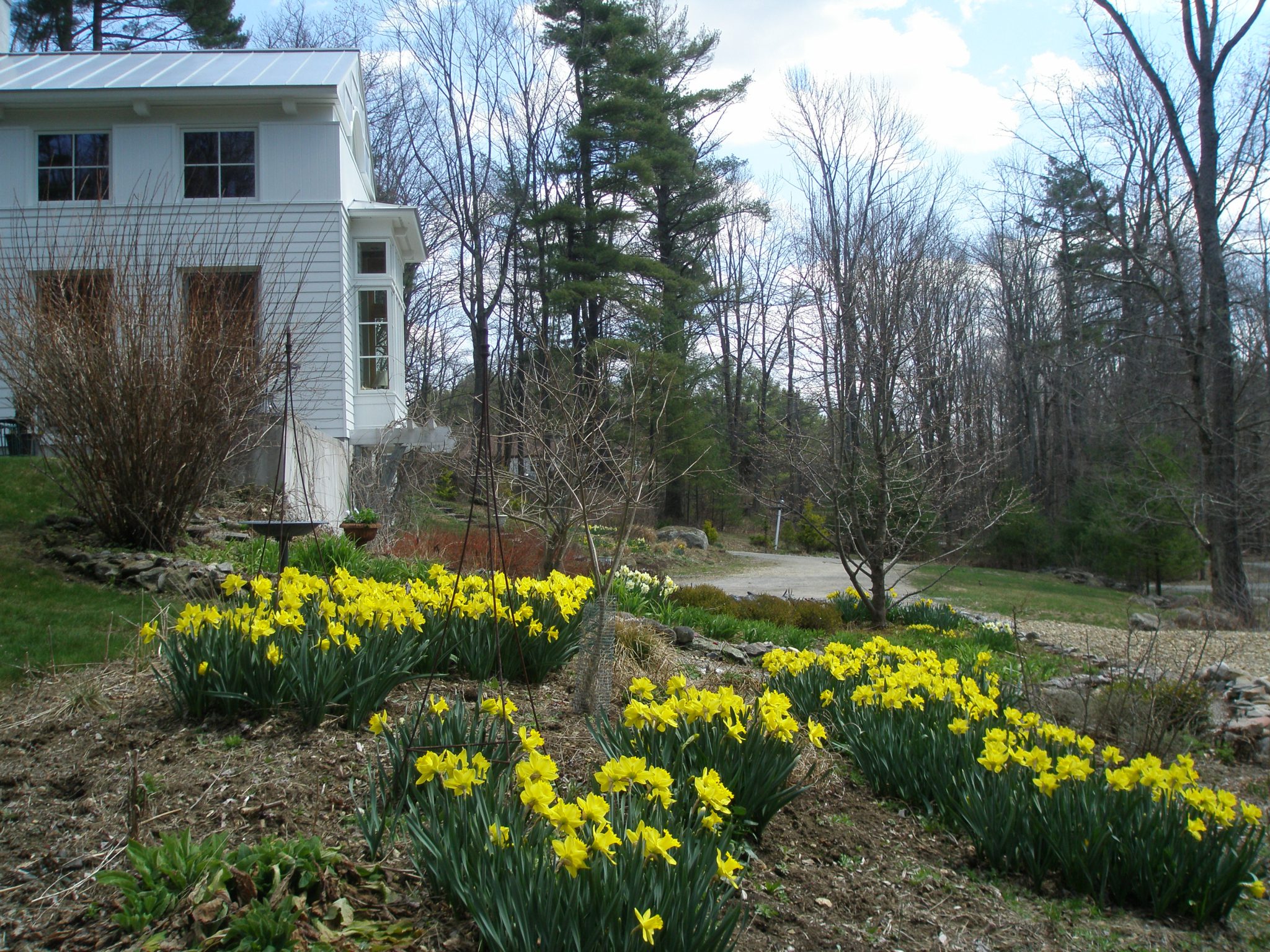
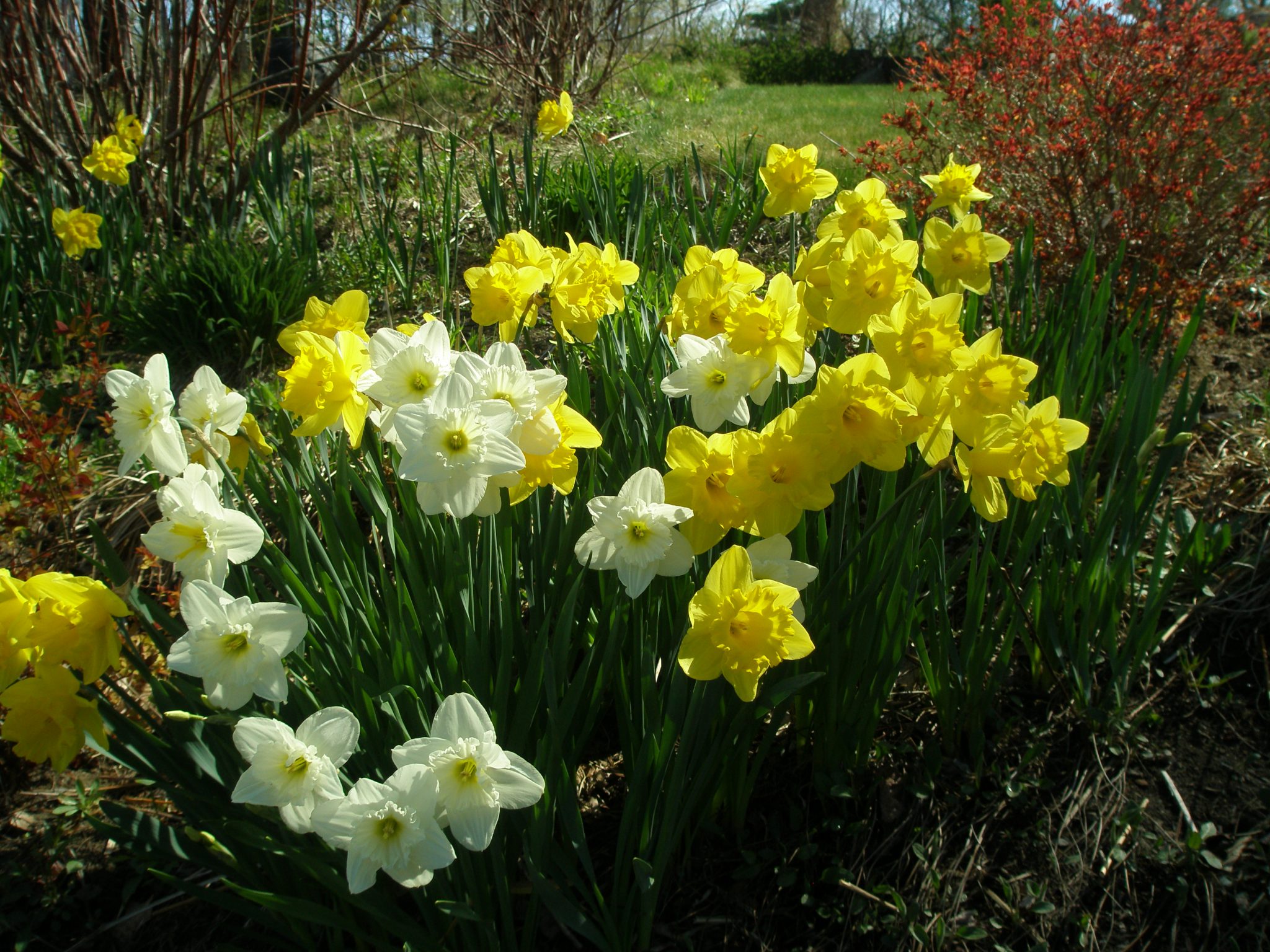
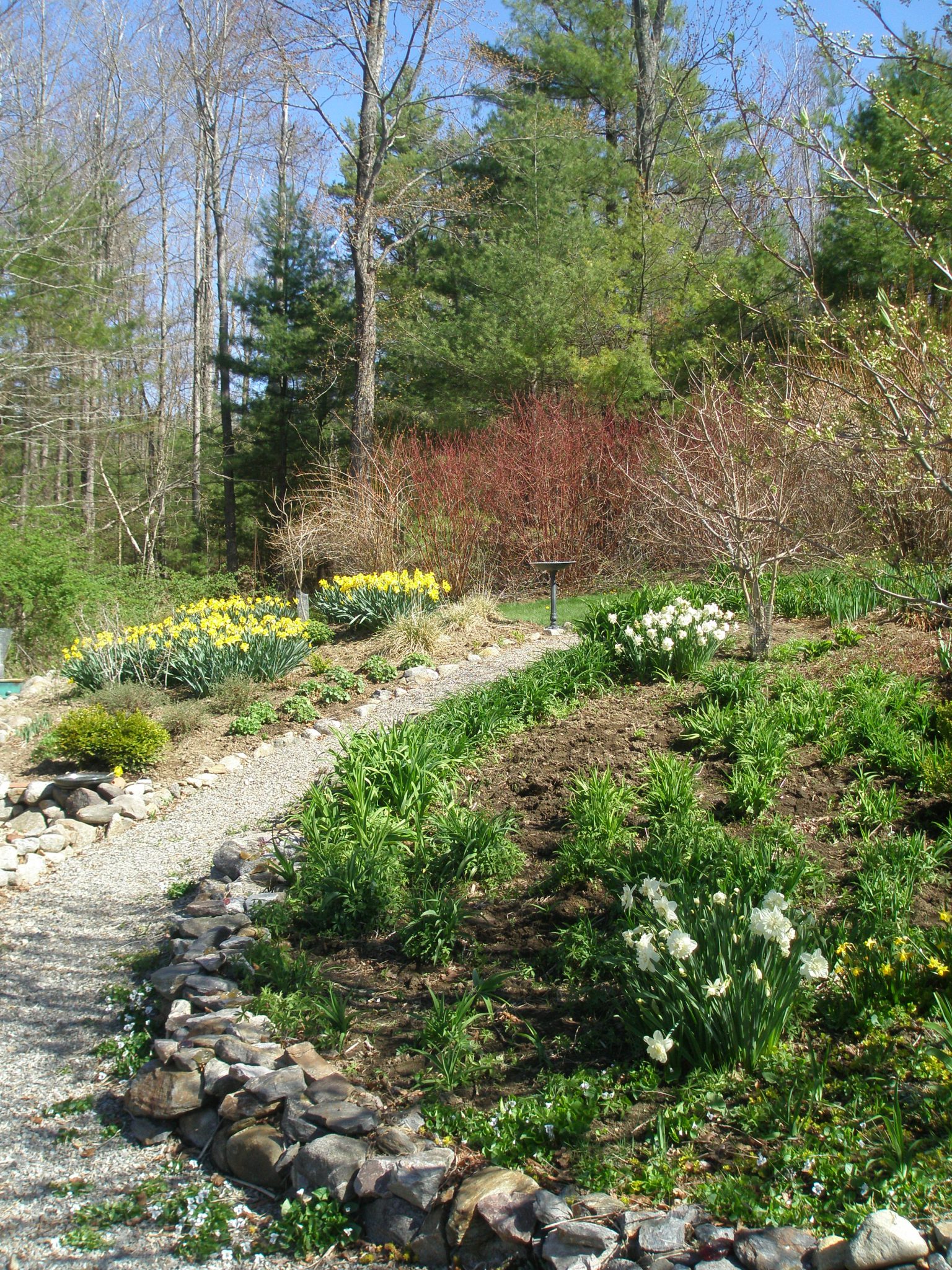
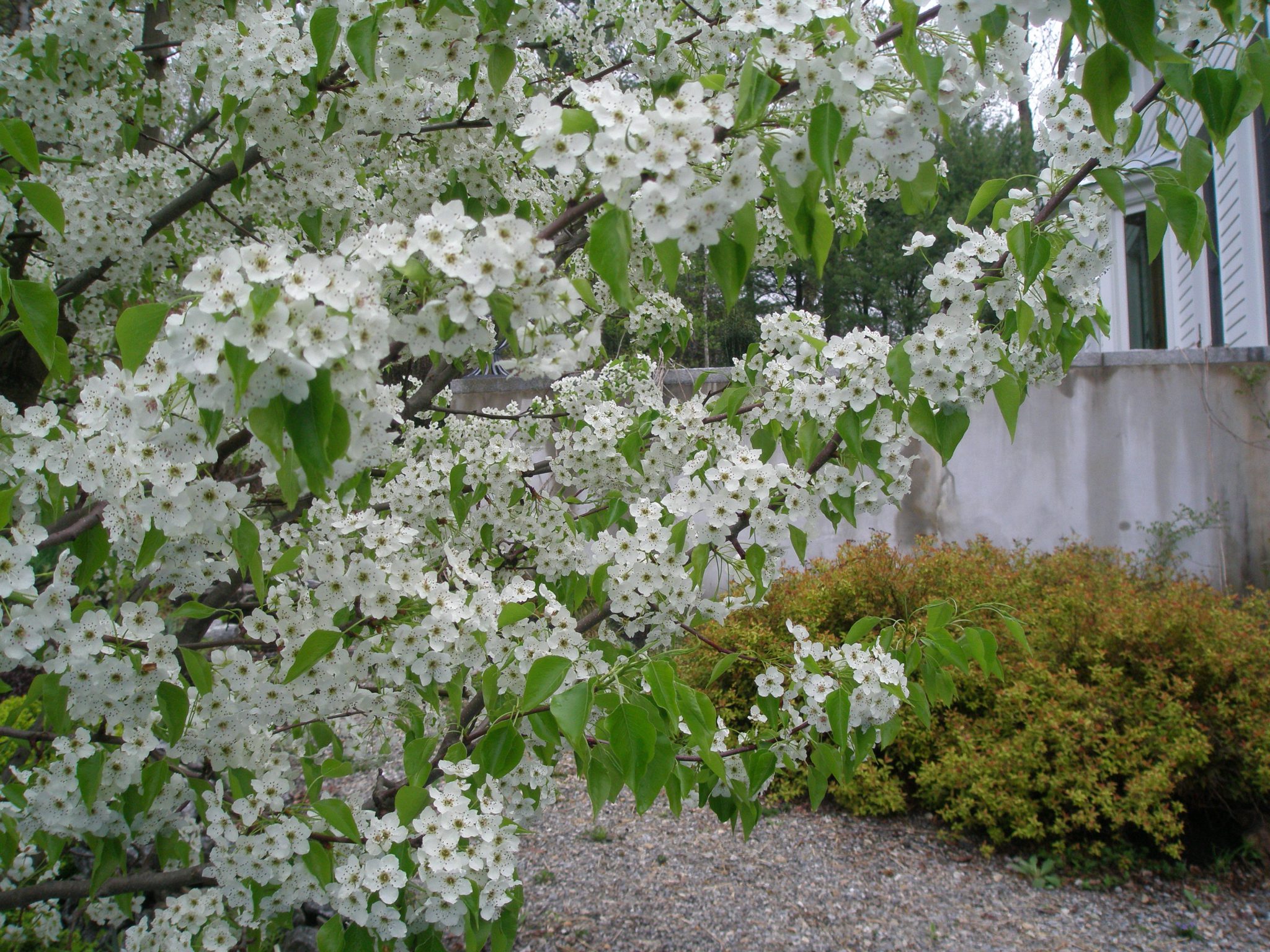
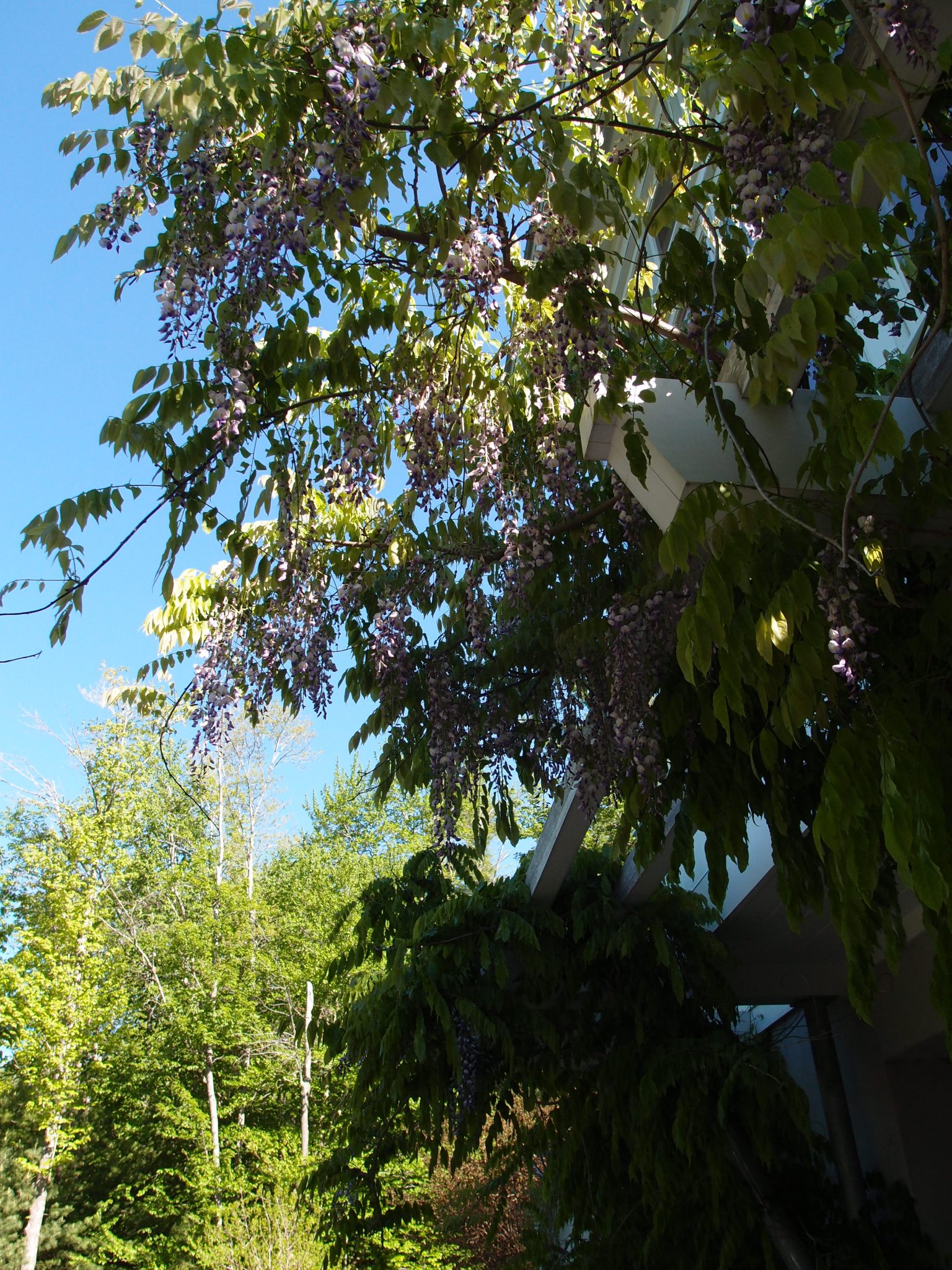

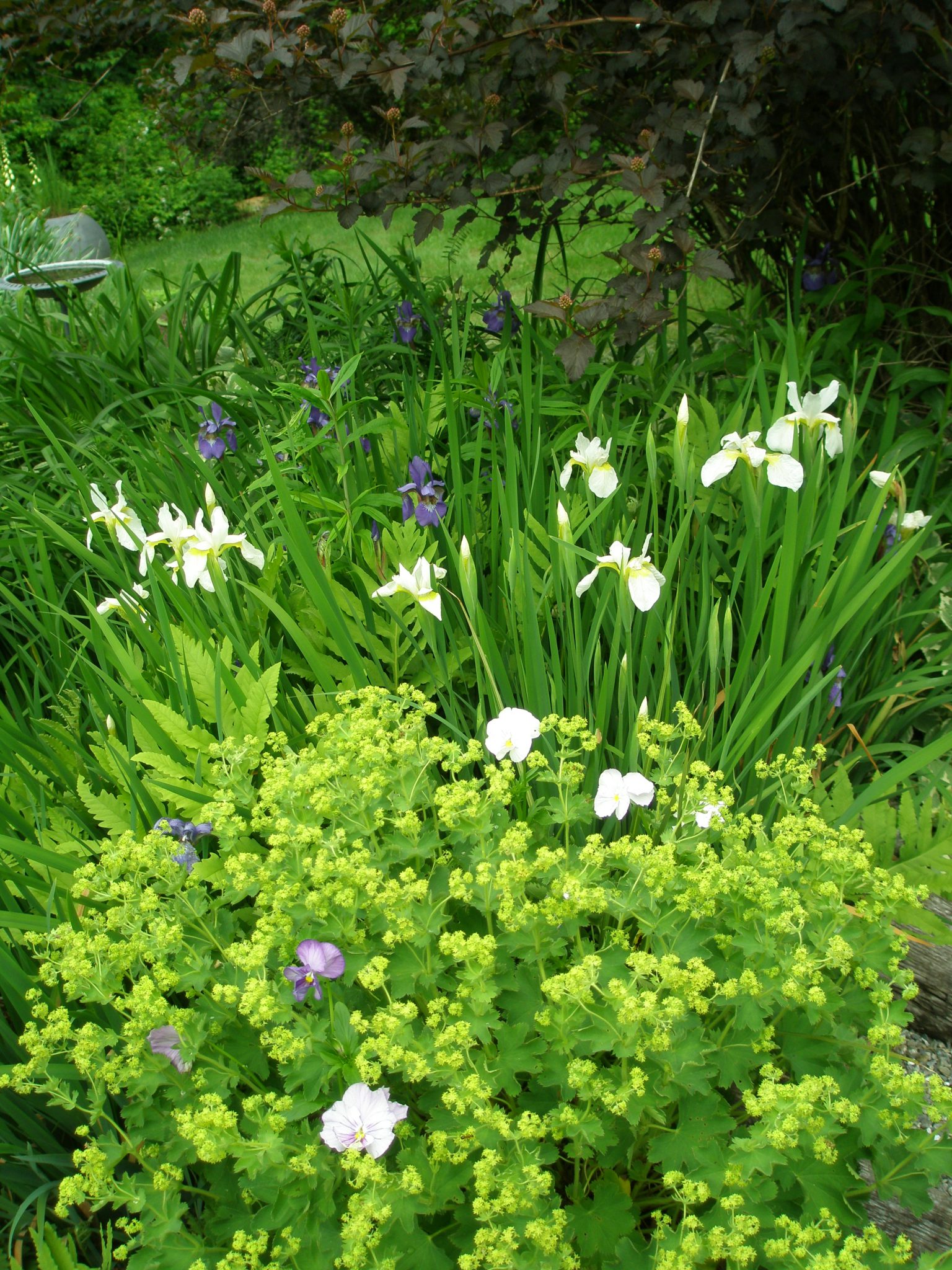
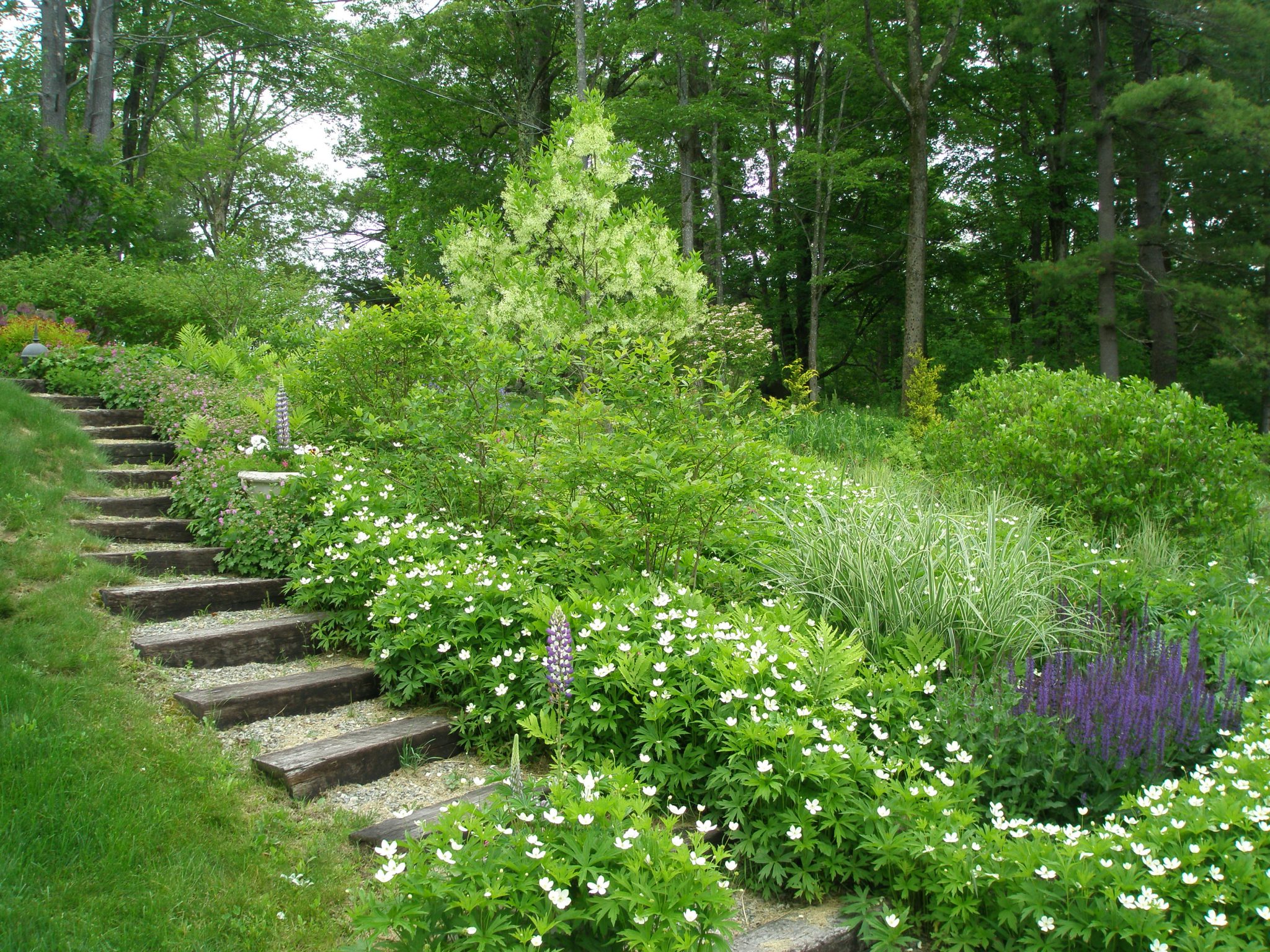
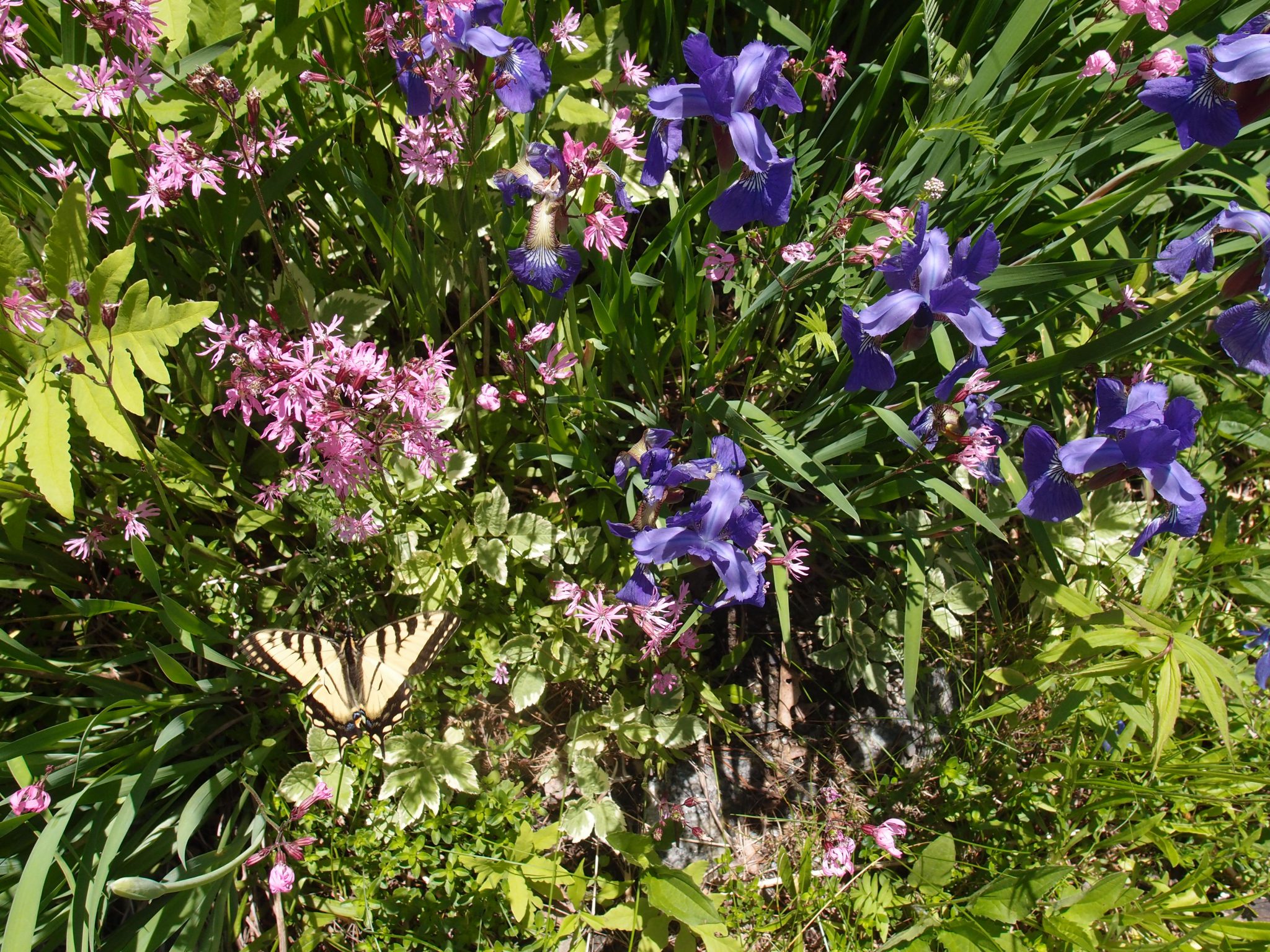
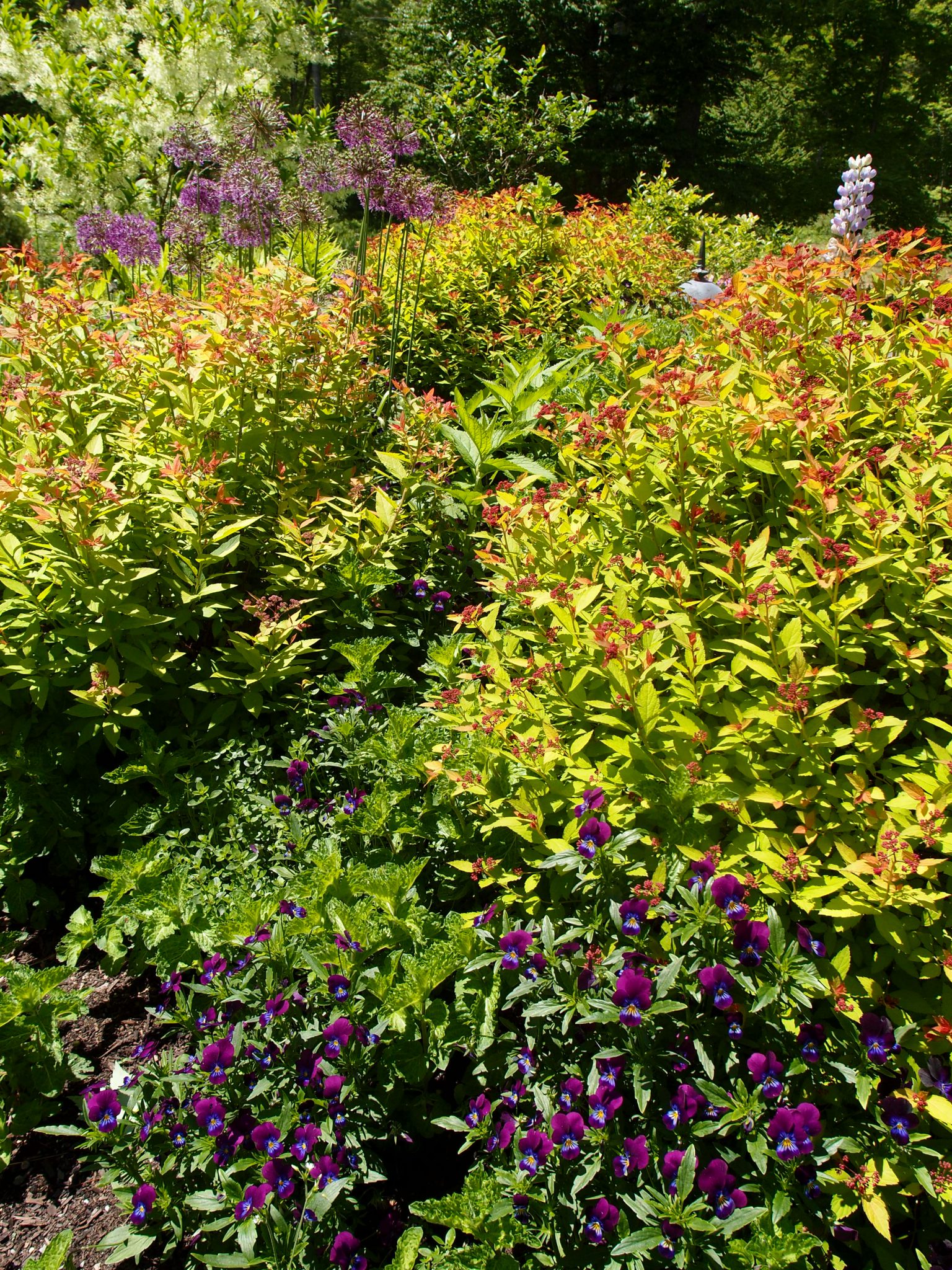
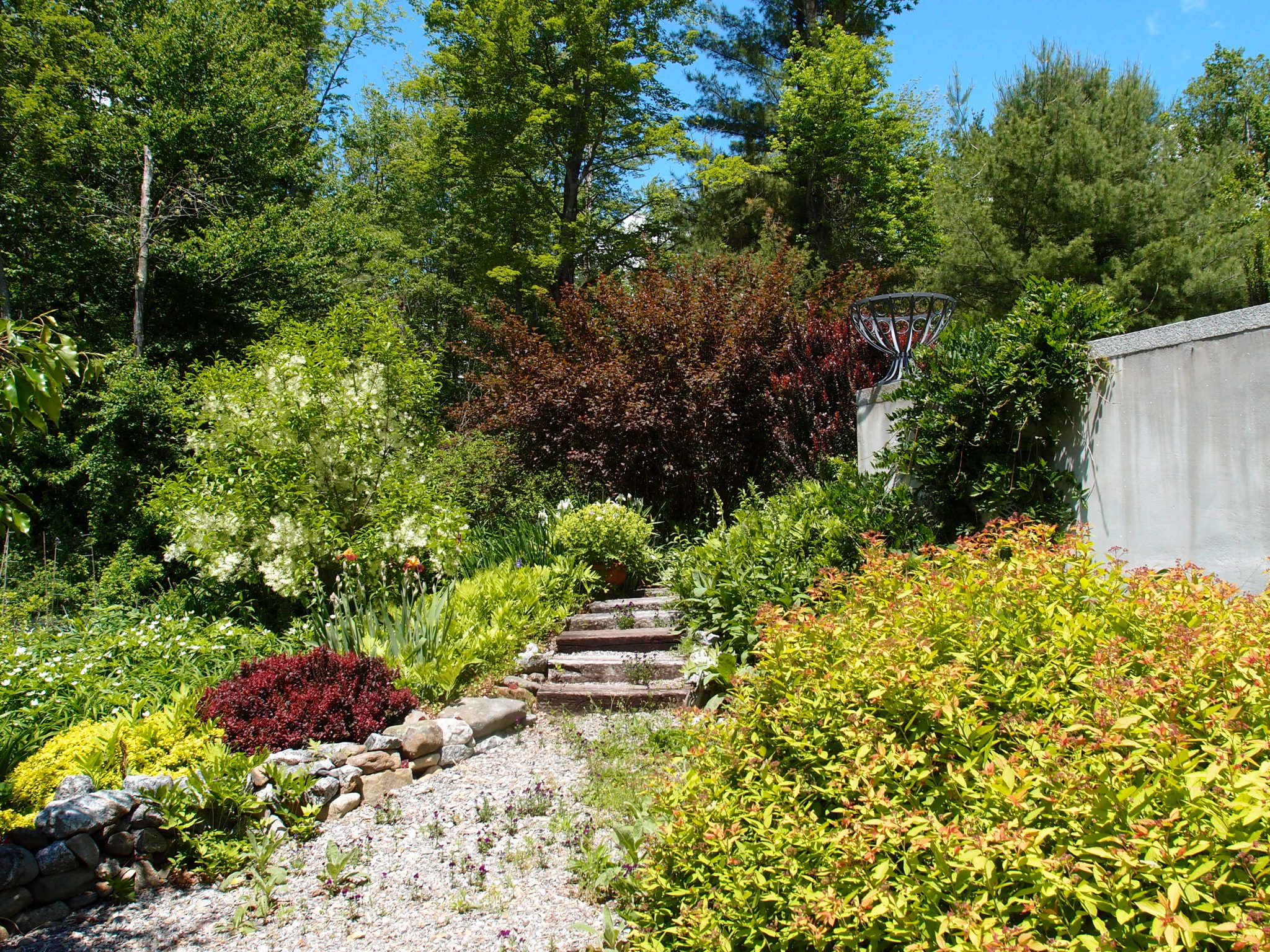
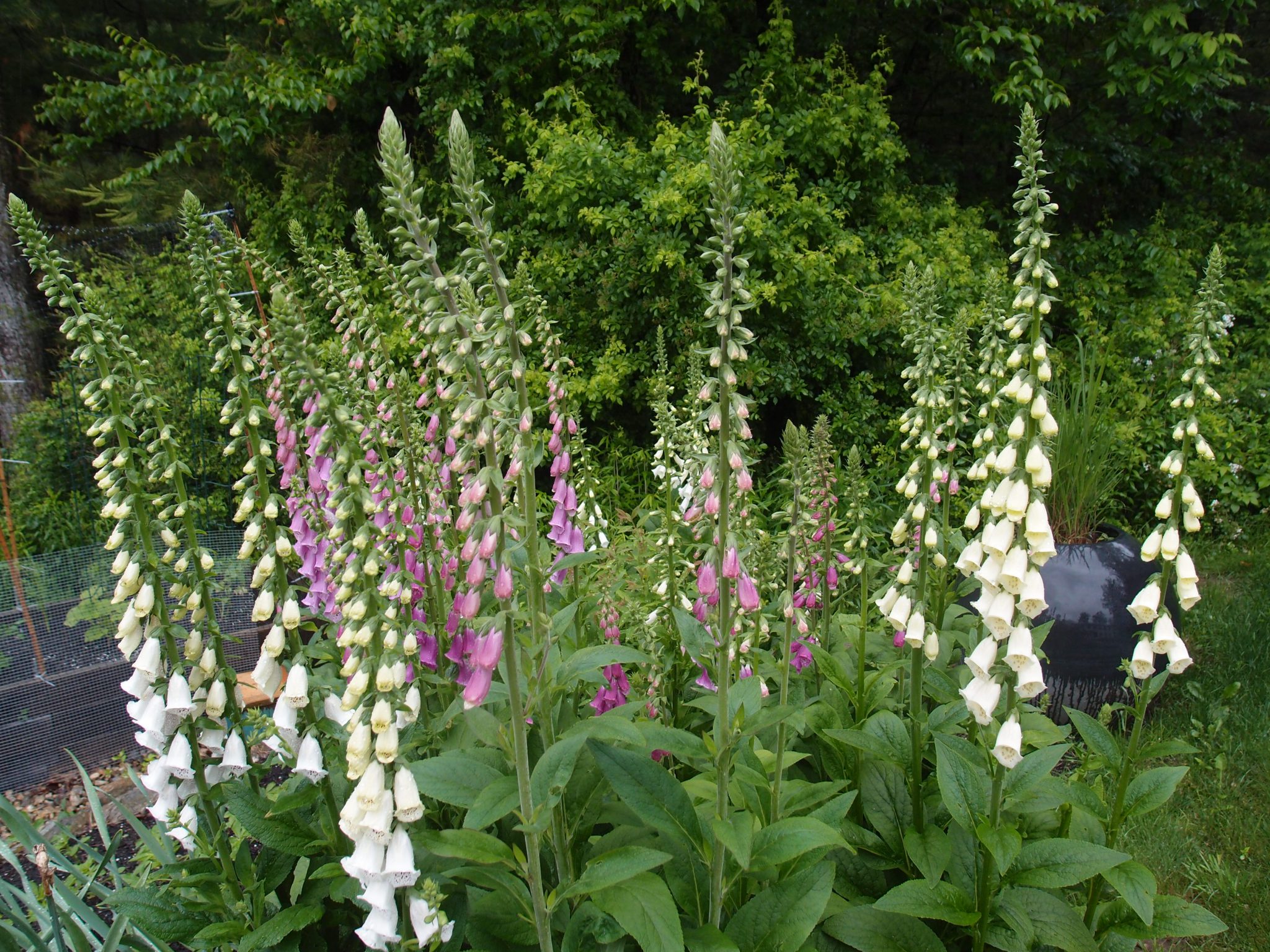
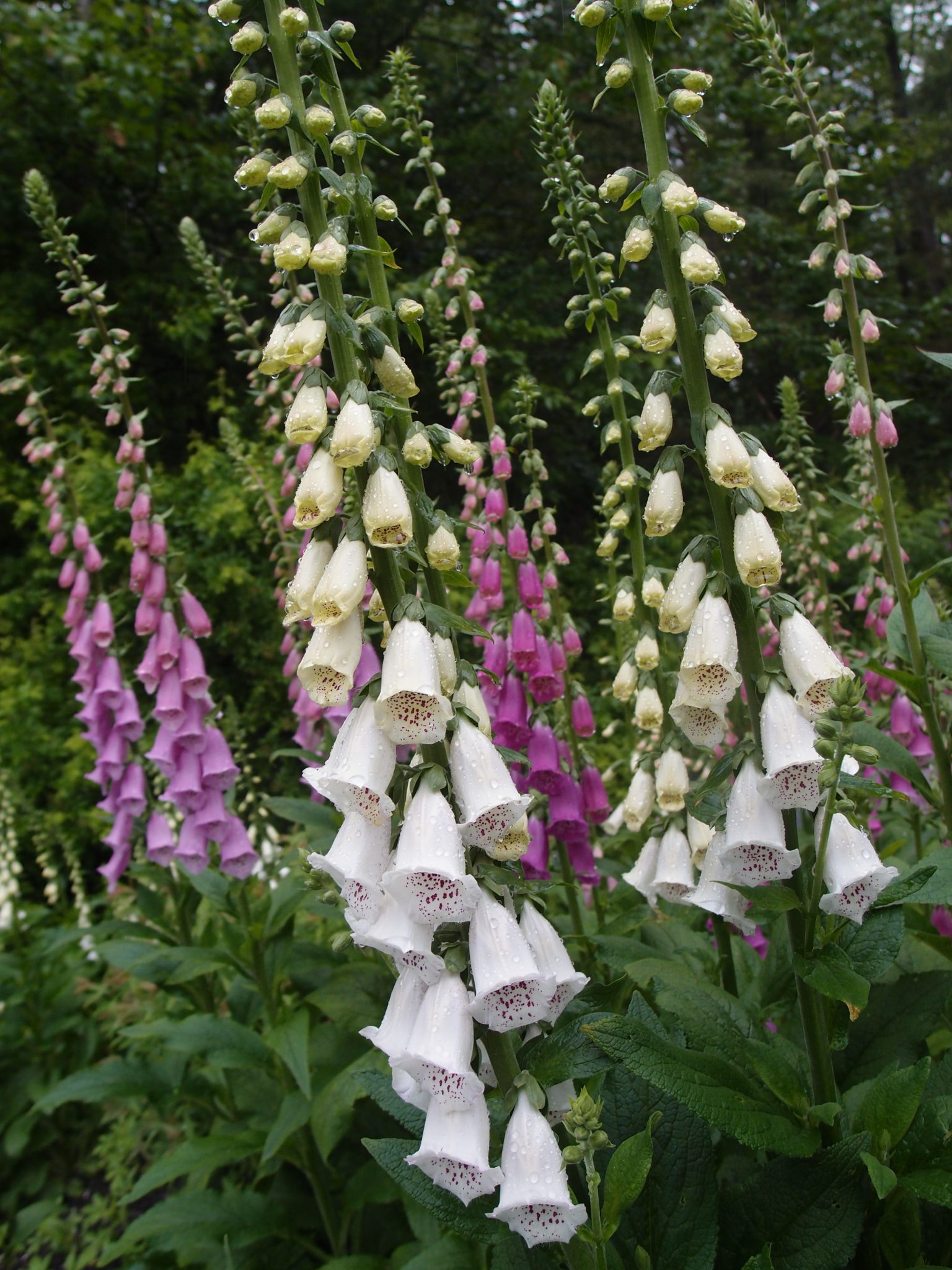
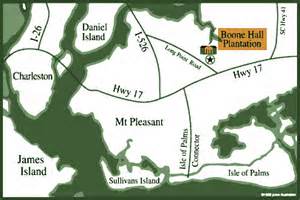

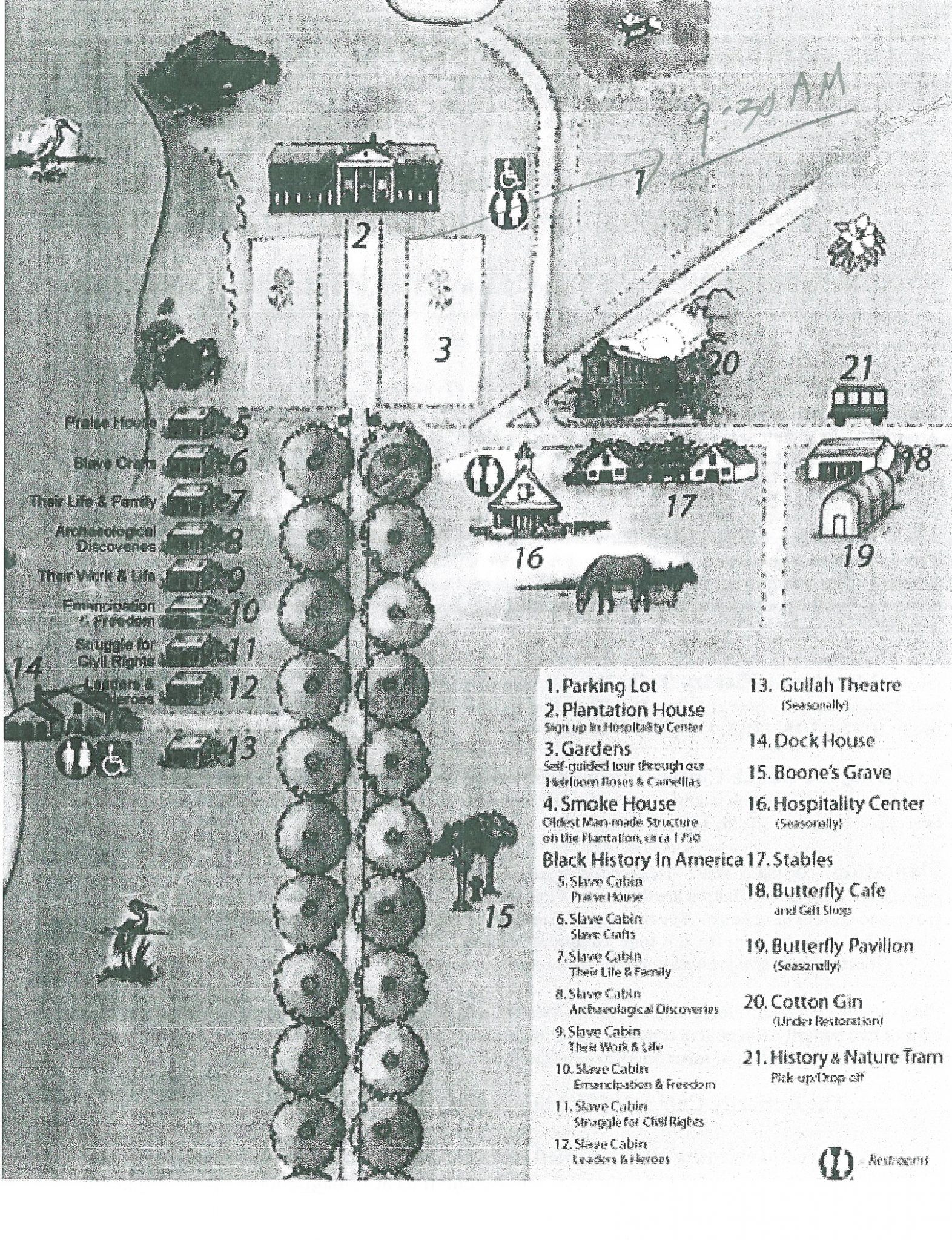
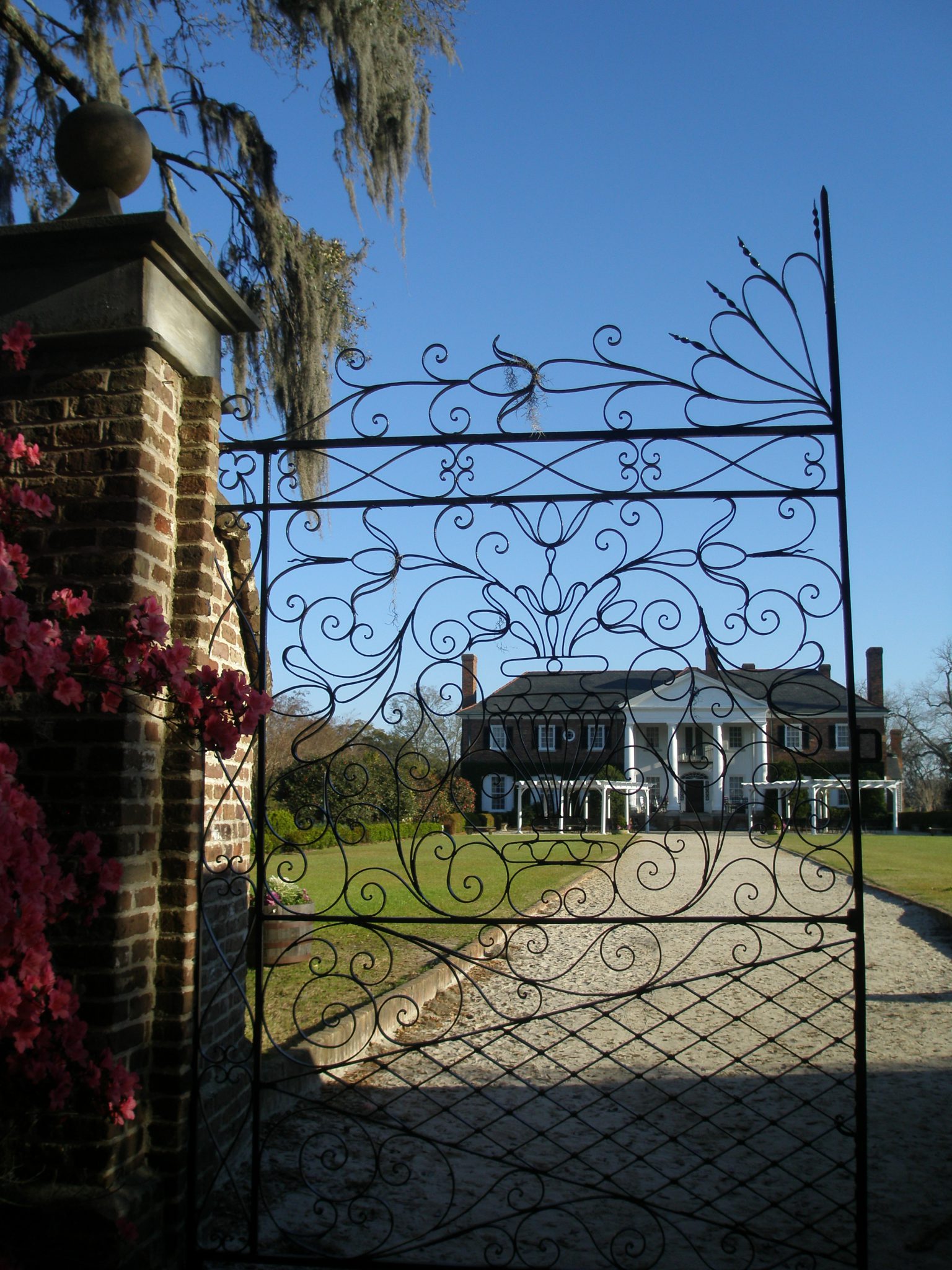
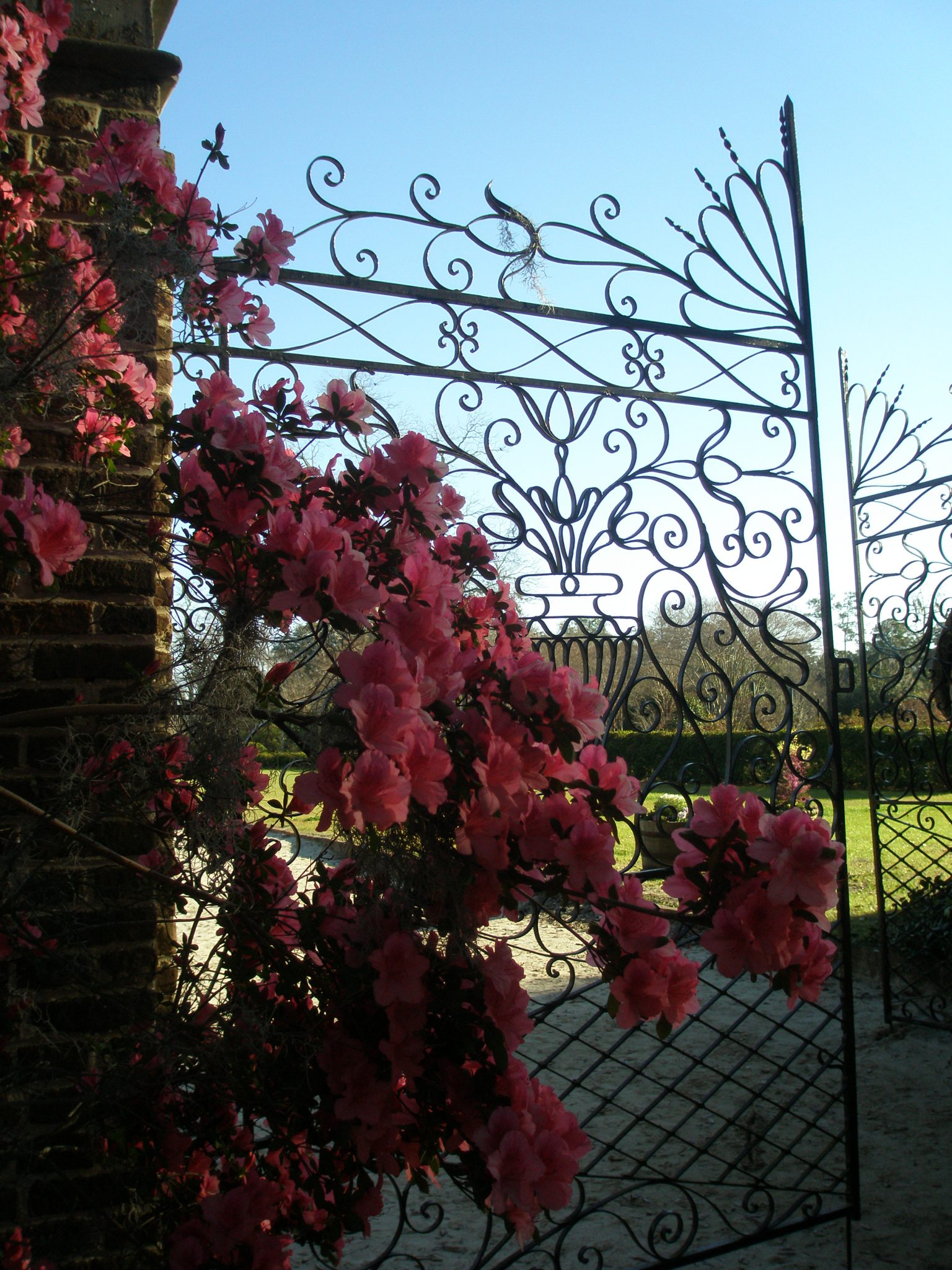
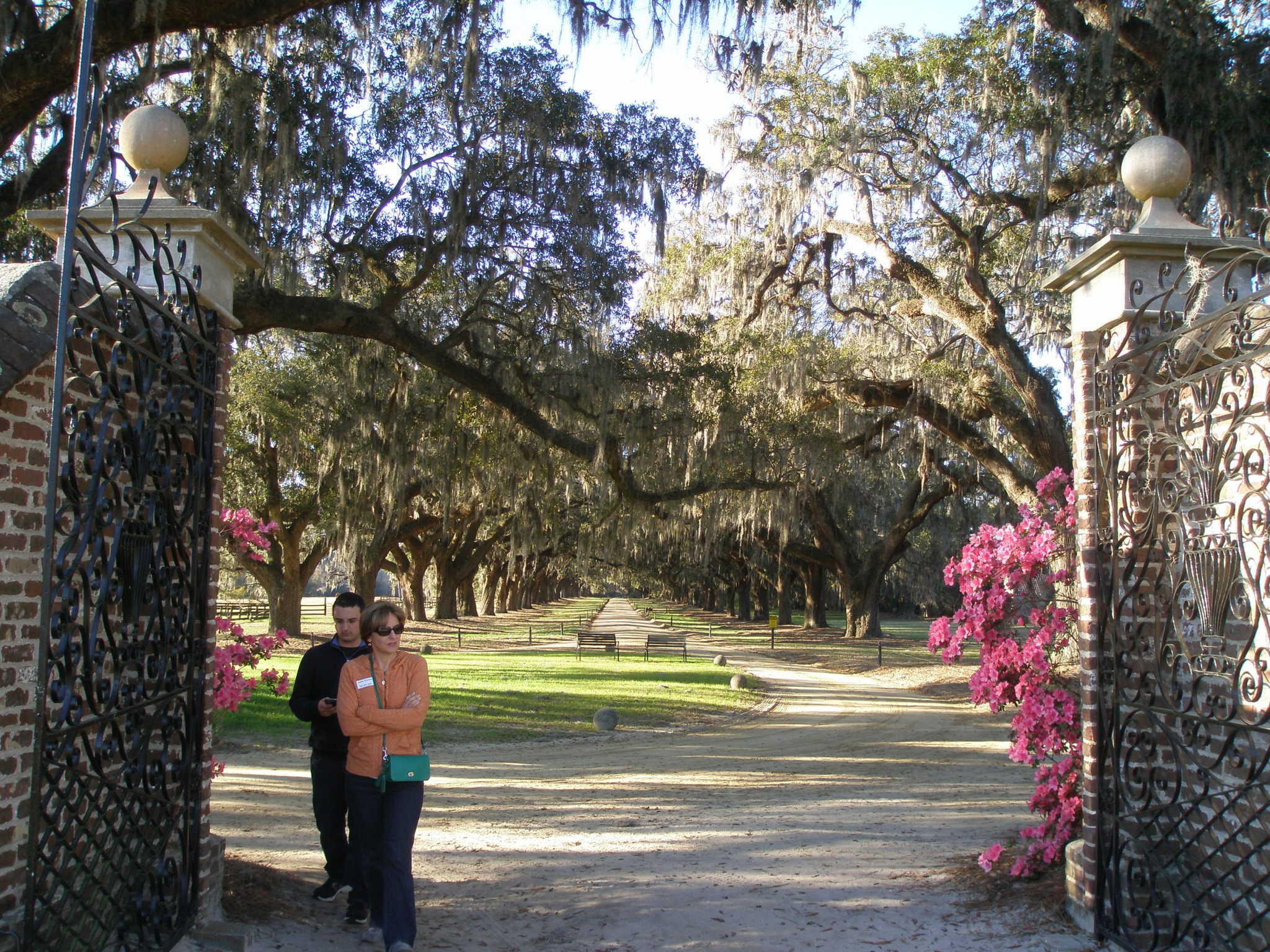
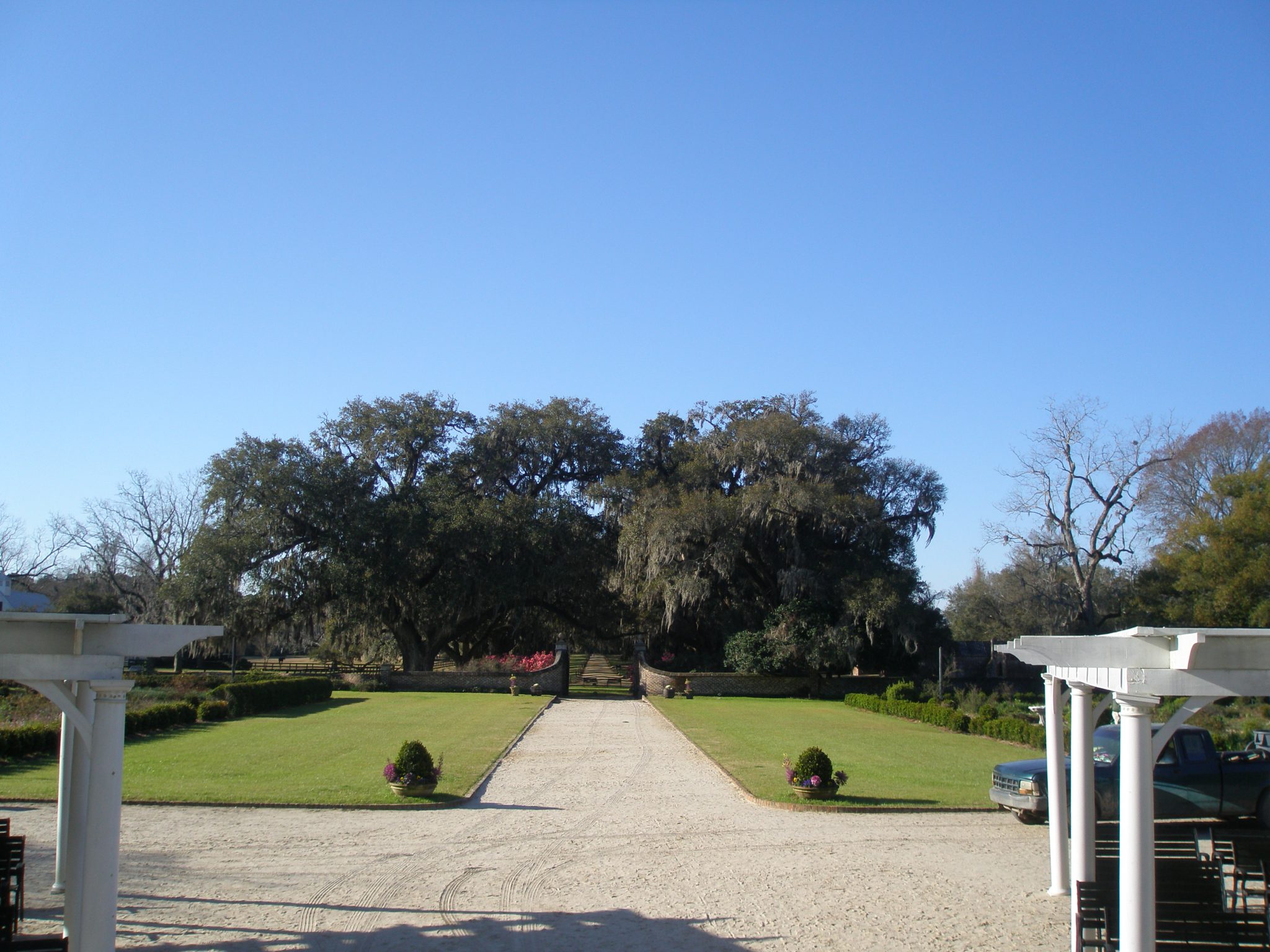
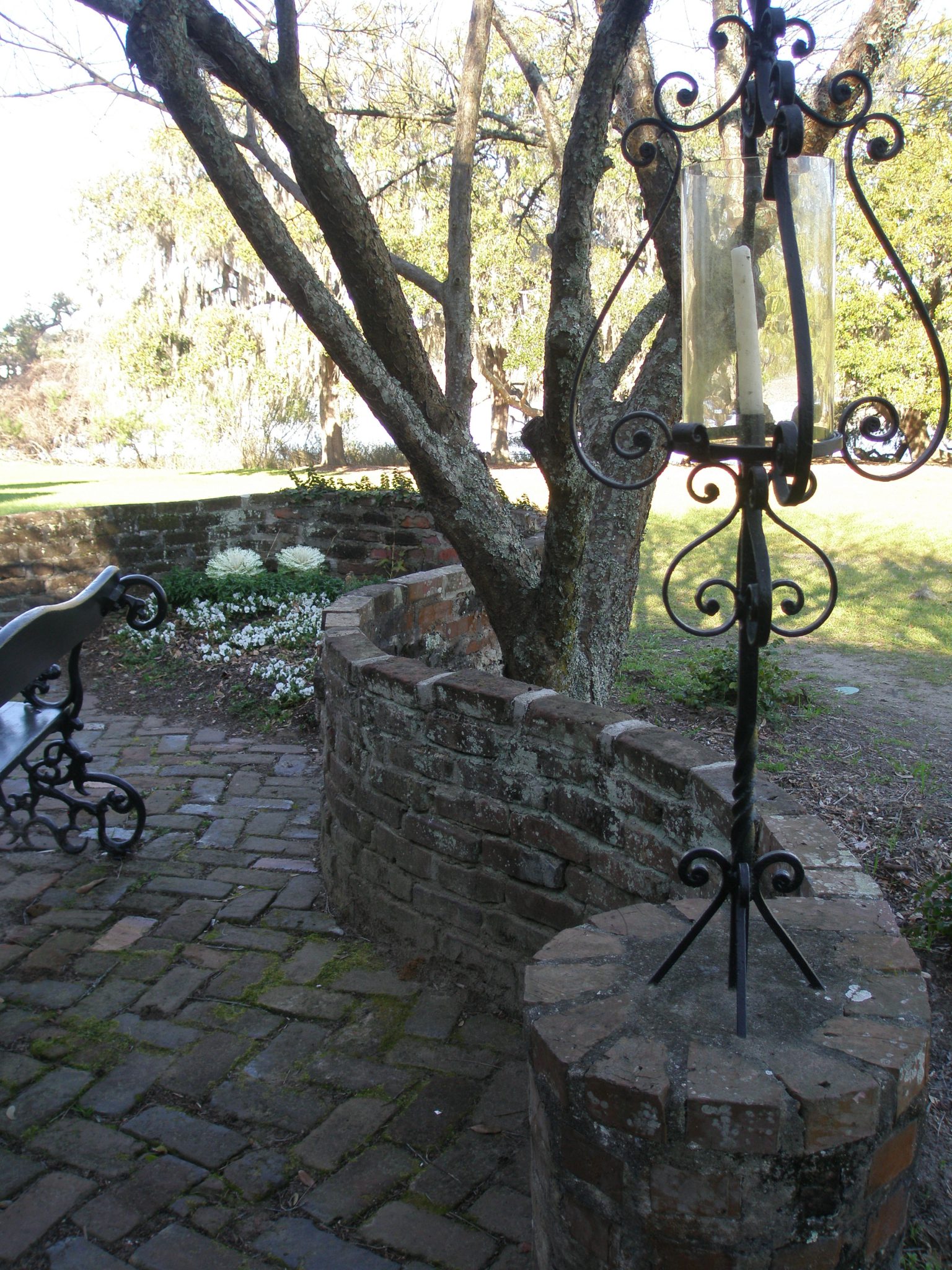
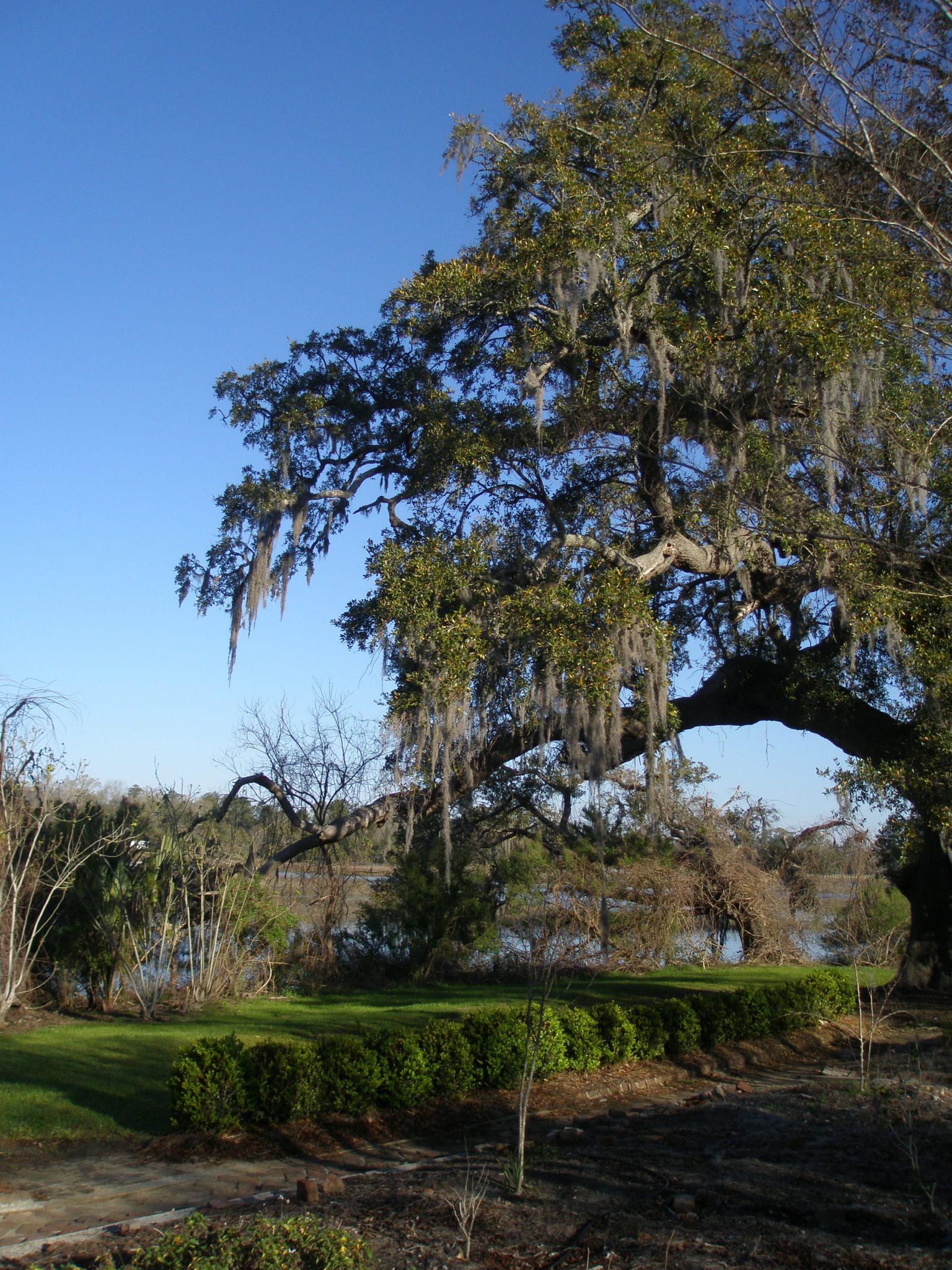
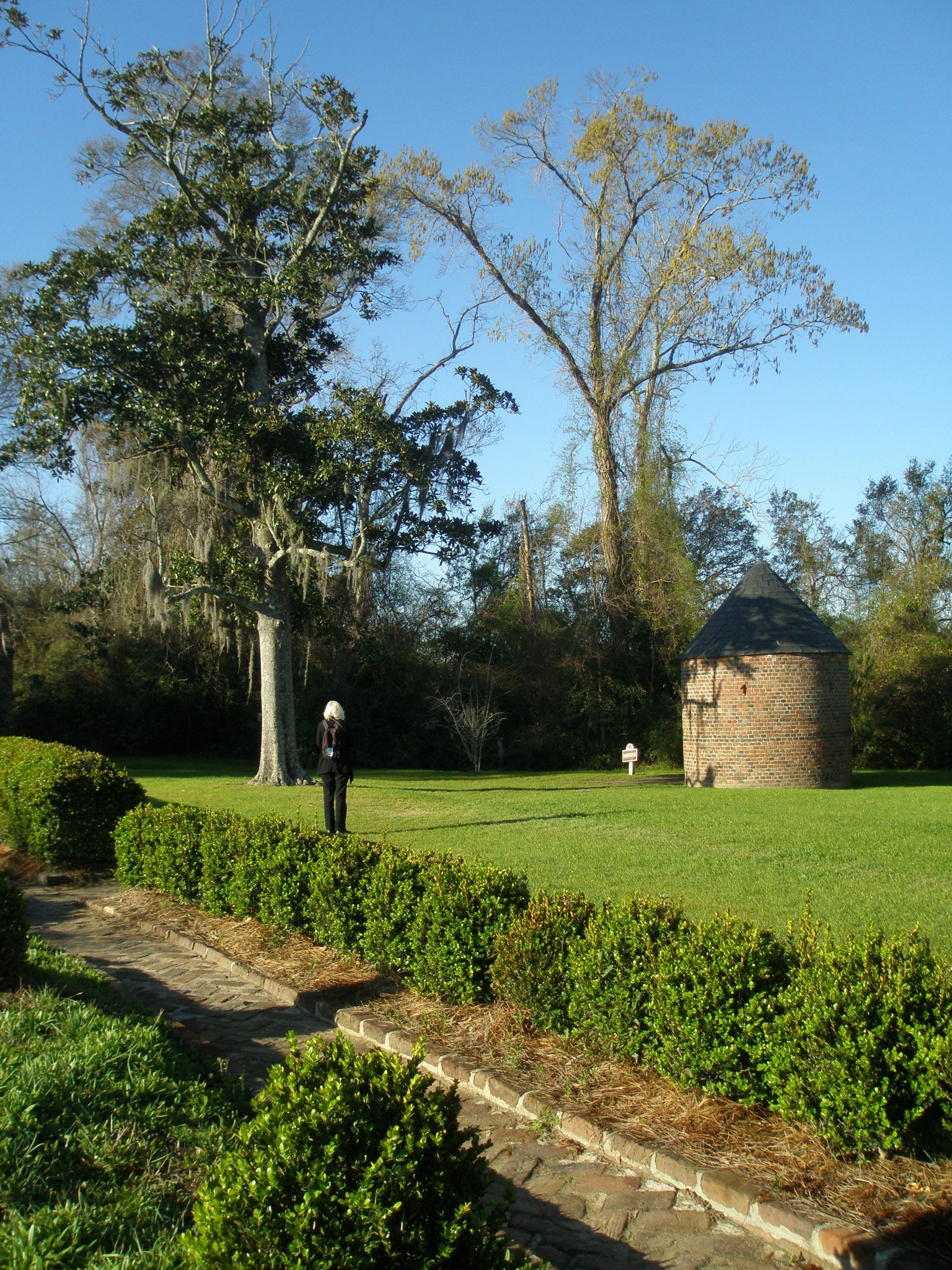
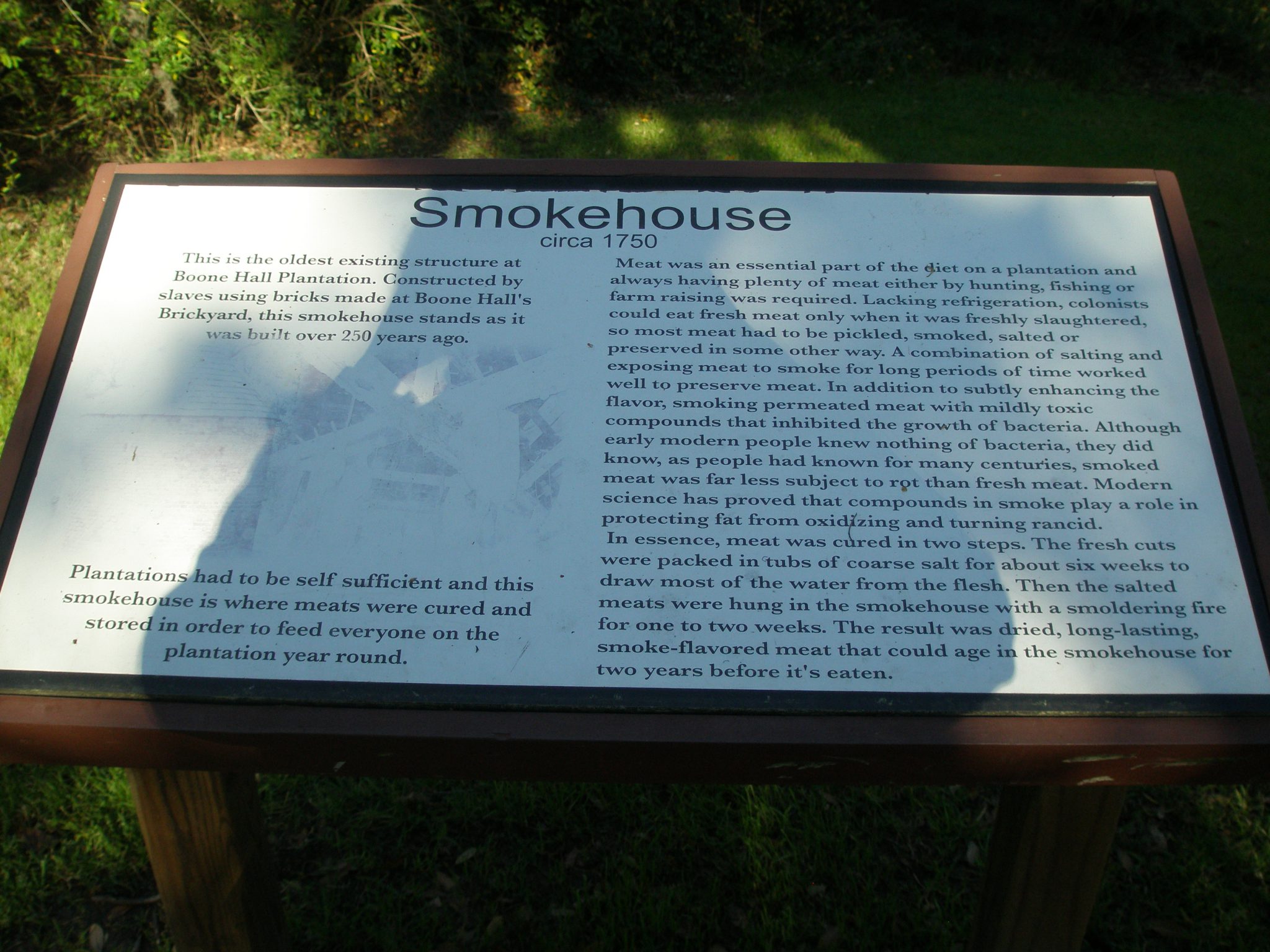
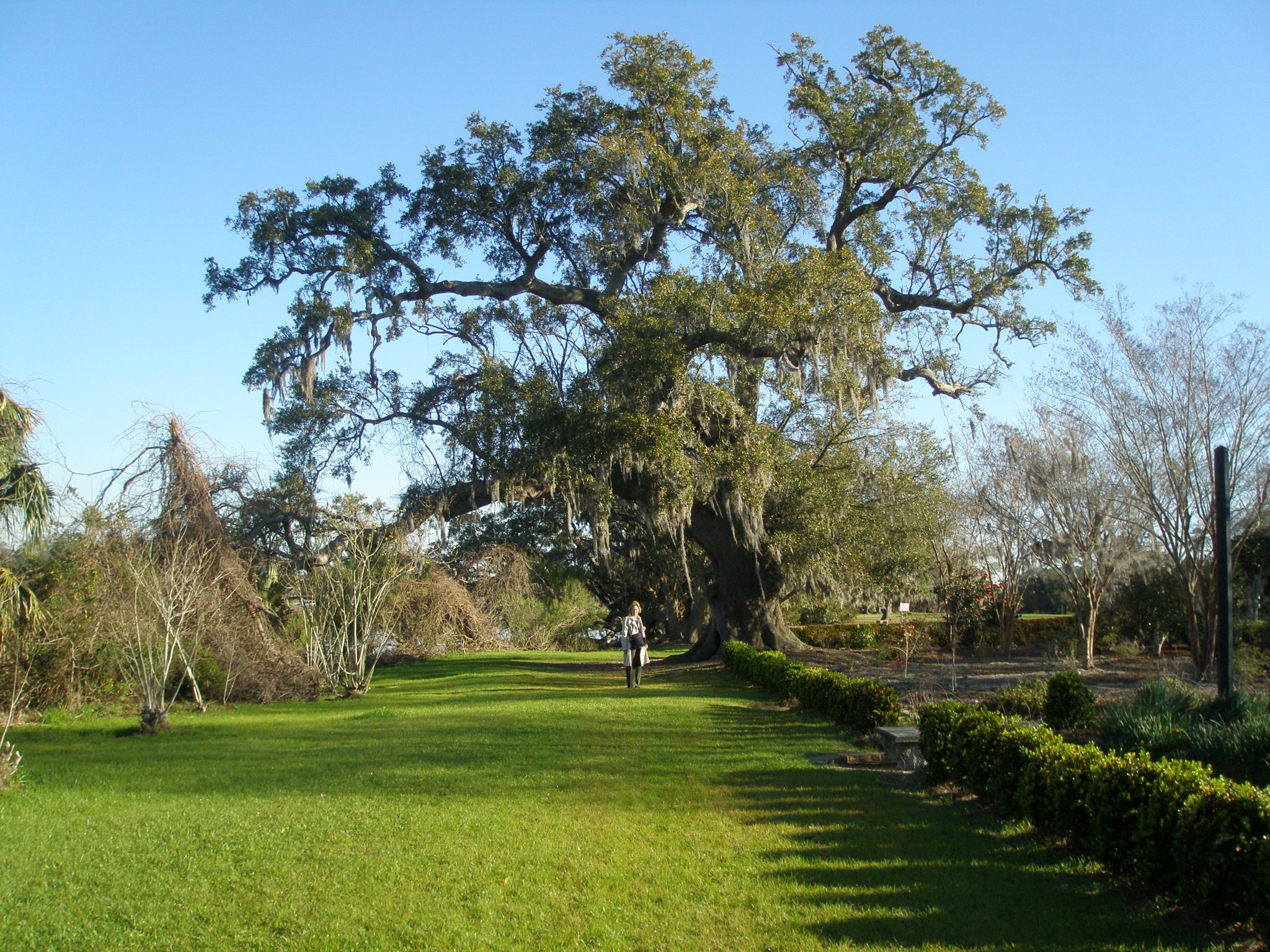
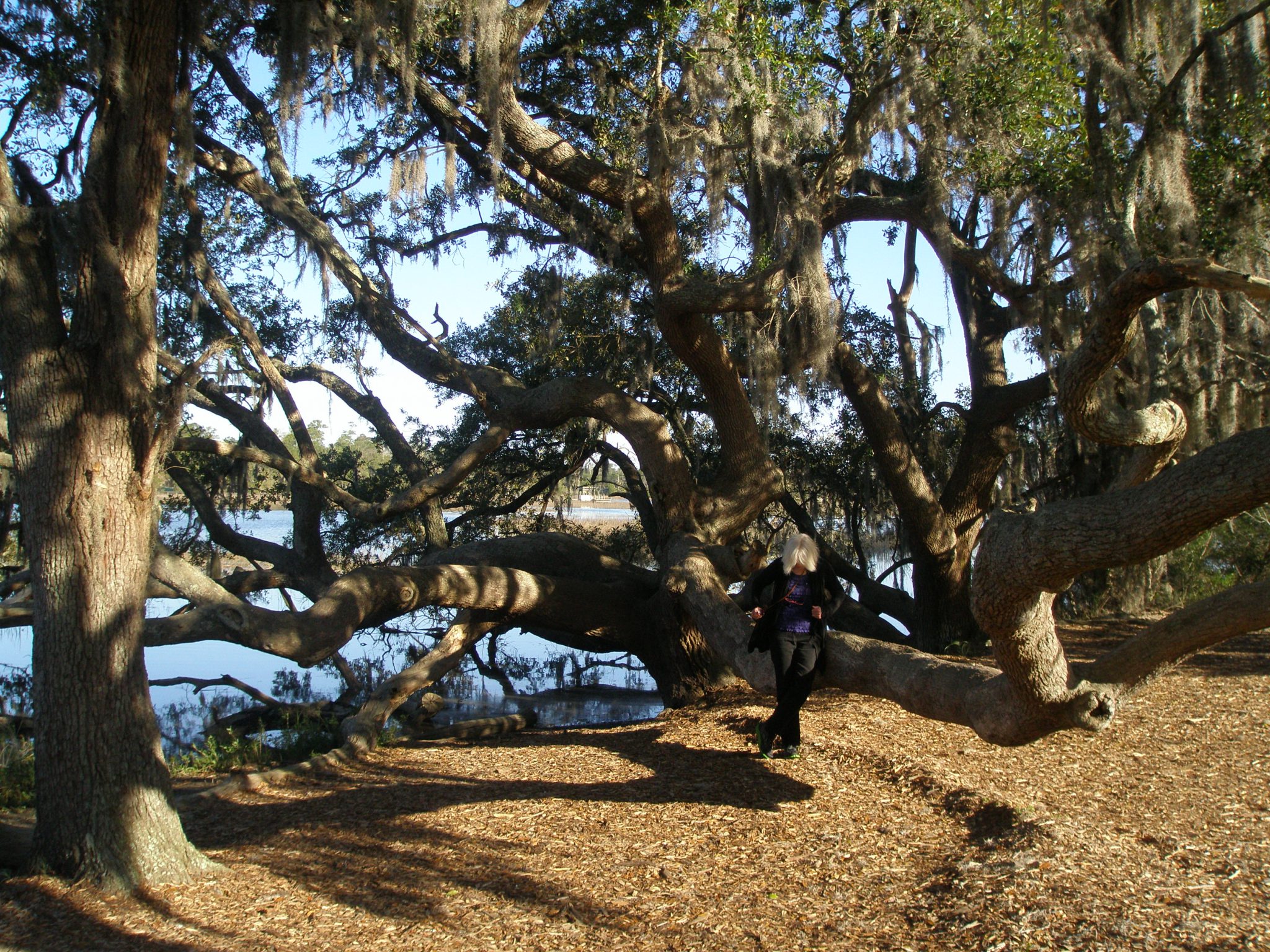
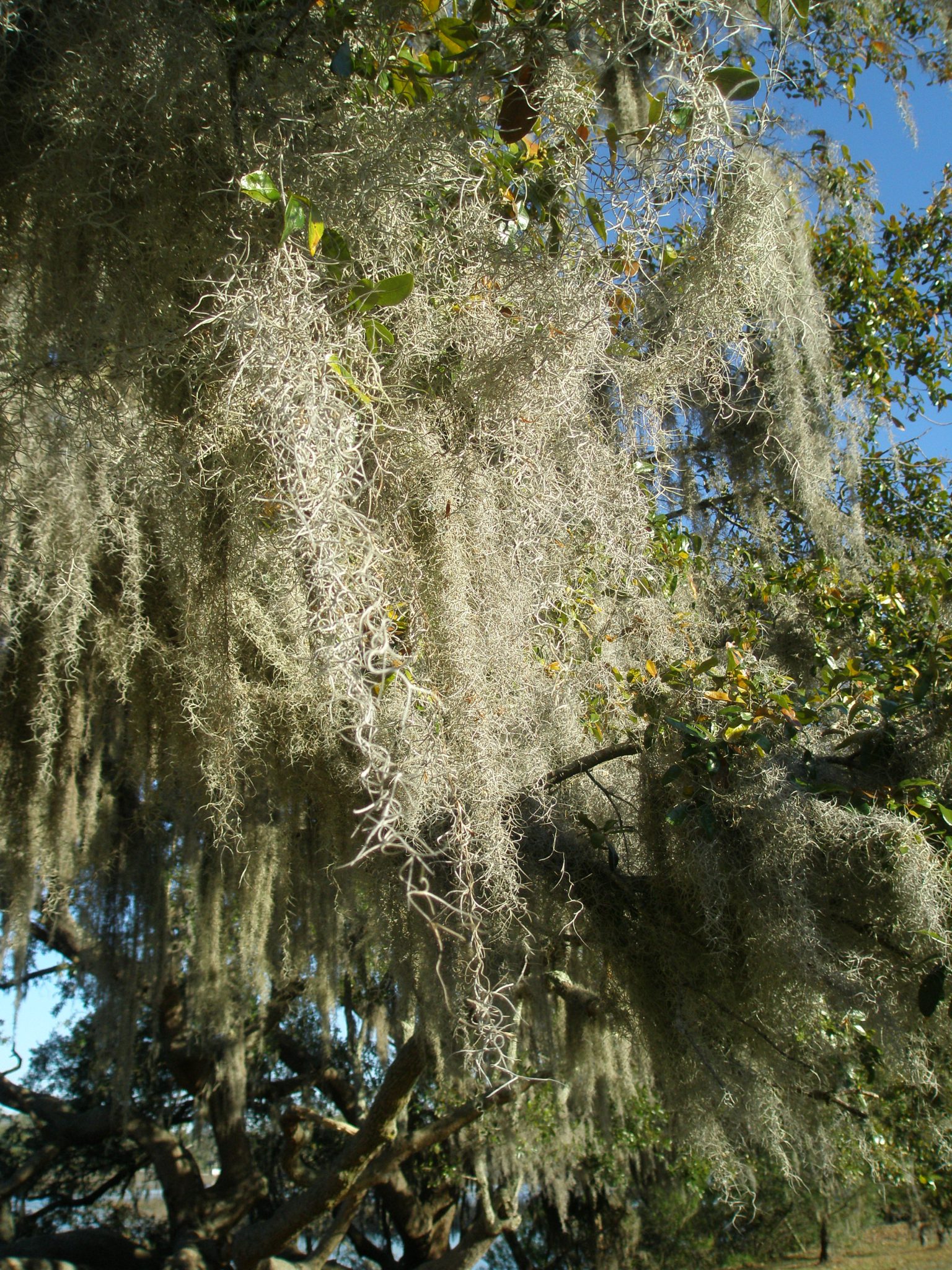
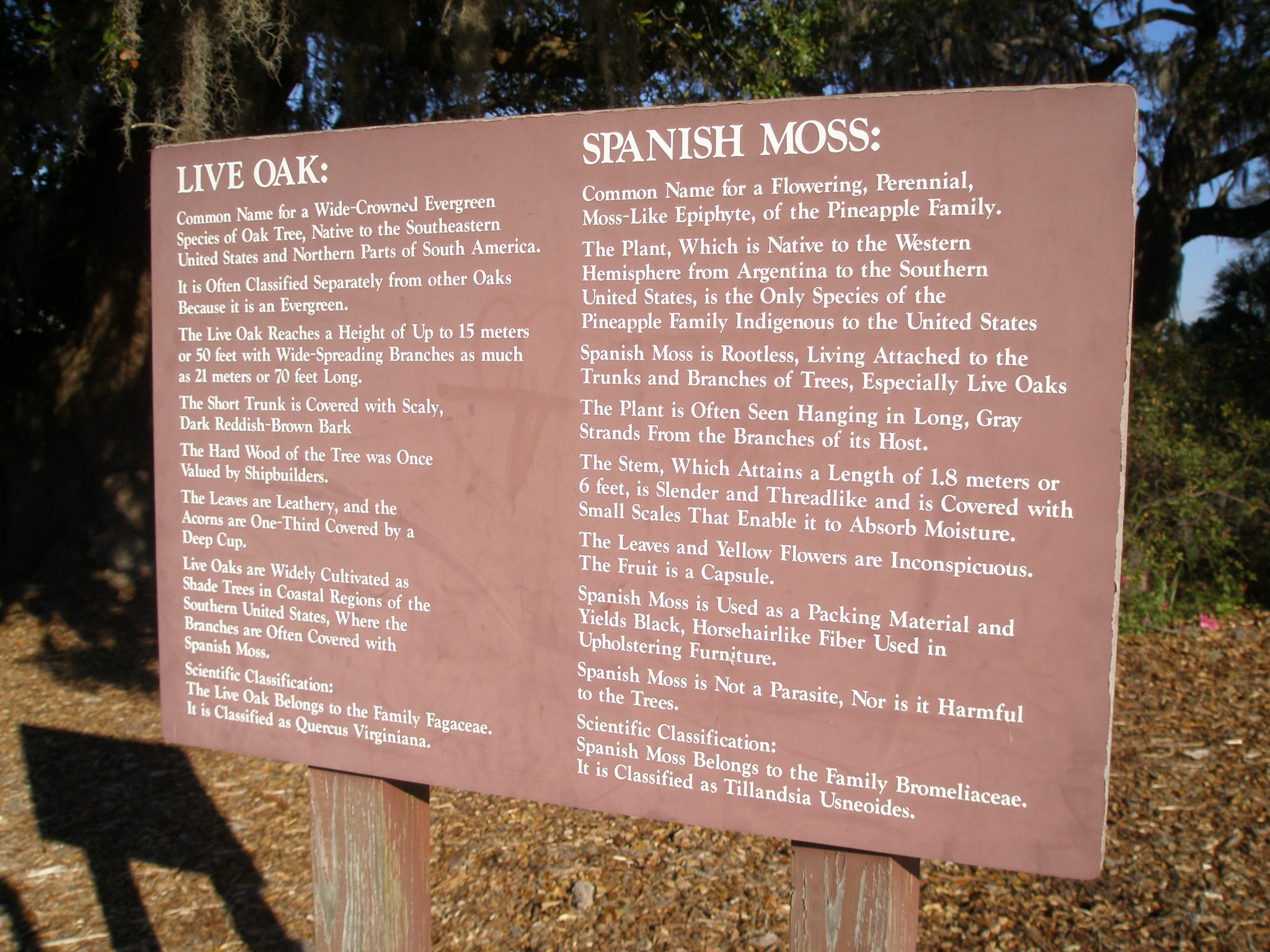

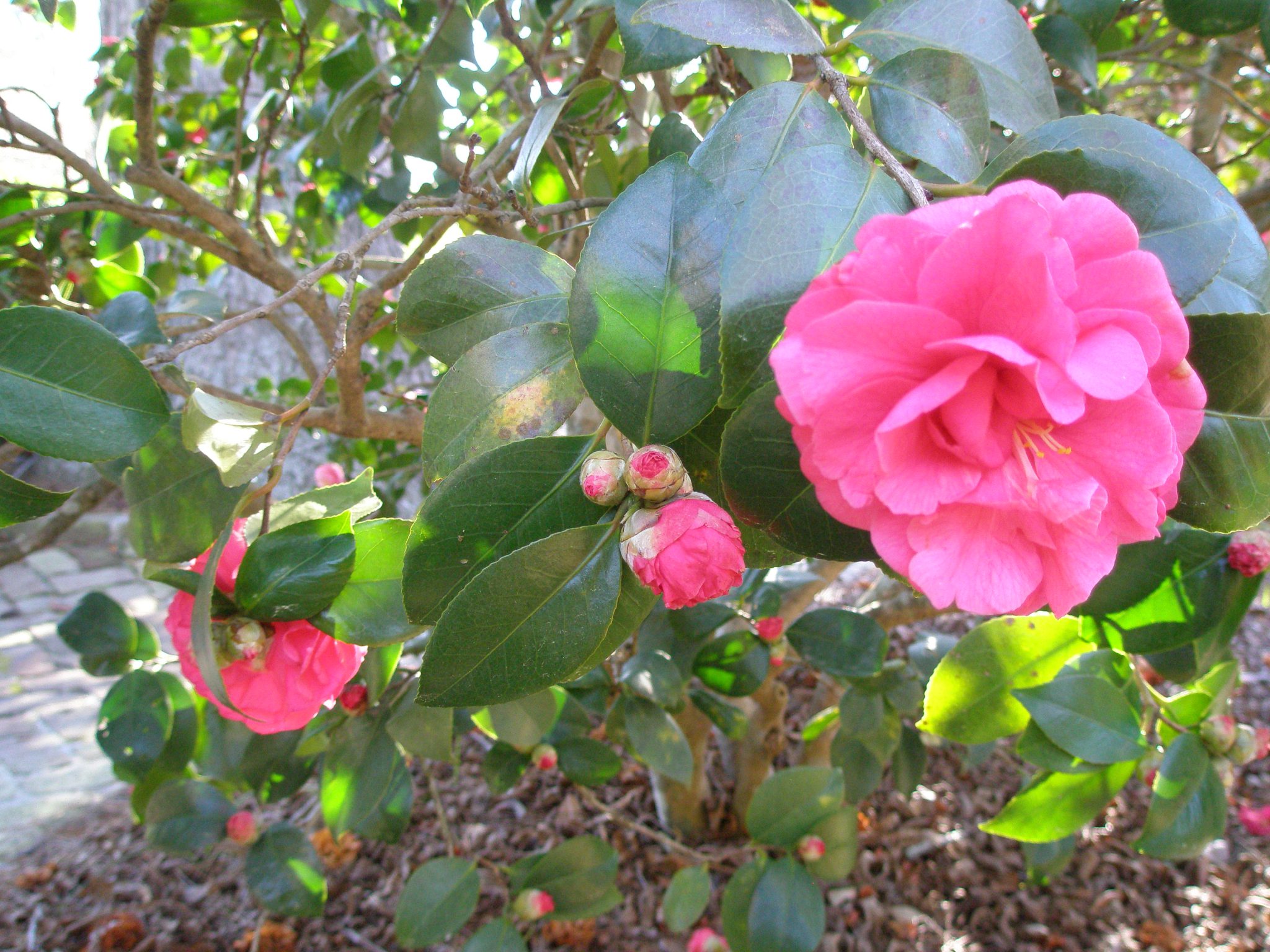
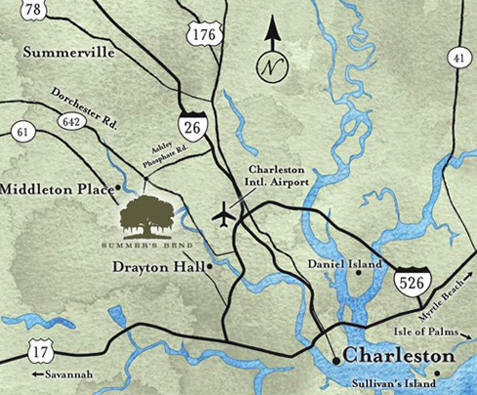
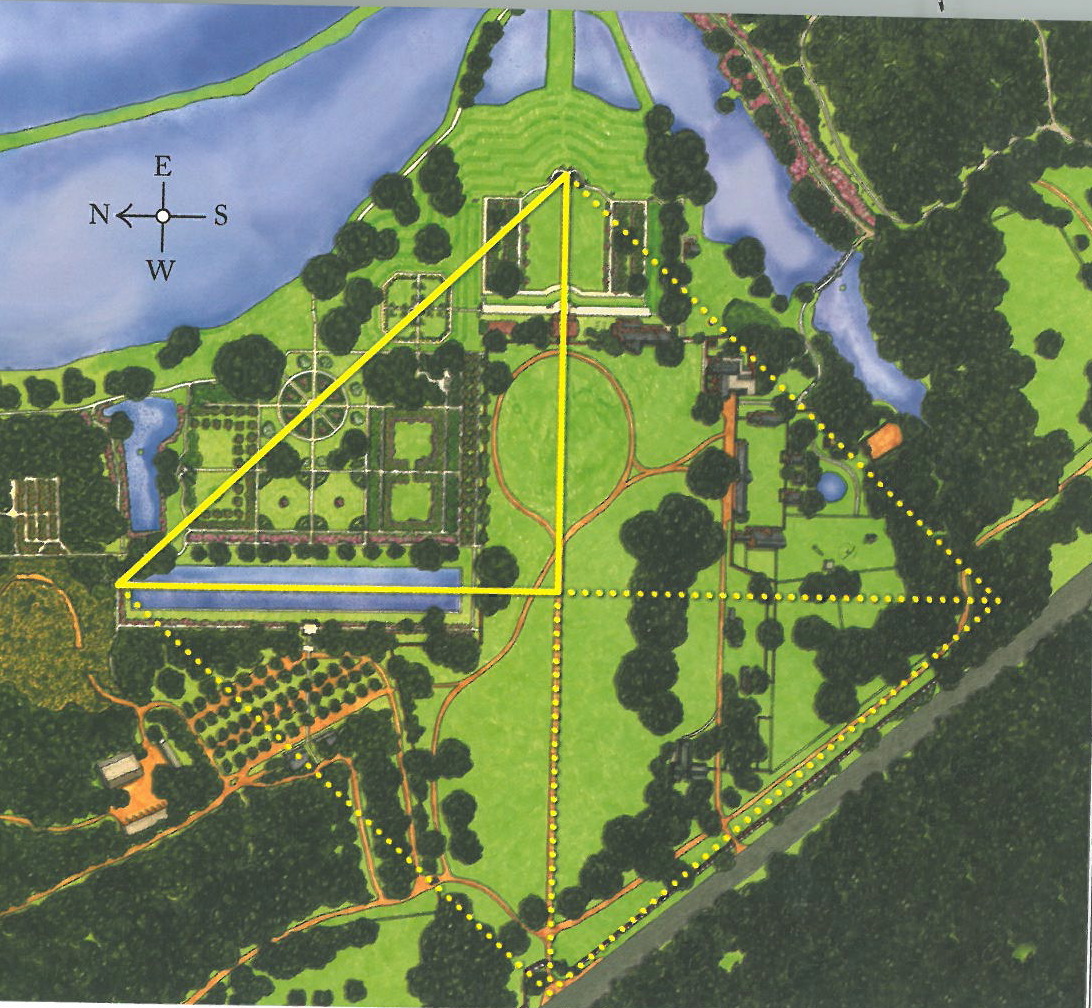
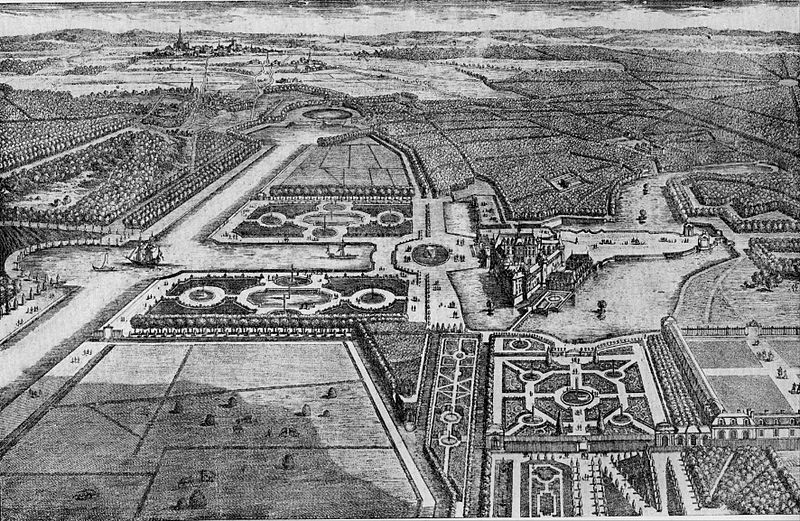
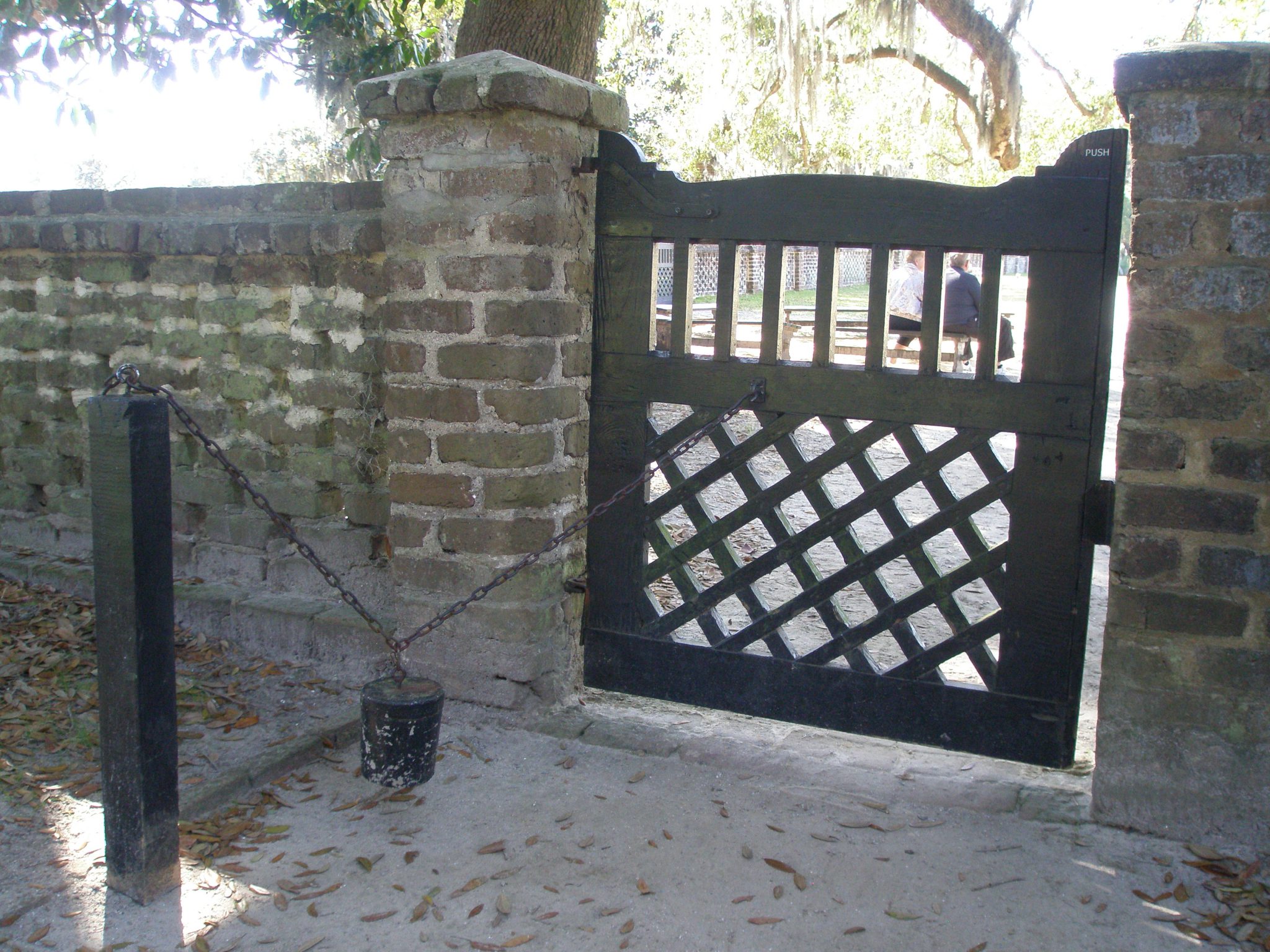

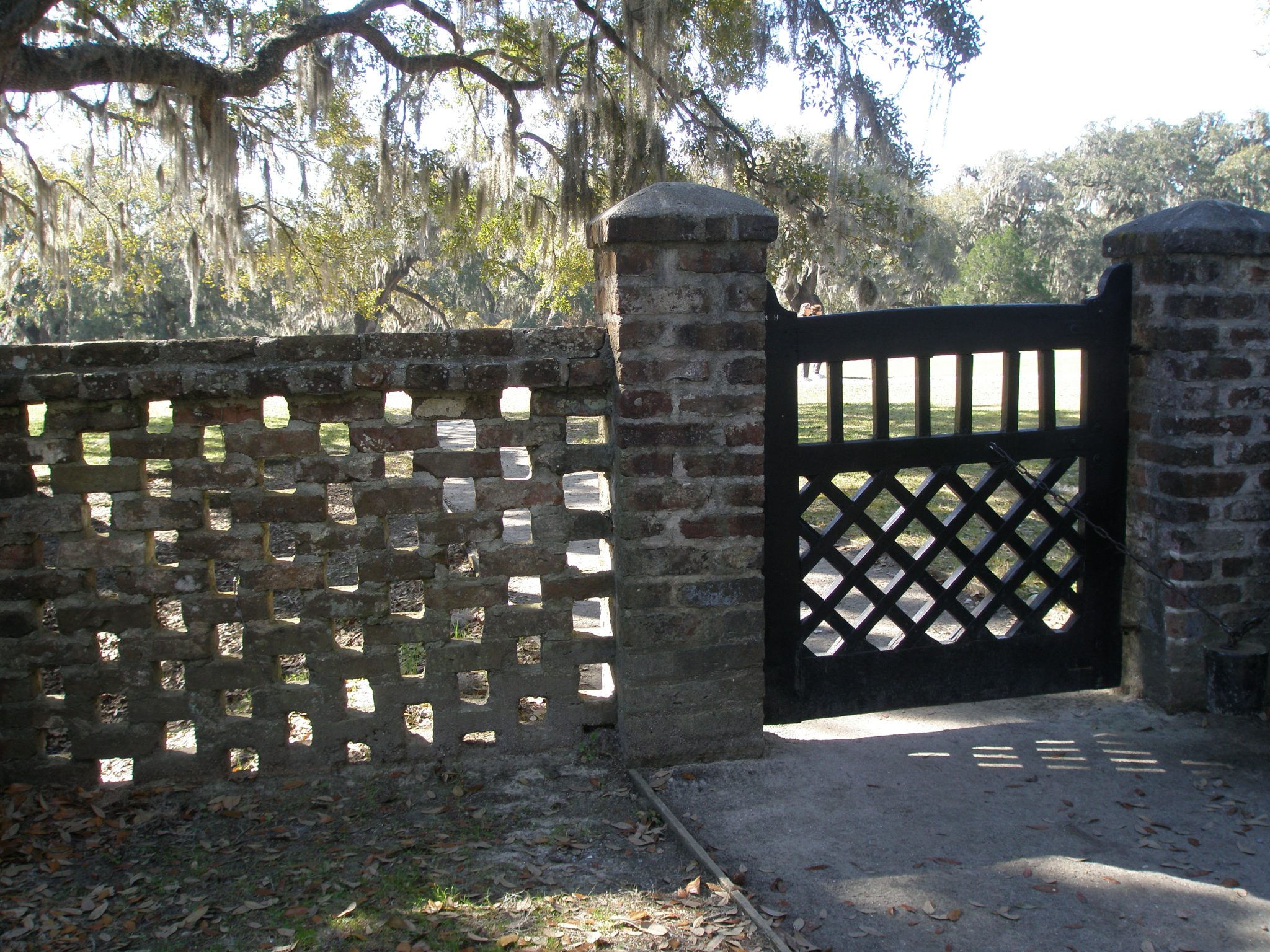
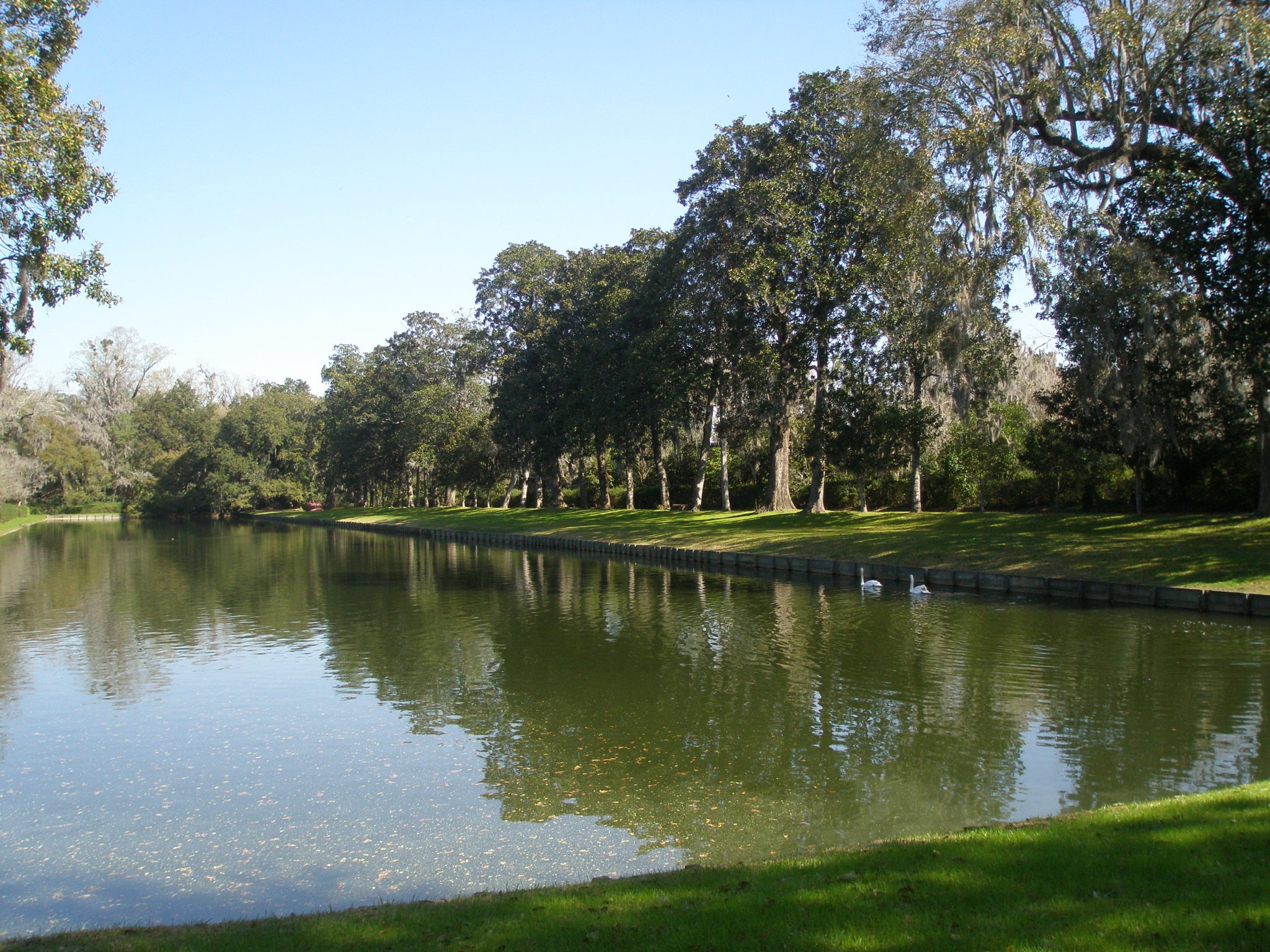
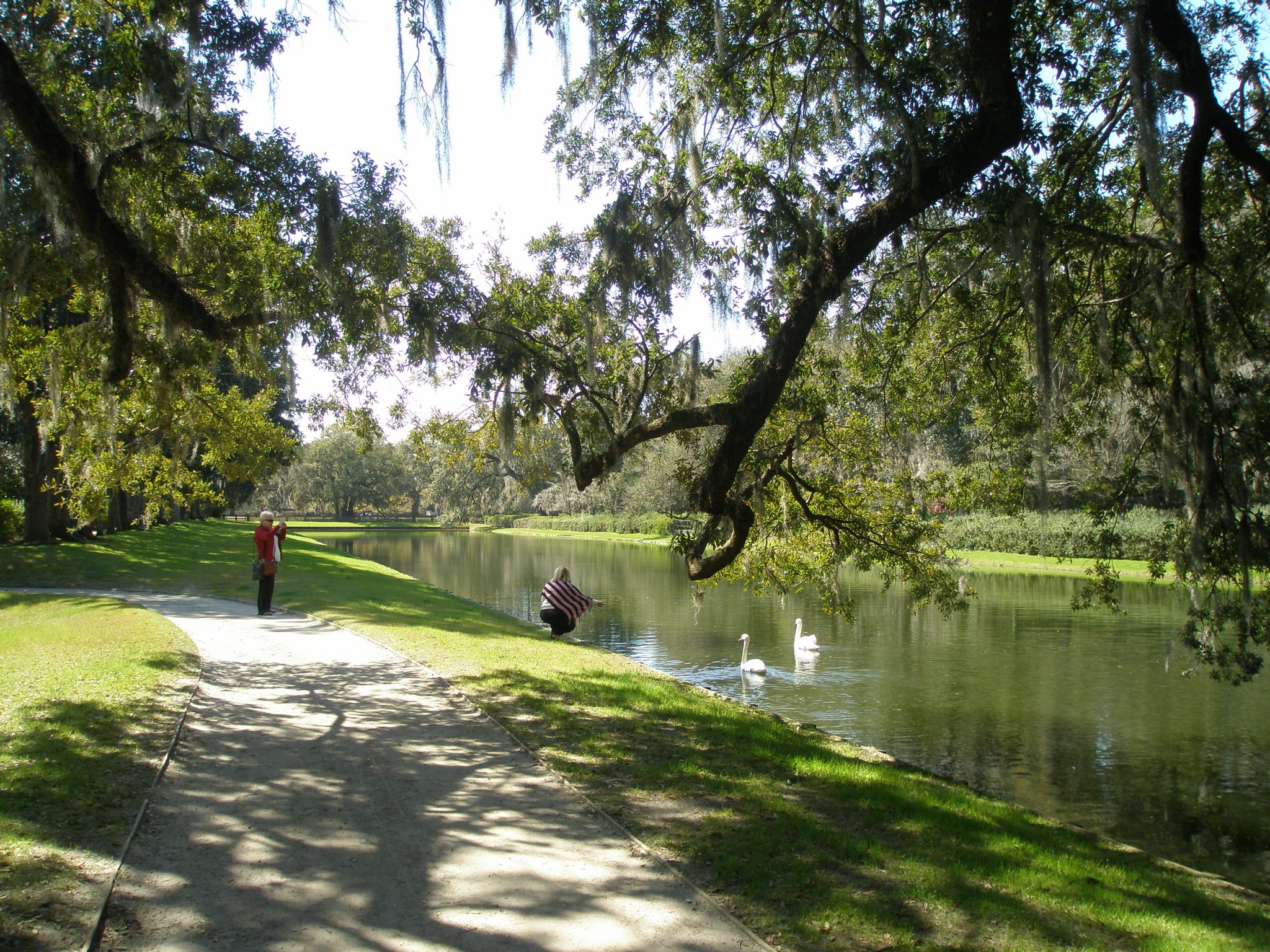
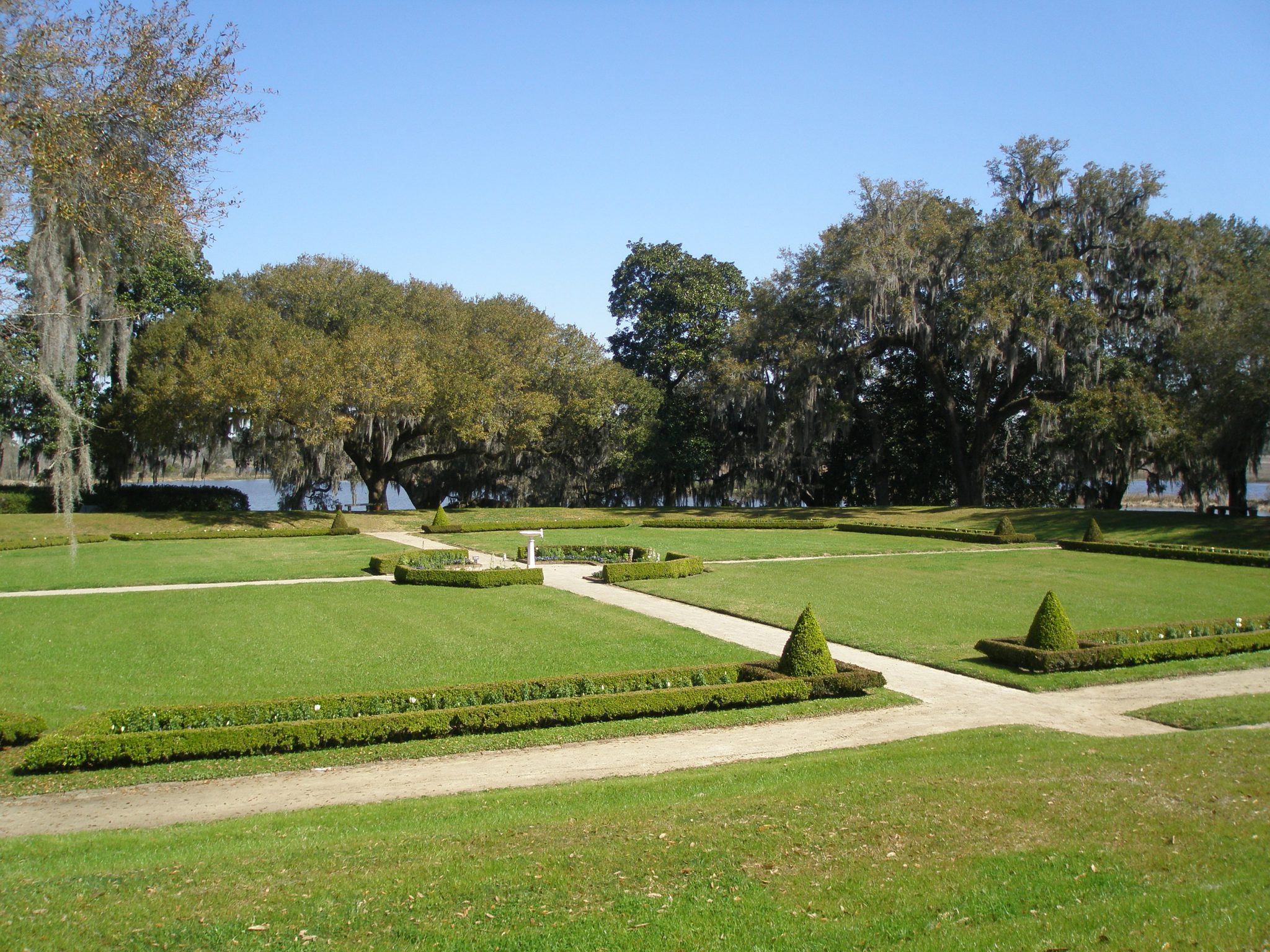
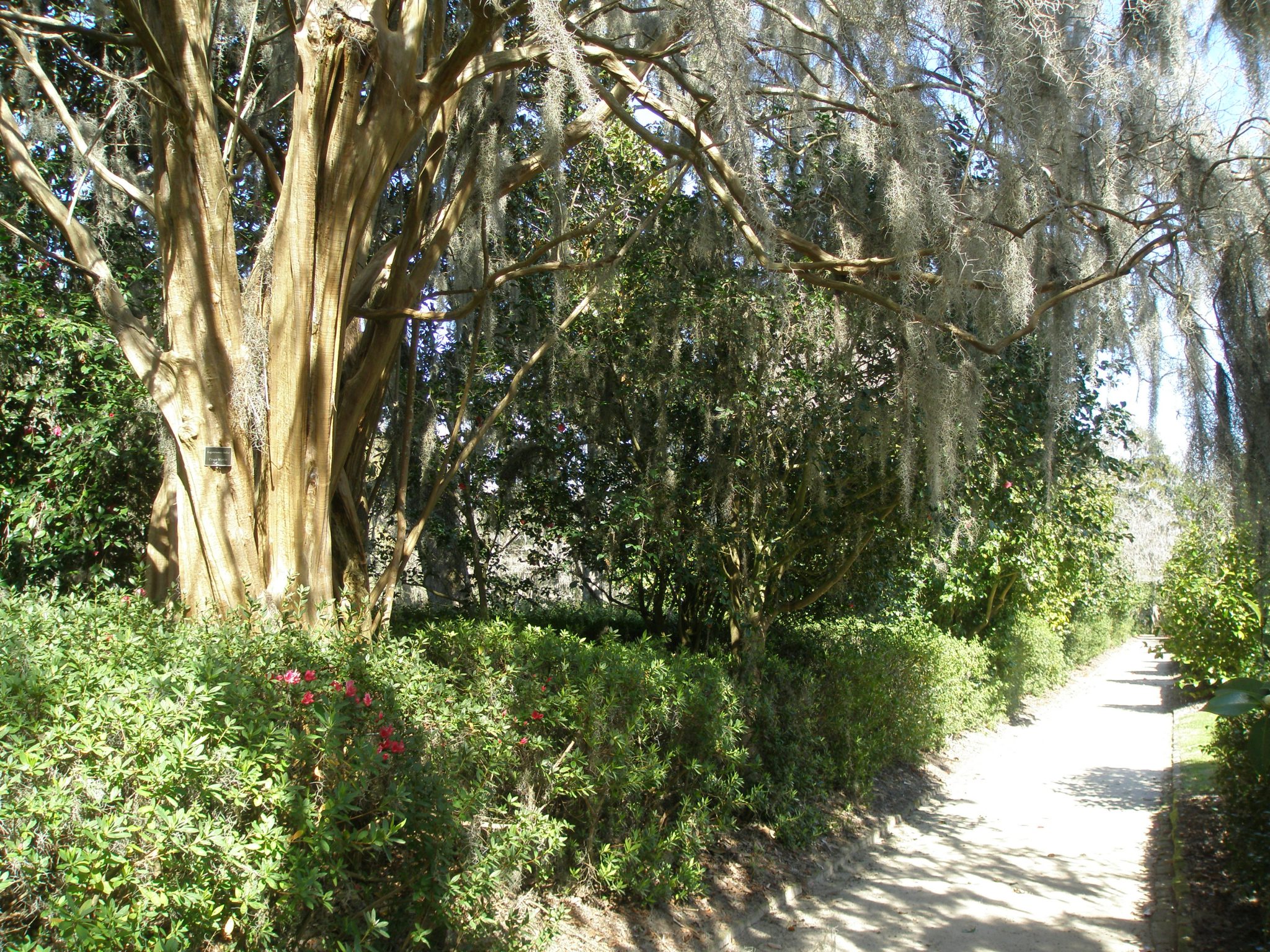
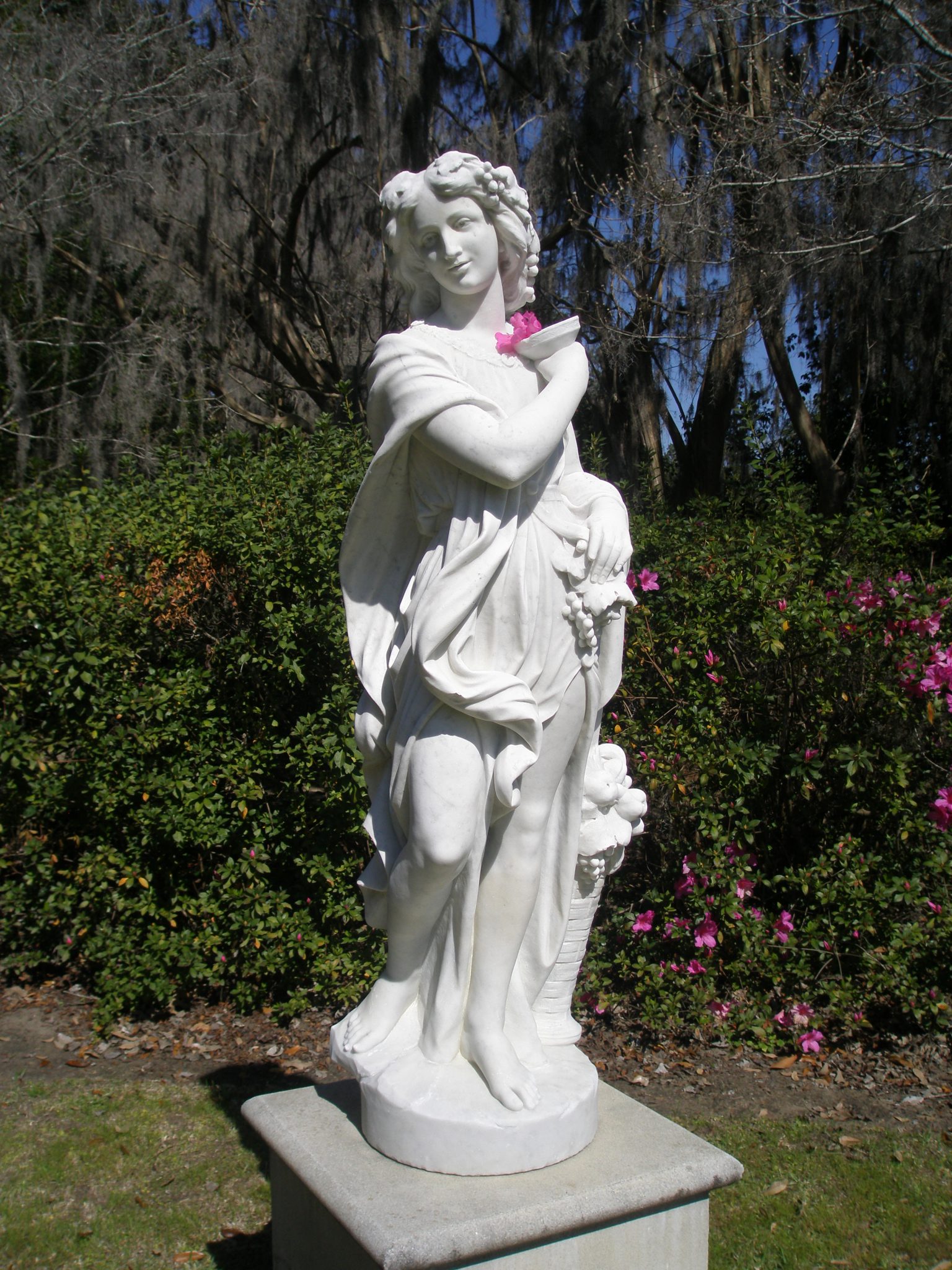
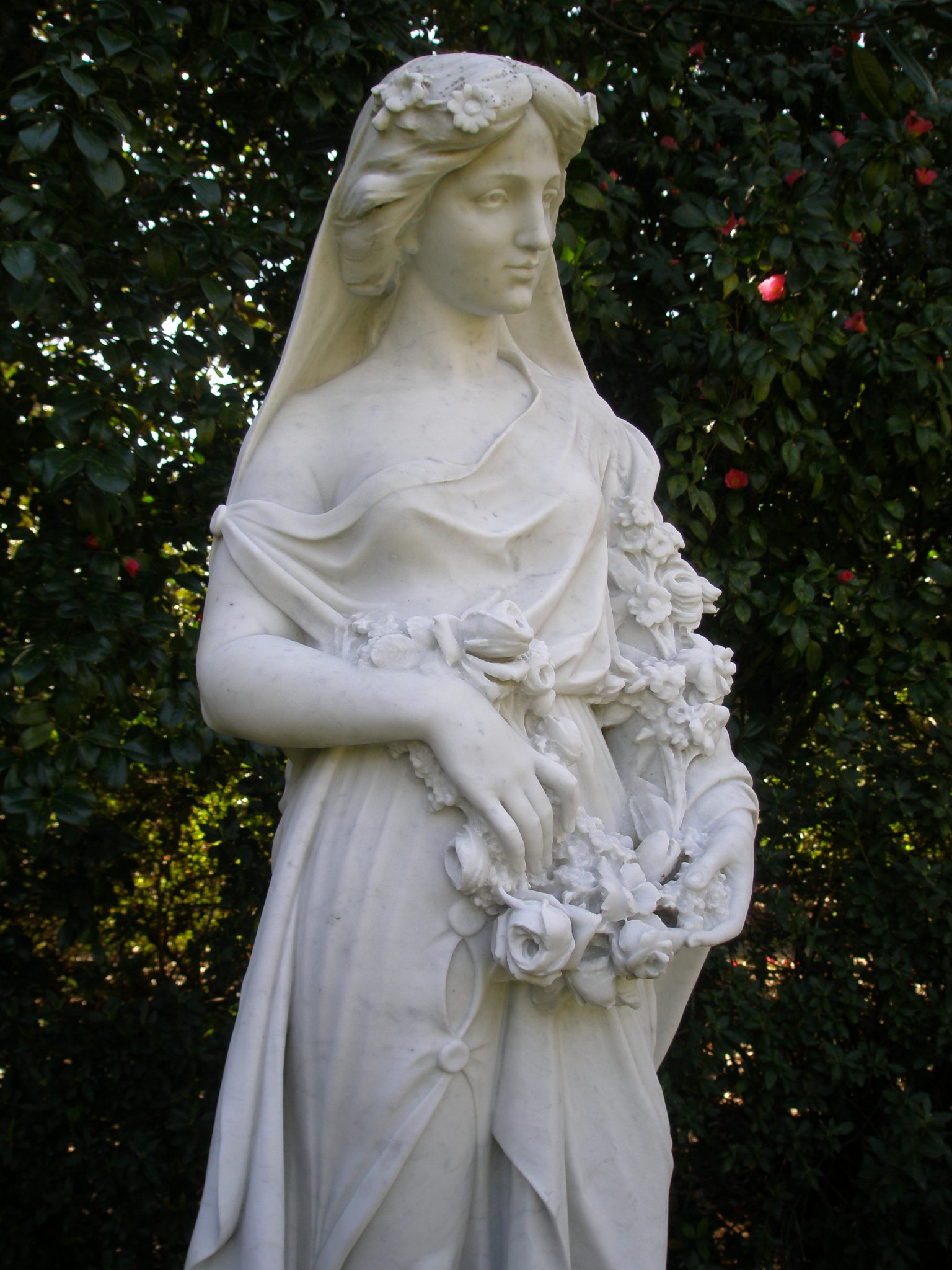
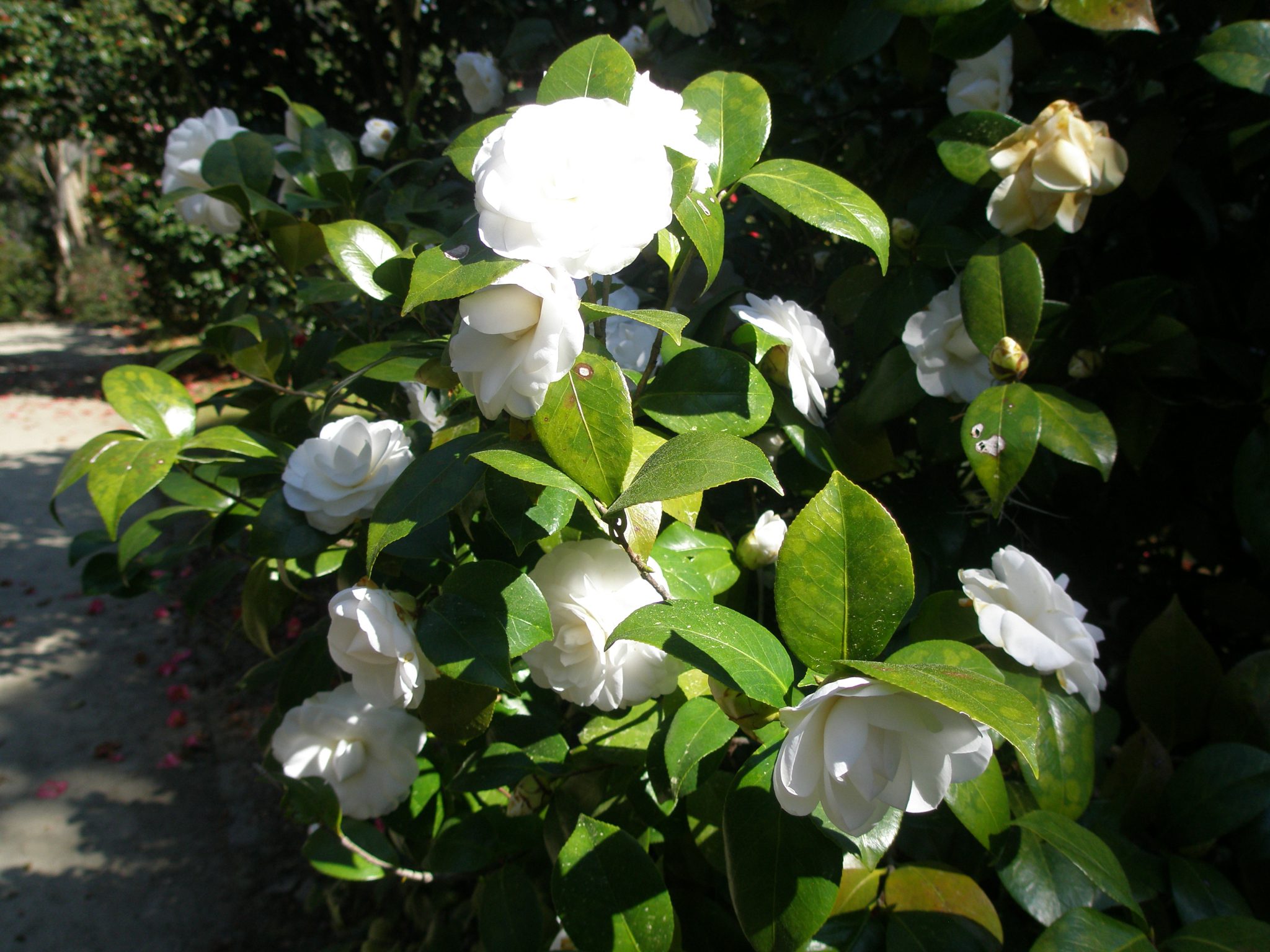
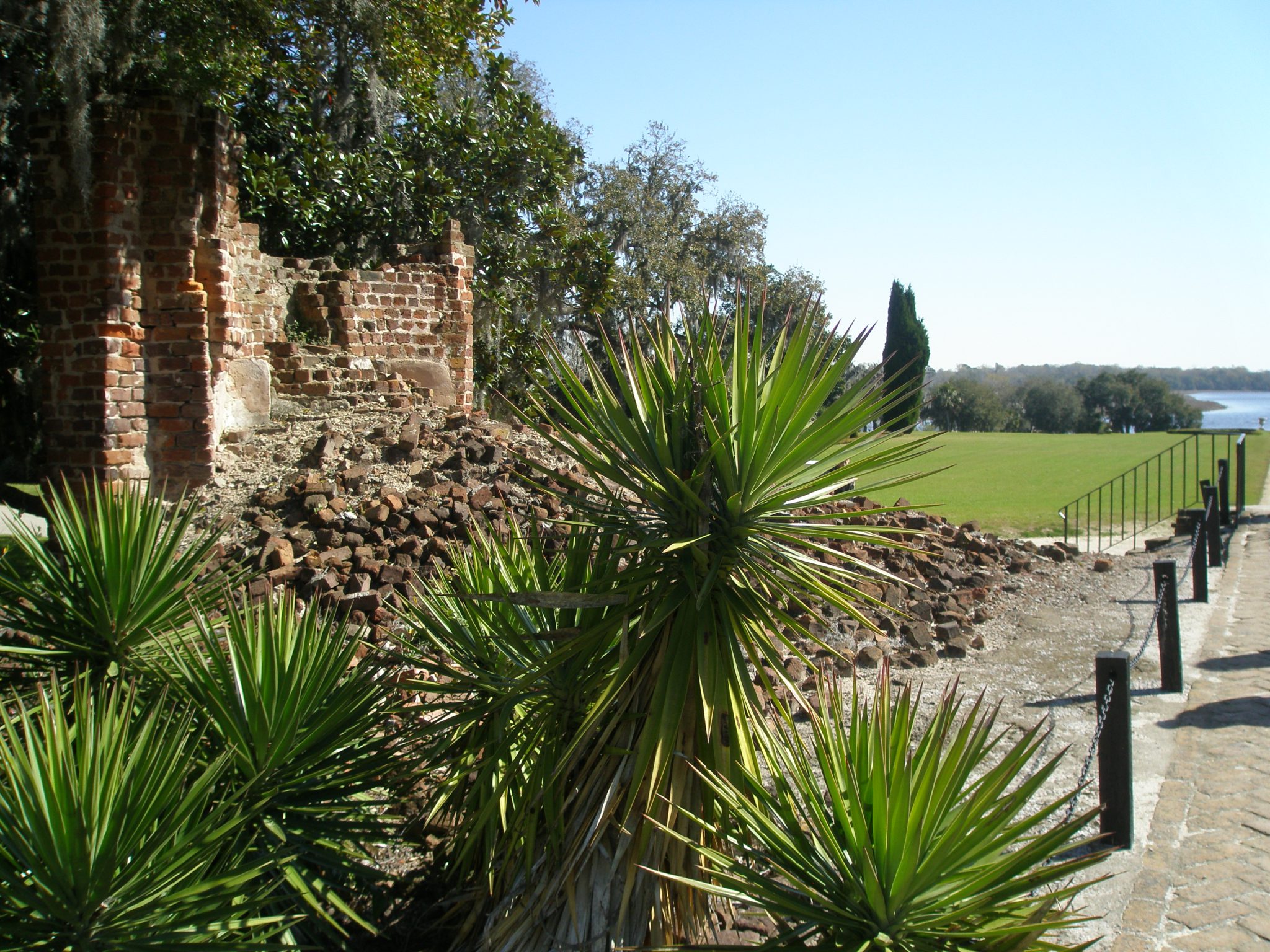
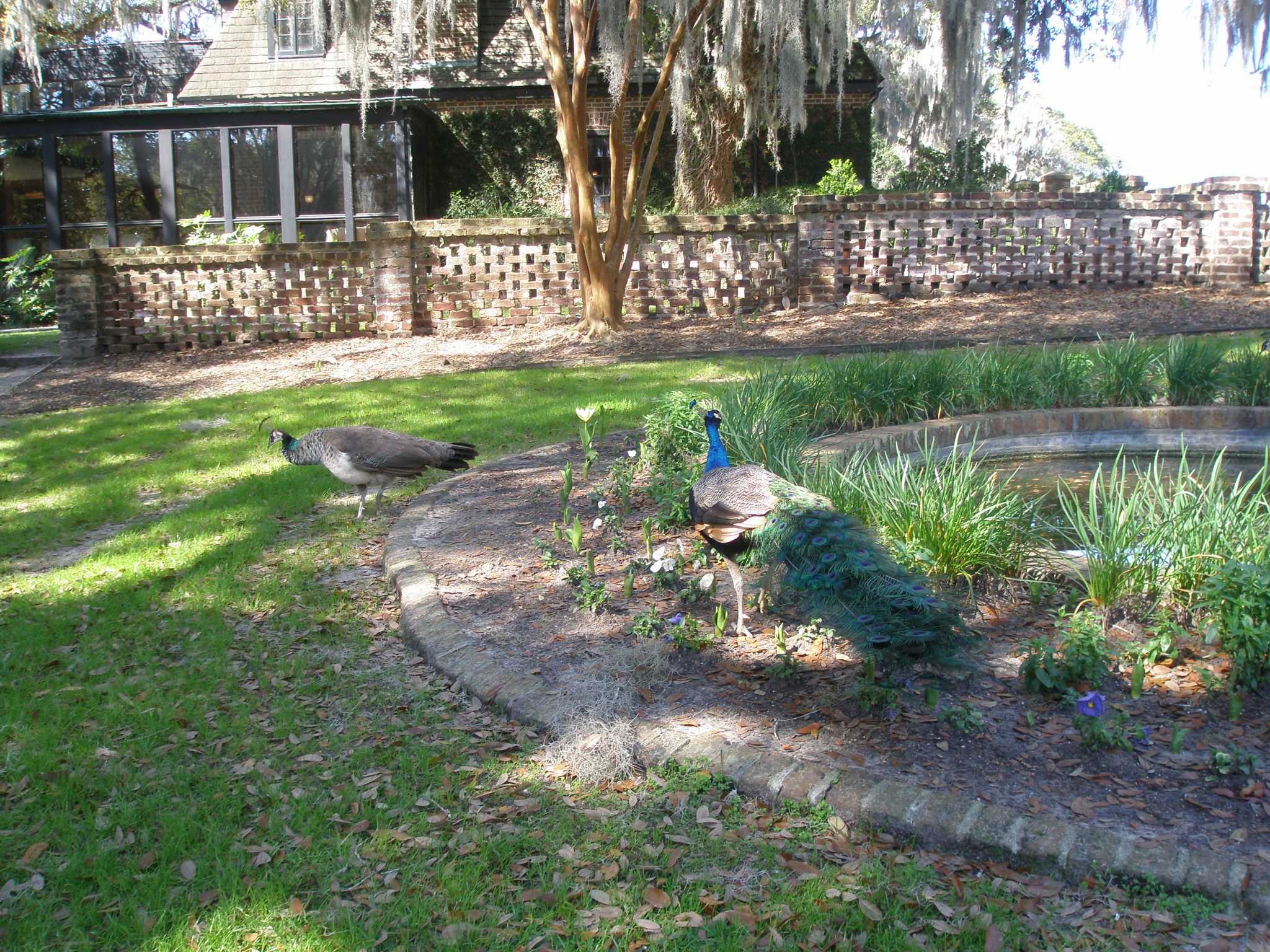
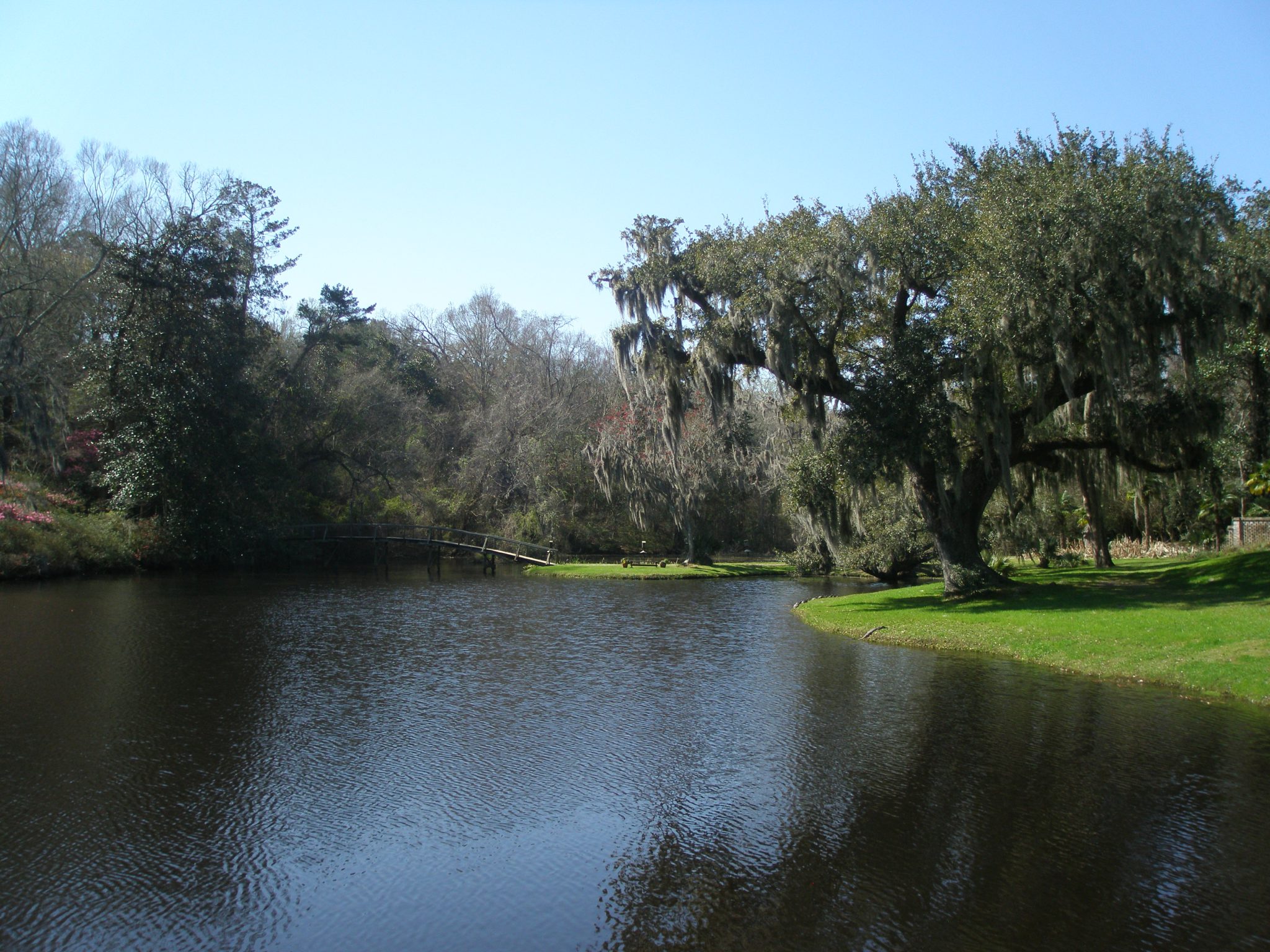

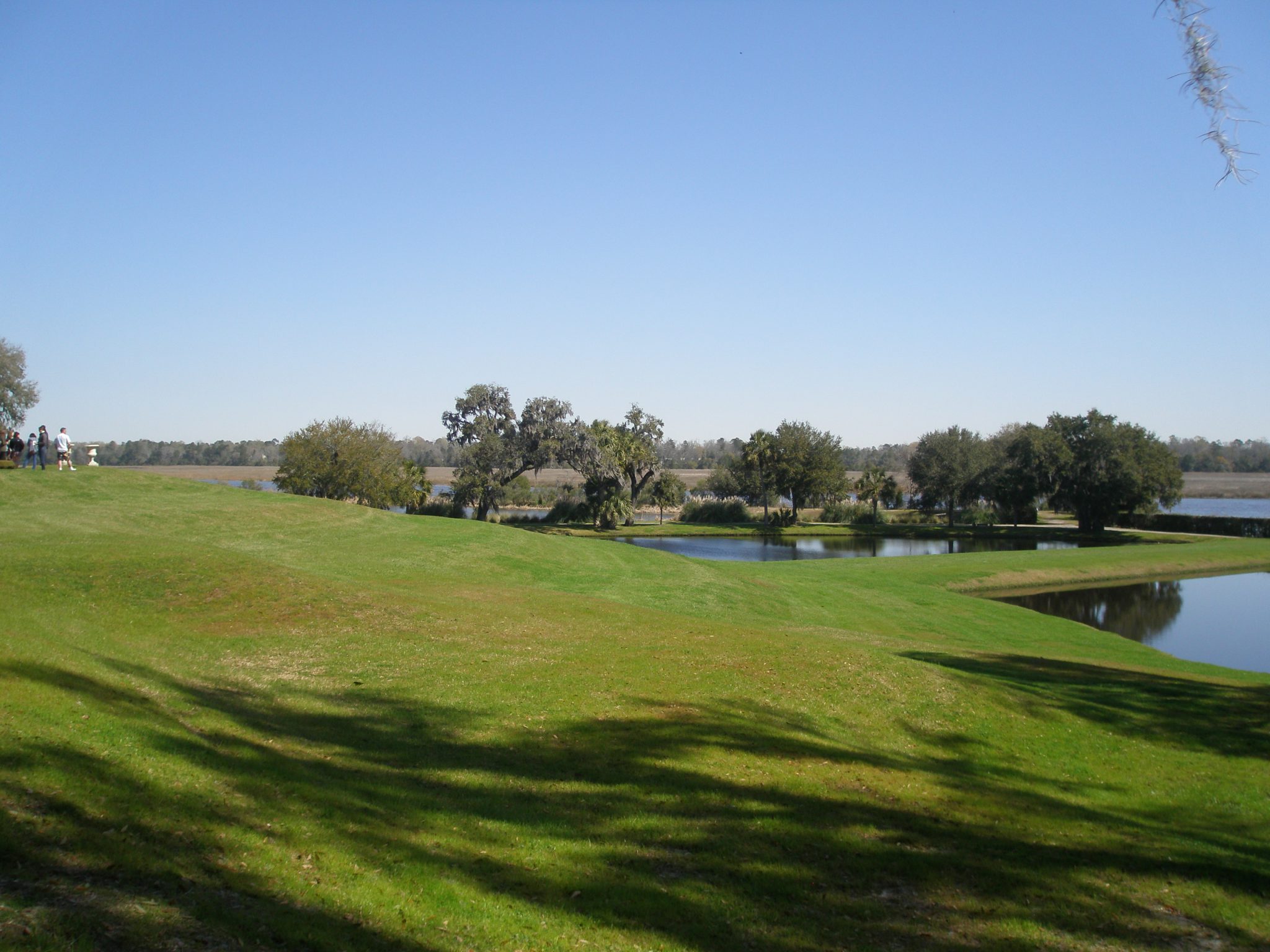
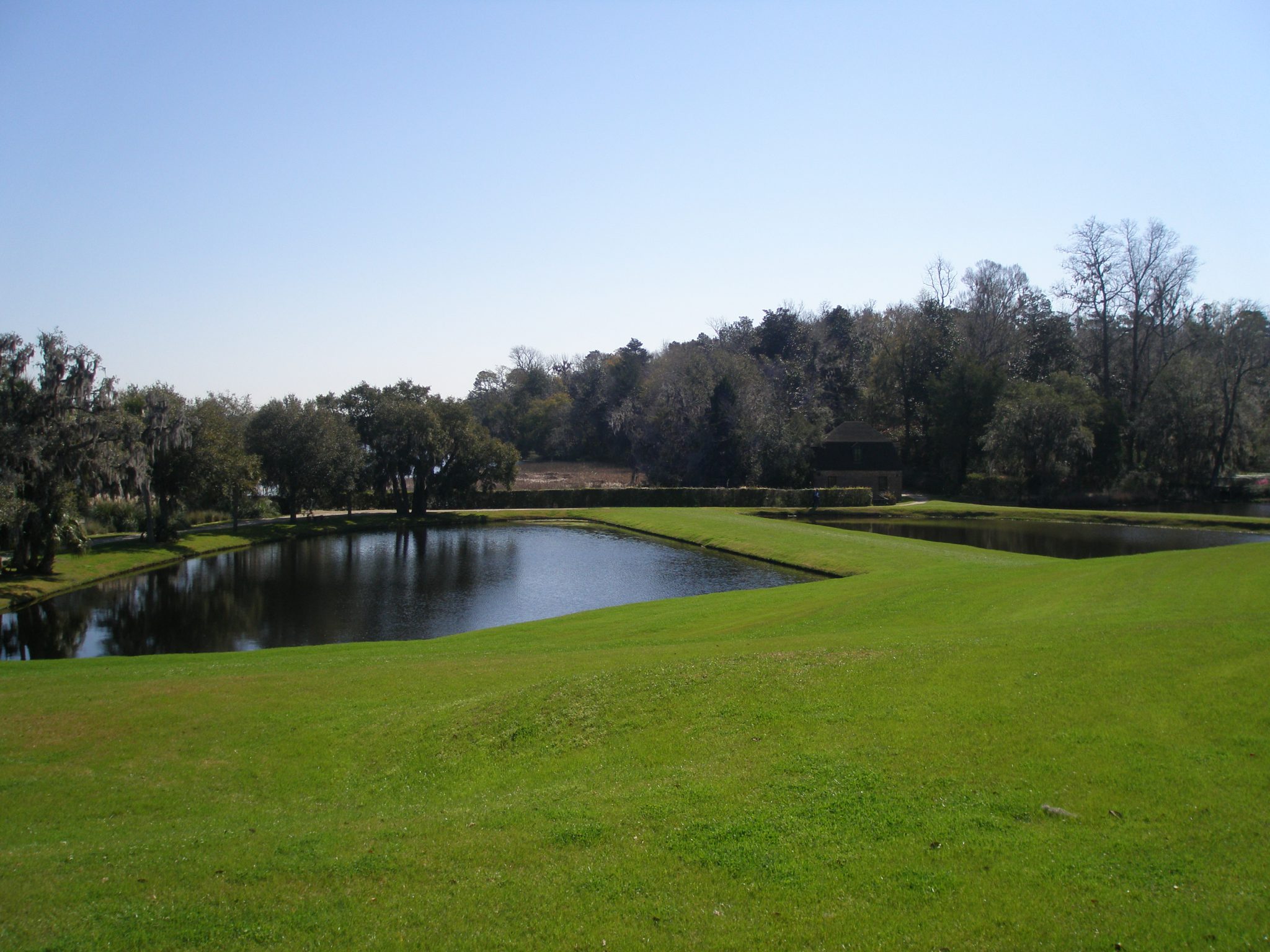
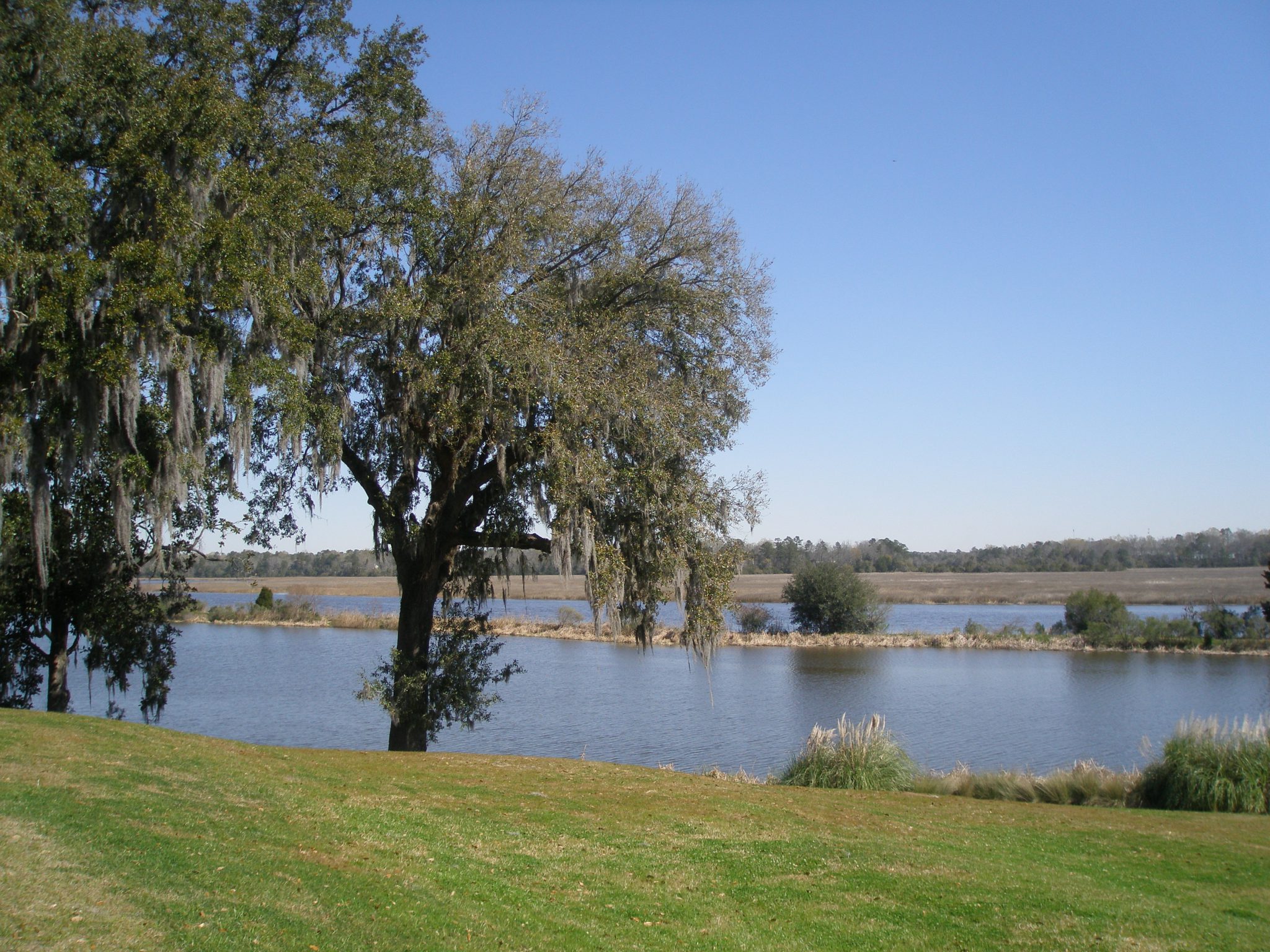
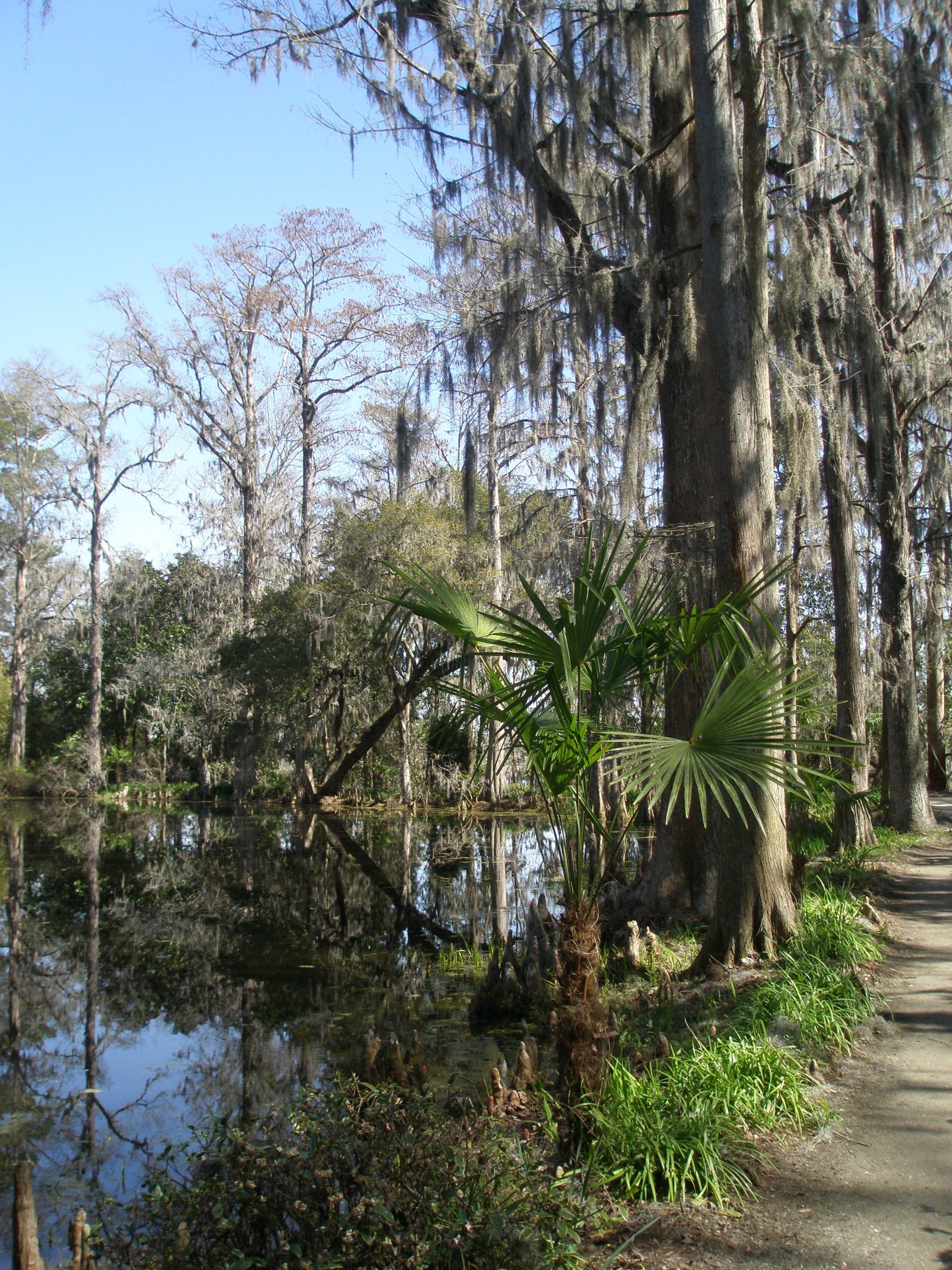
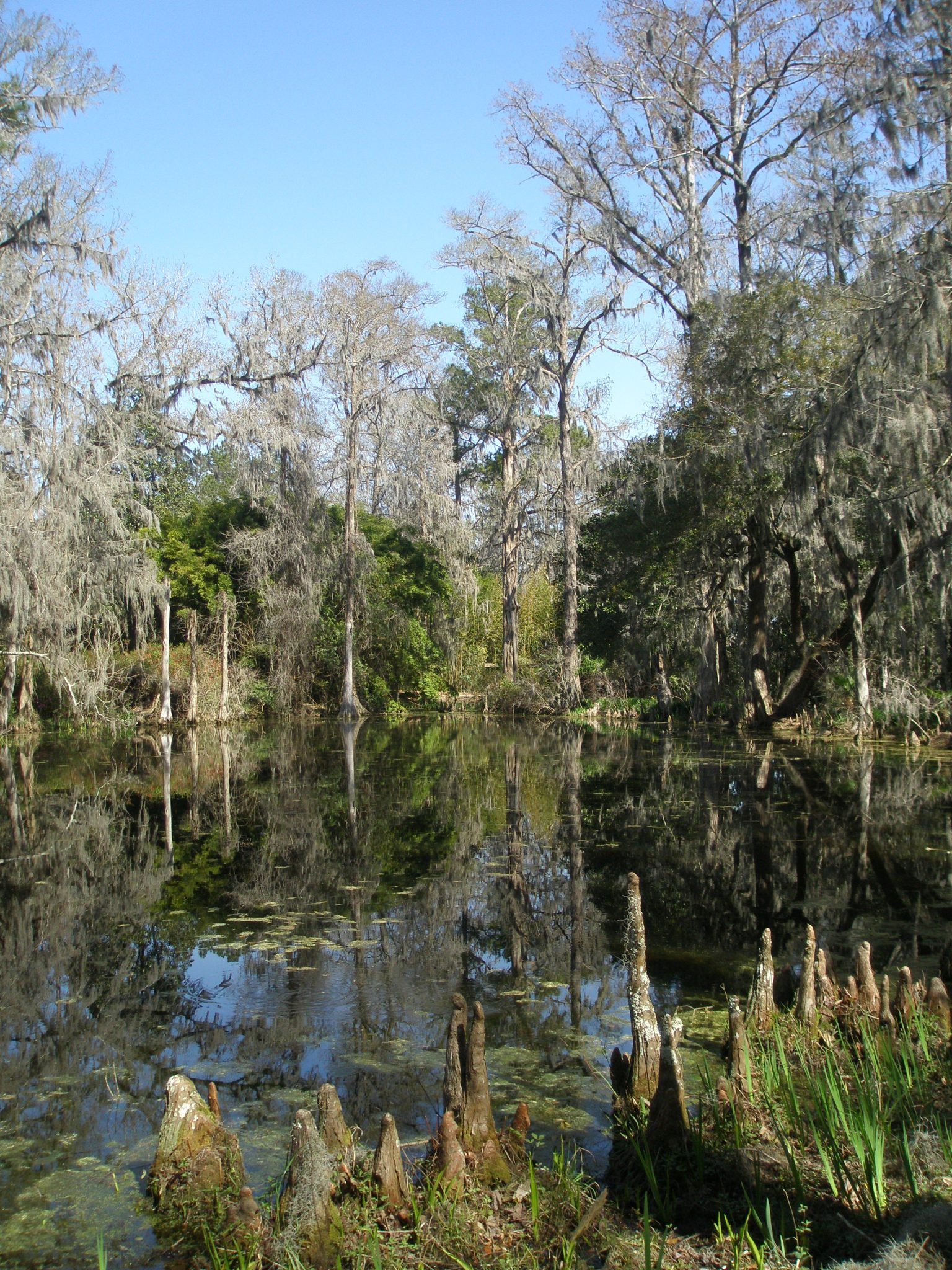
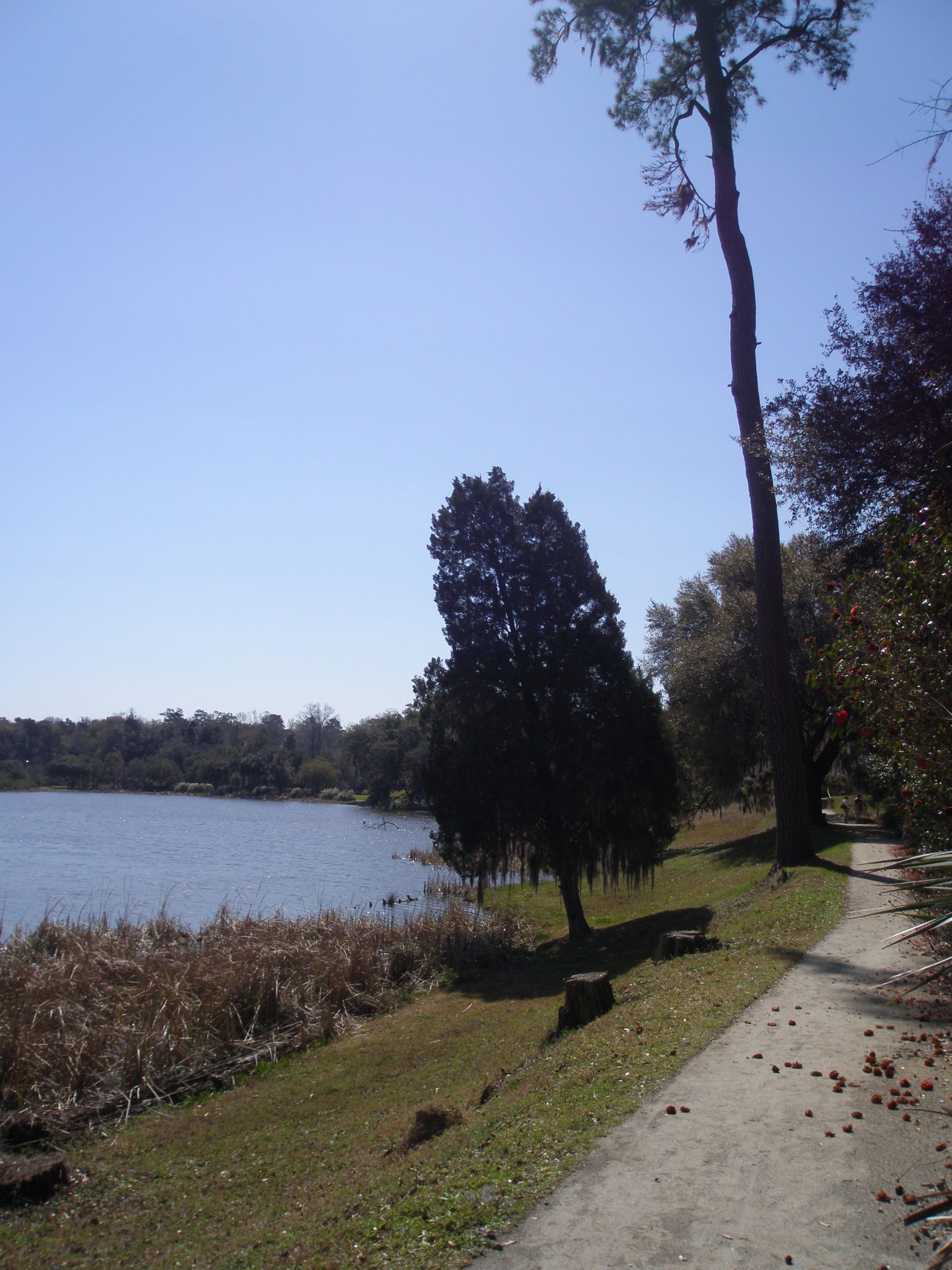
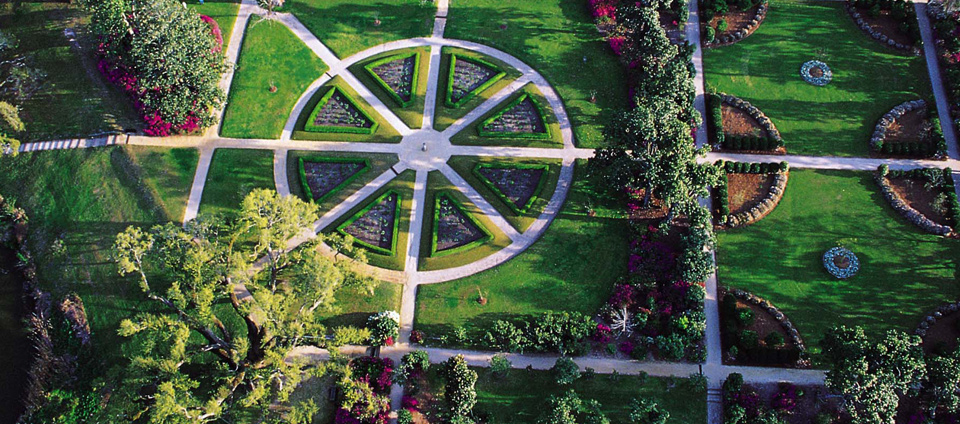
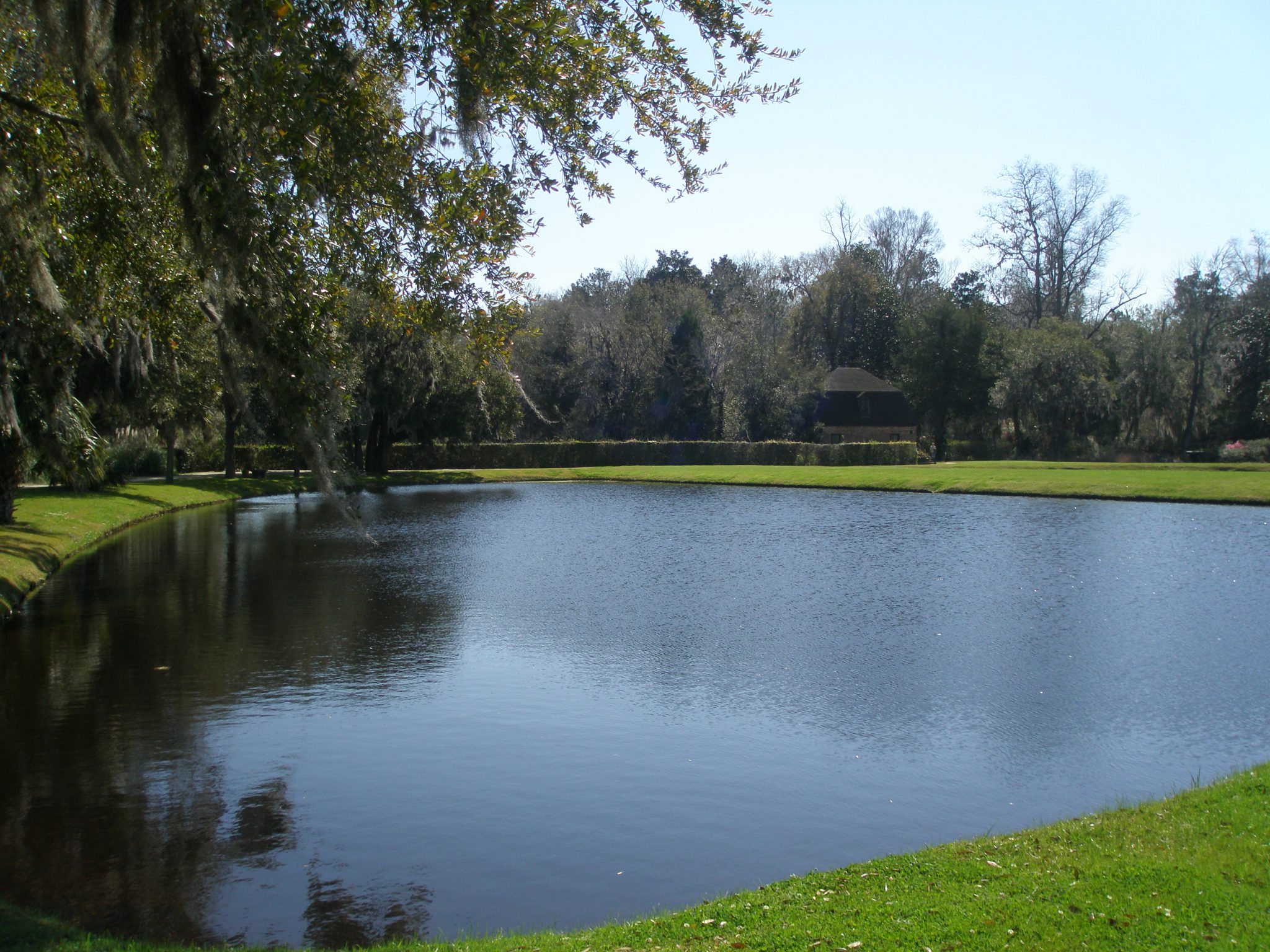
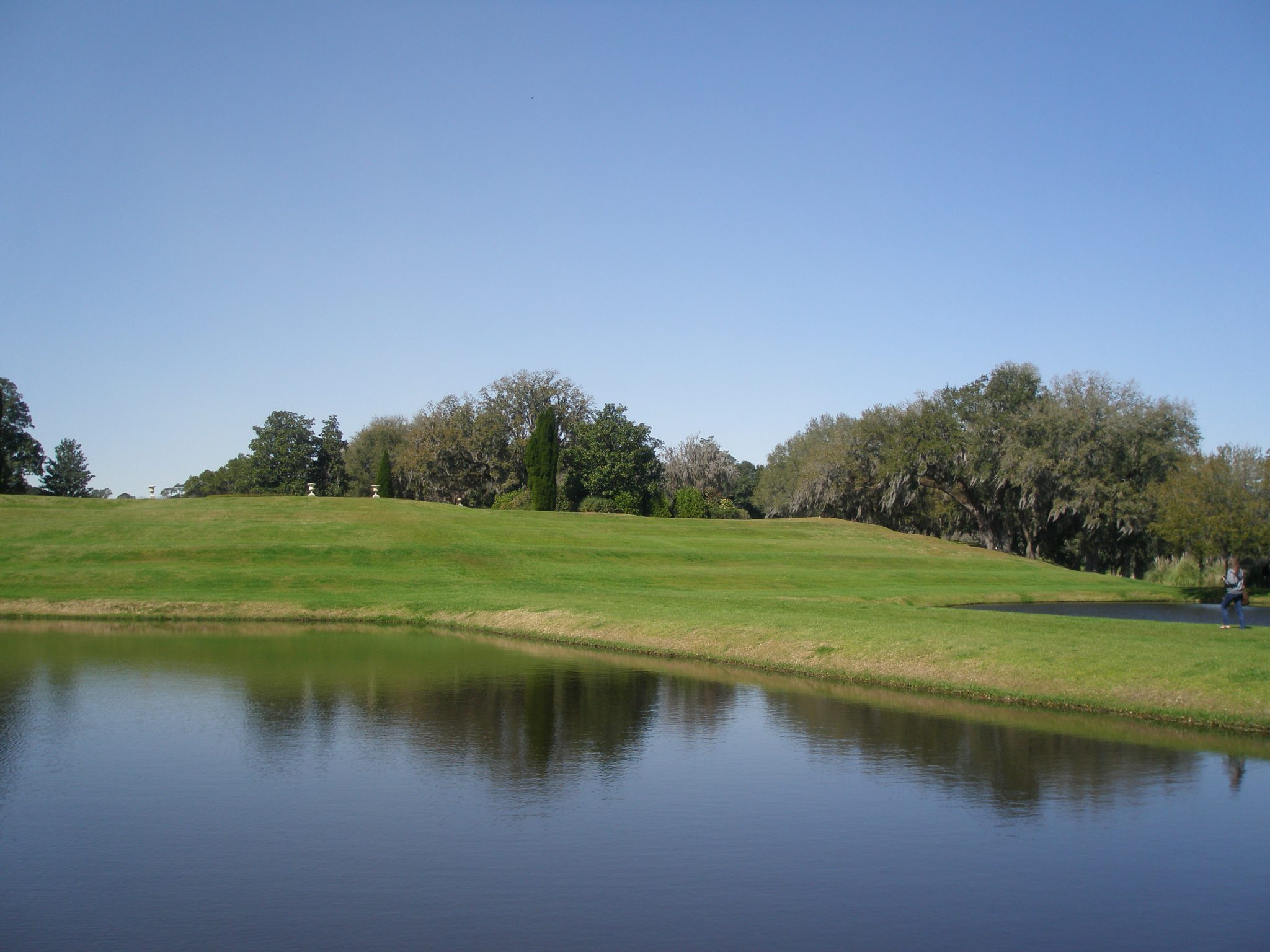
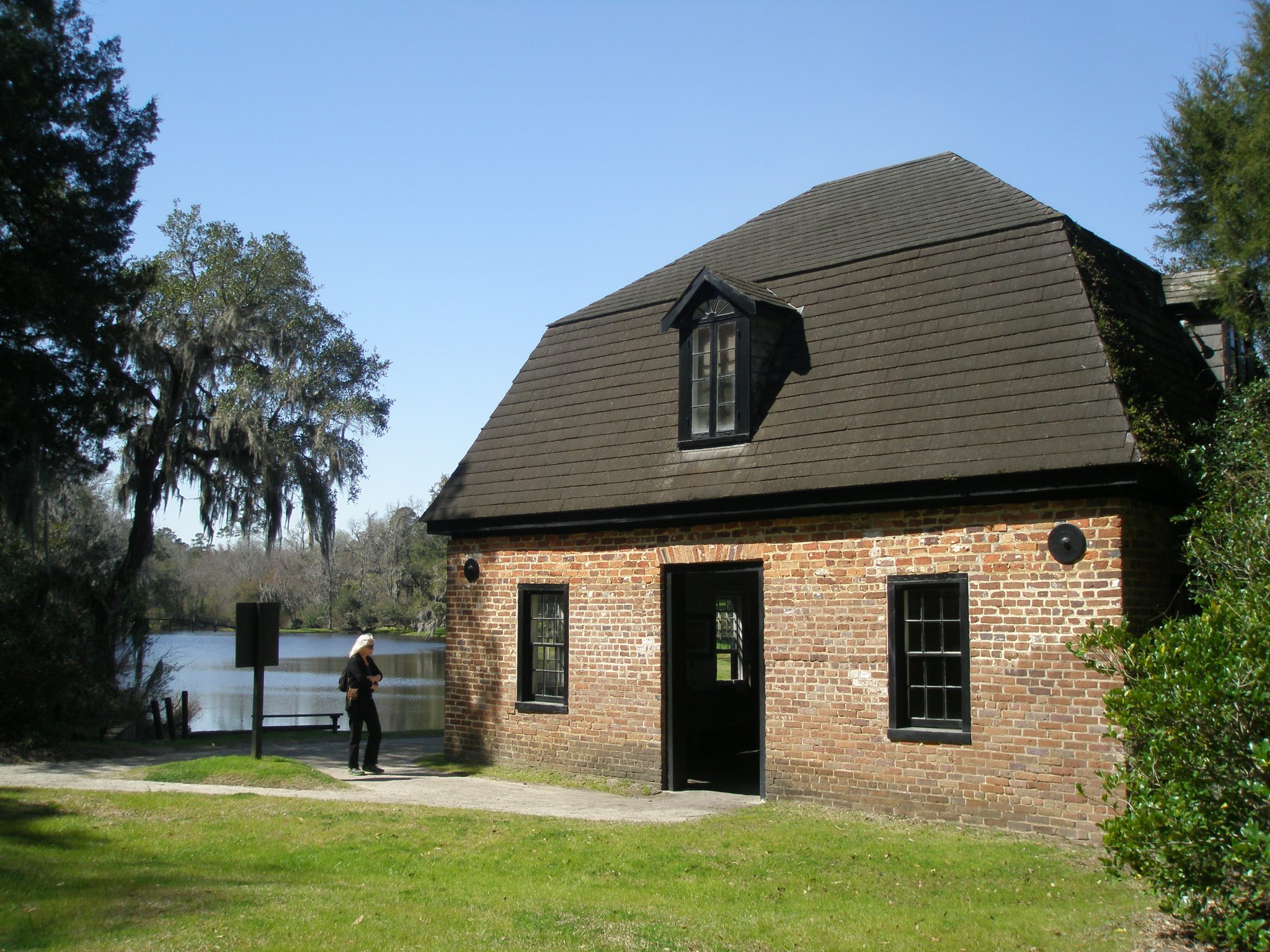
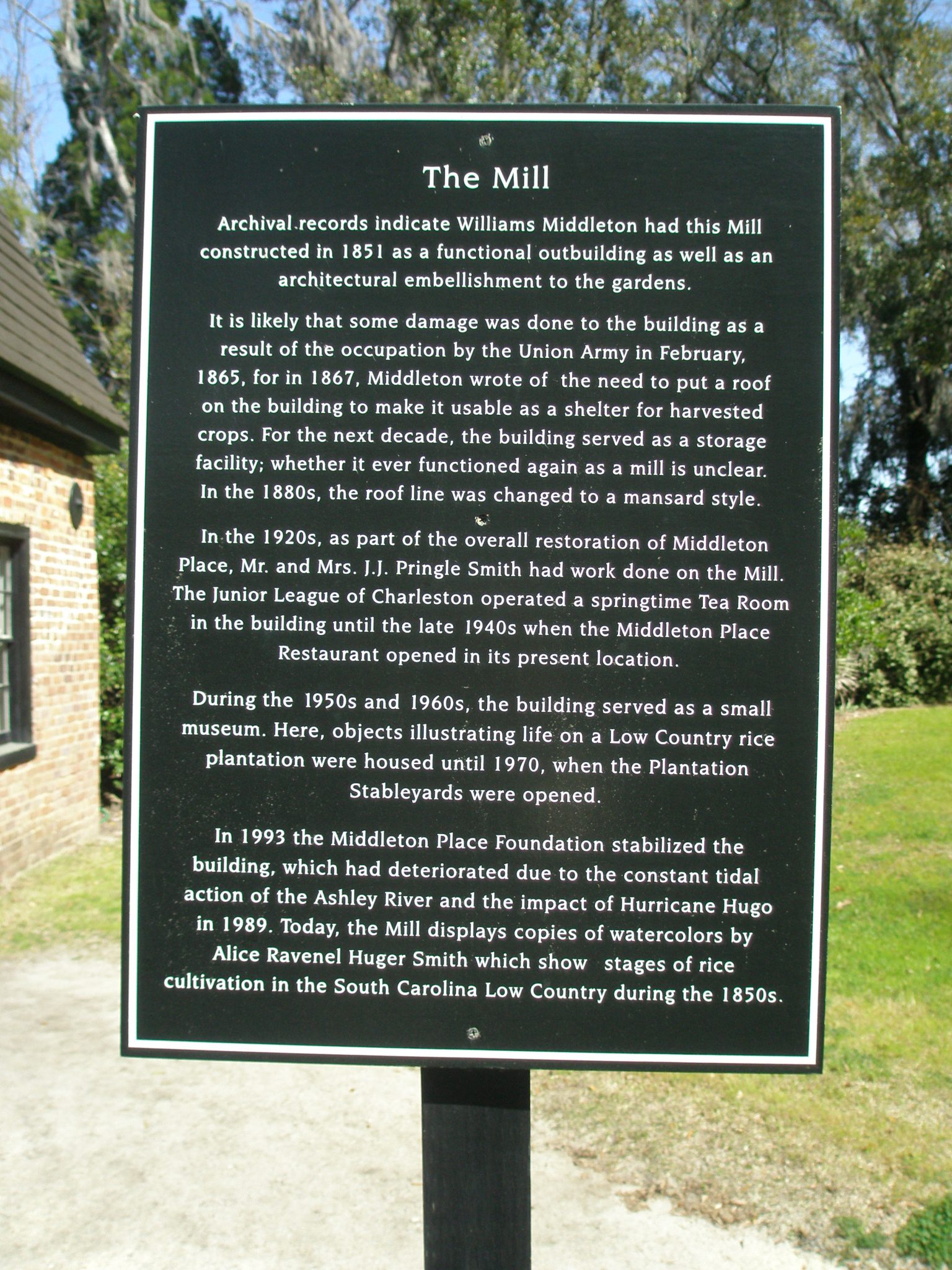
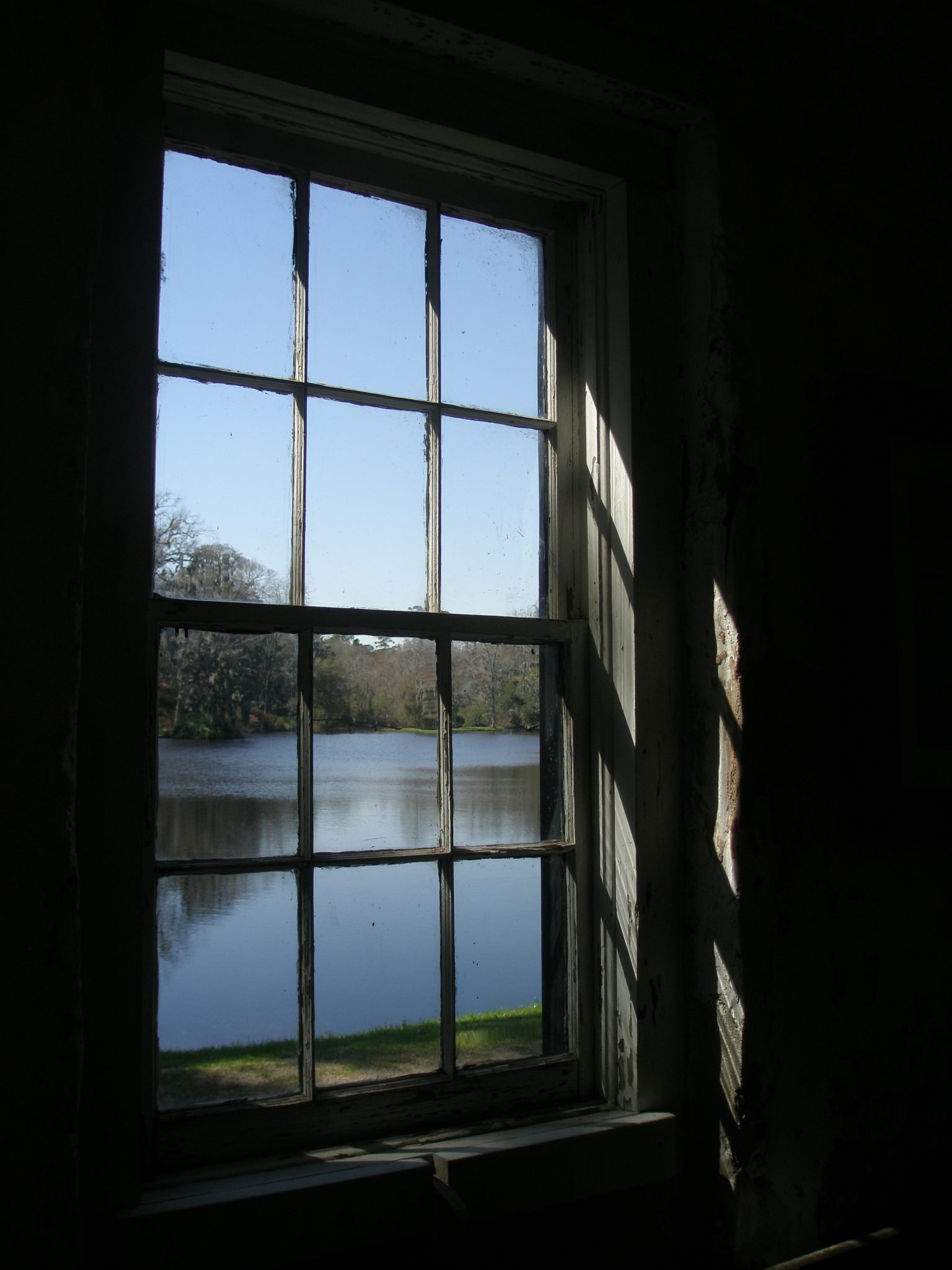
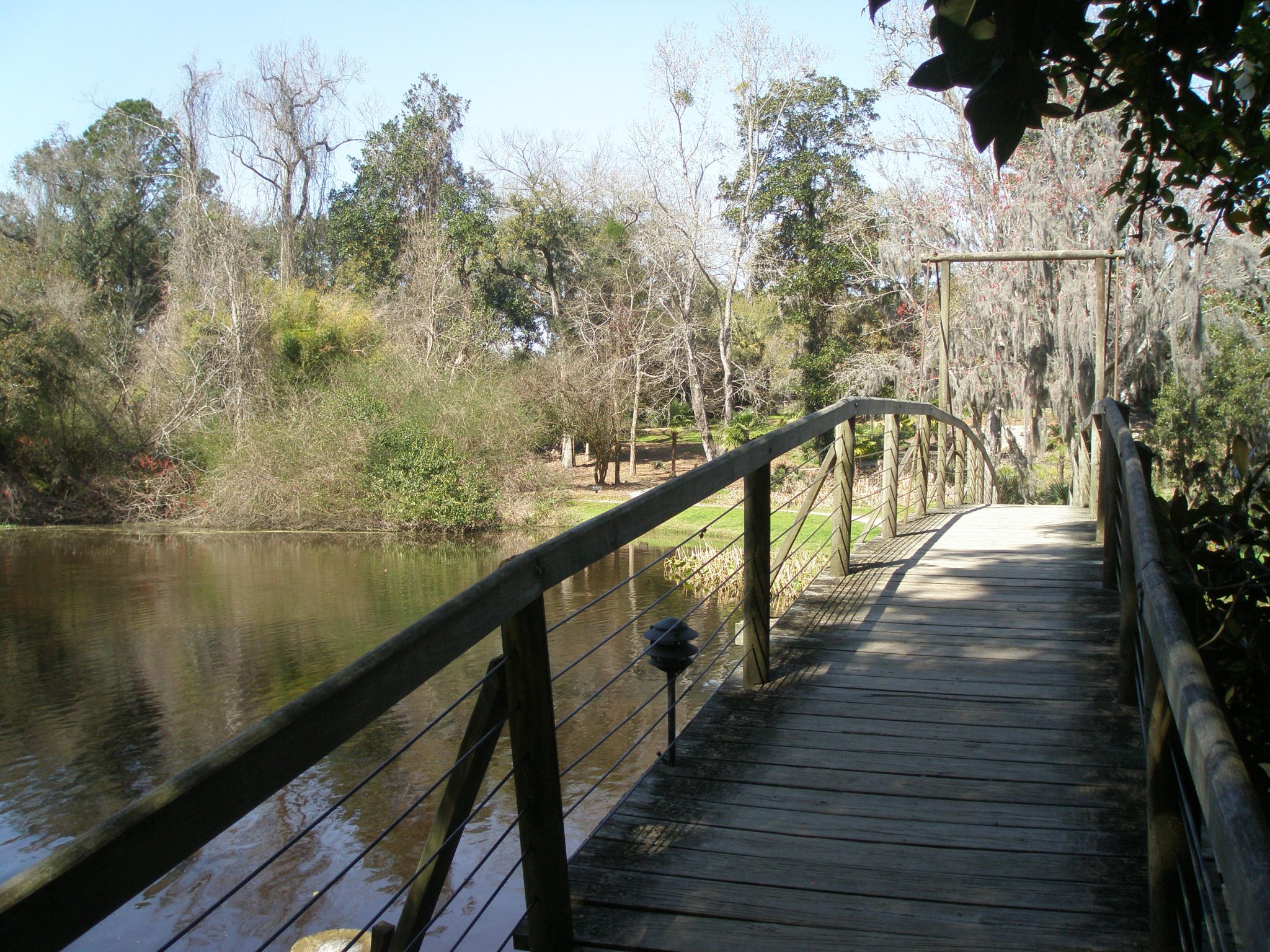
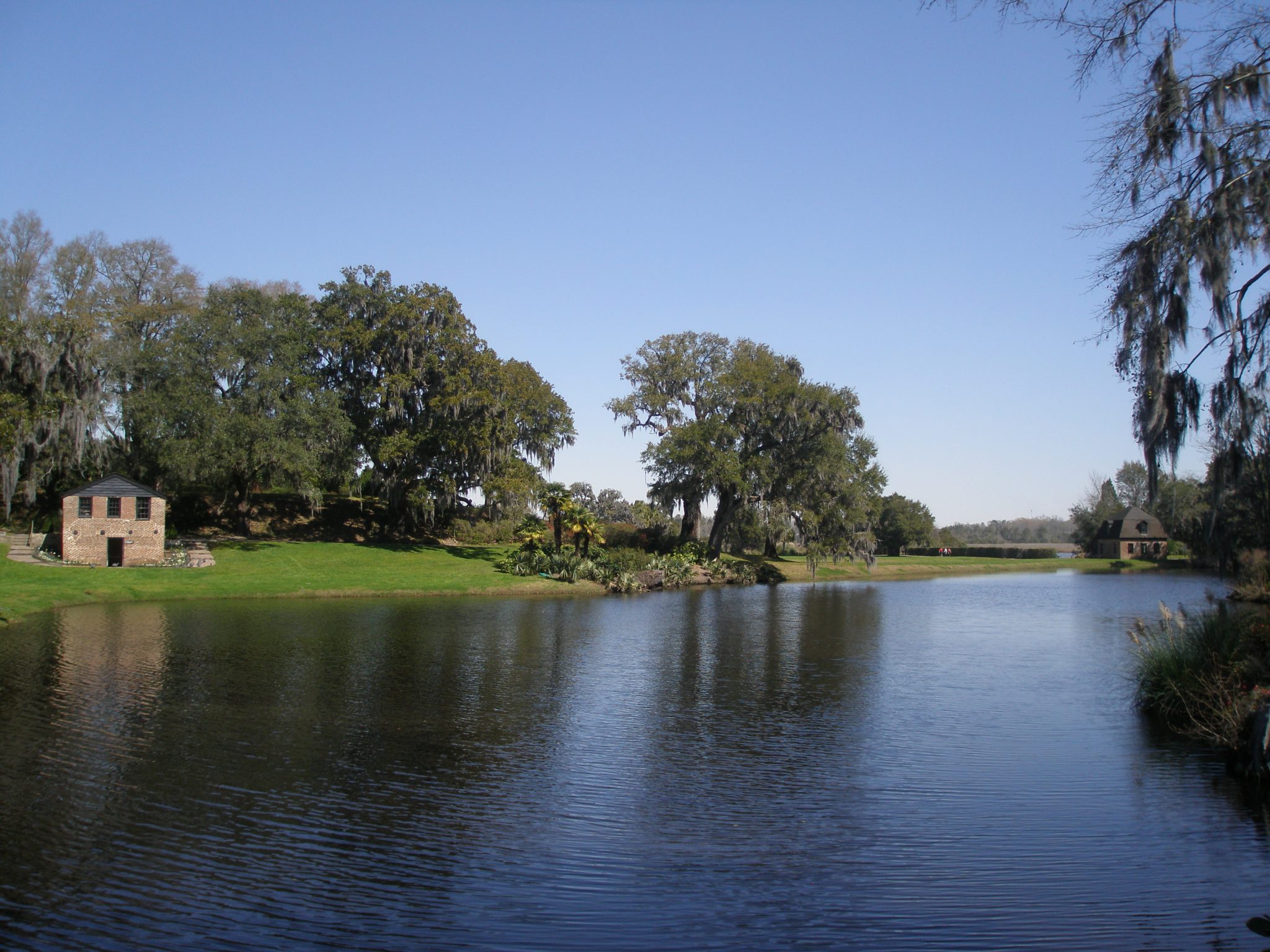
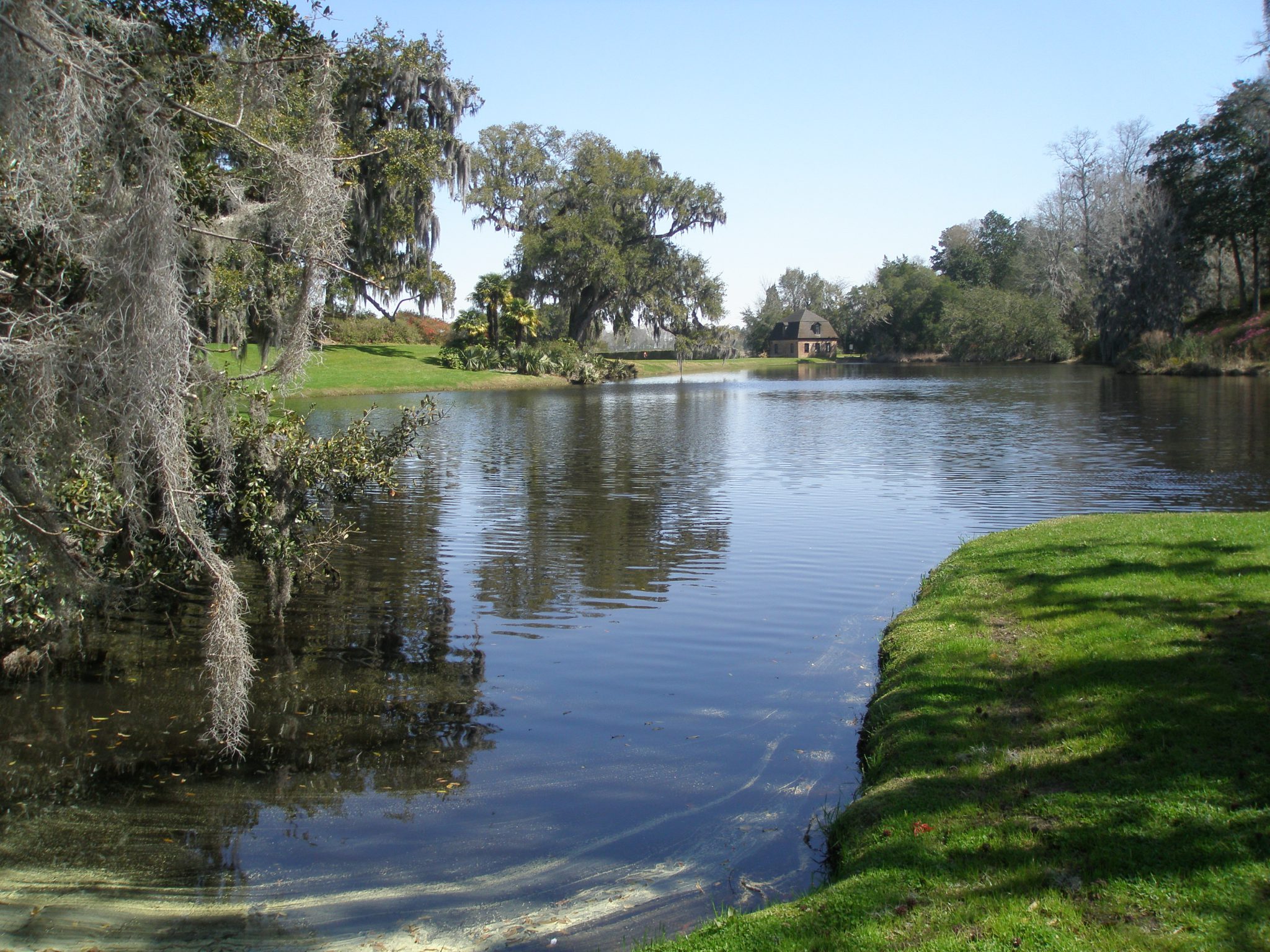
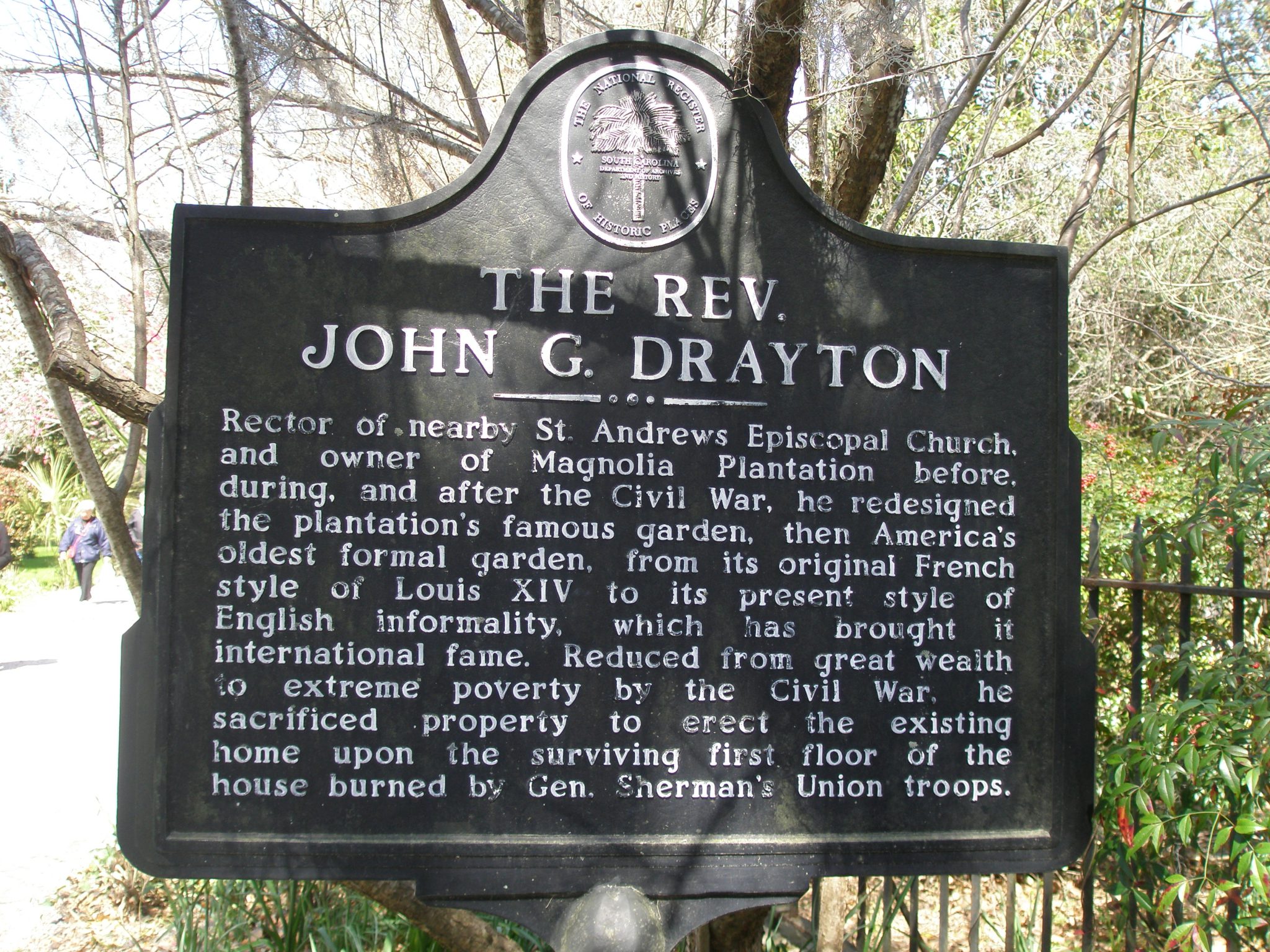
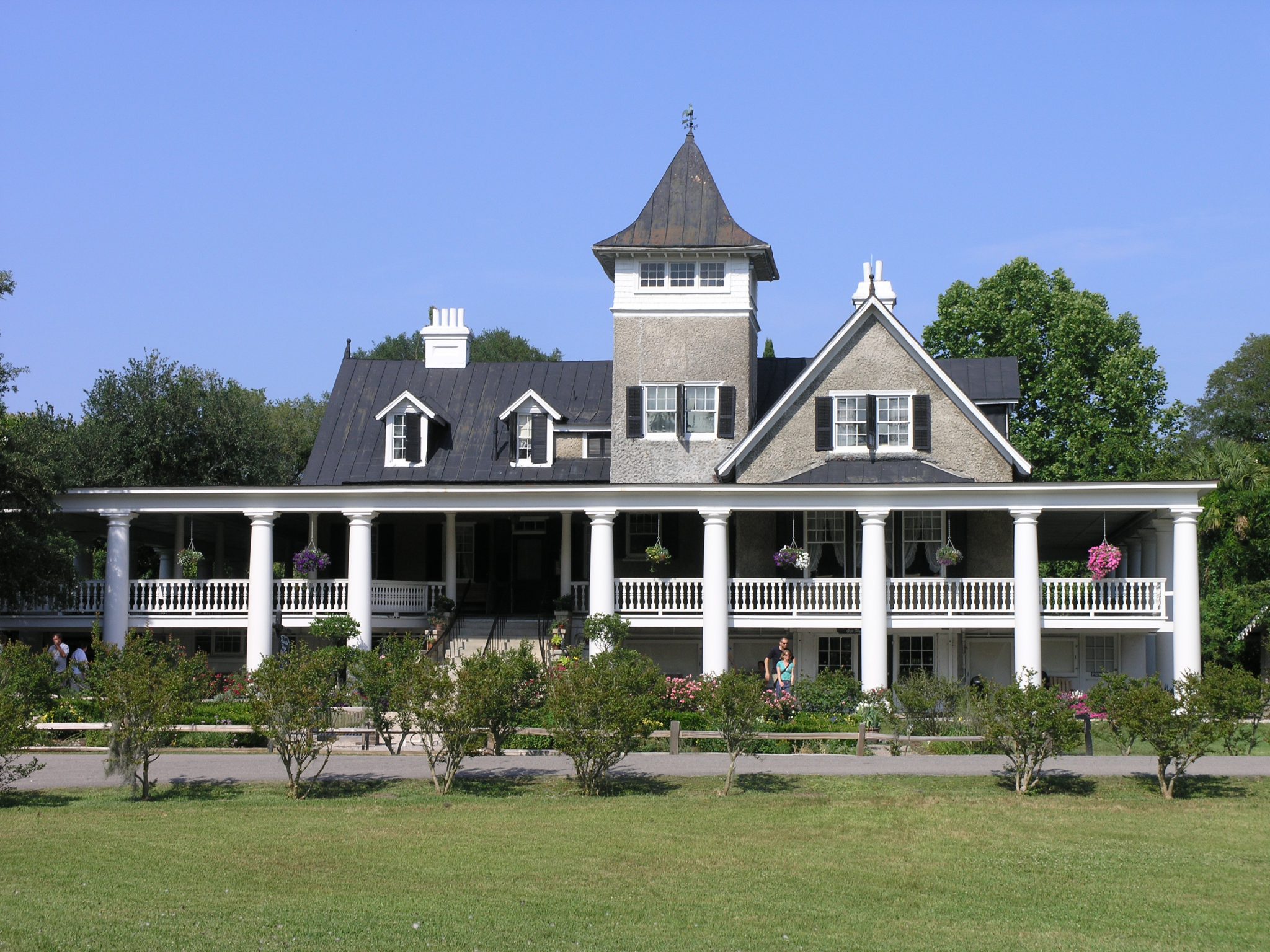
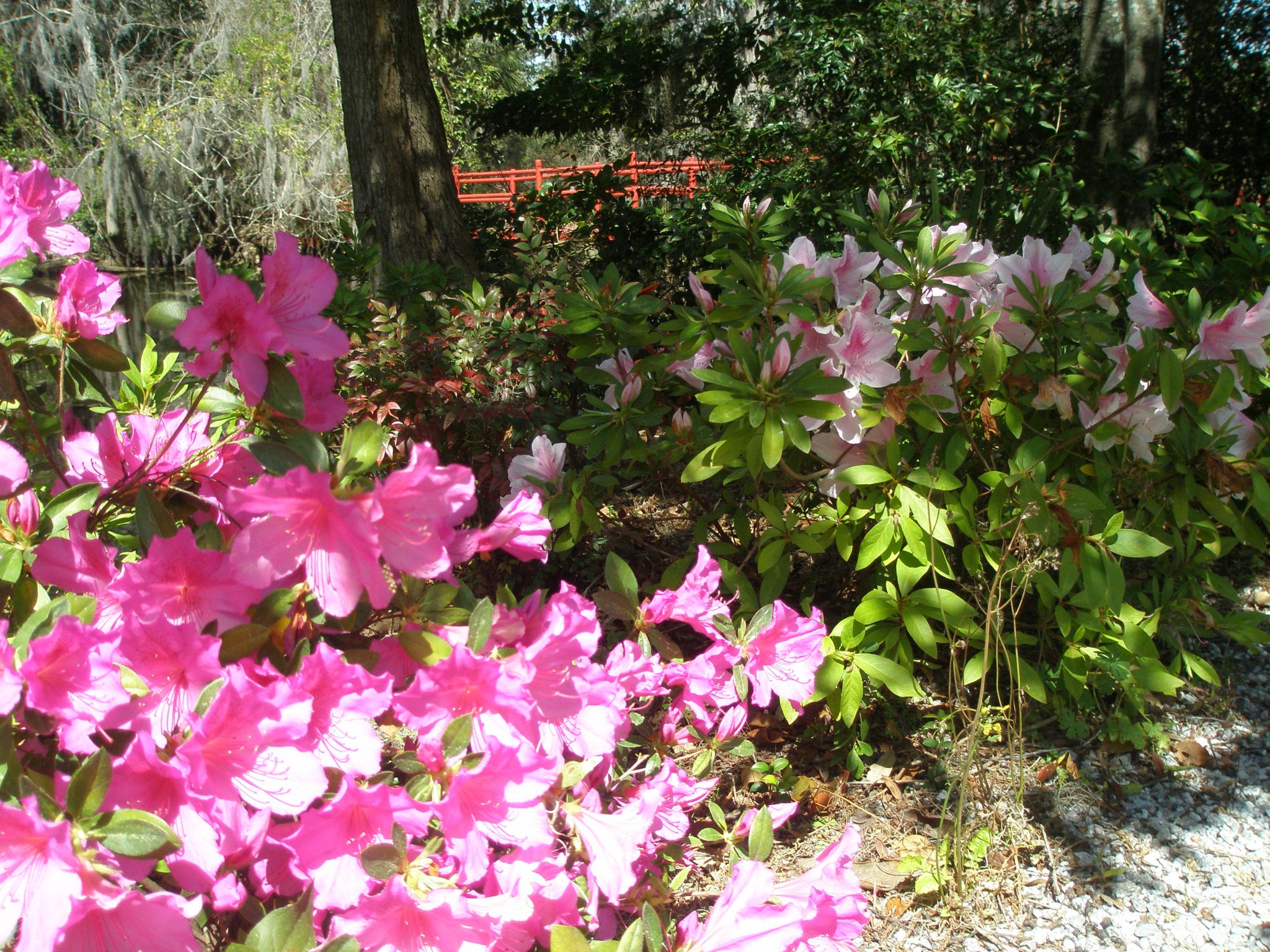
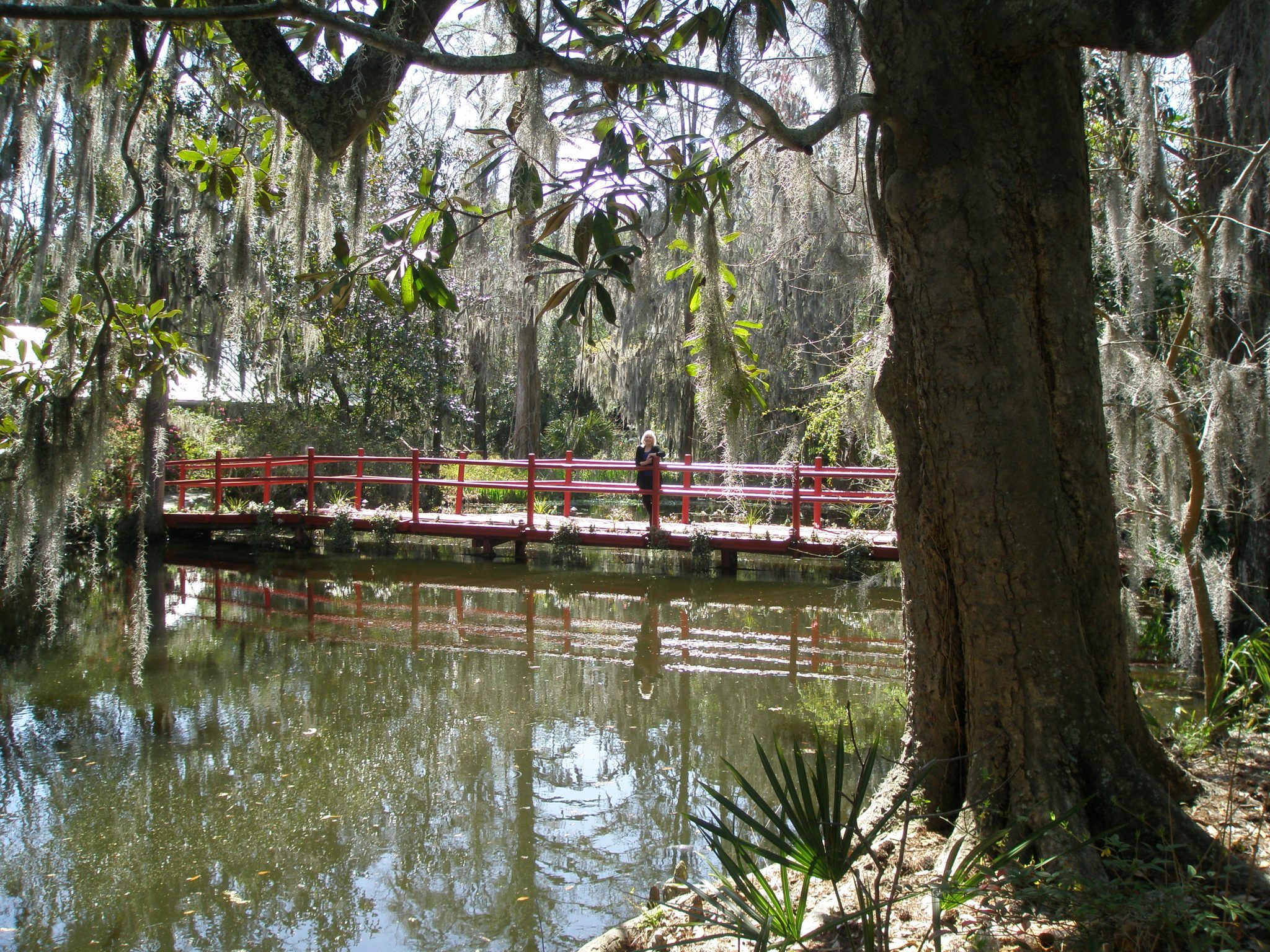
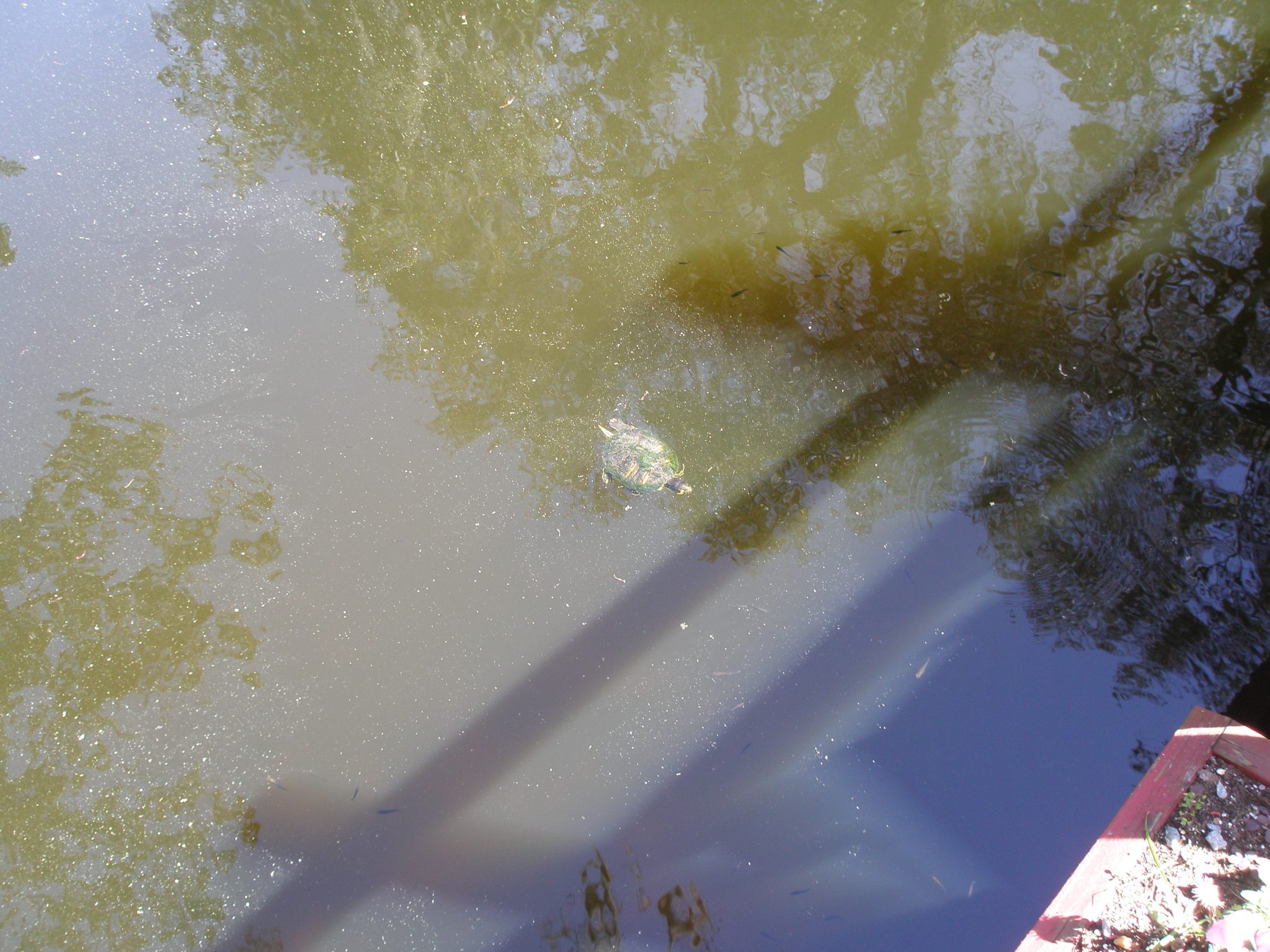
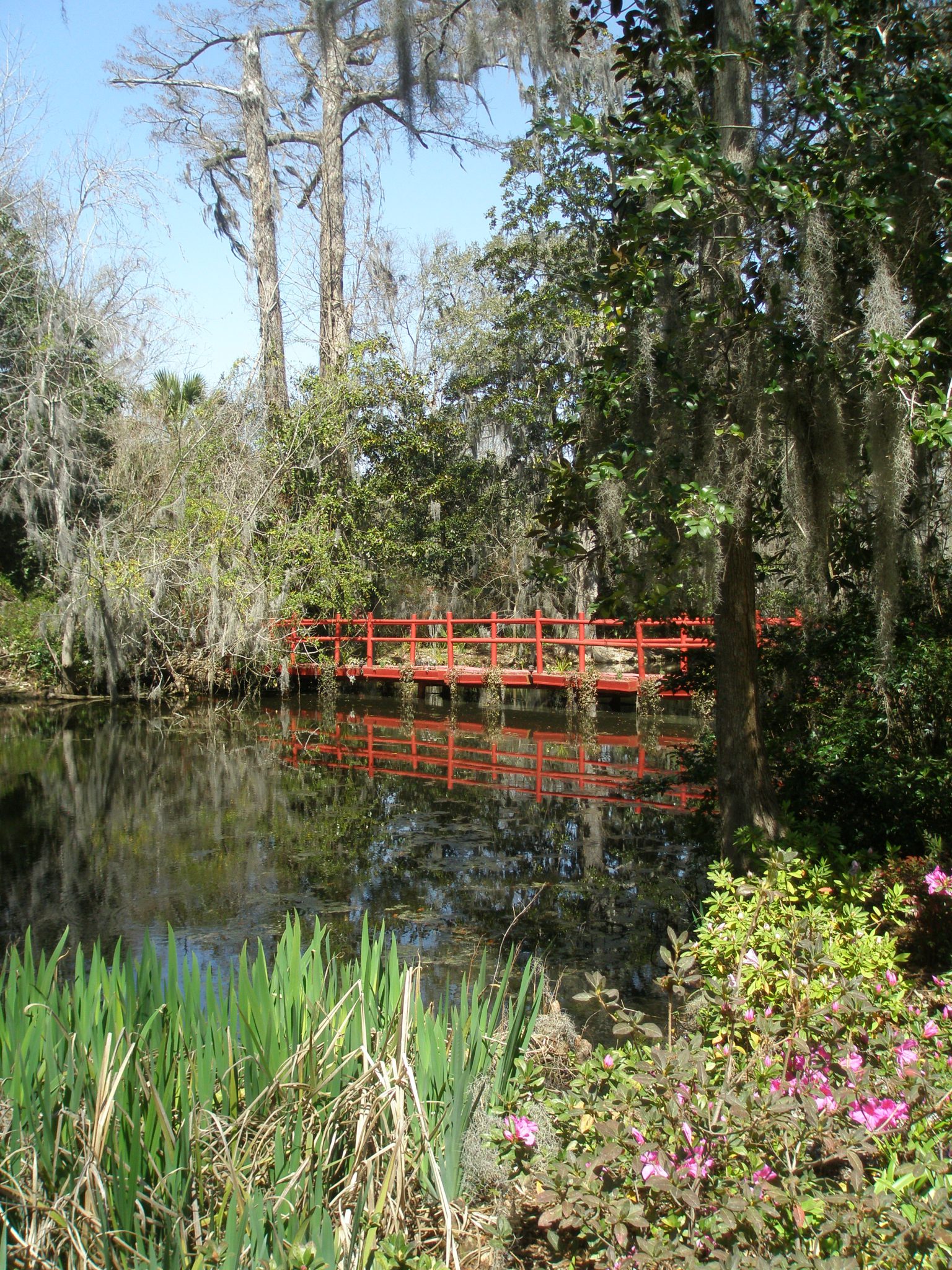
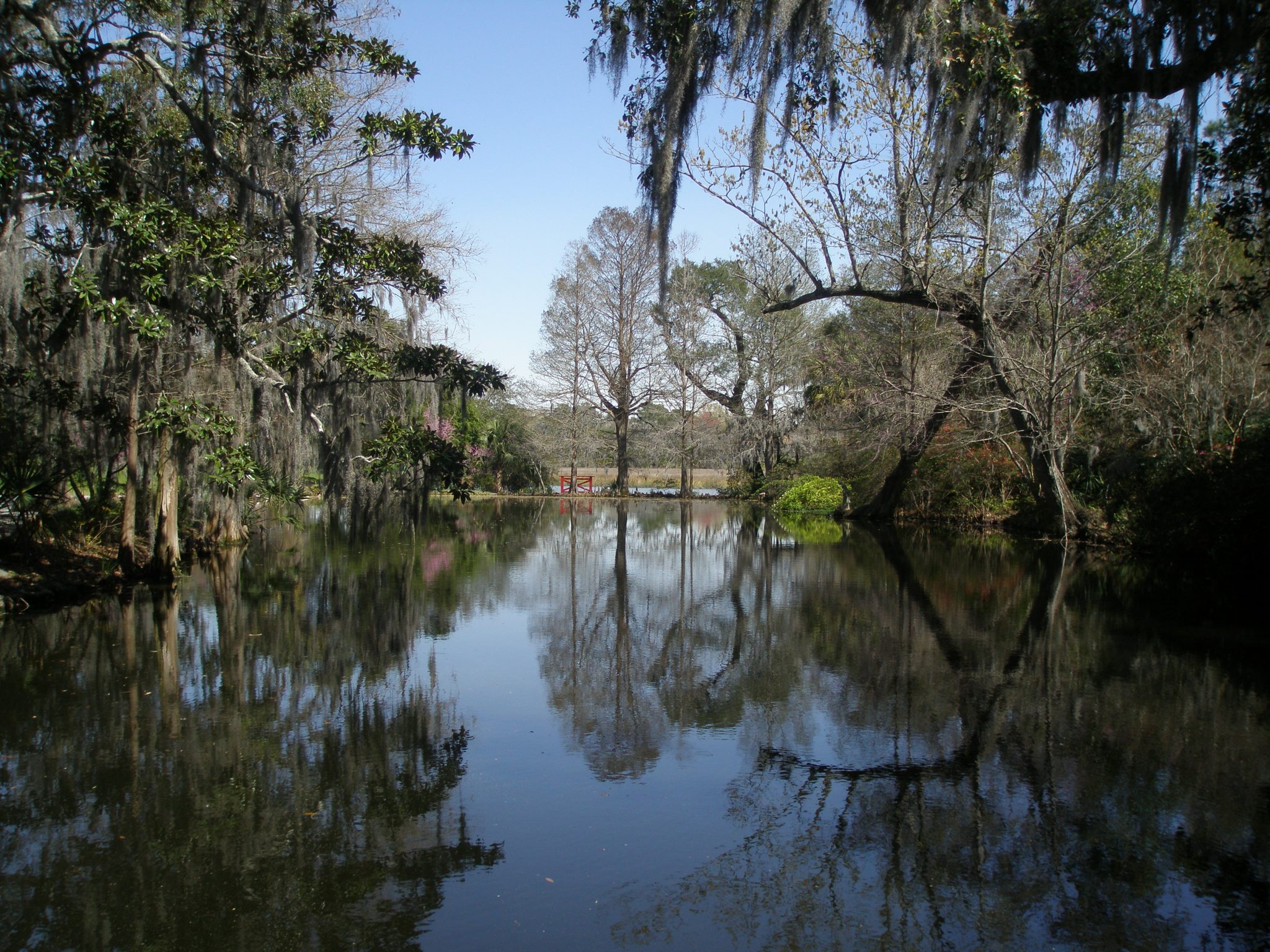

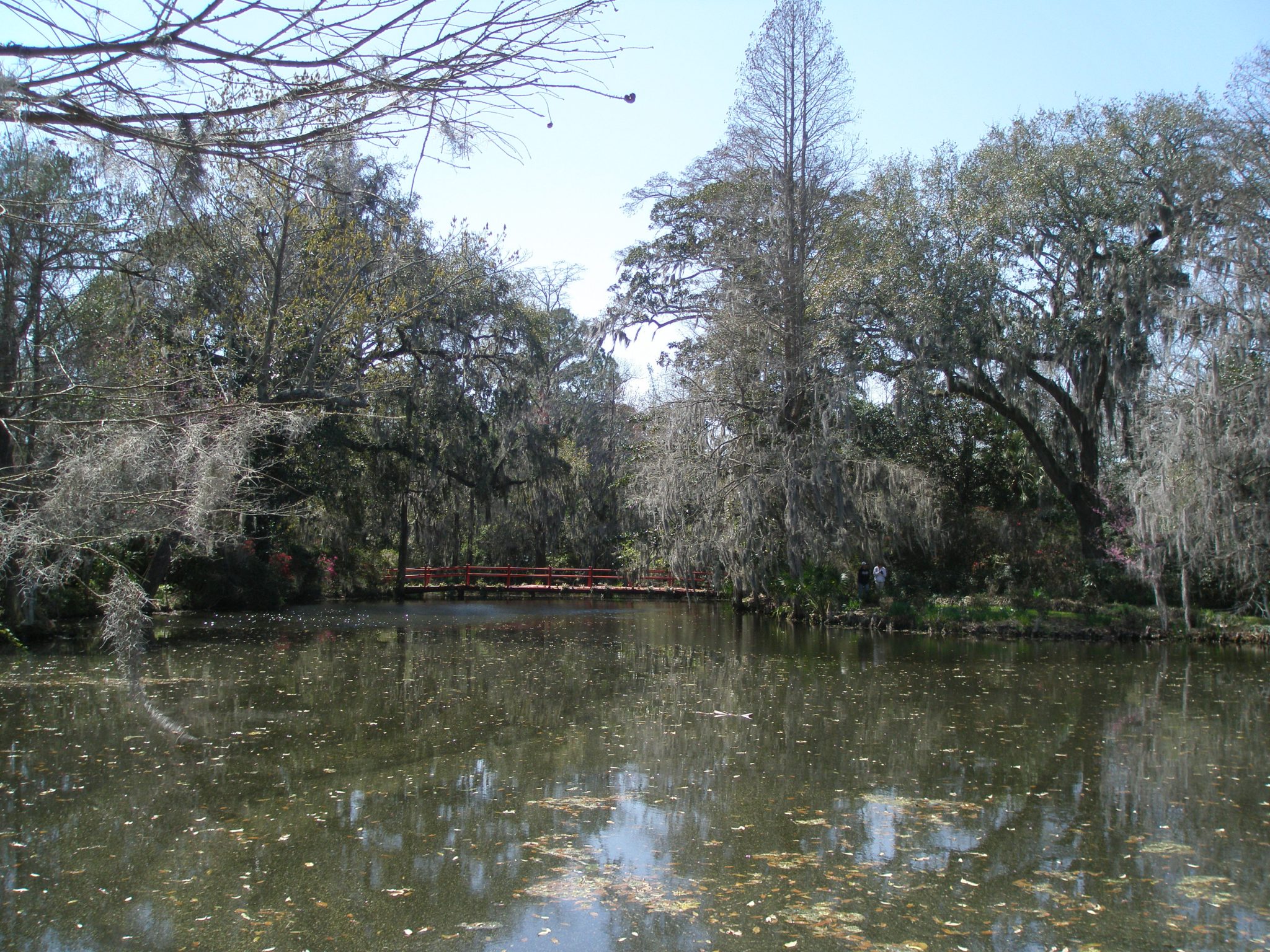
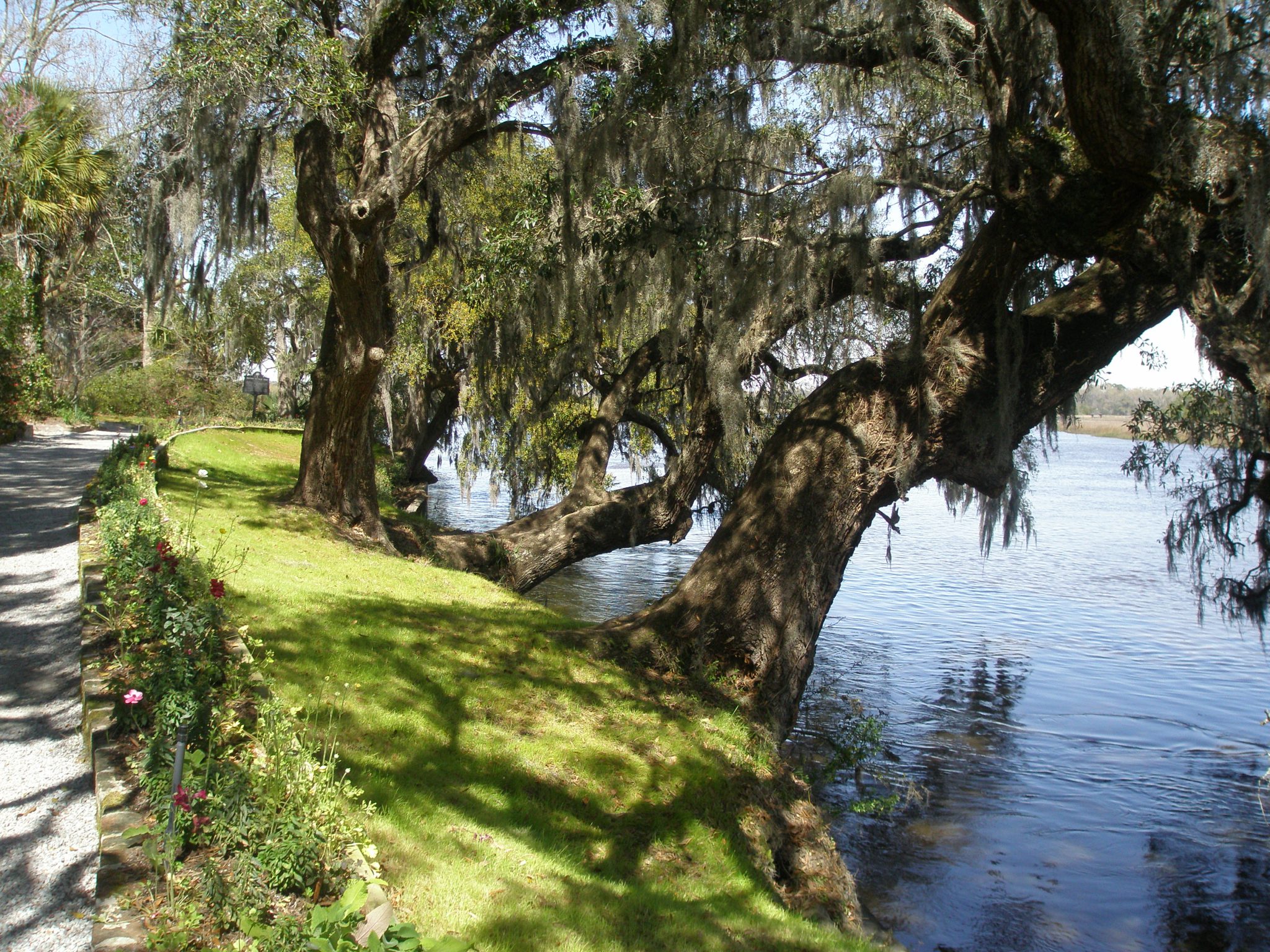
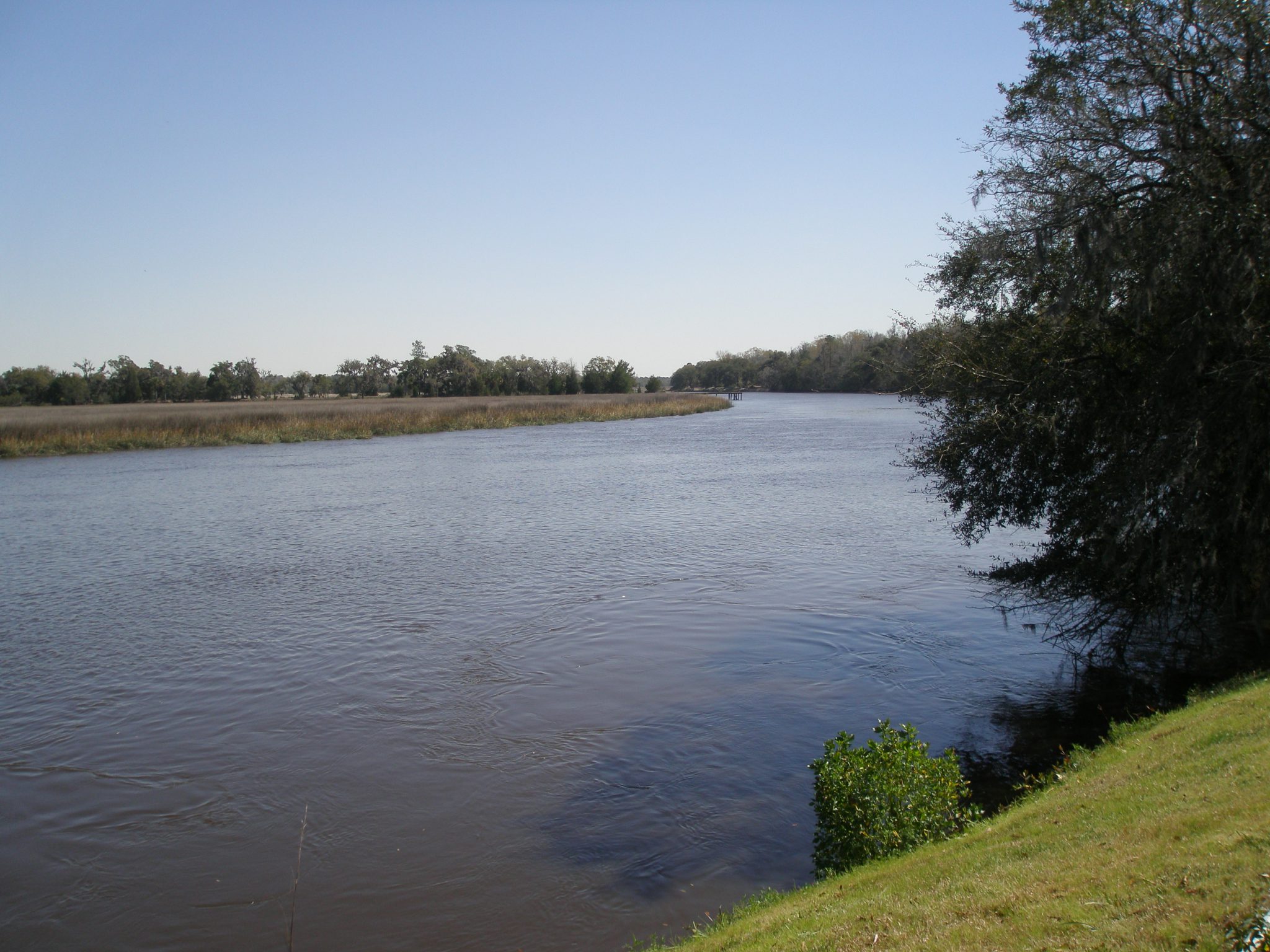
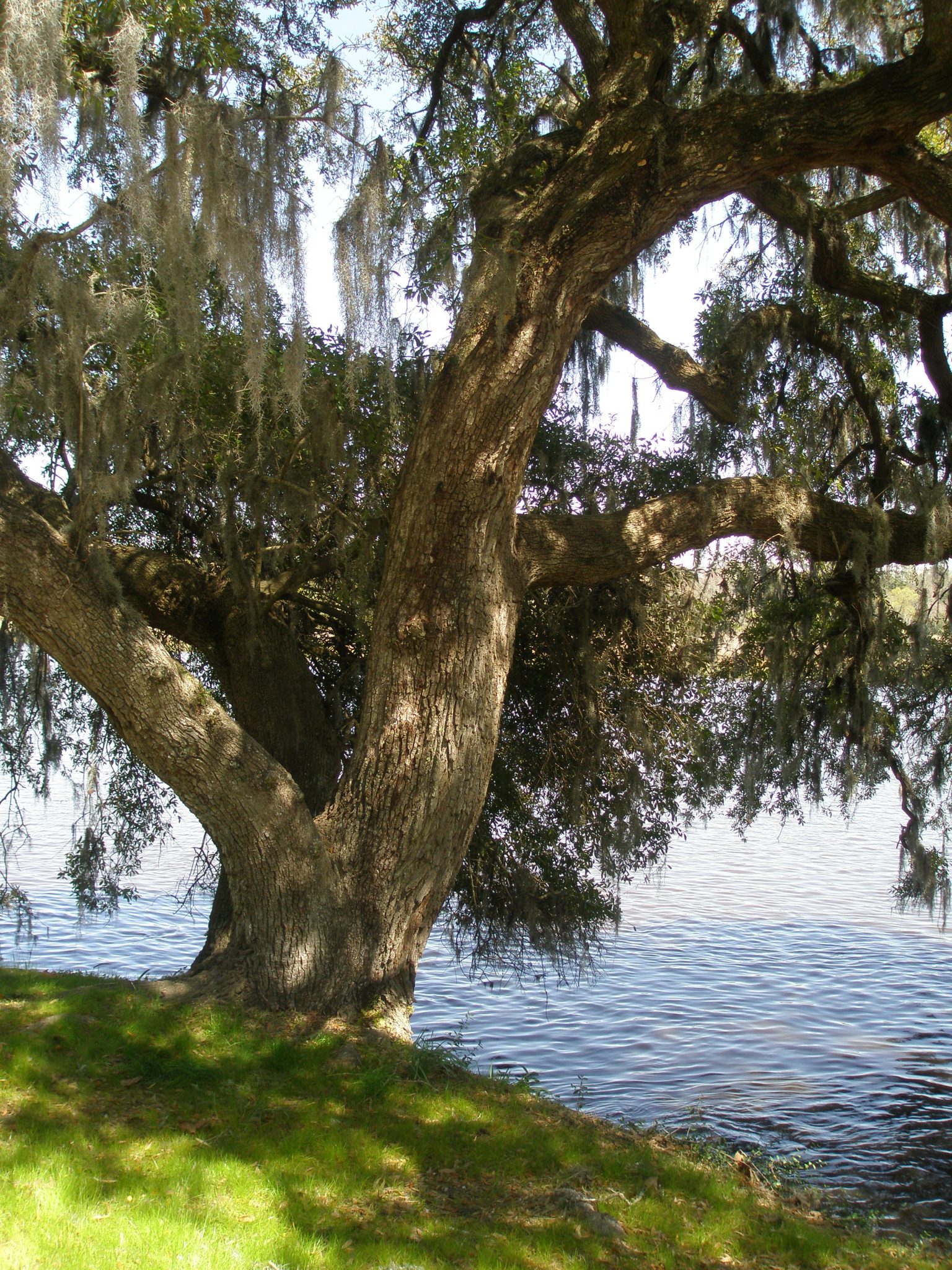
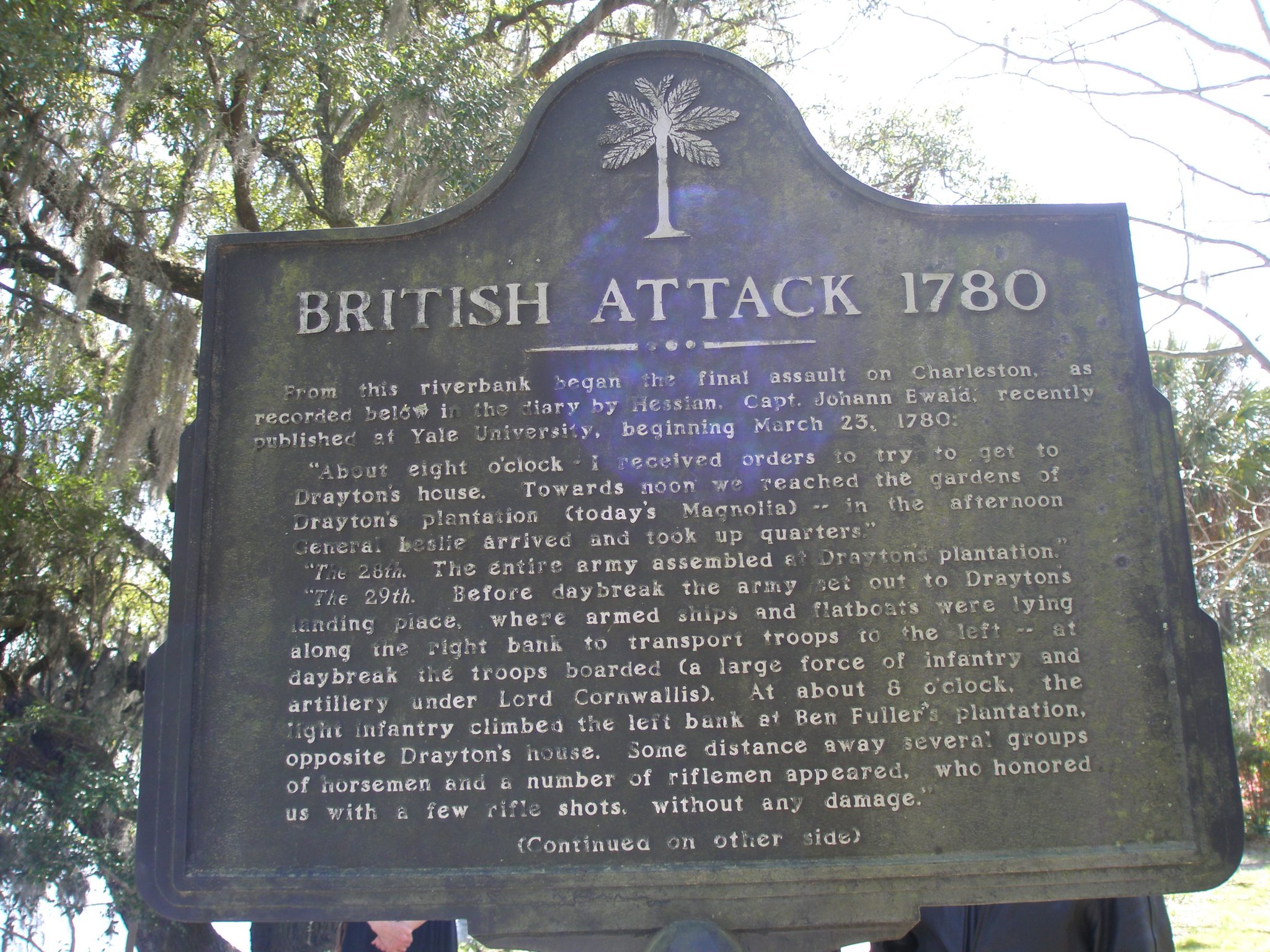
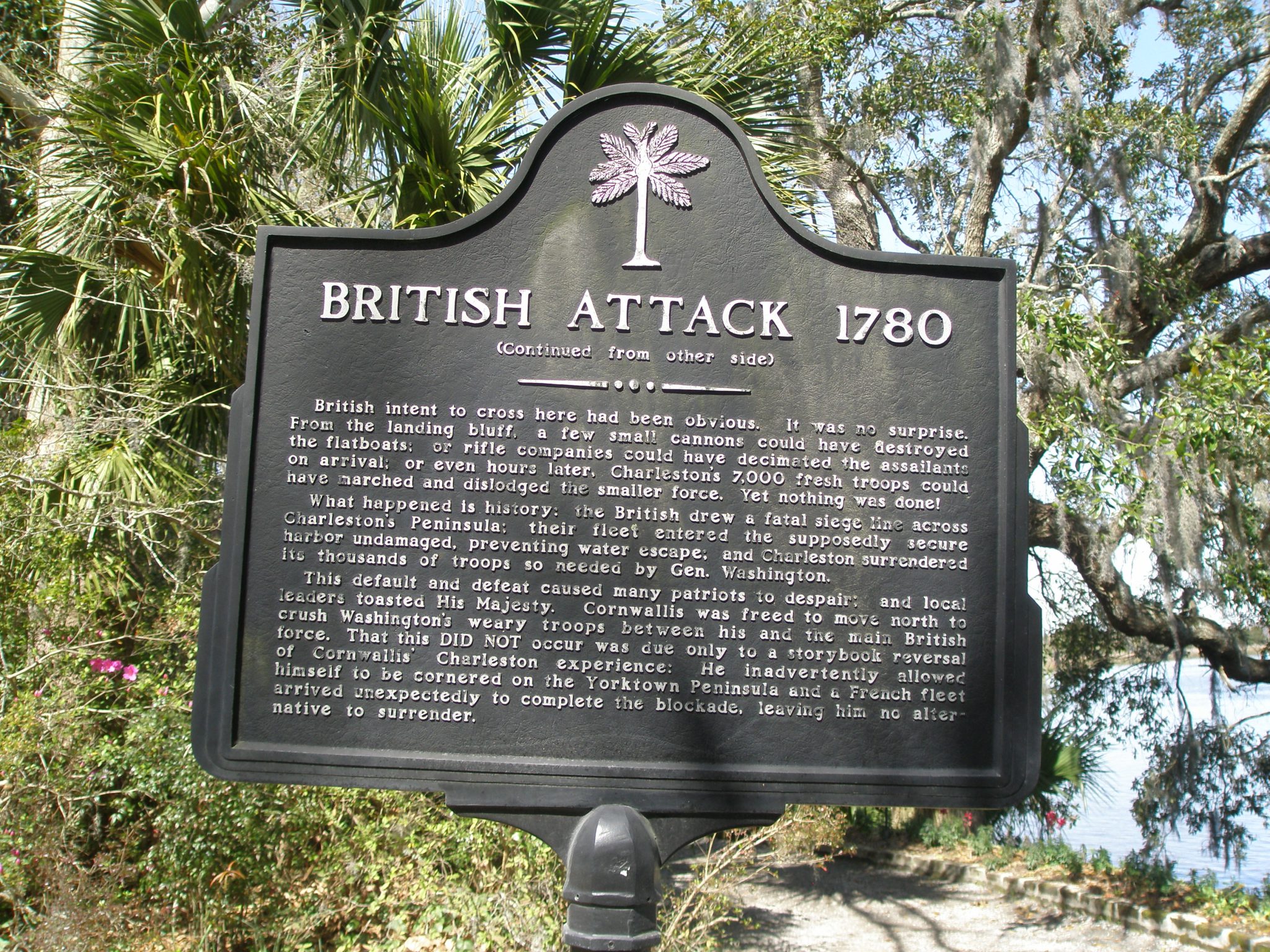
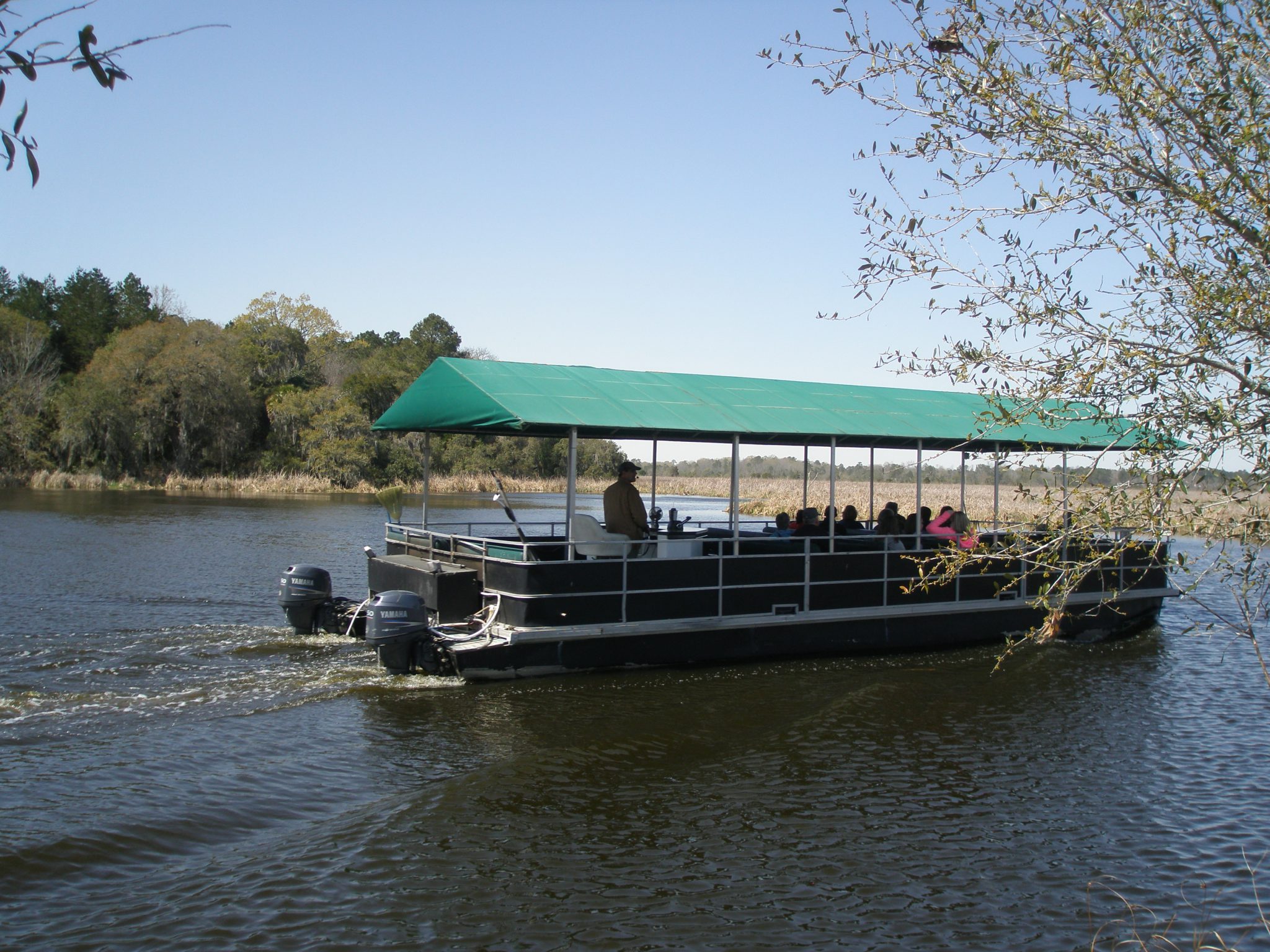
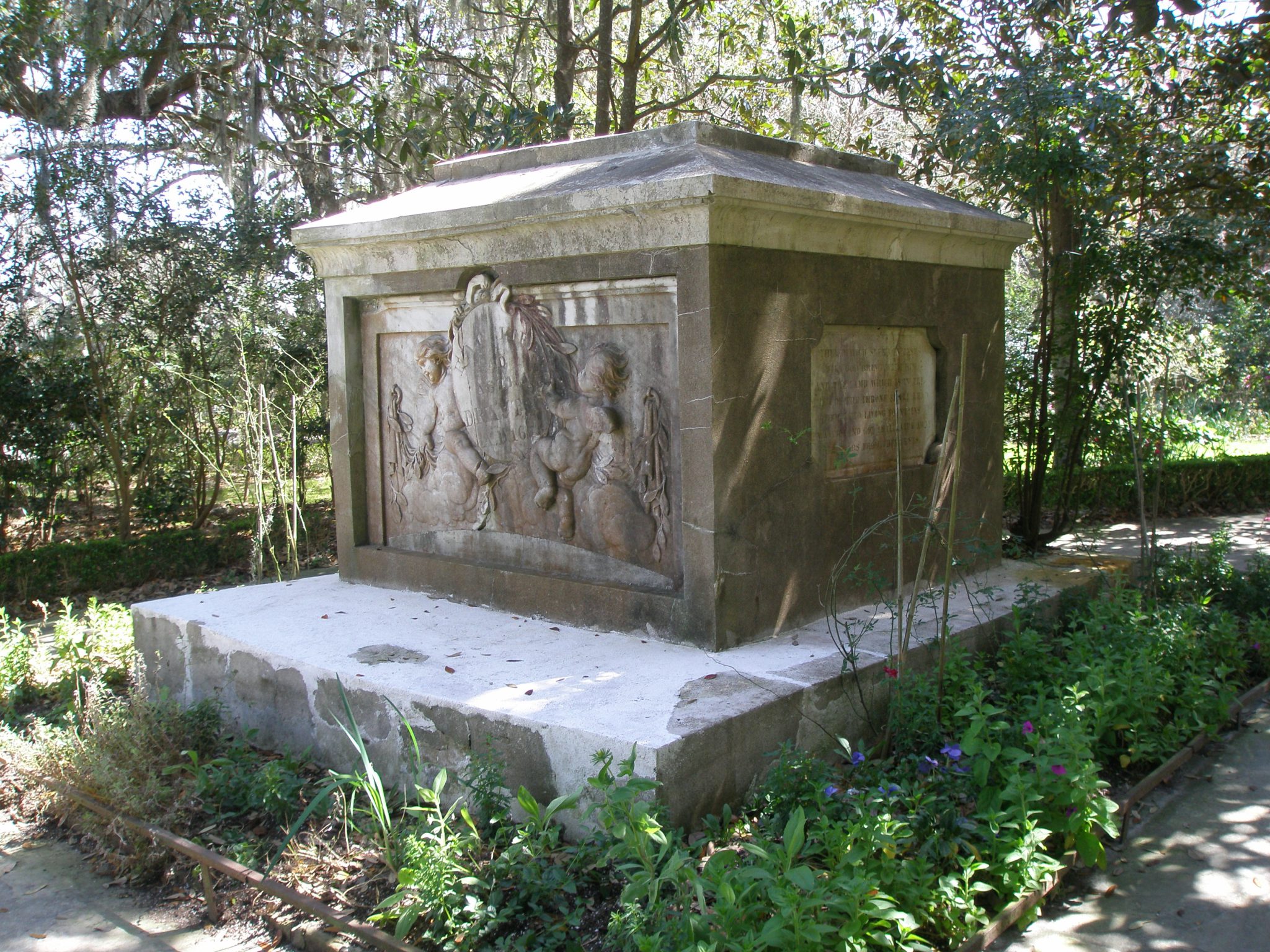
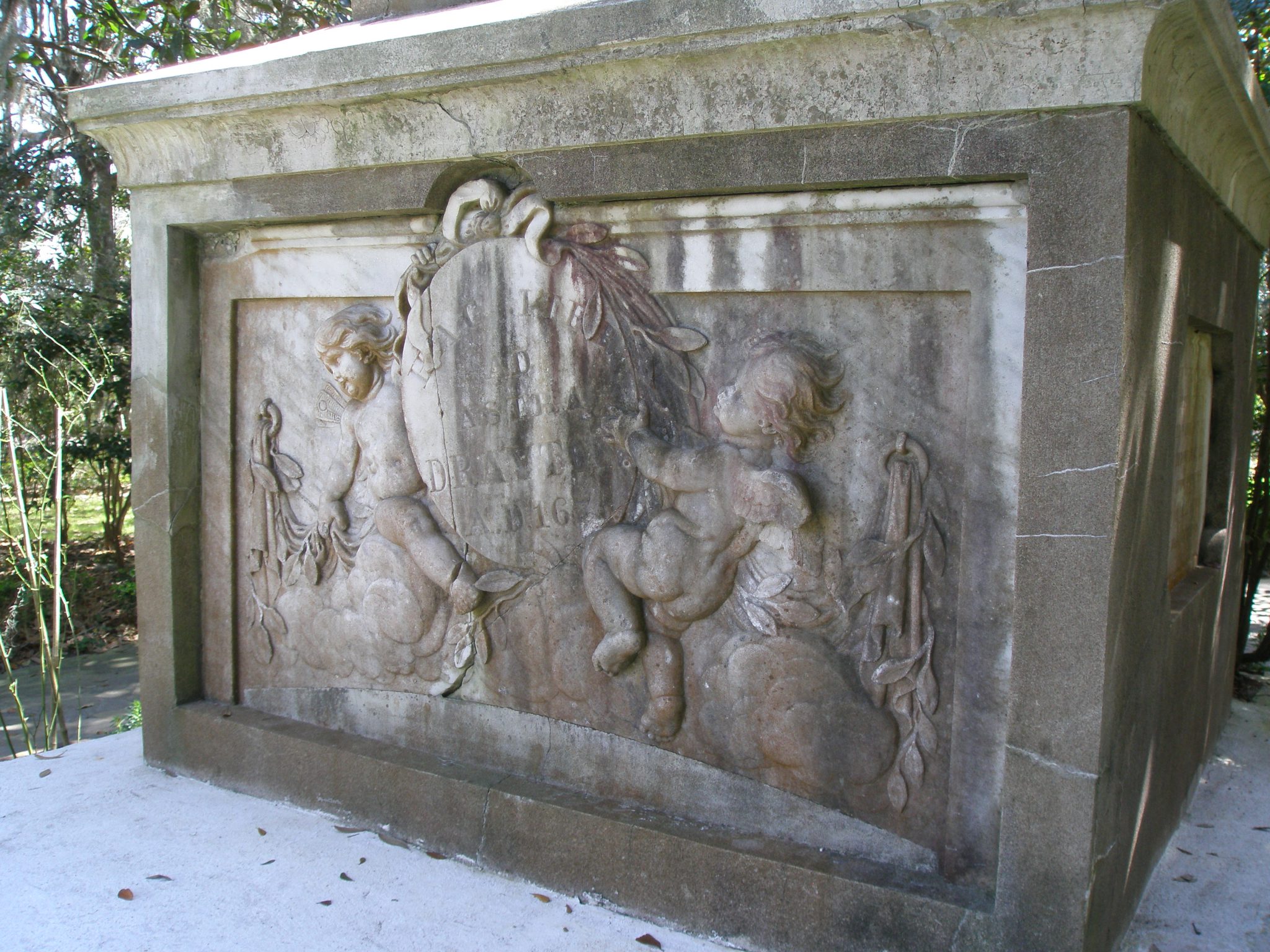
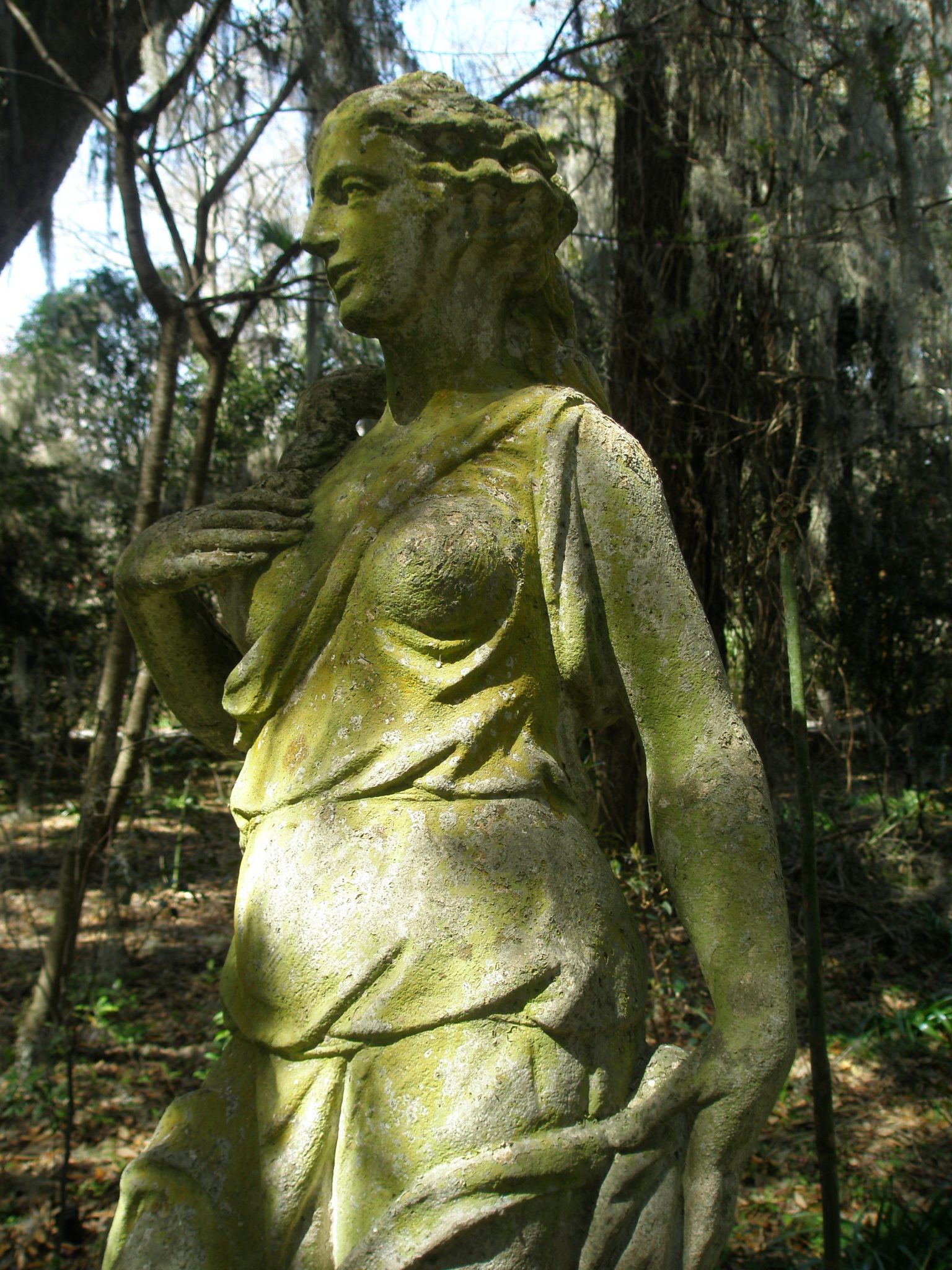
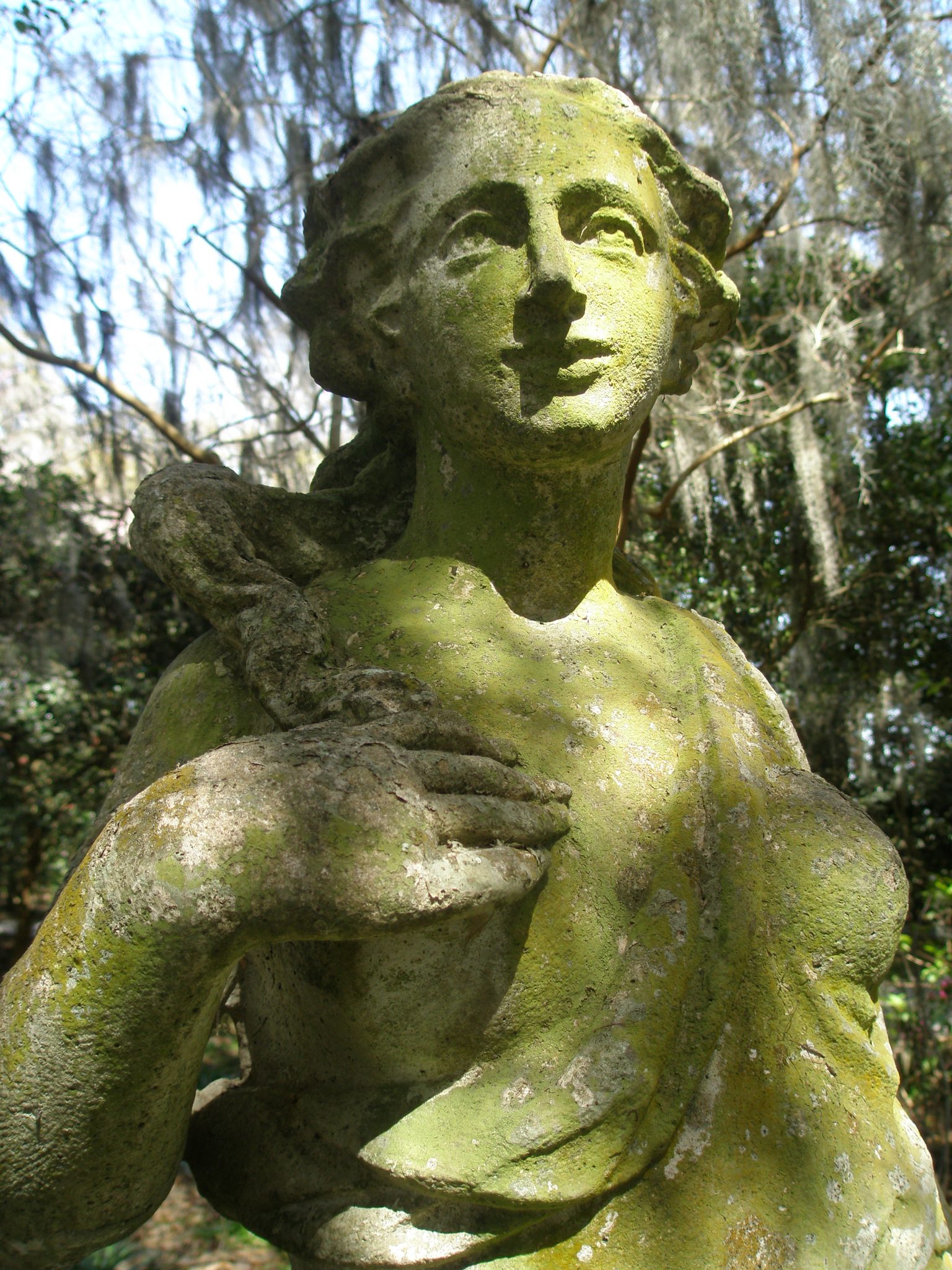
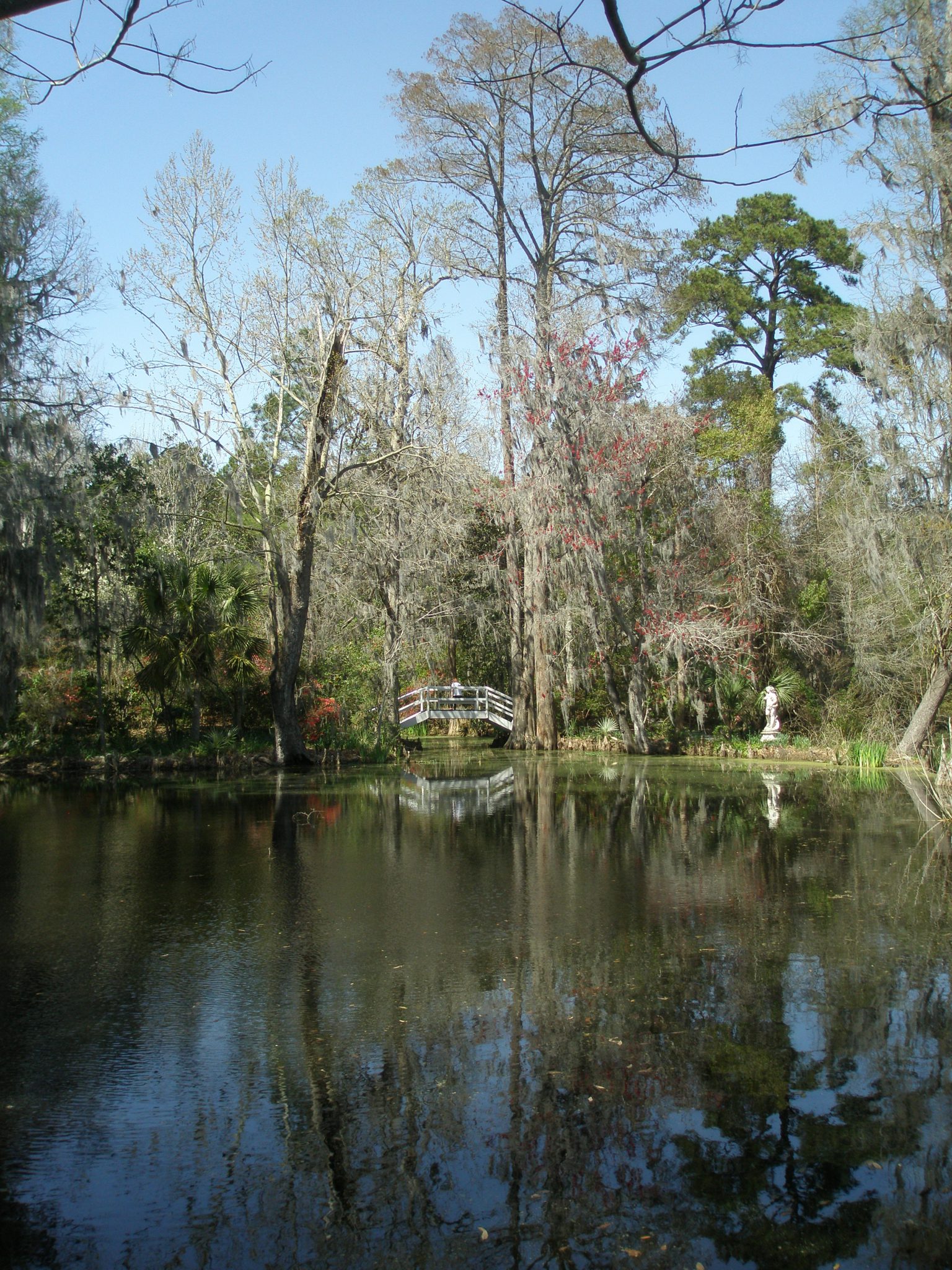
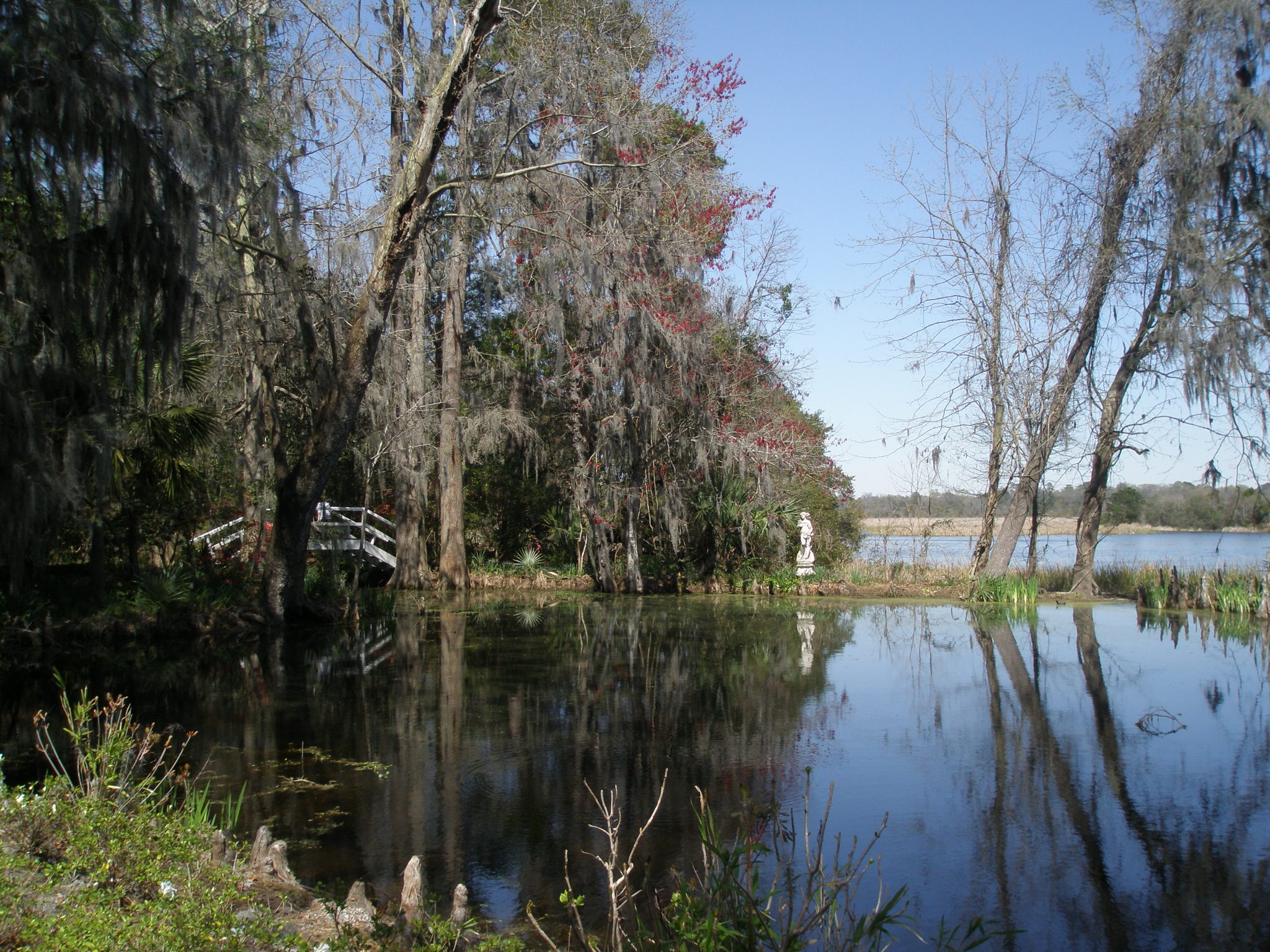
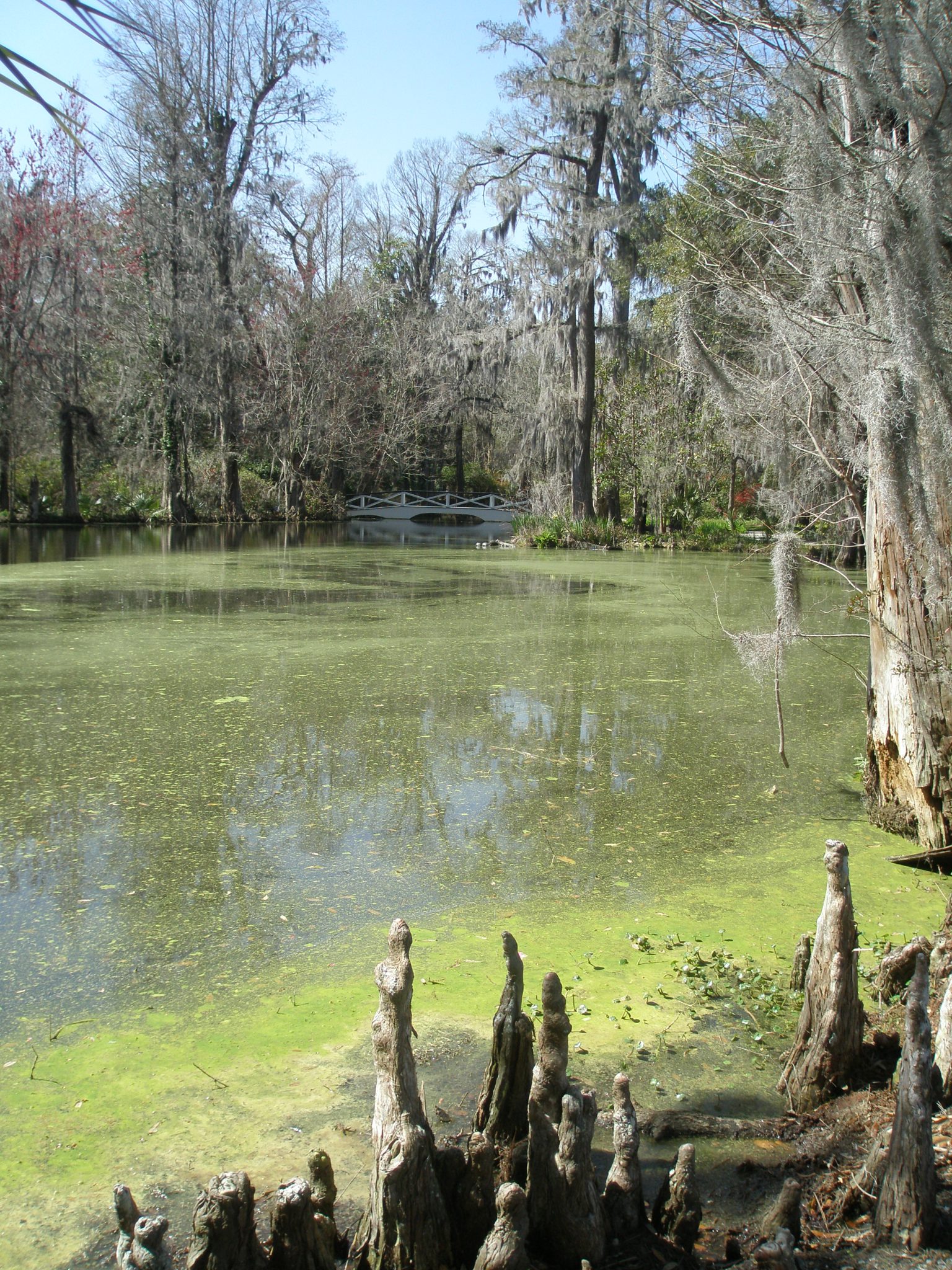
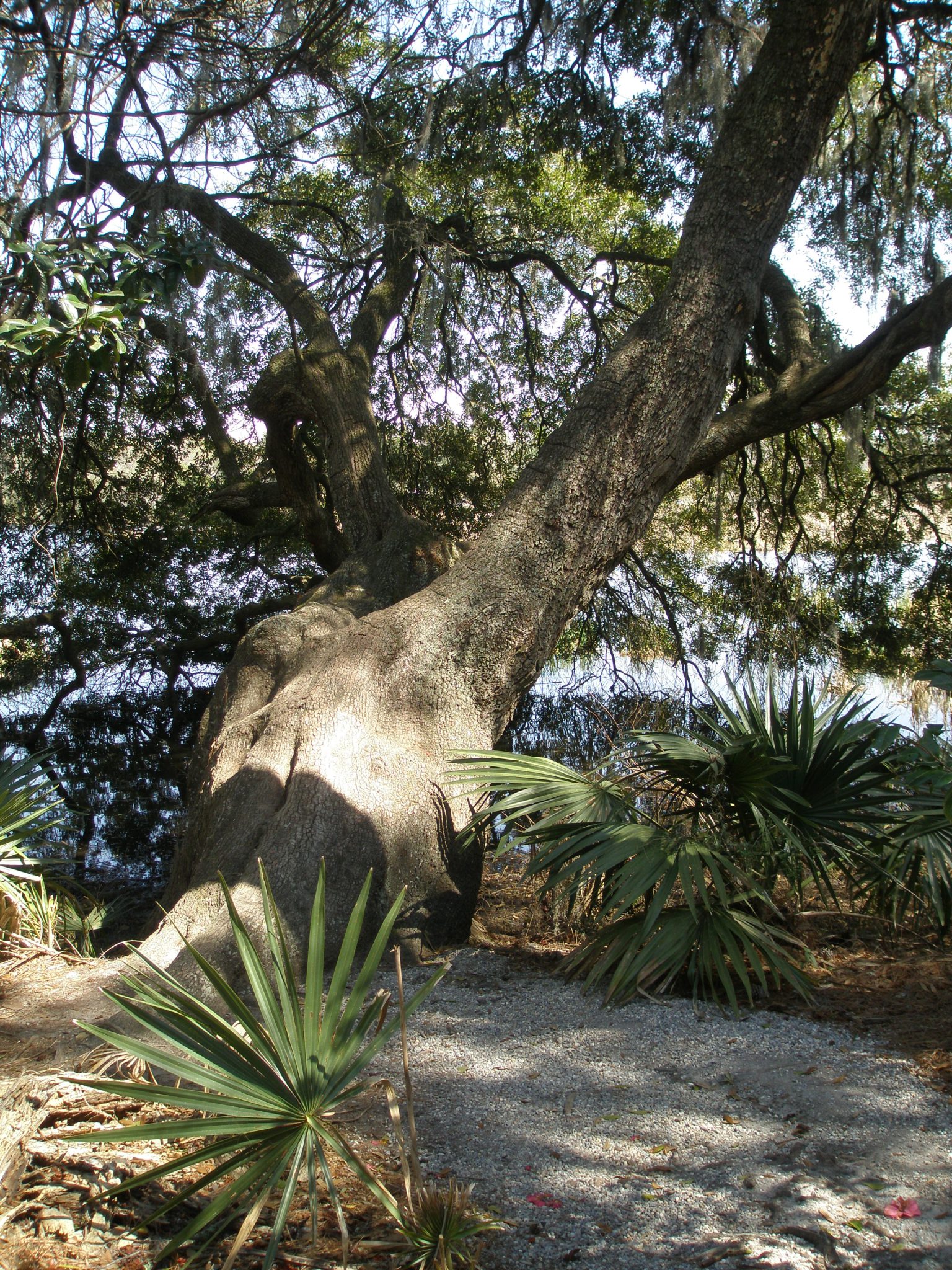
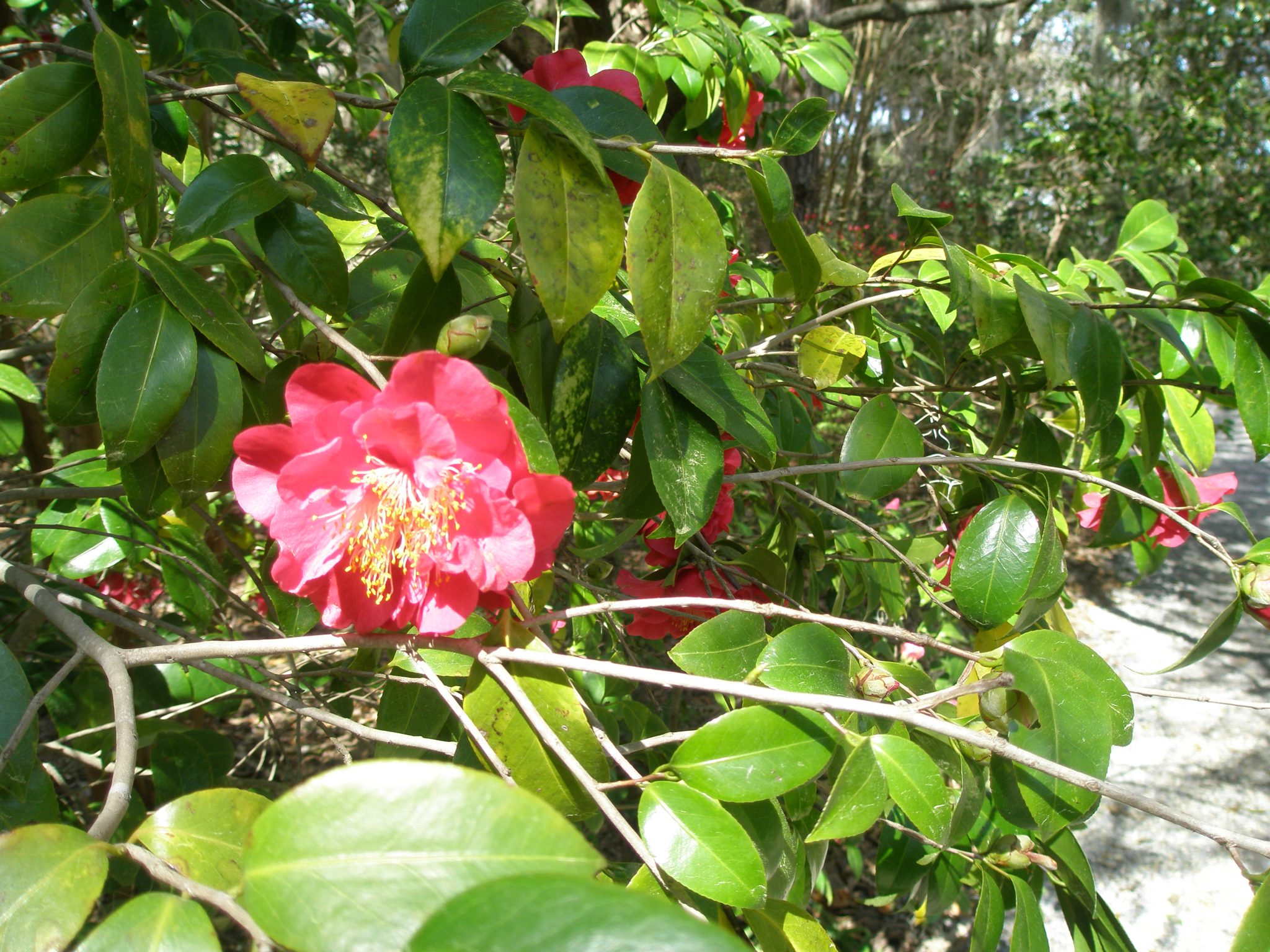
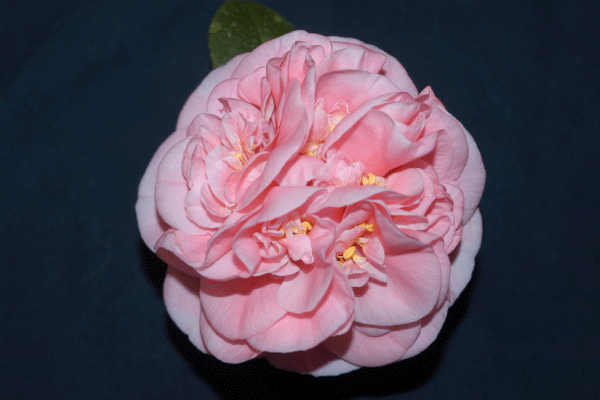
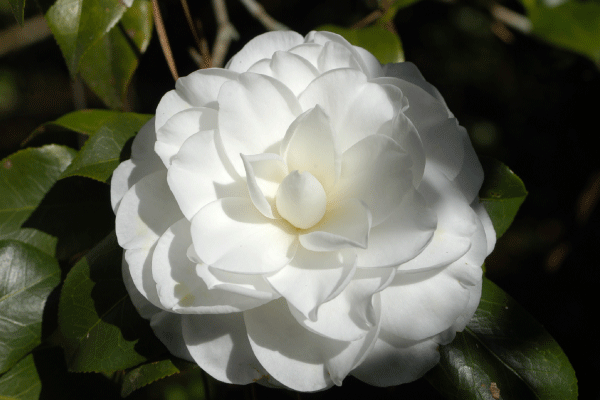


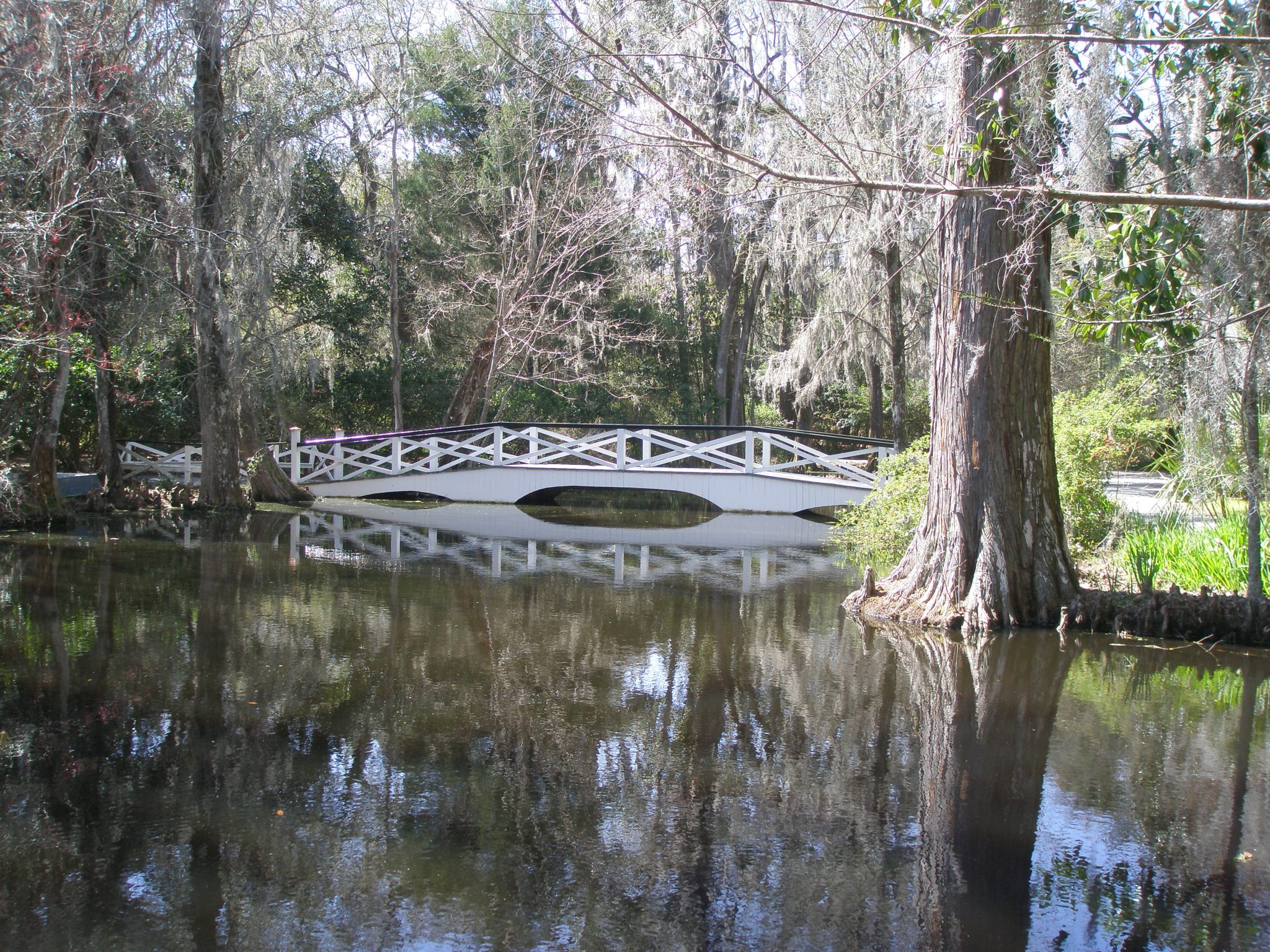
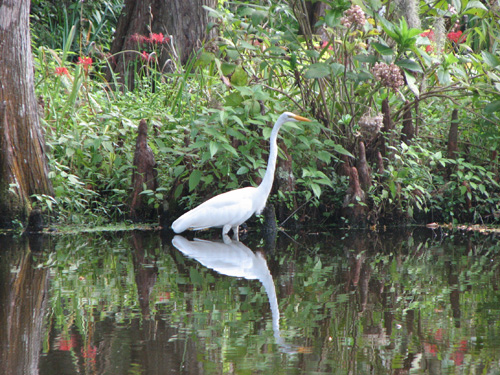
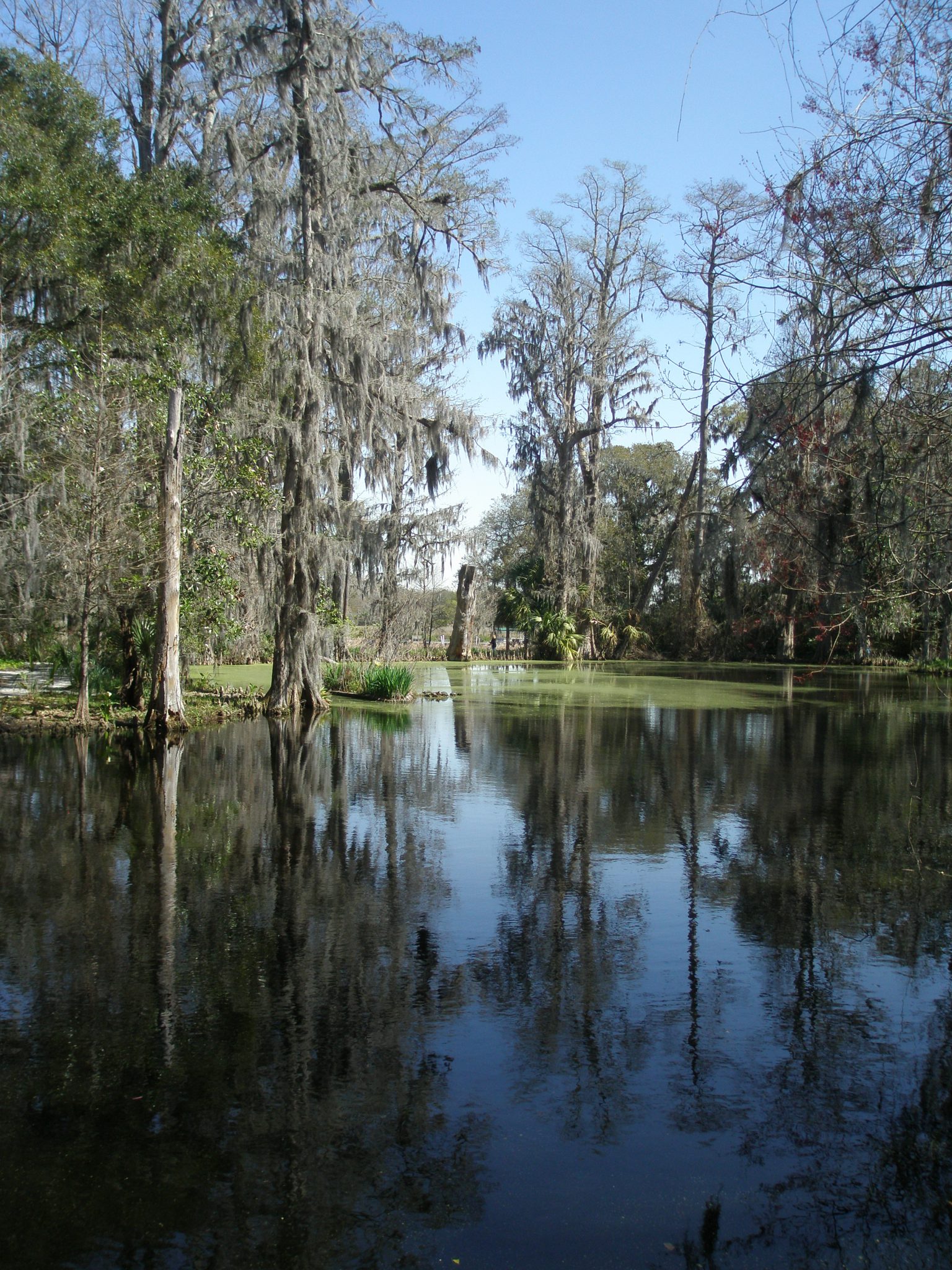
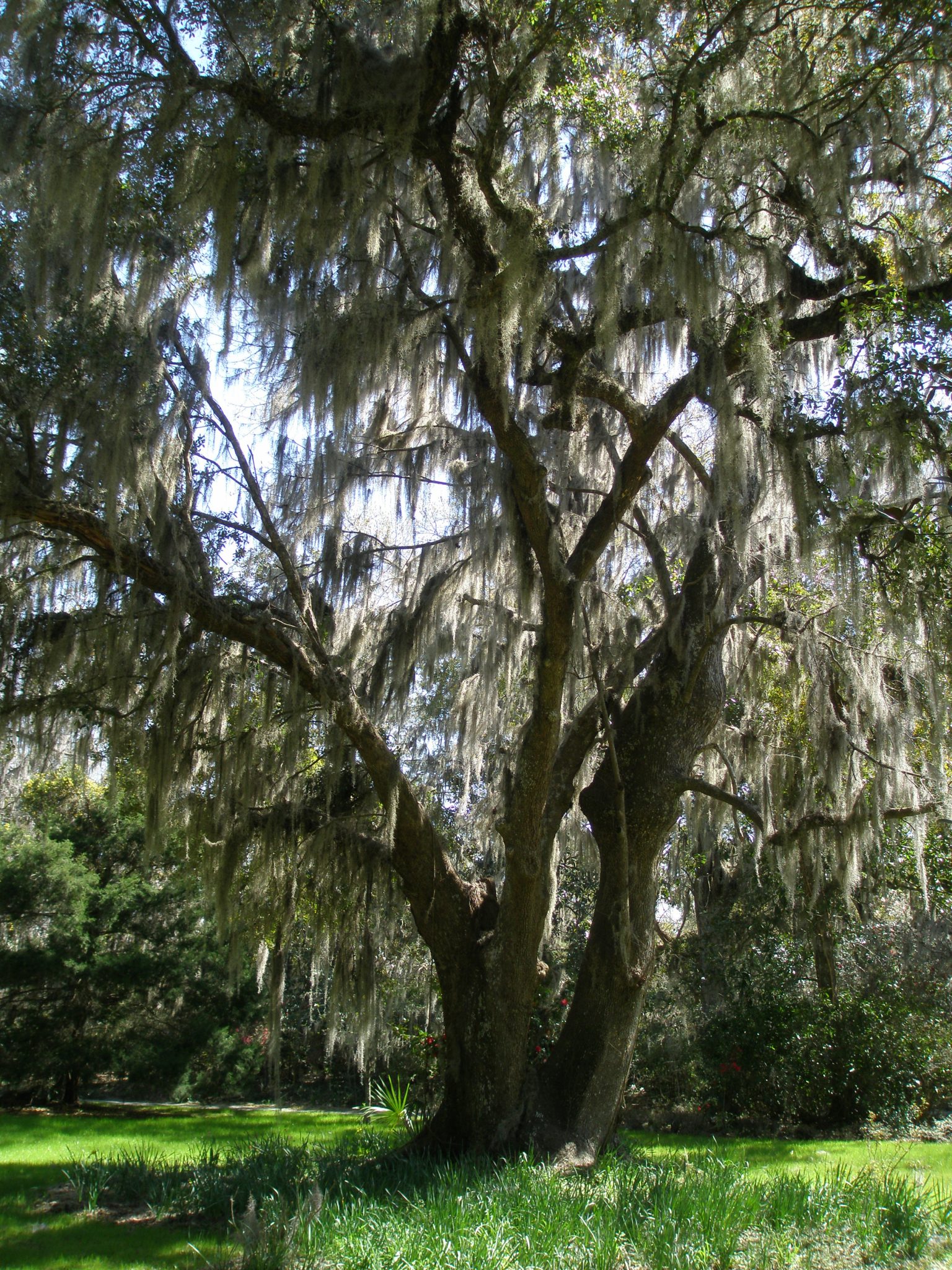
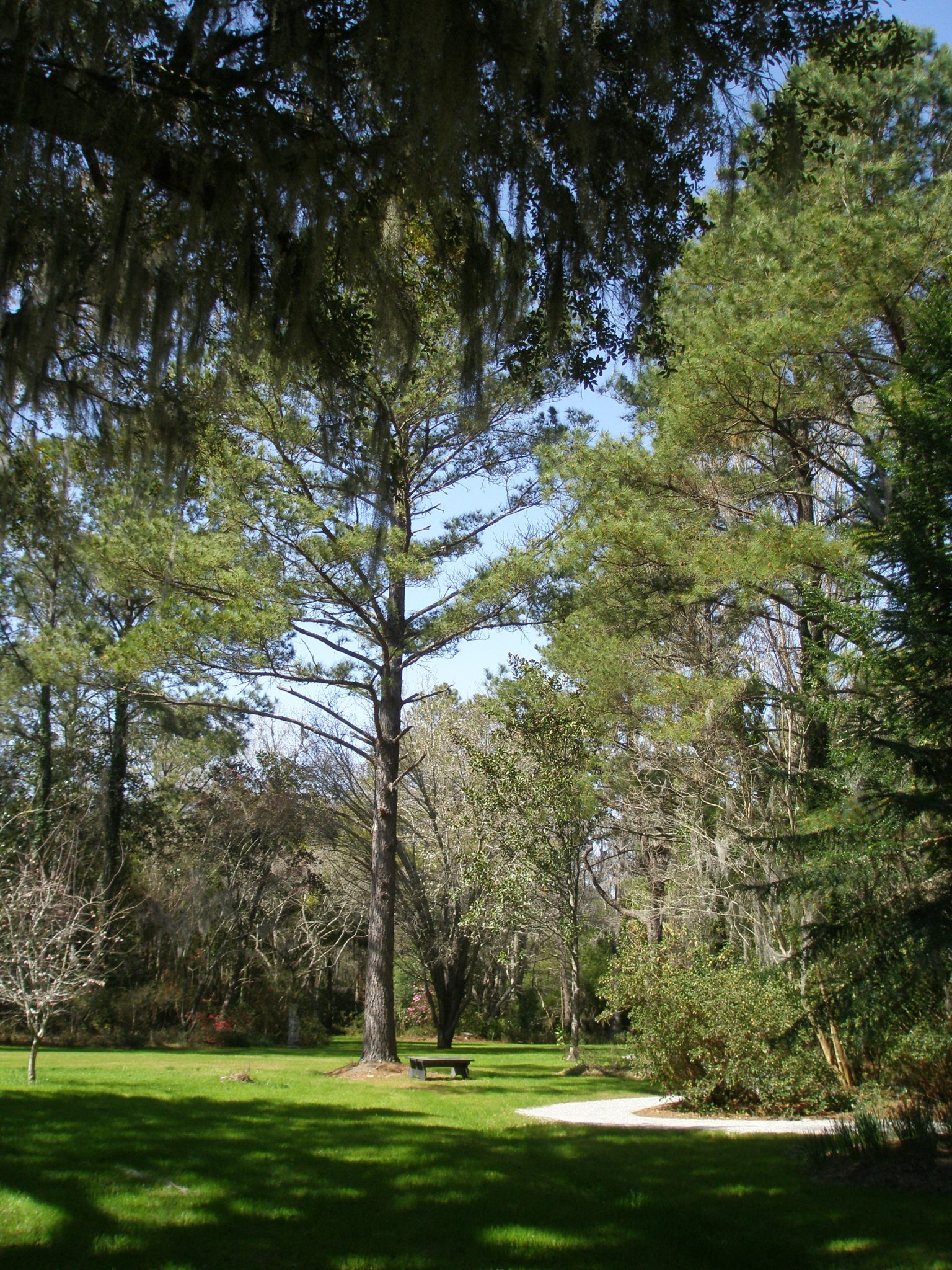
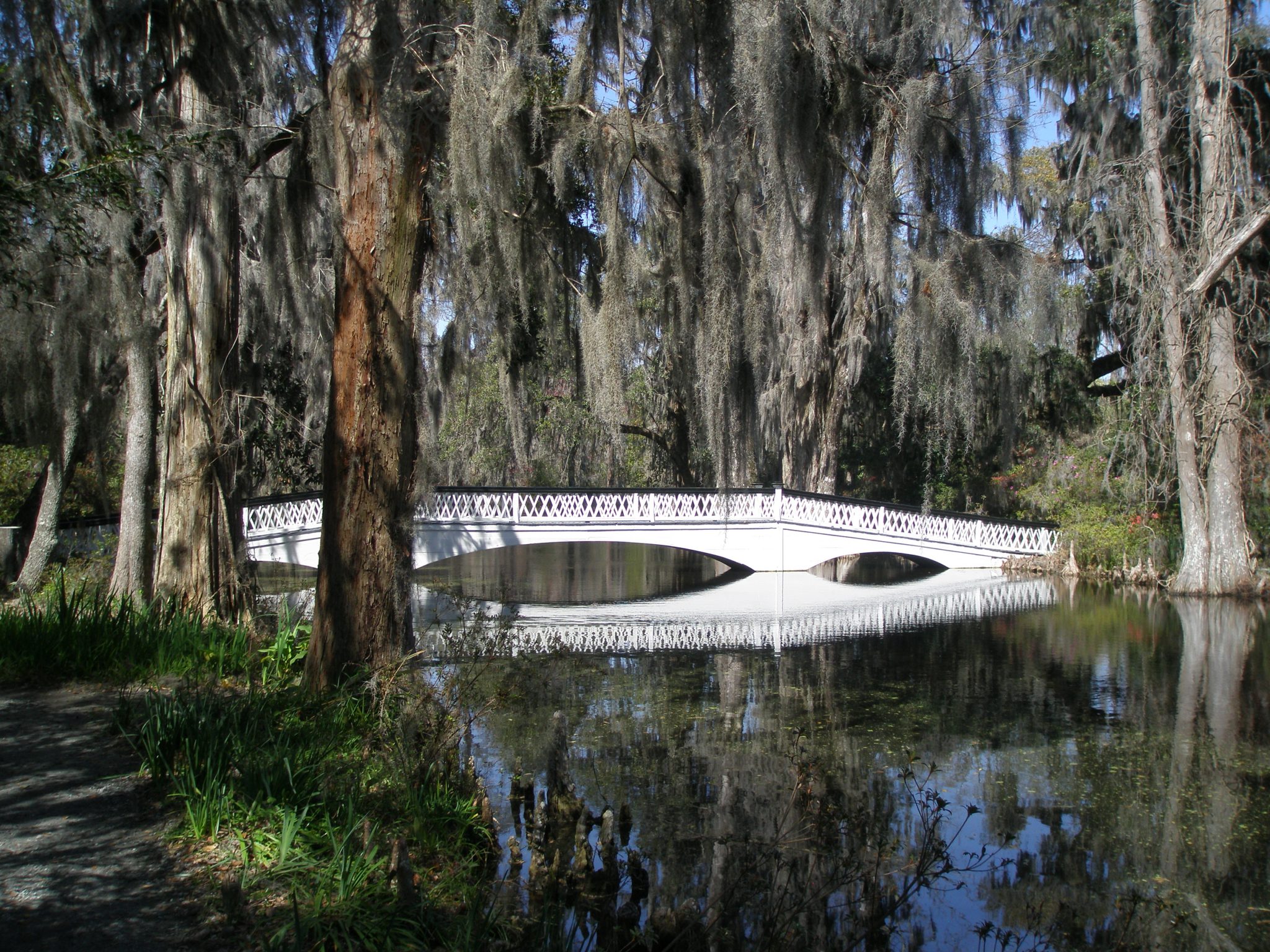
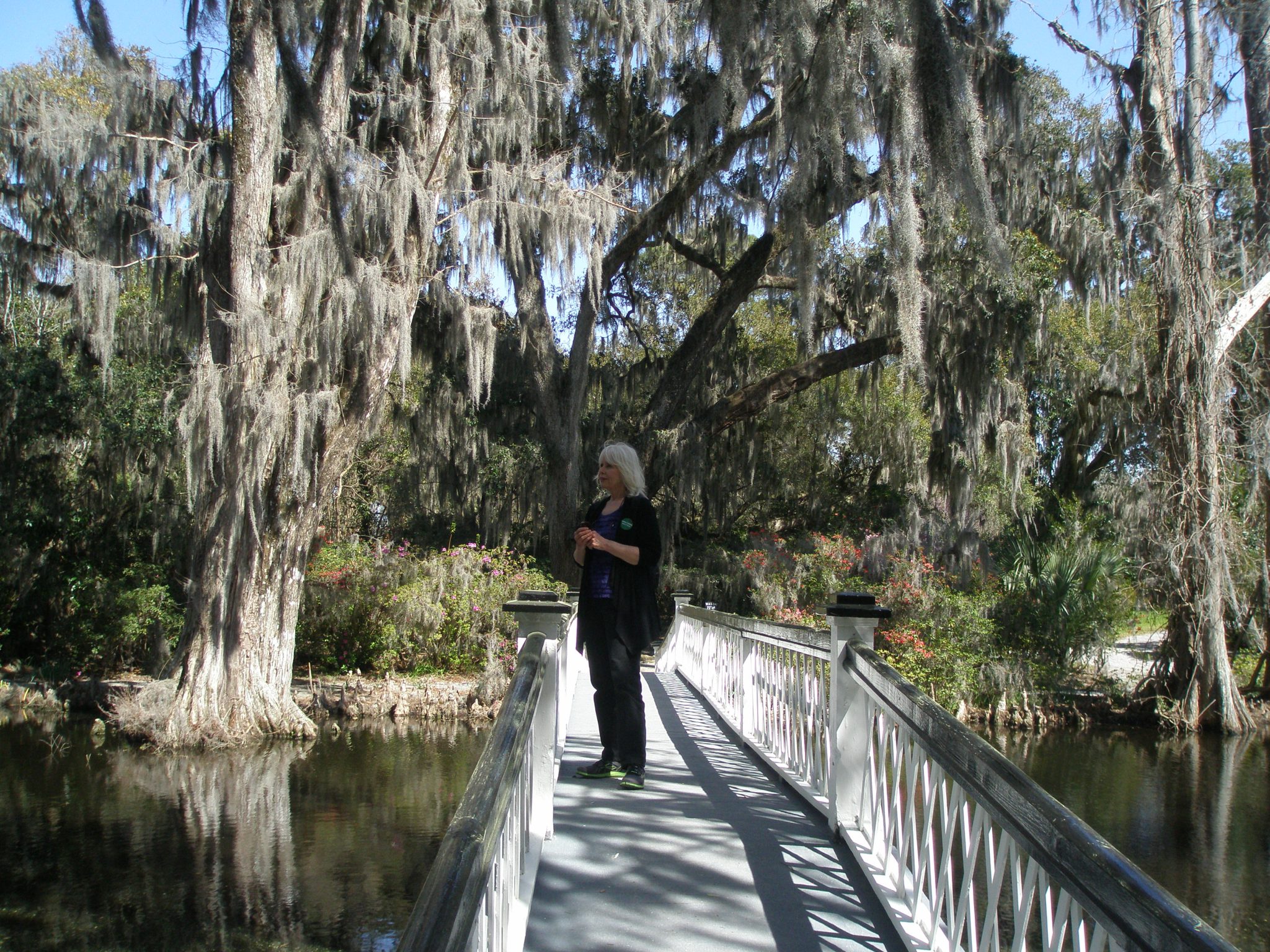
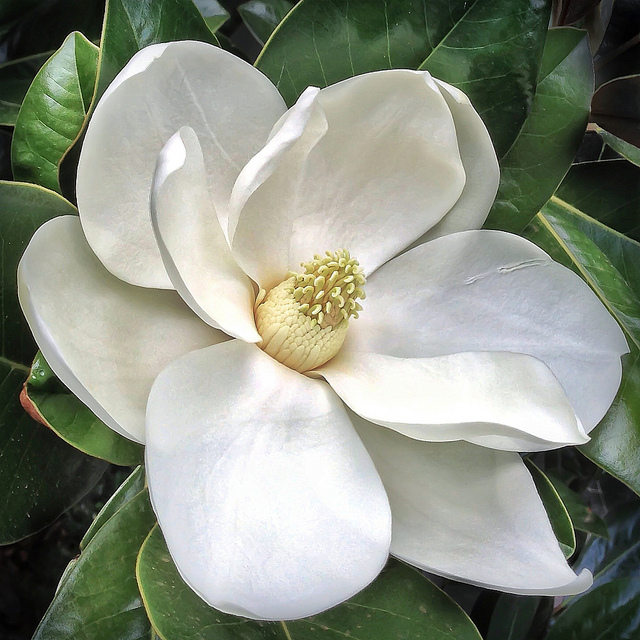
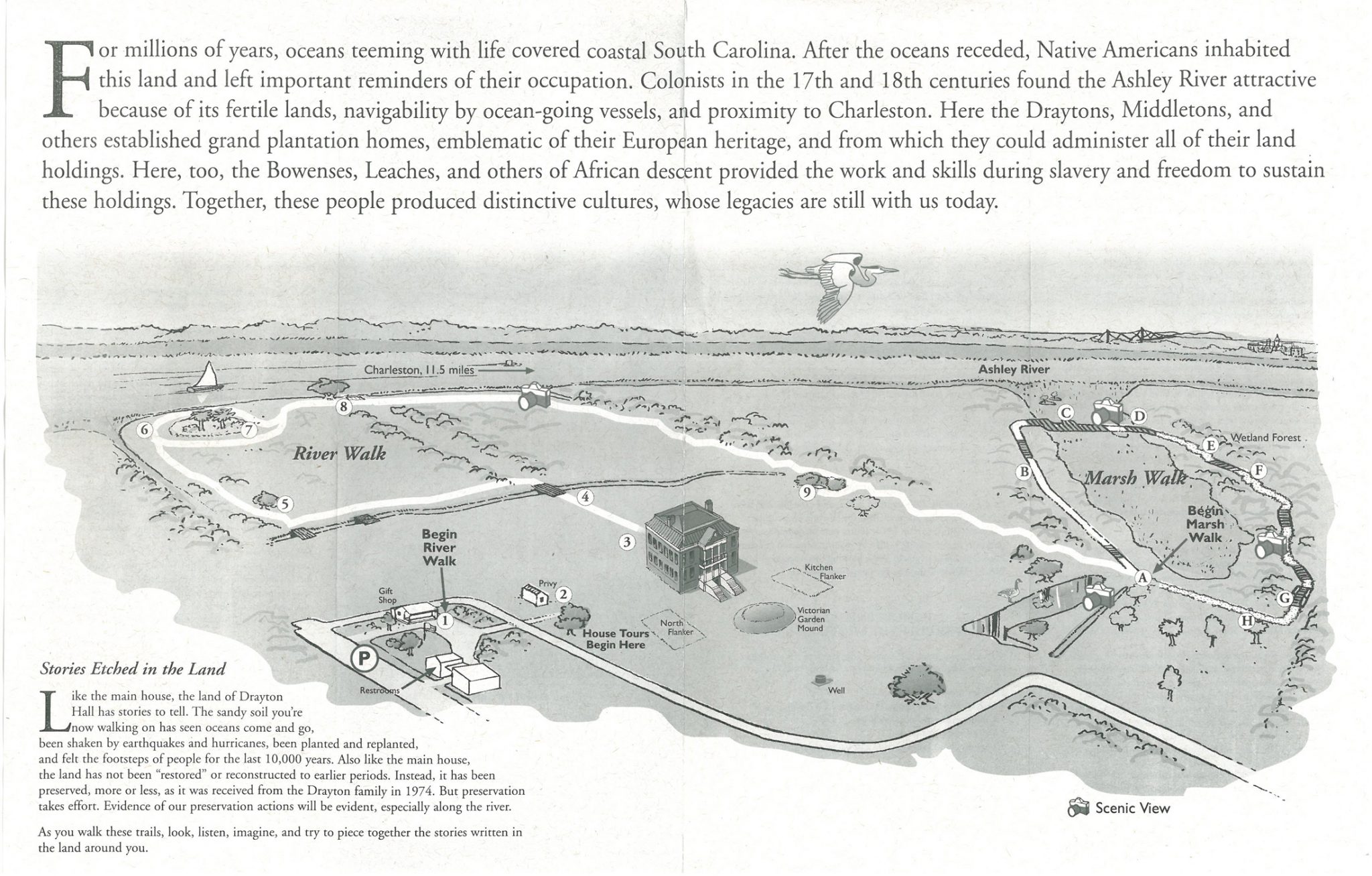
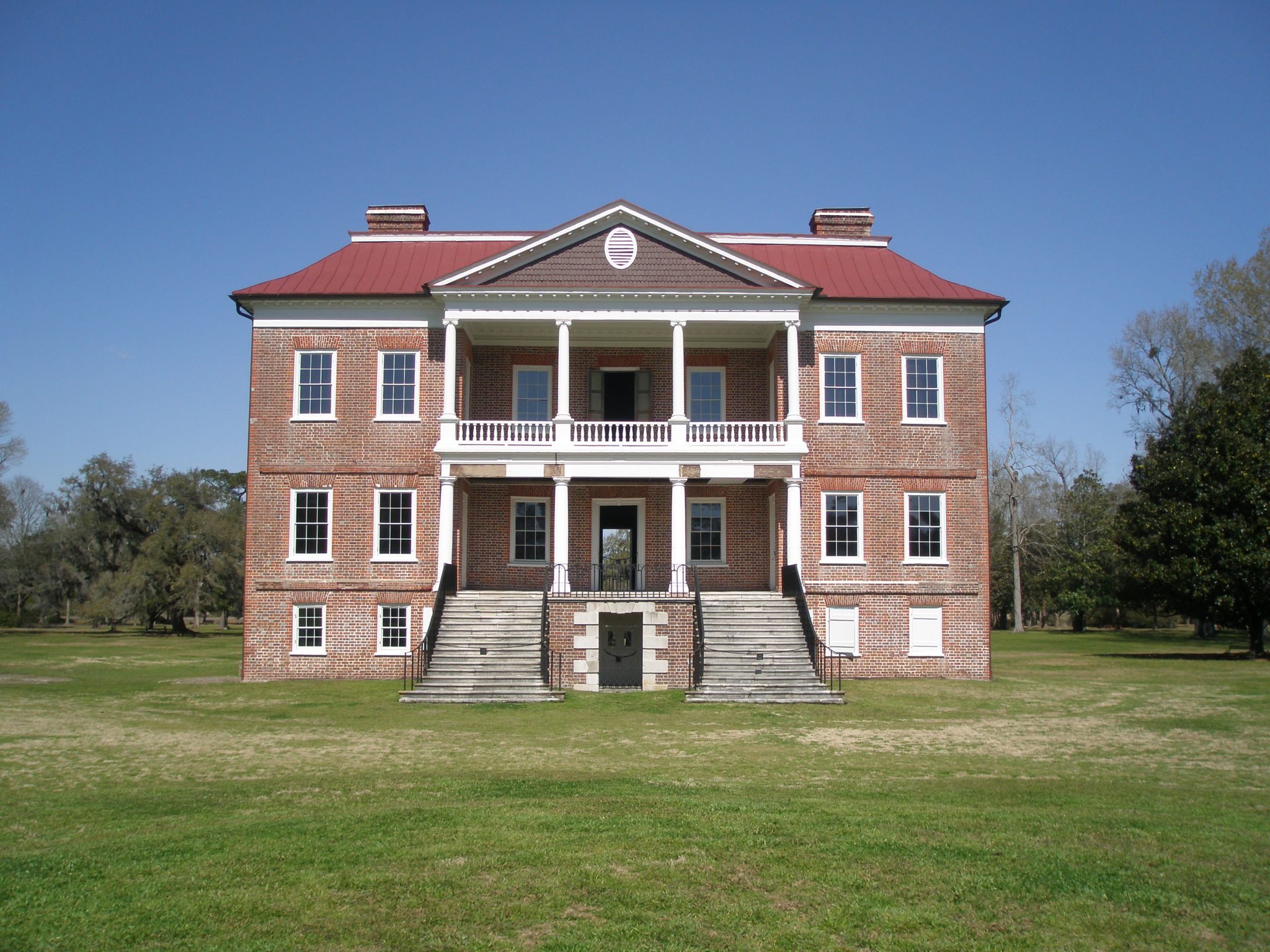
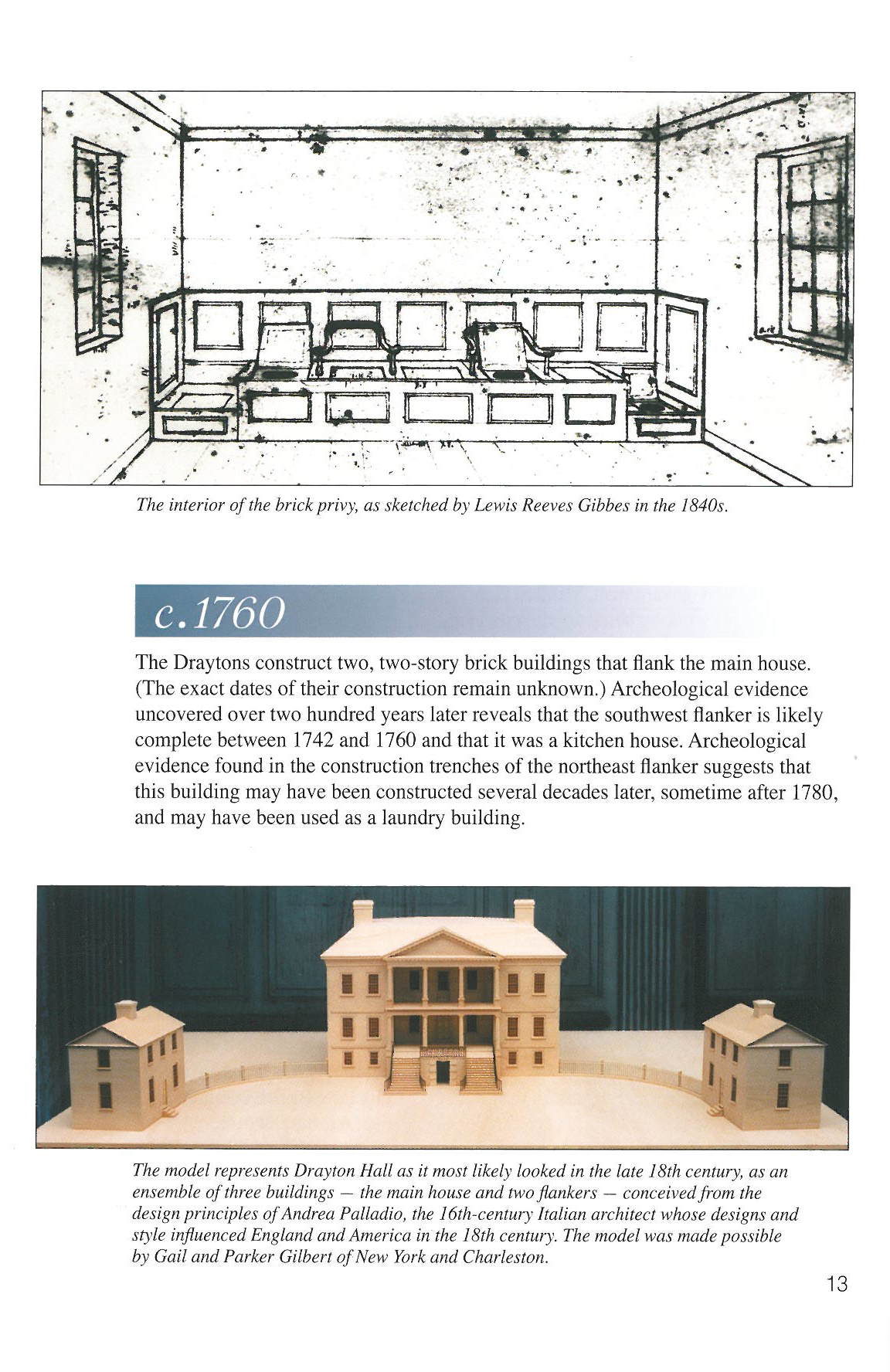
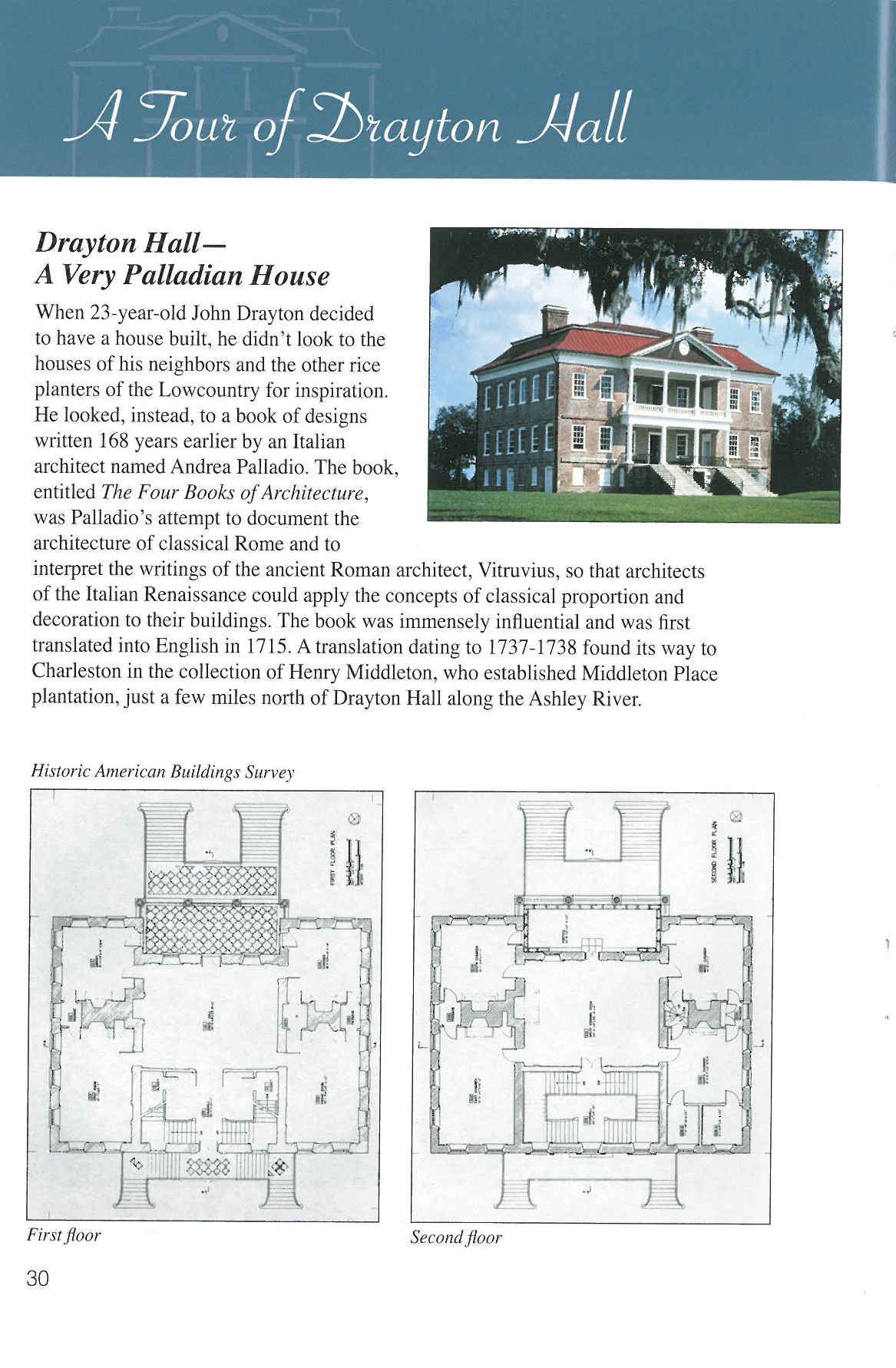
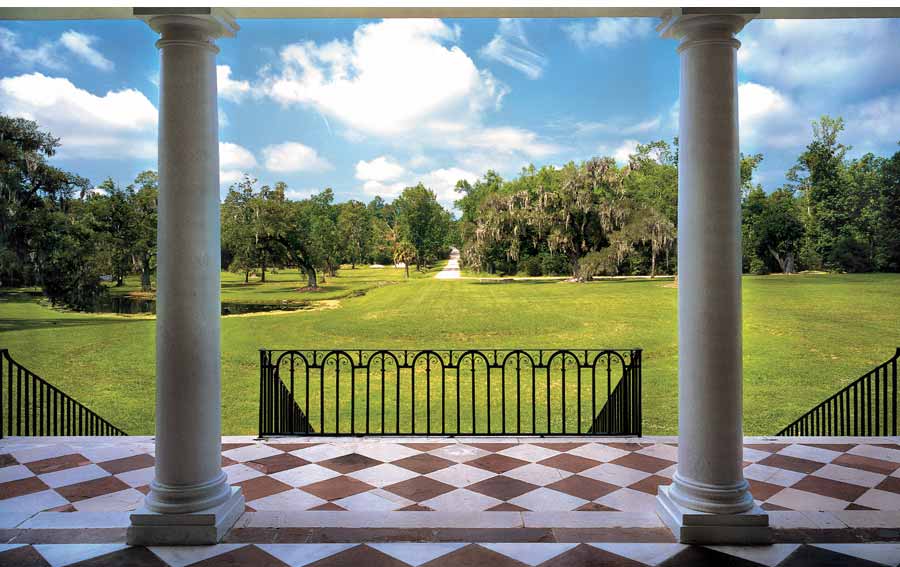
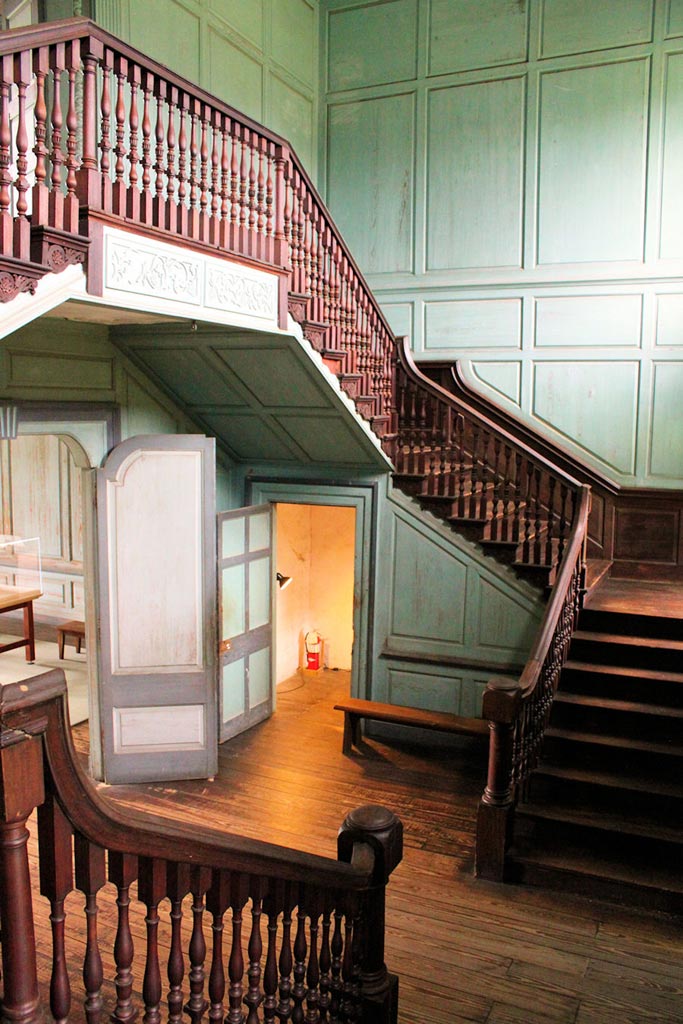
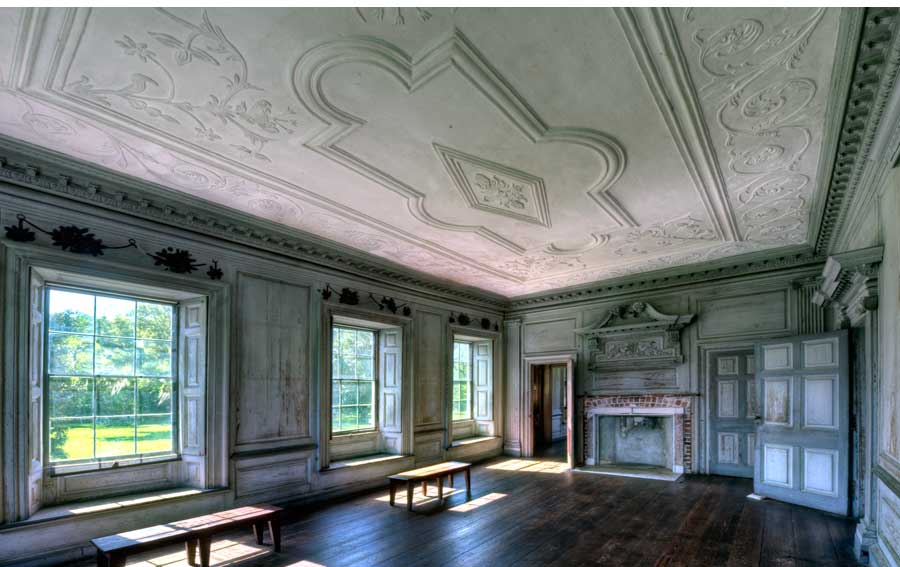
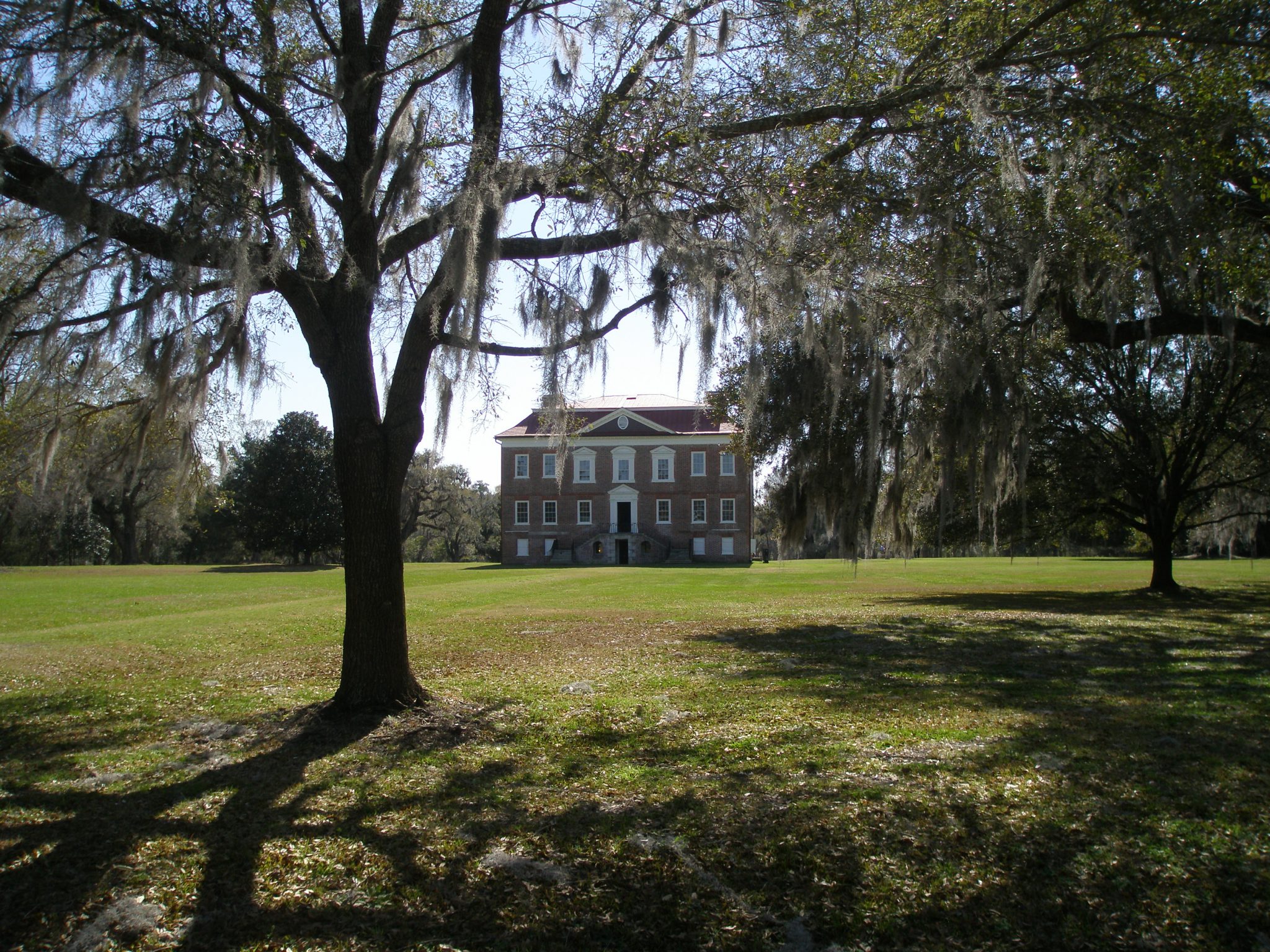
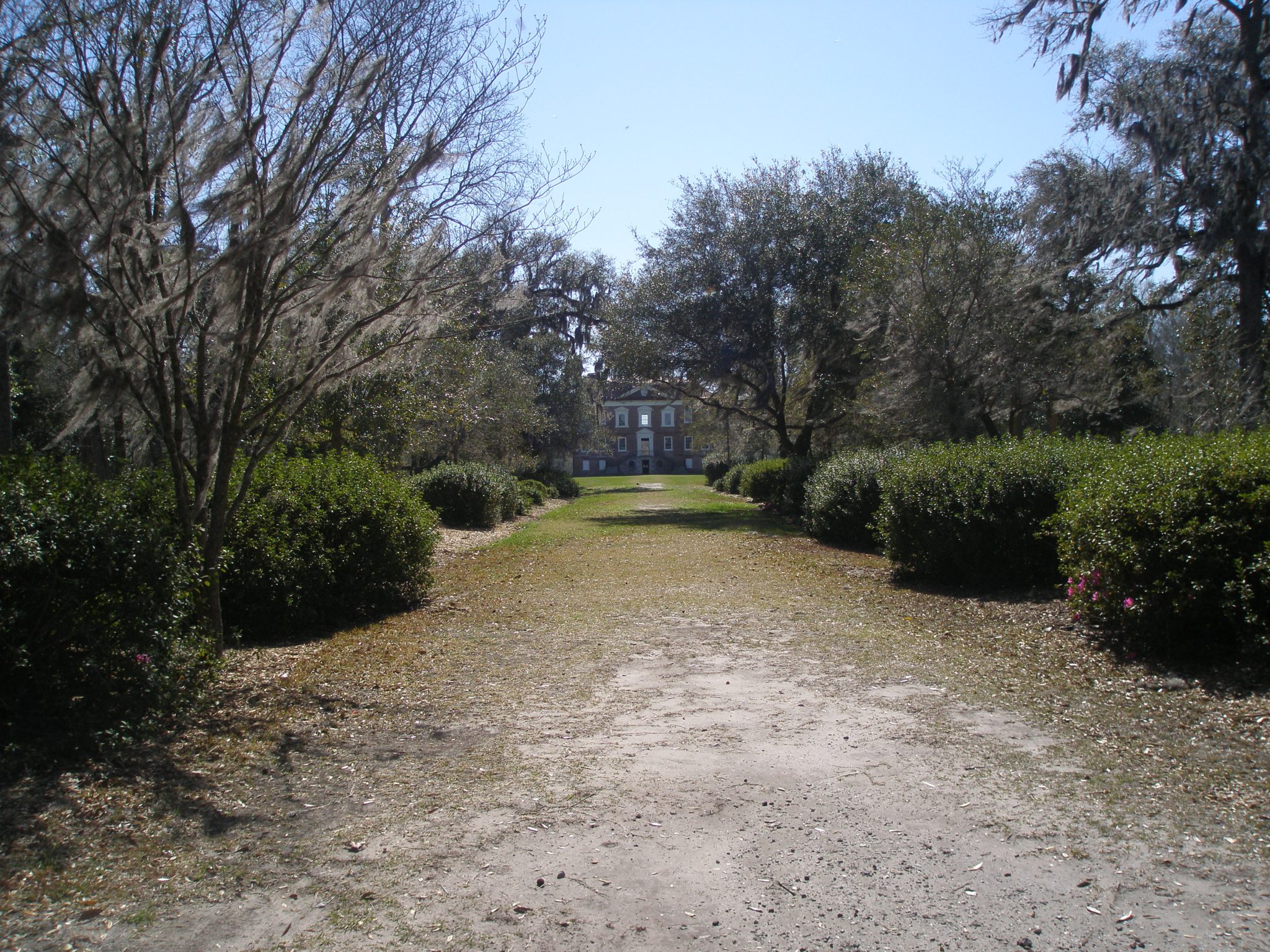
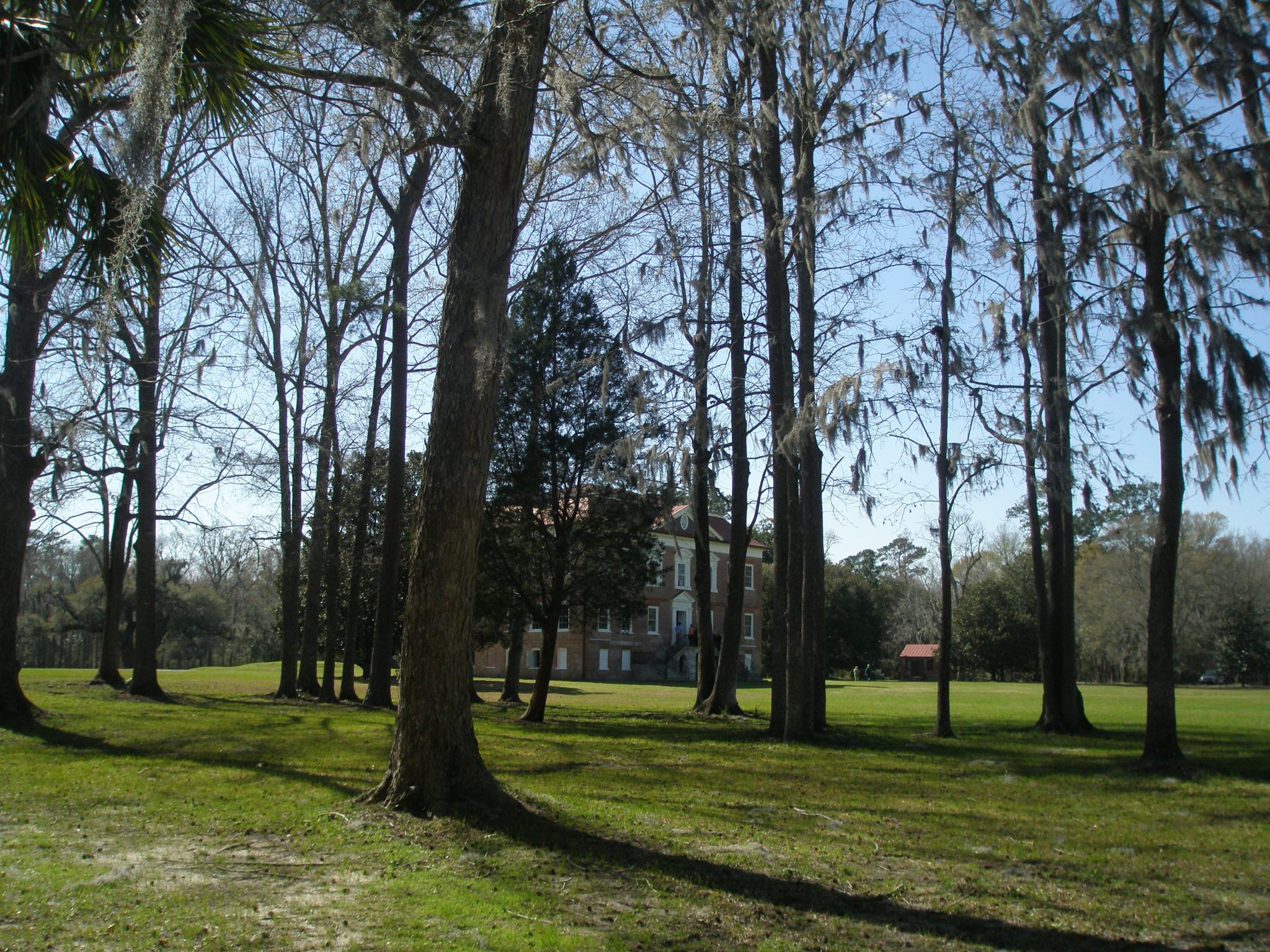
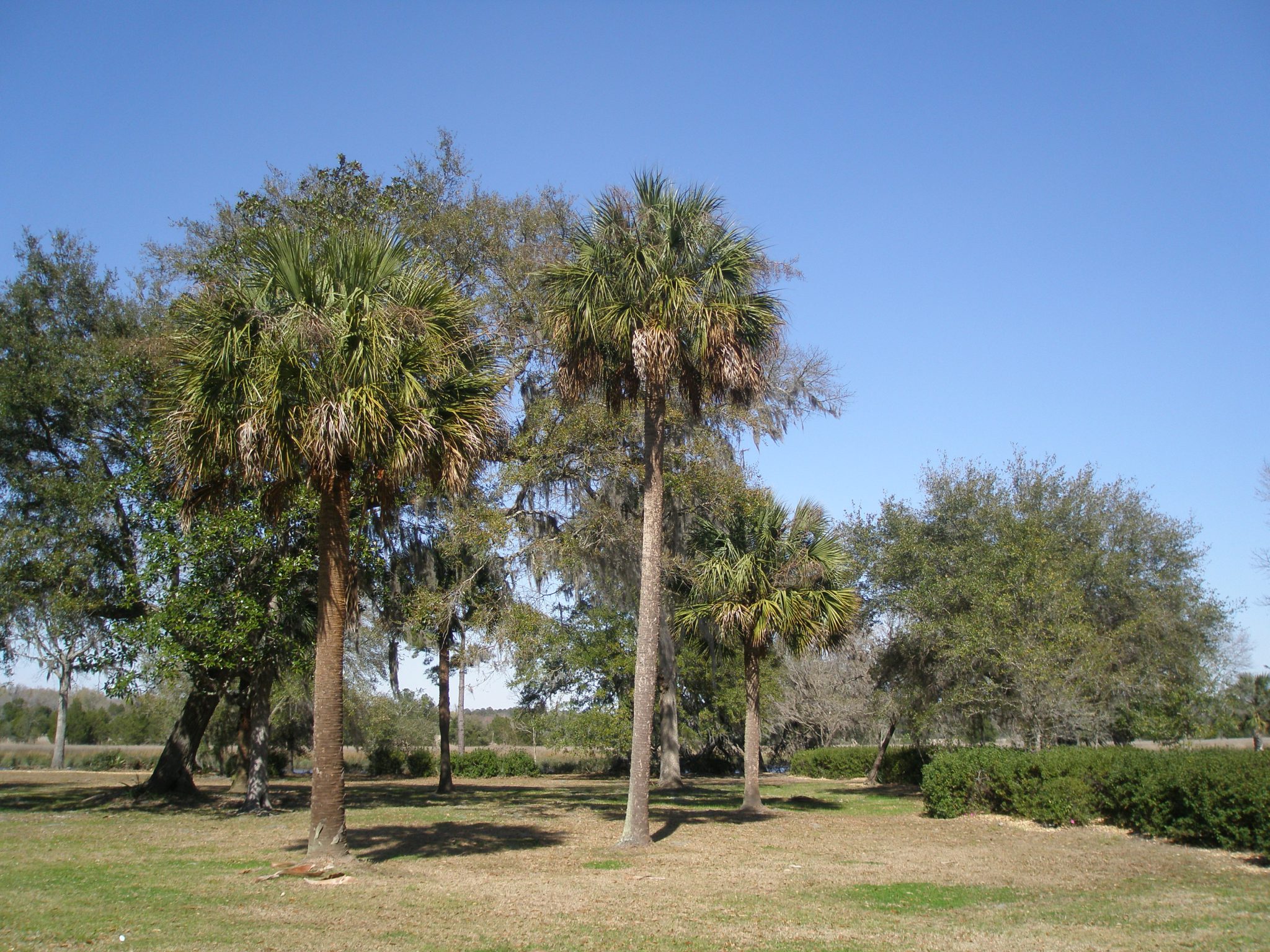
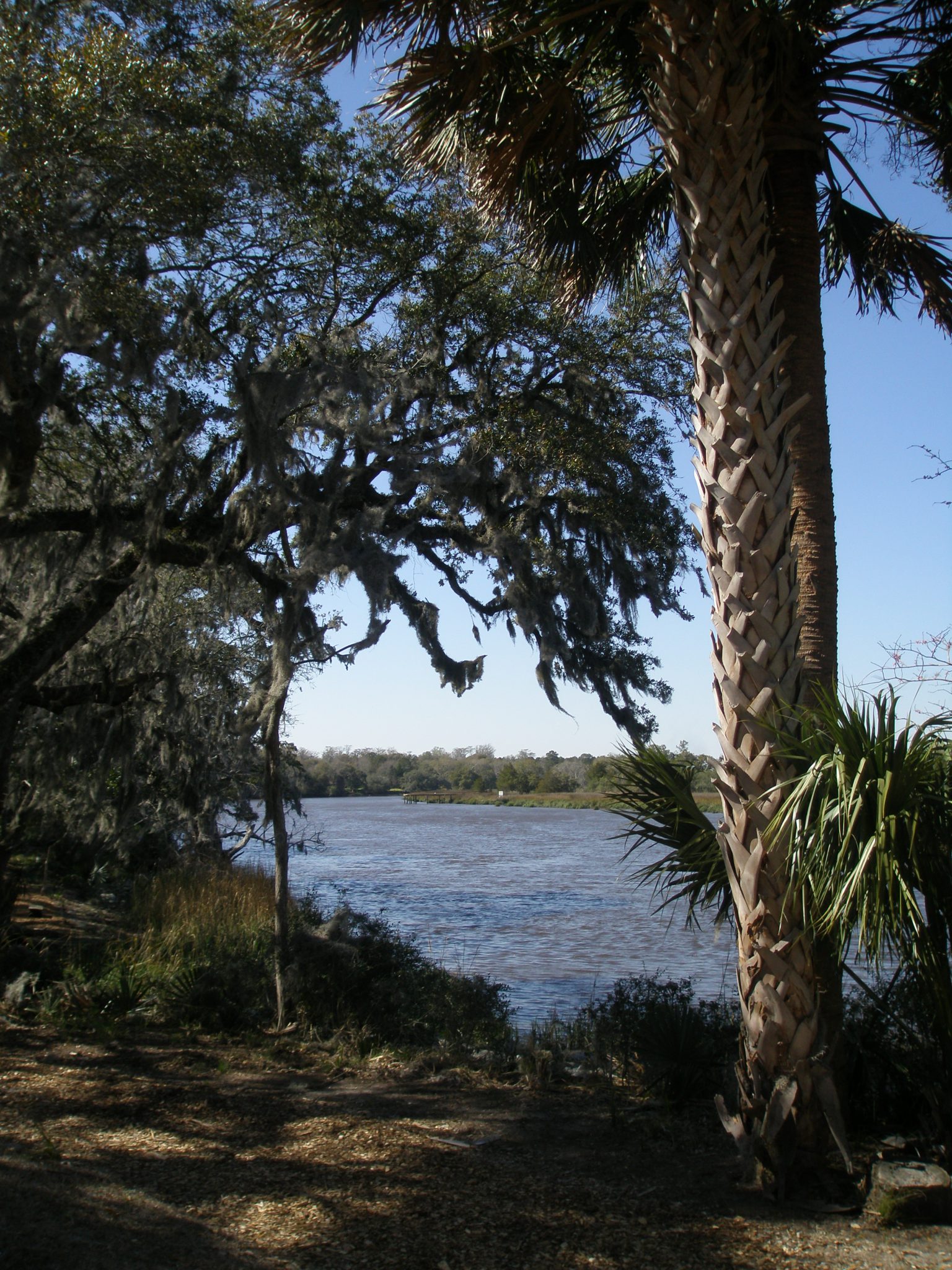
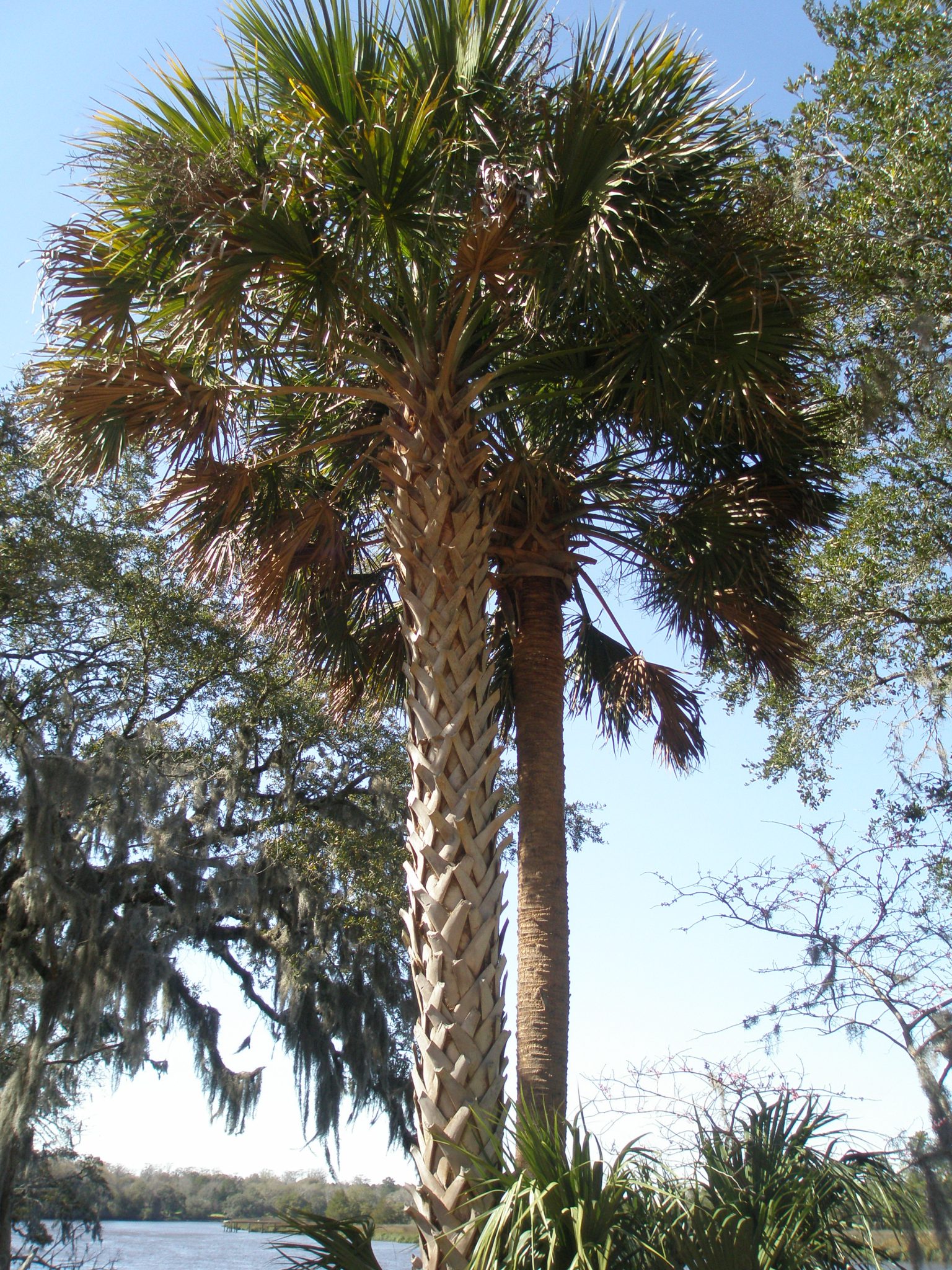
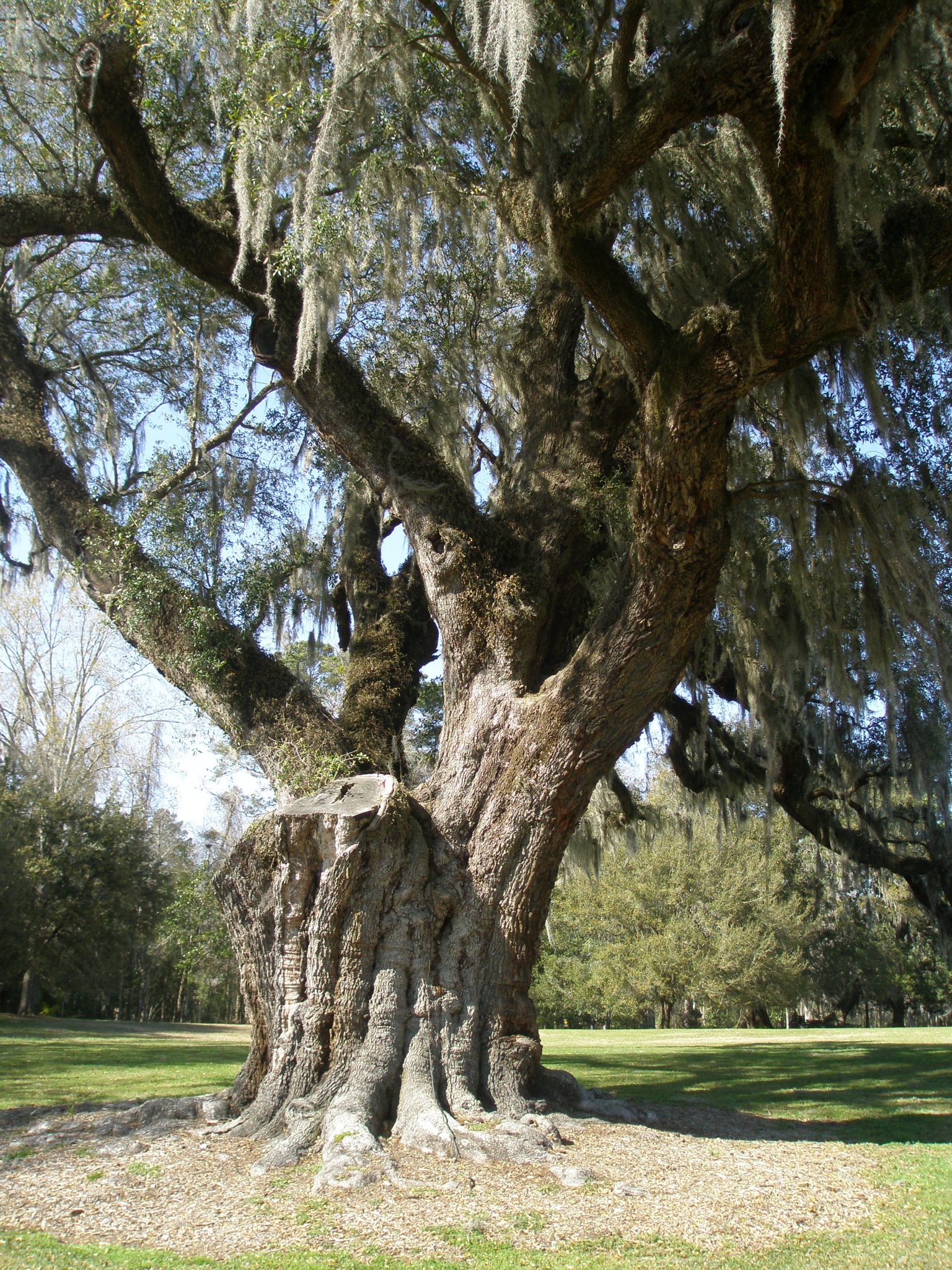
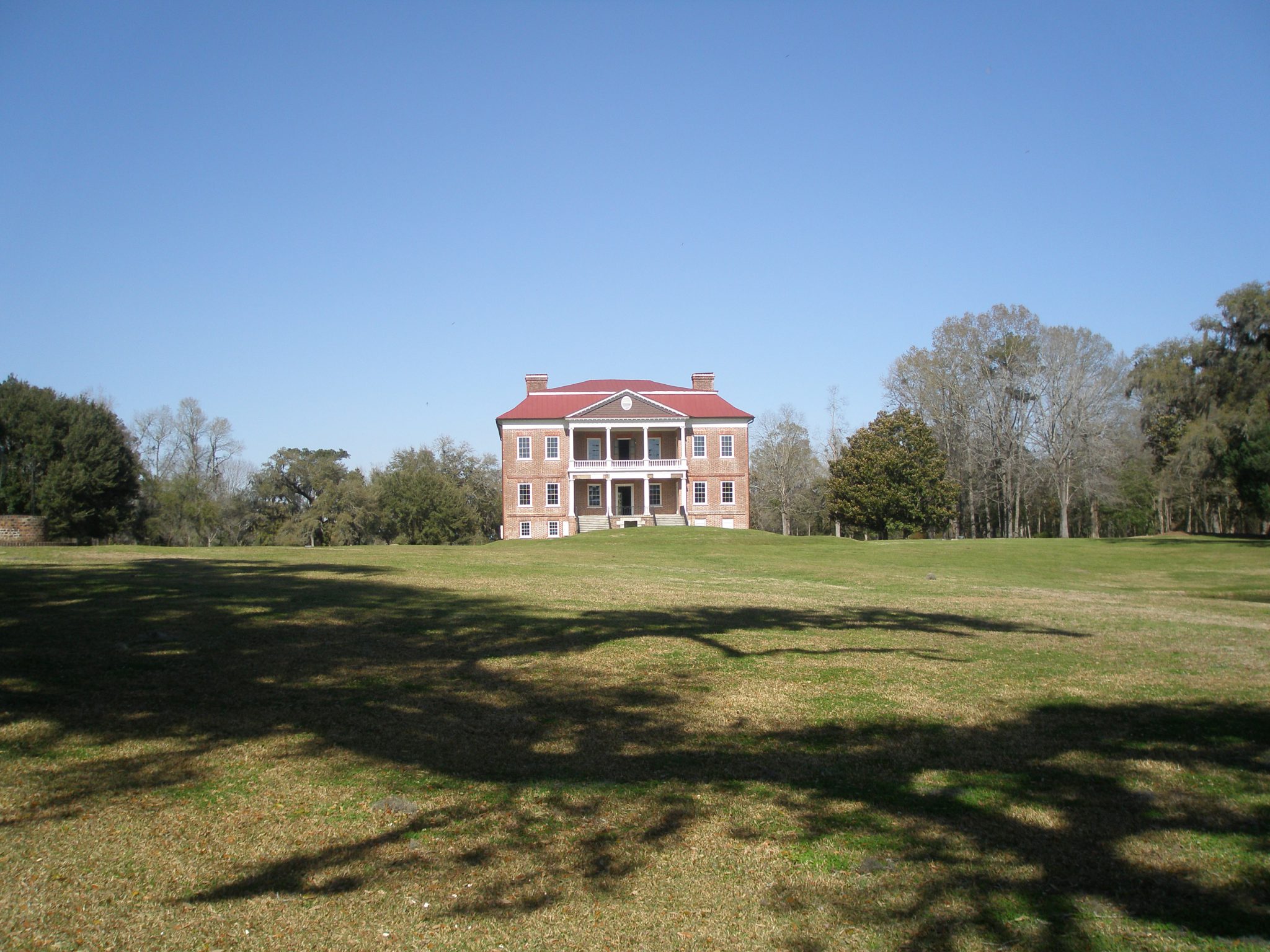
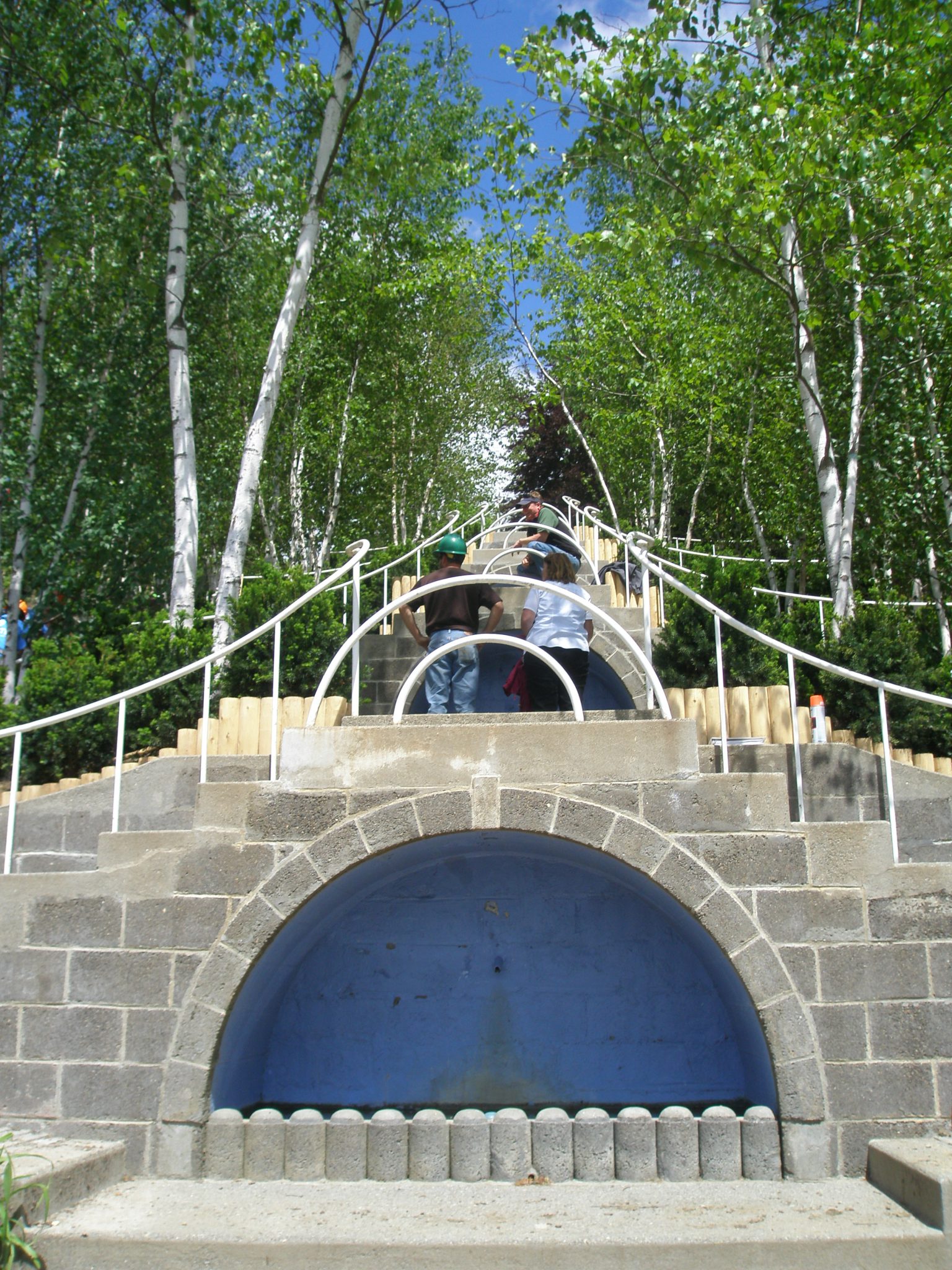
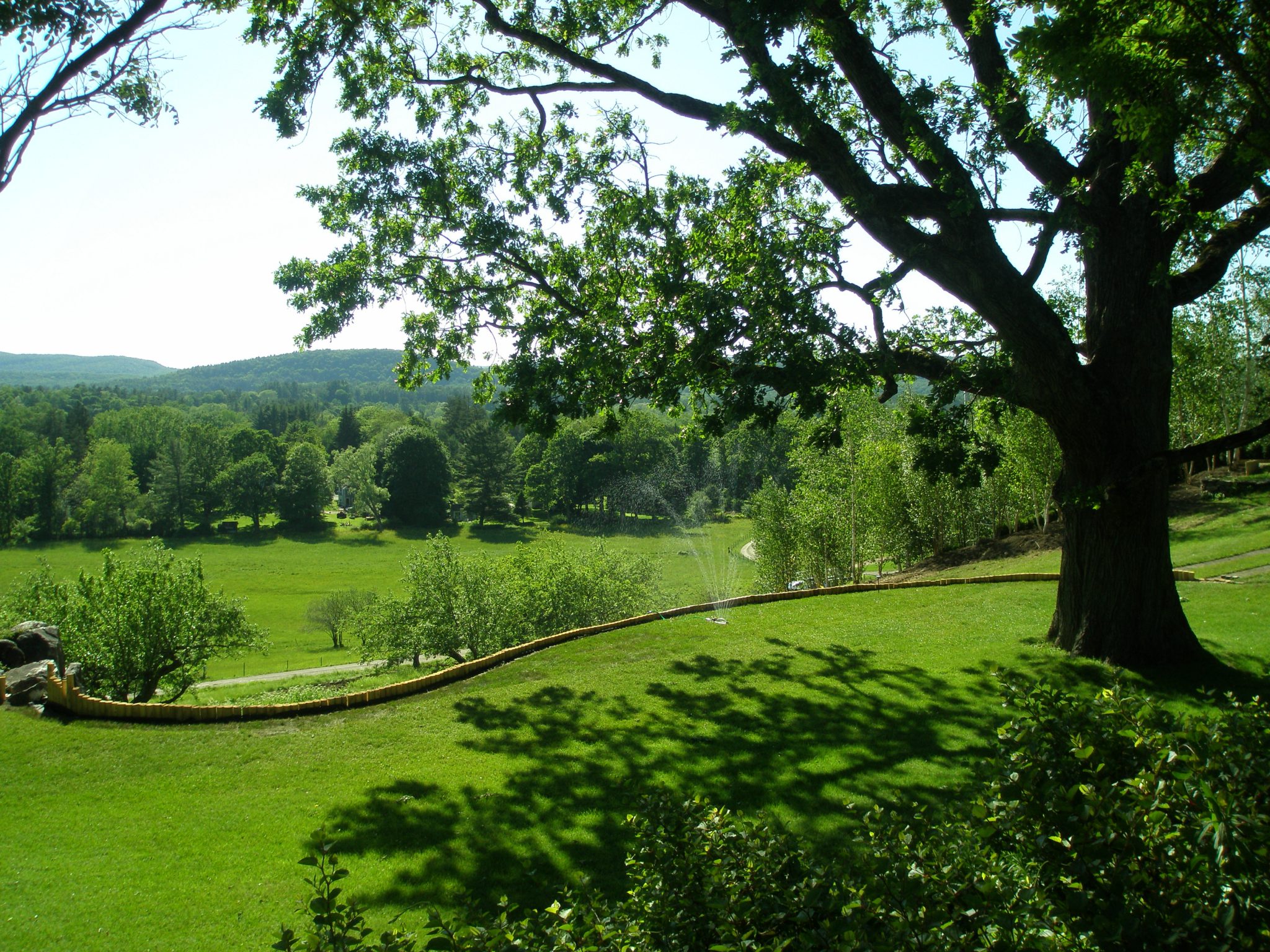

One Response to The Disparate Delights of Four Low Country Plantations